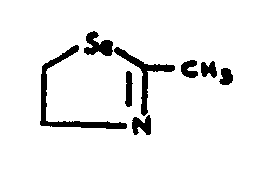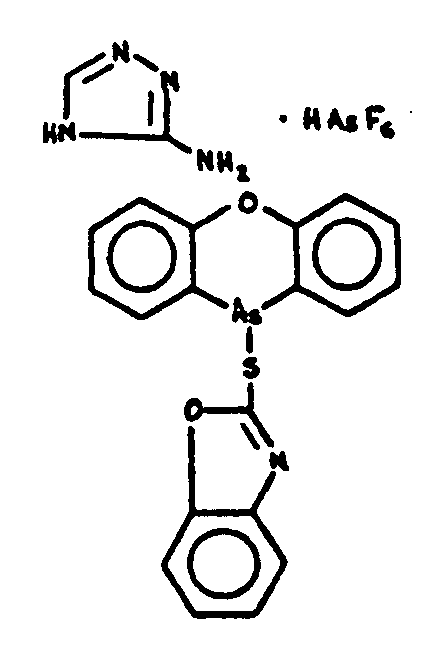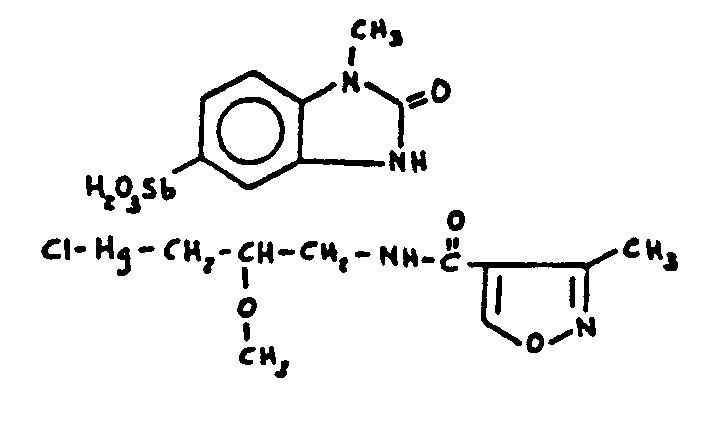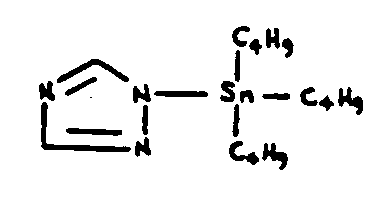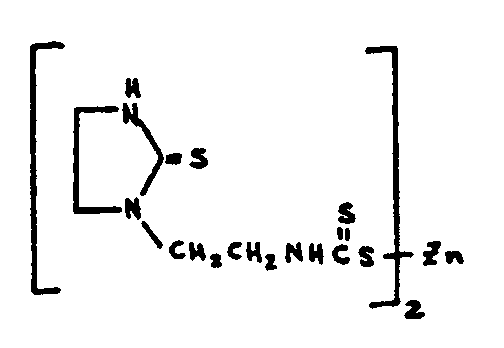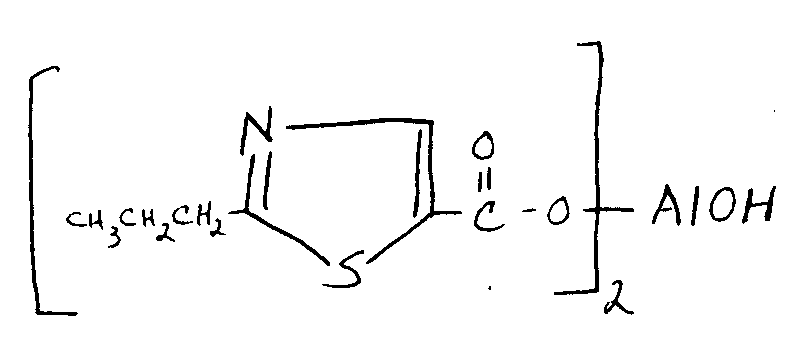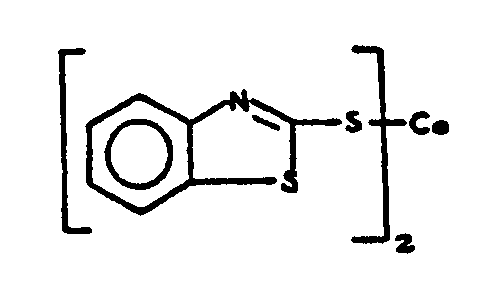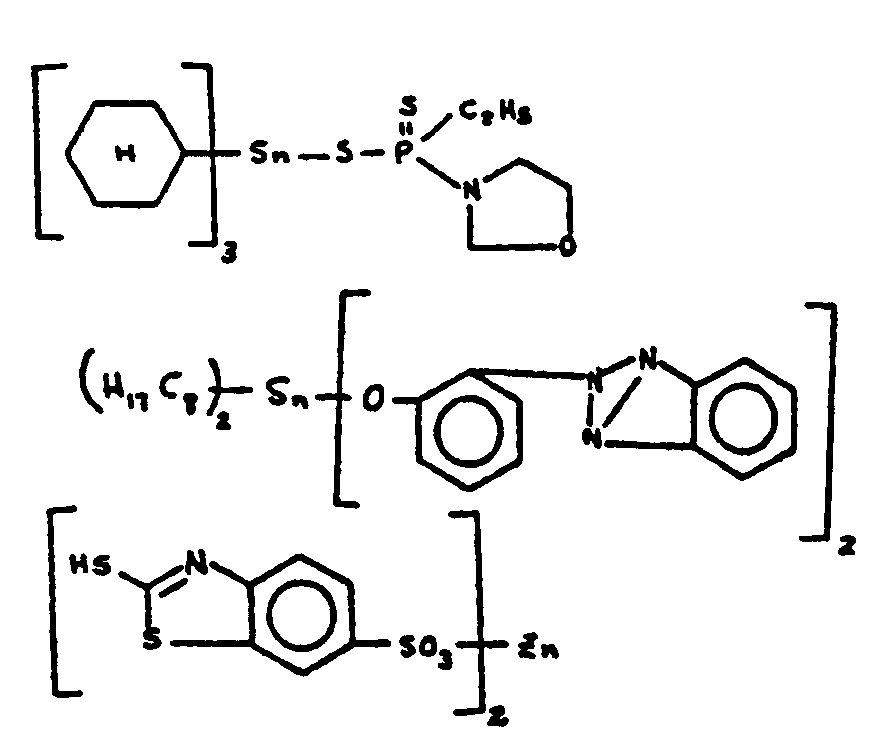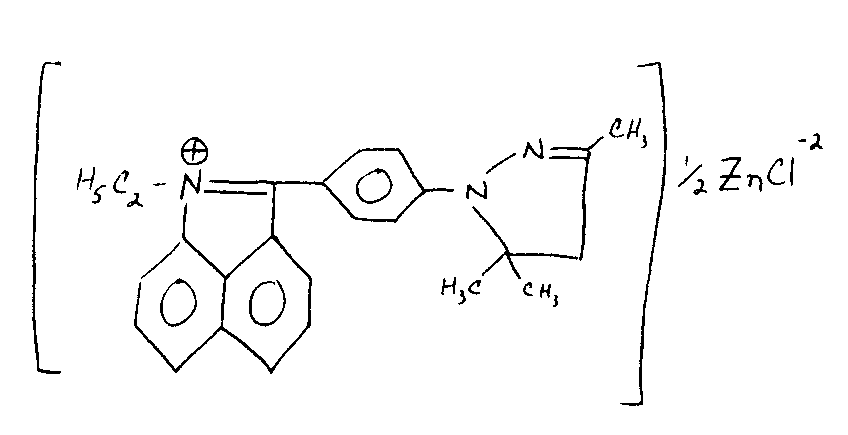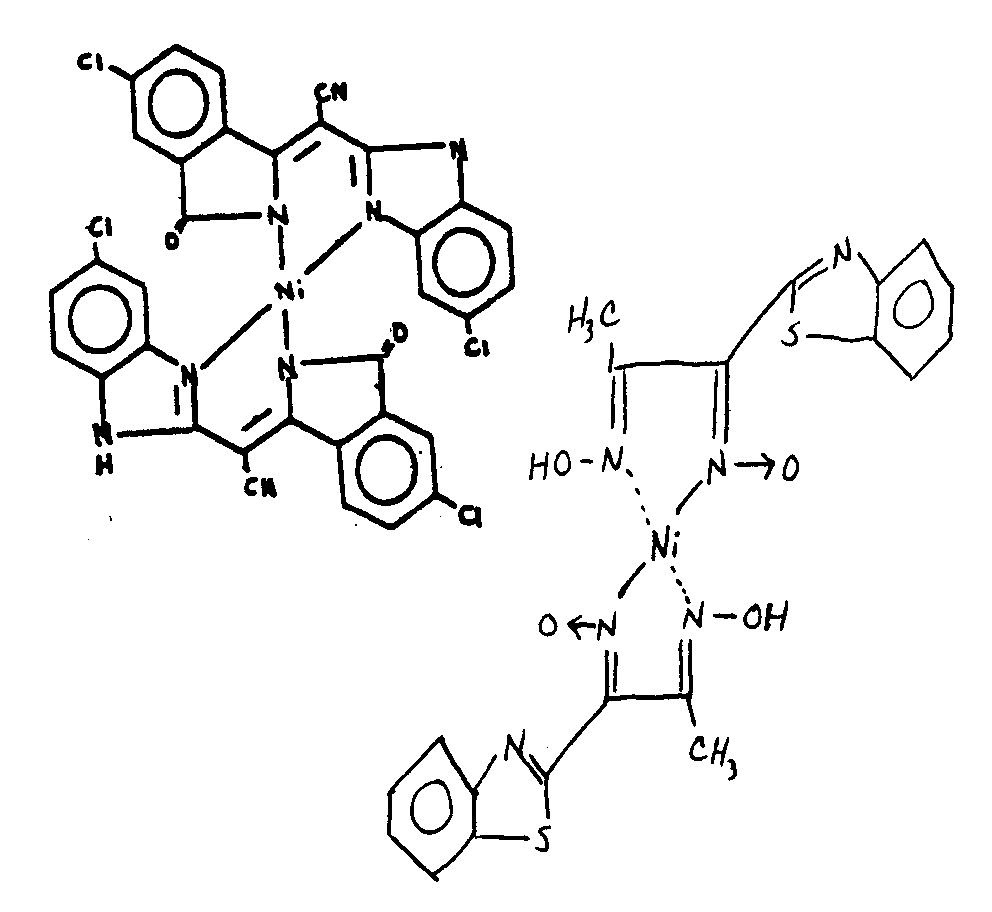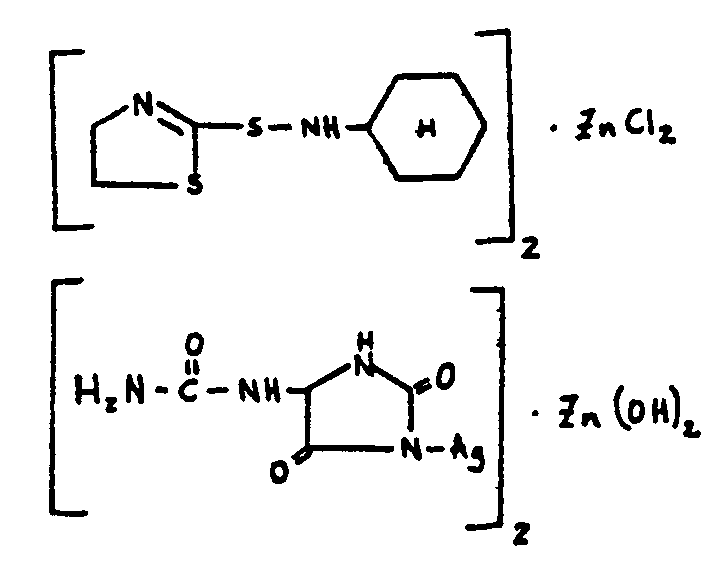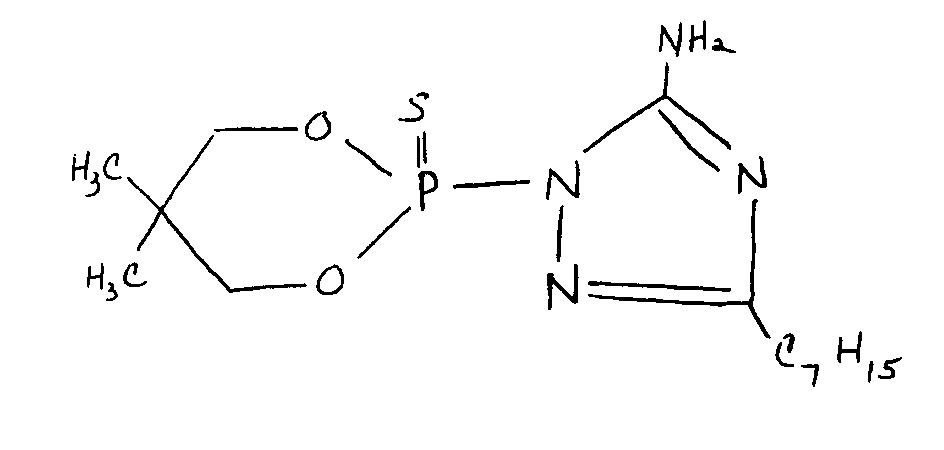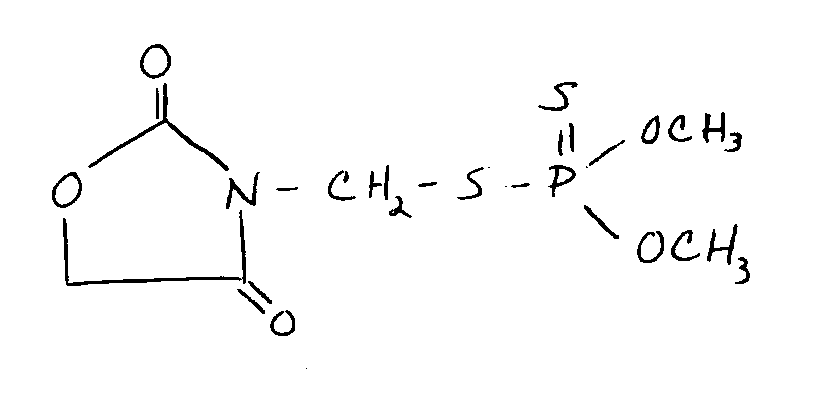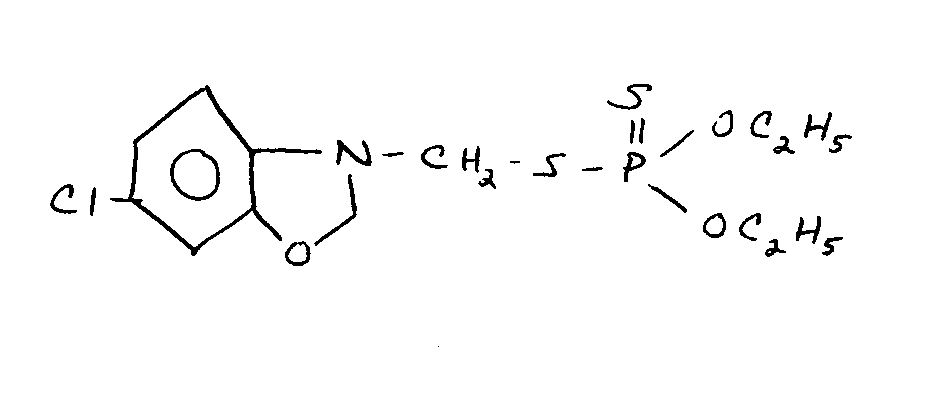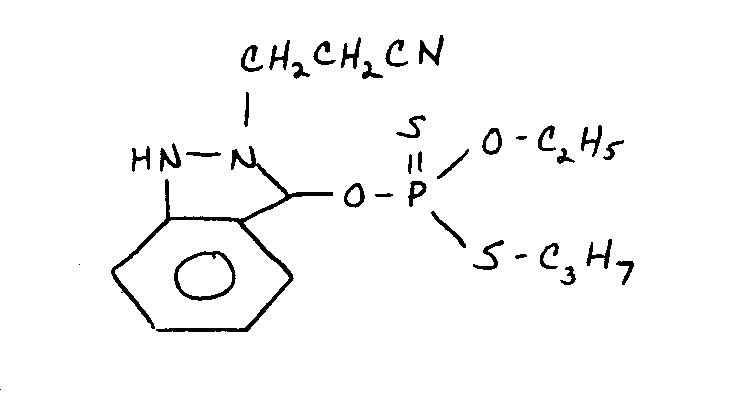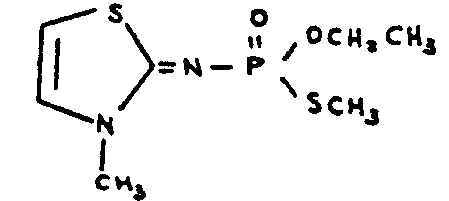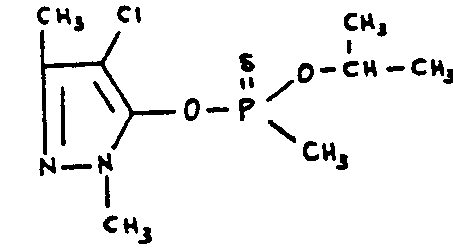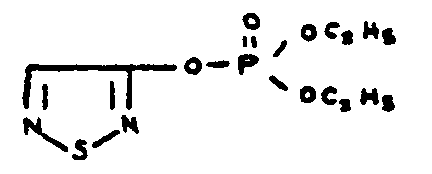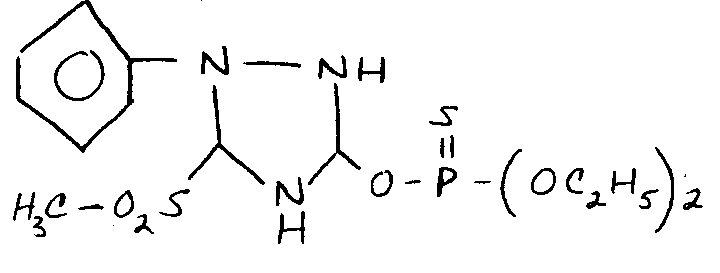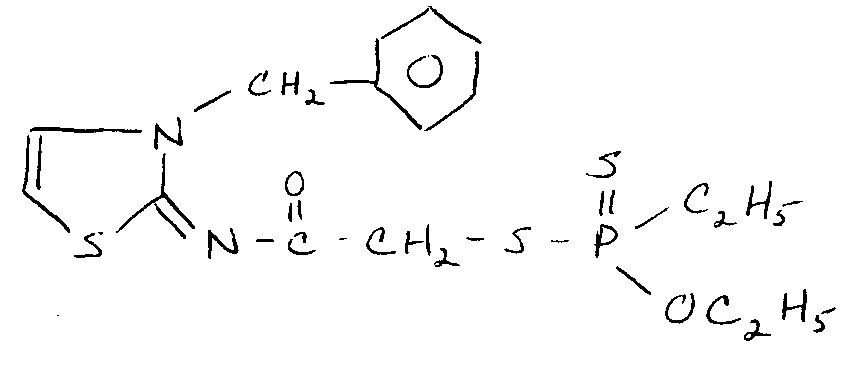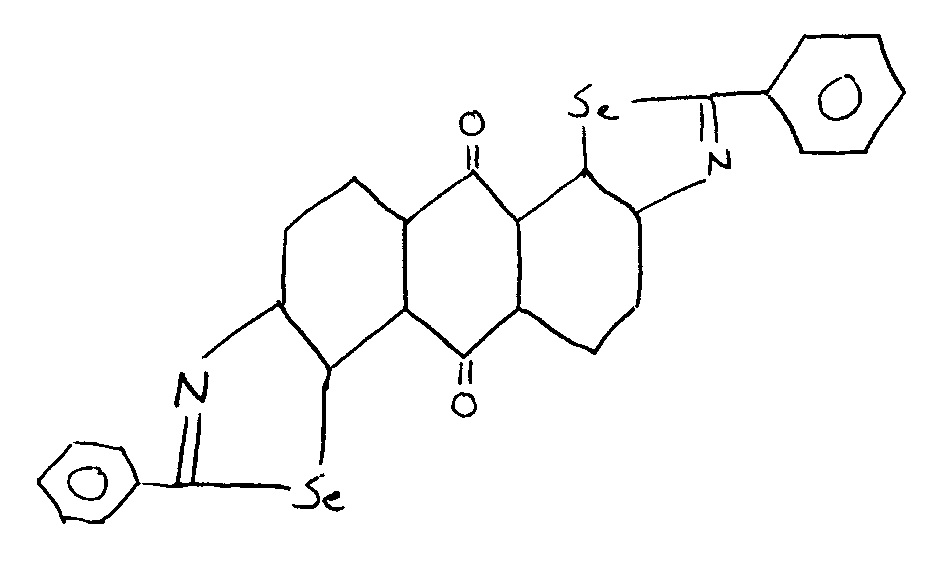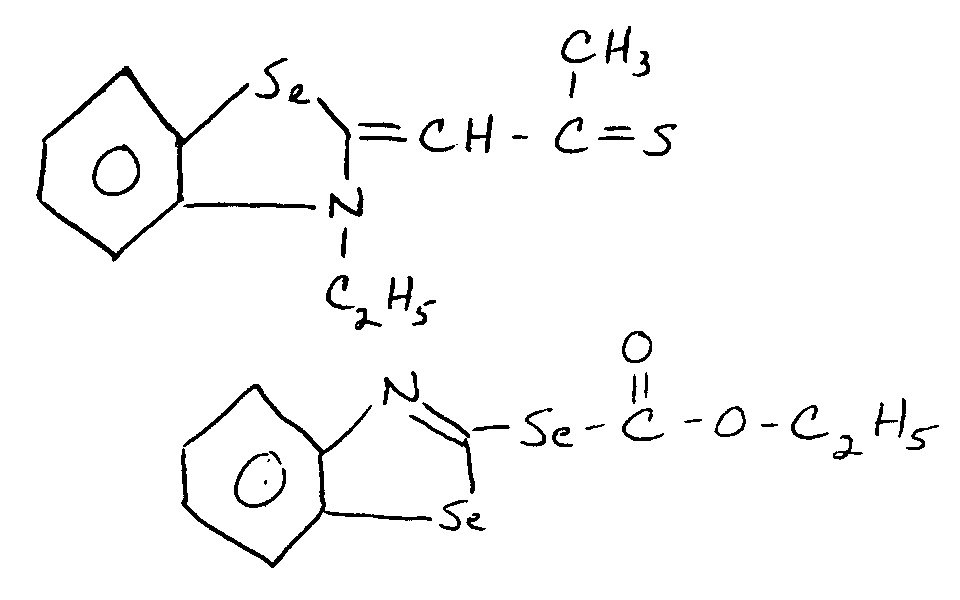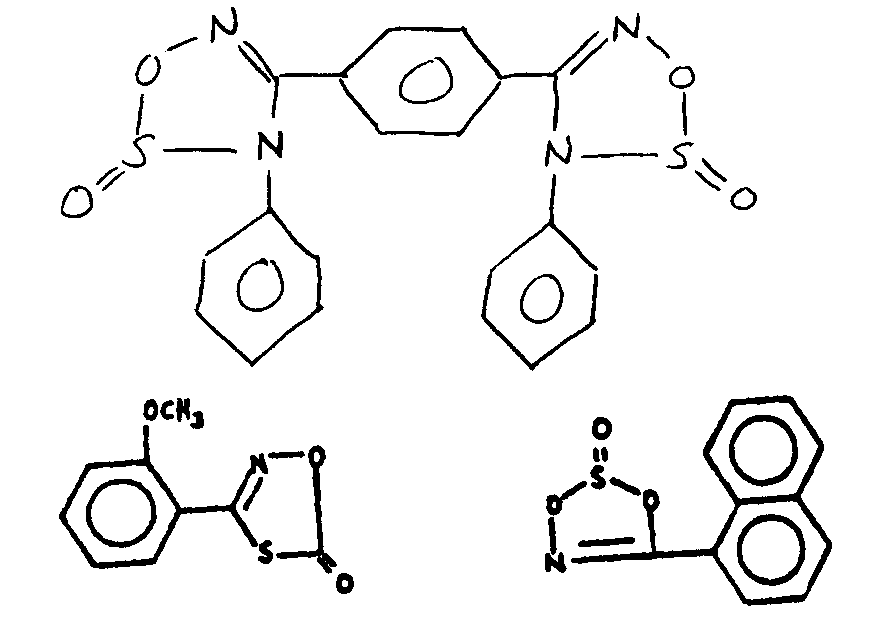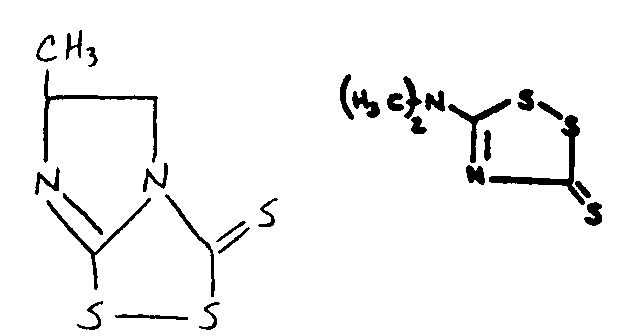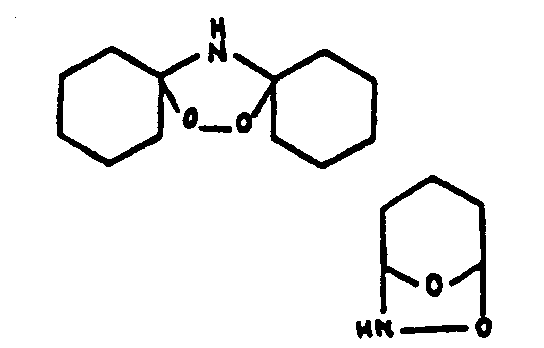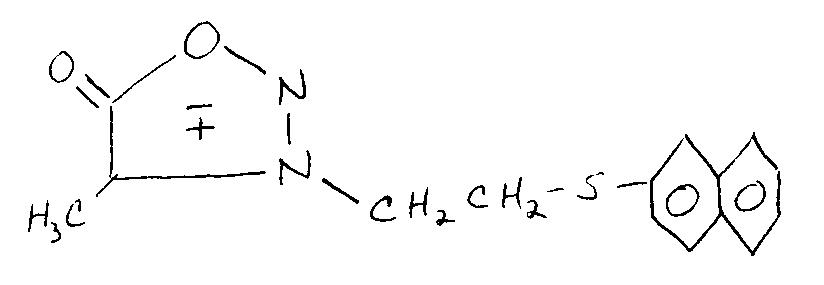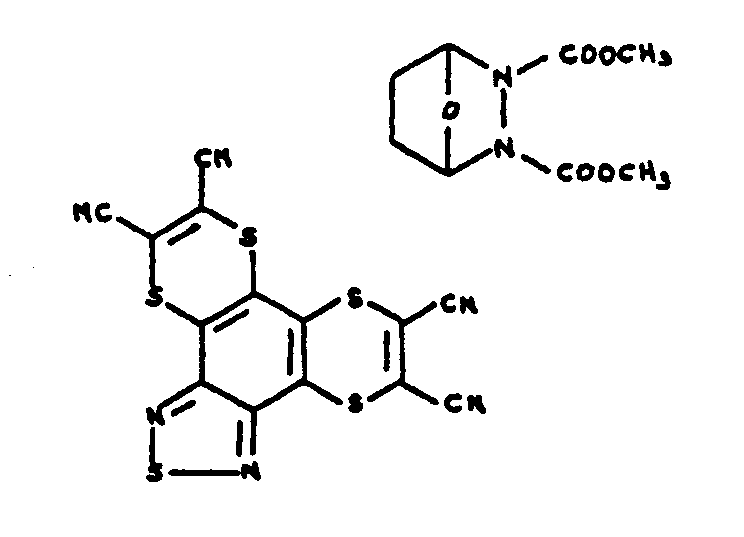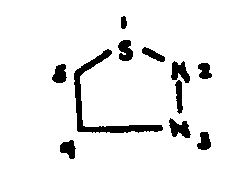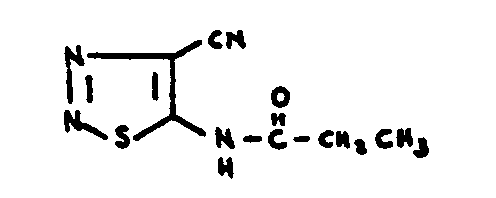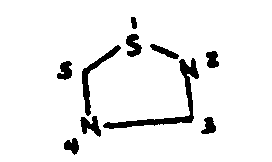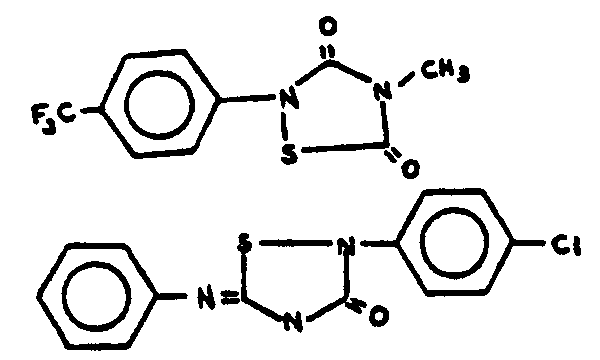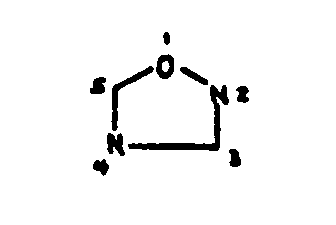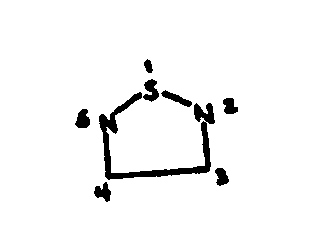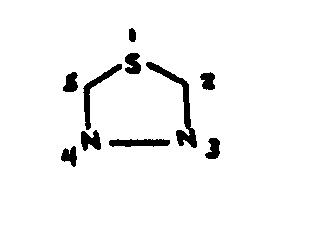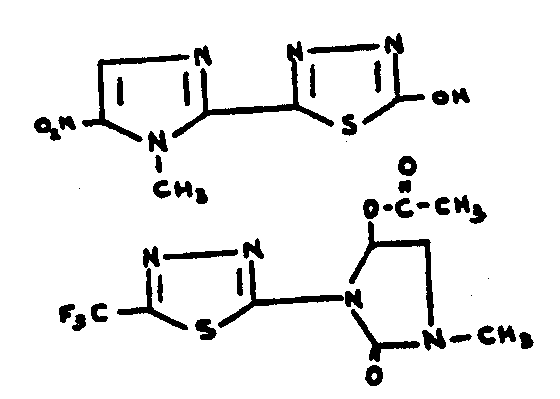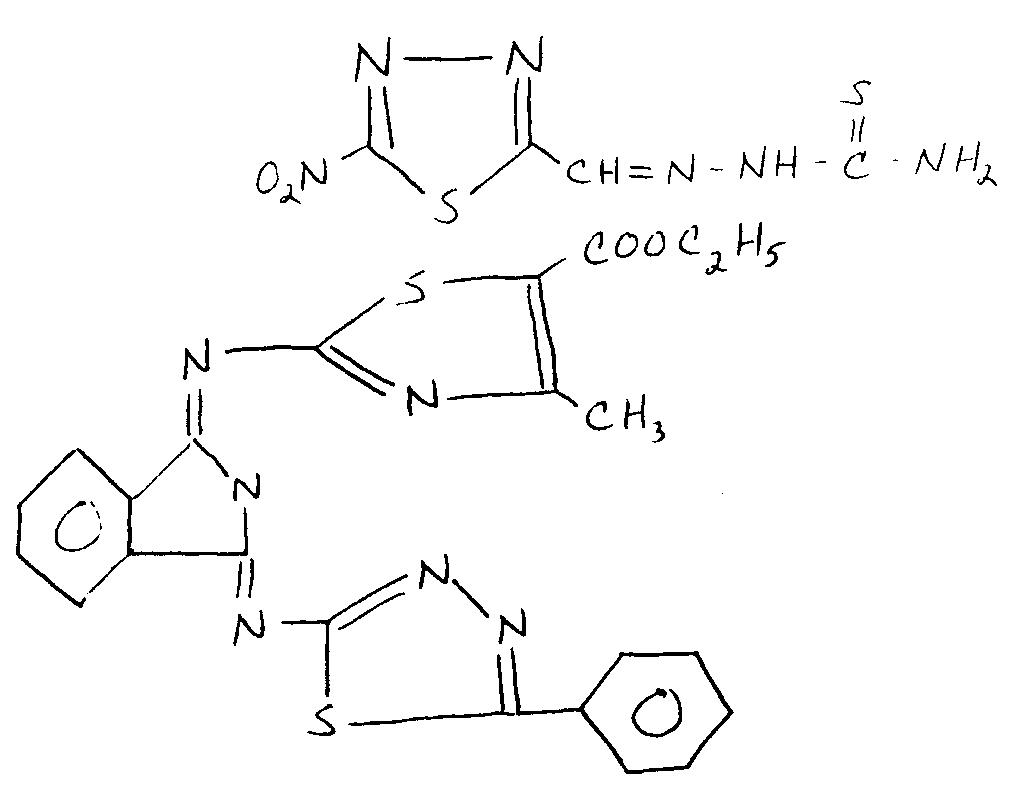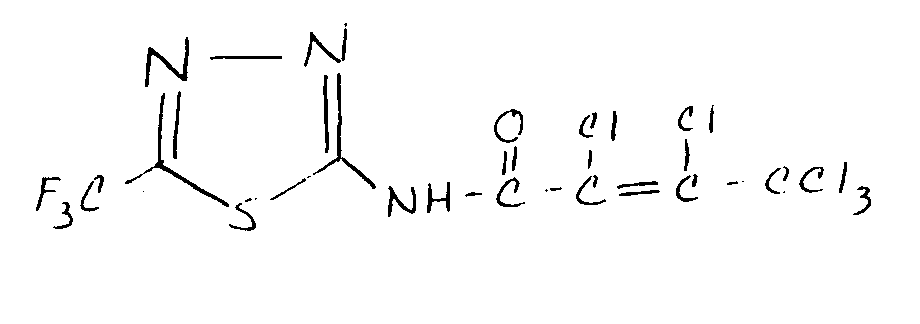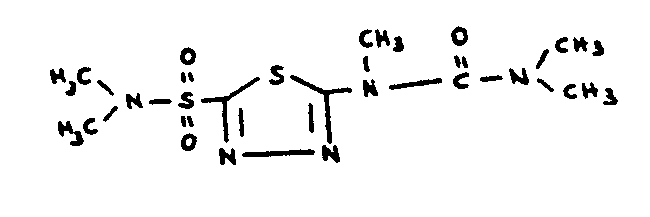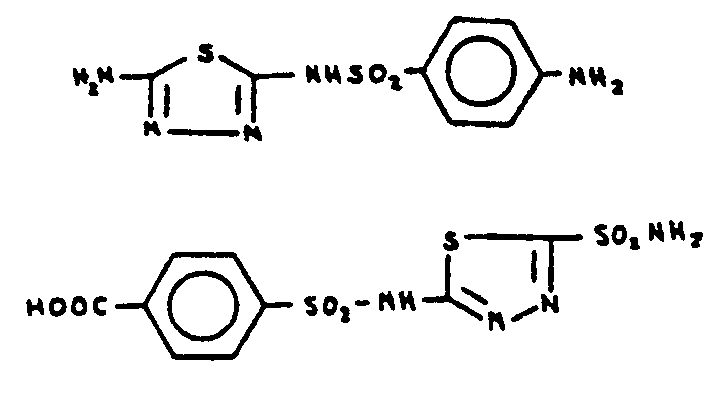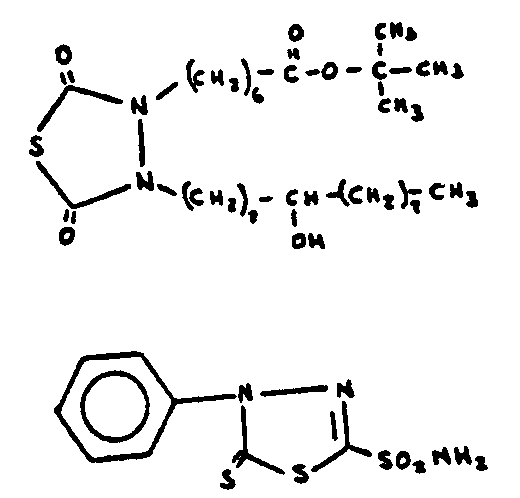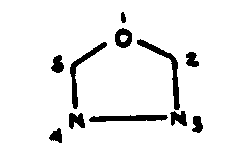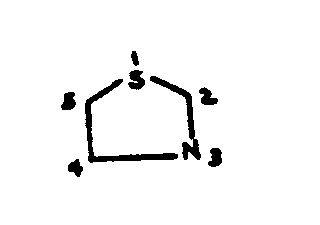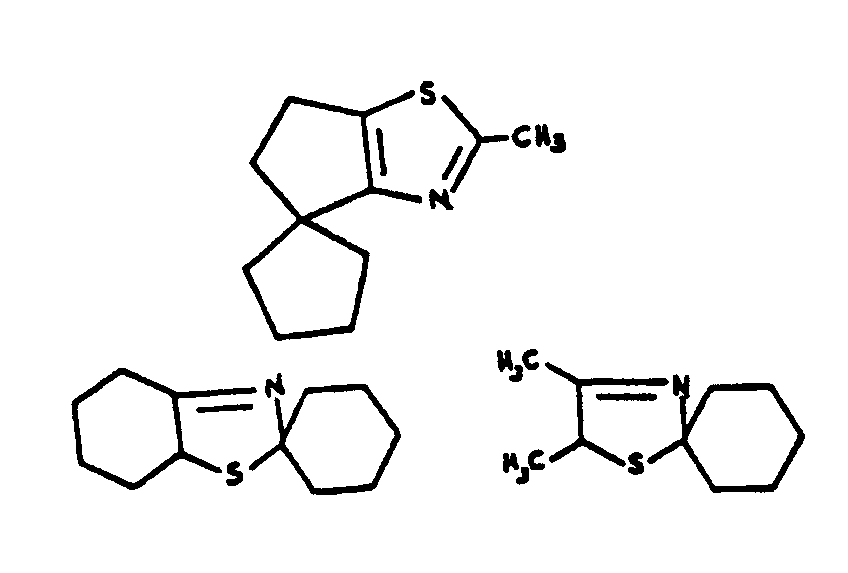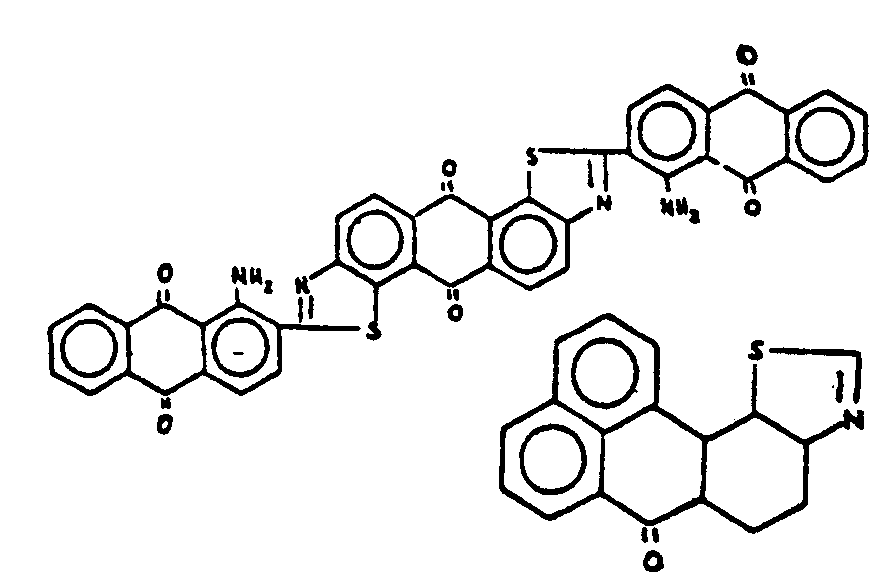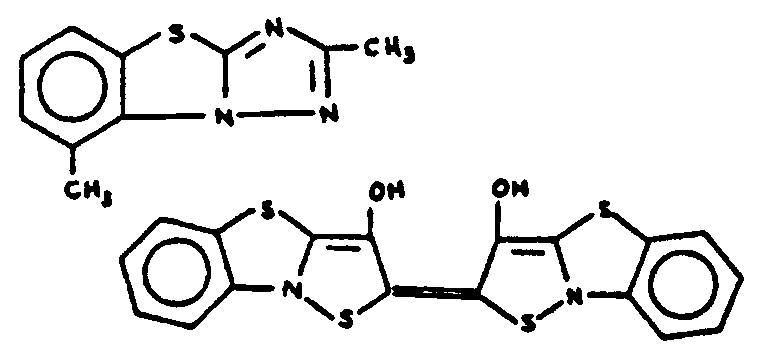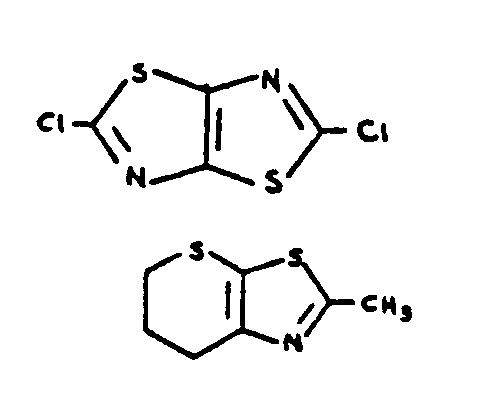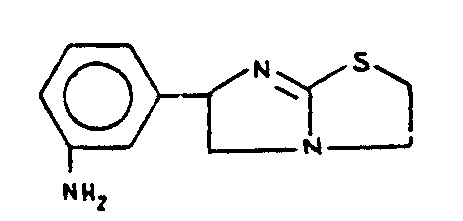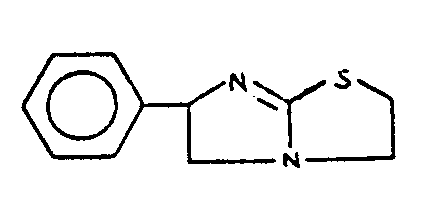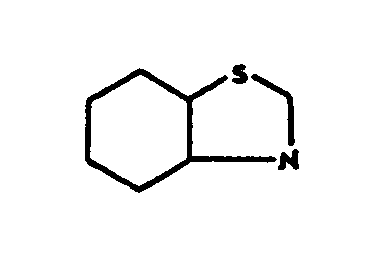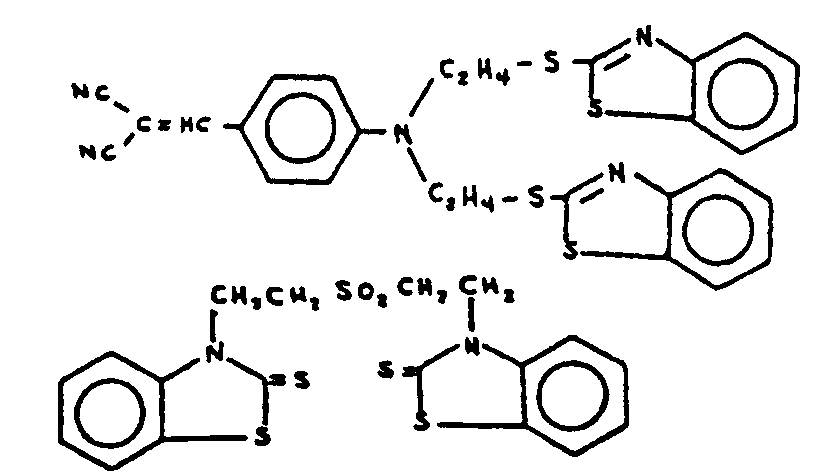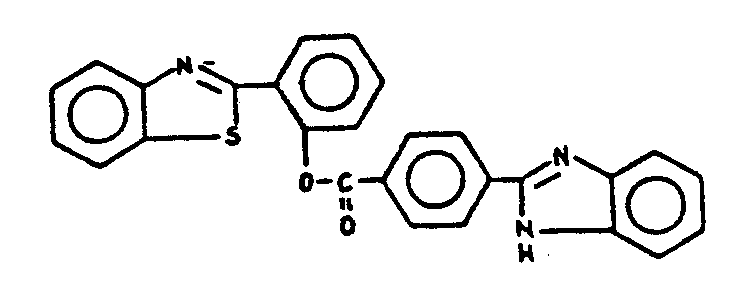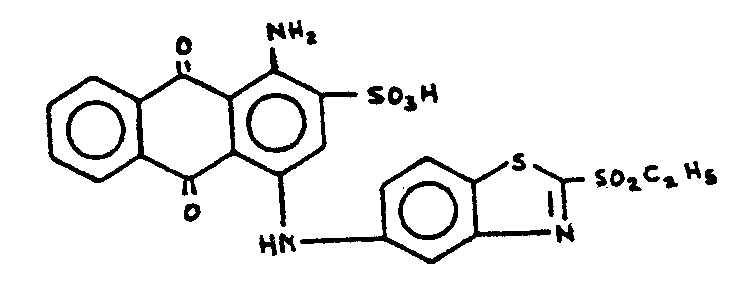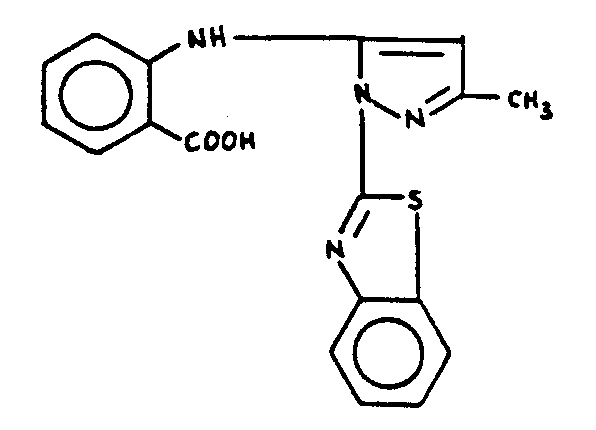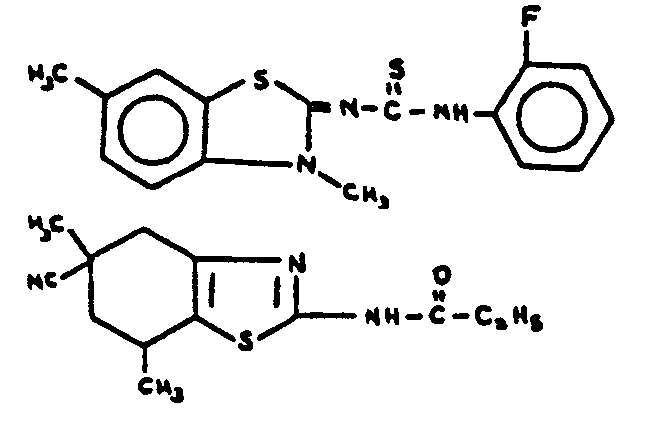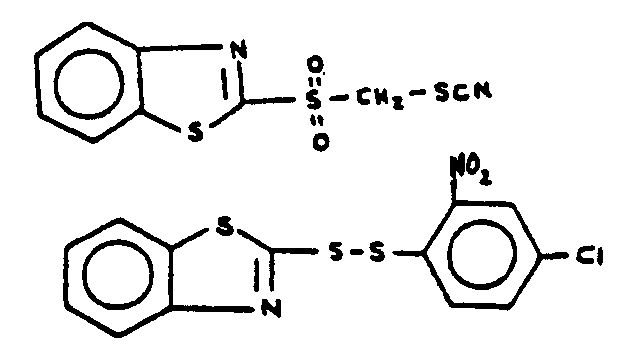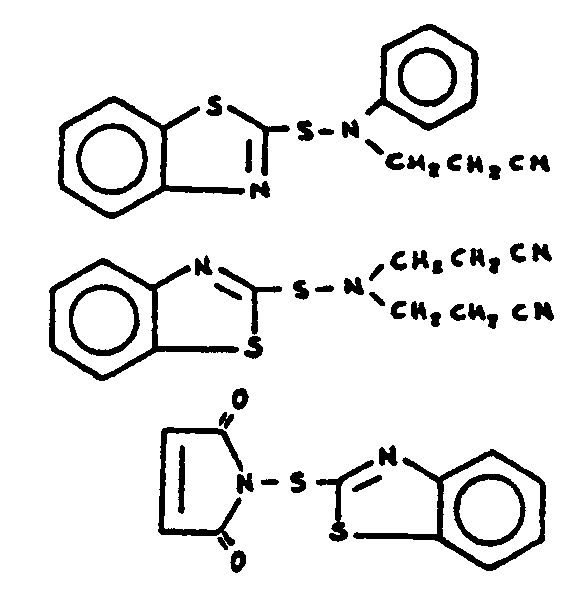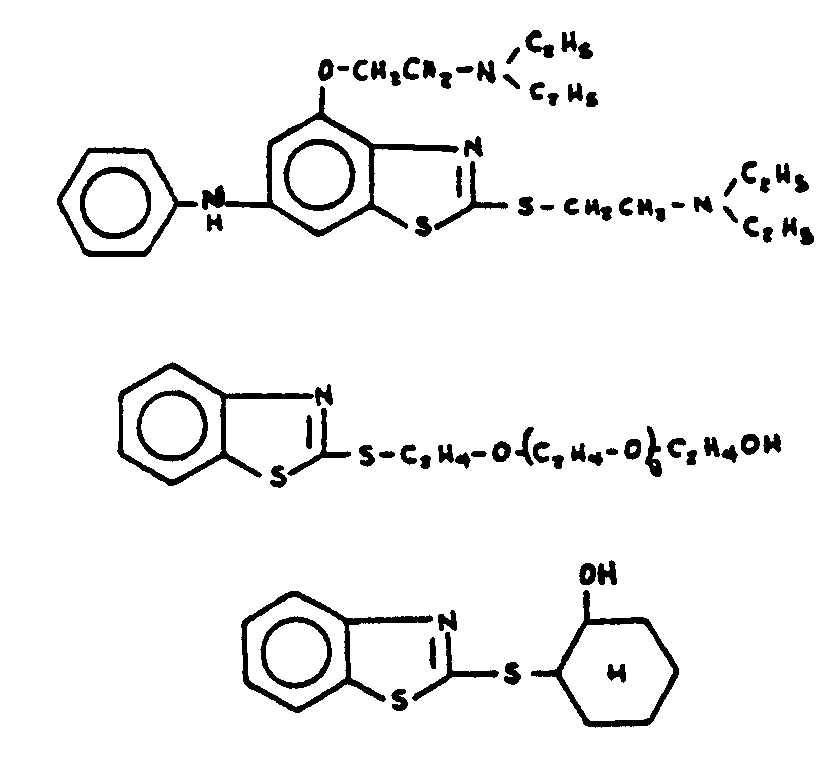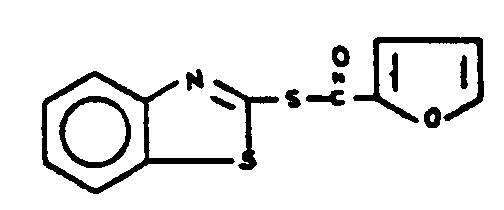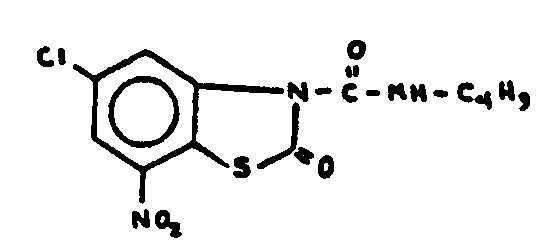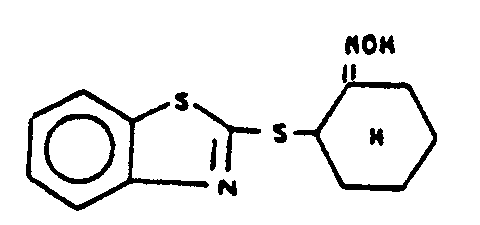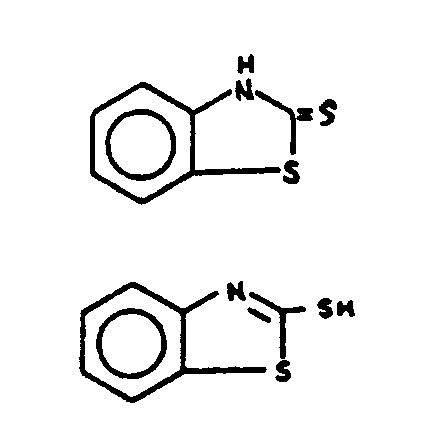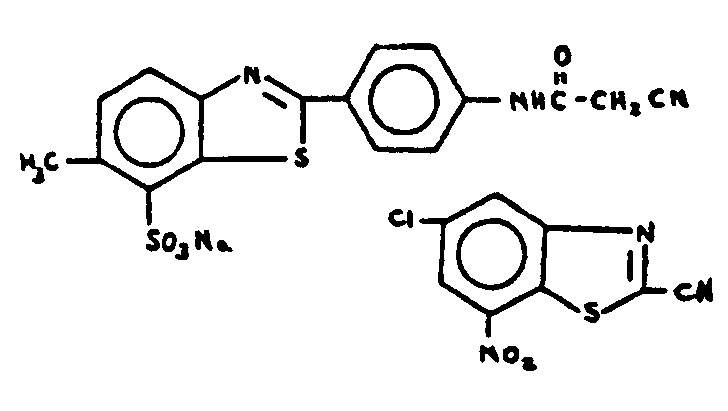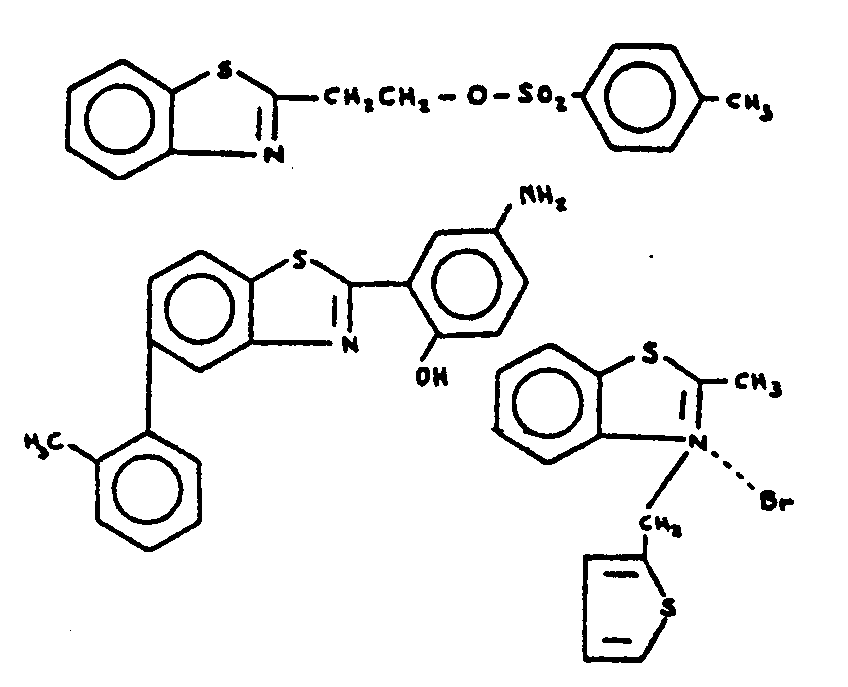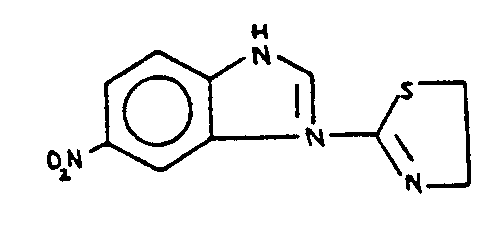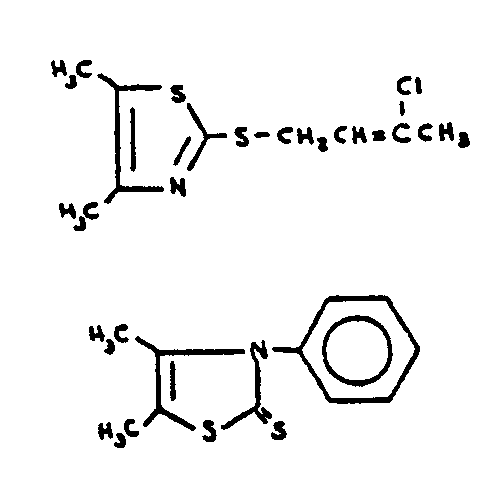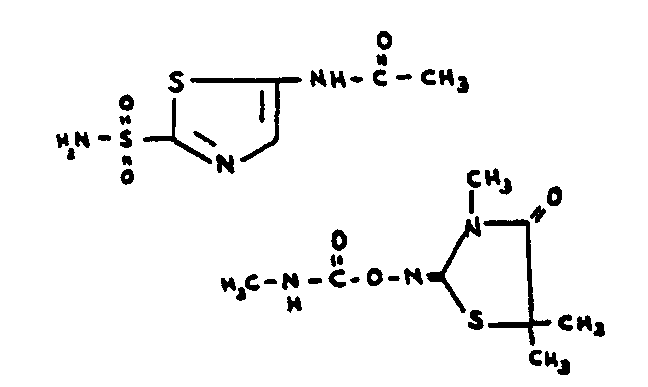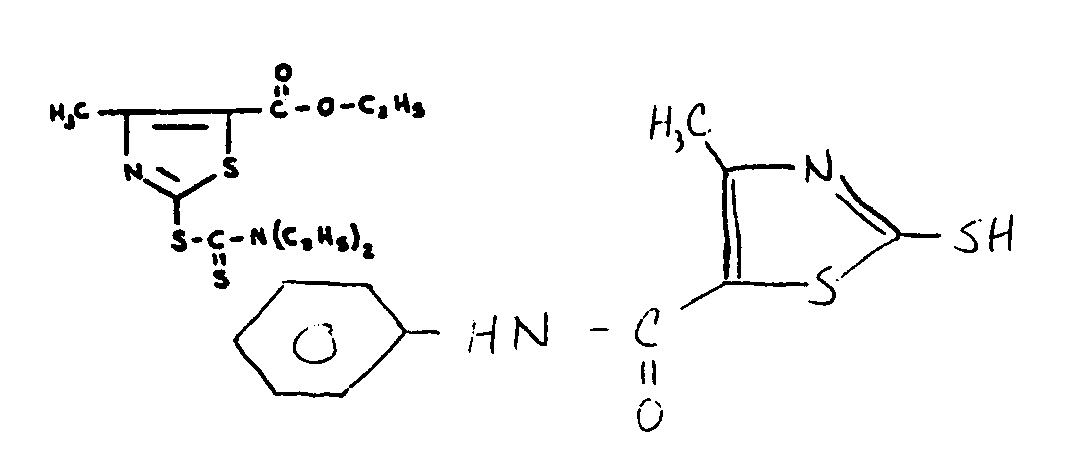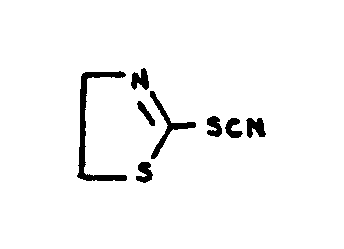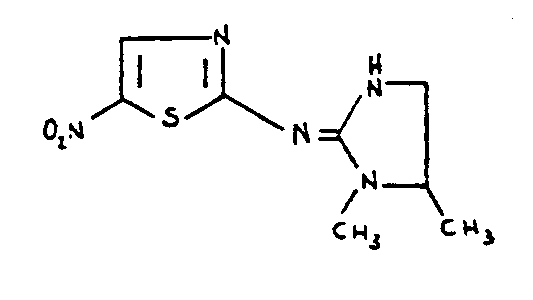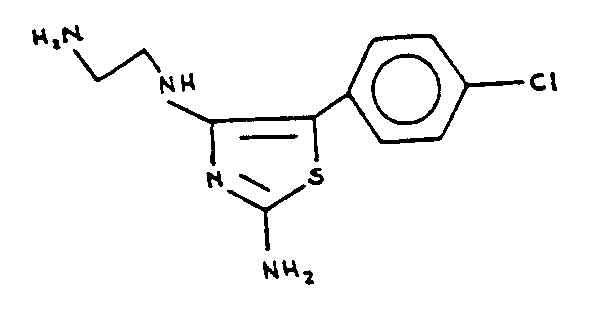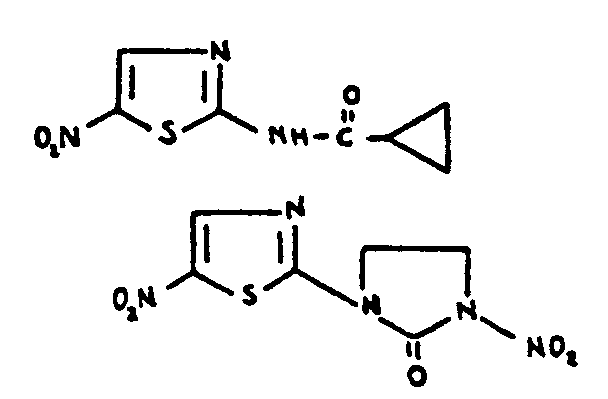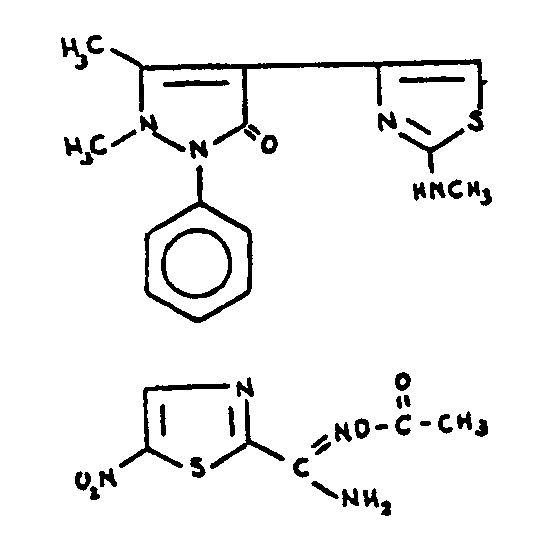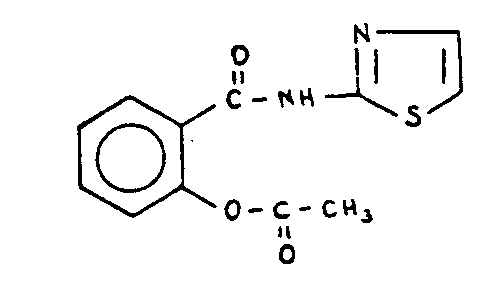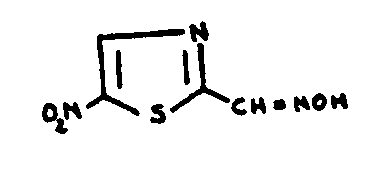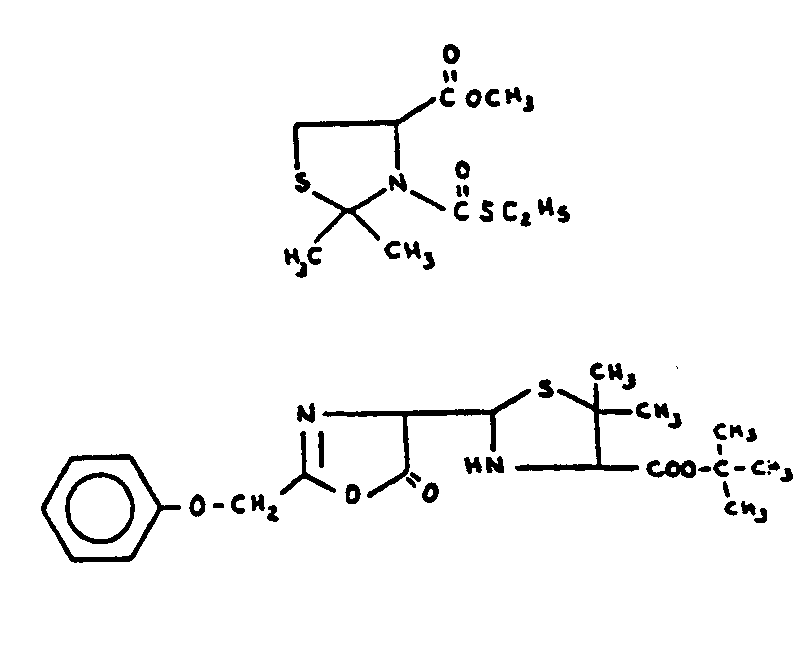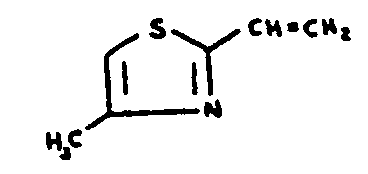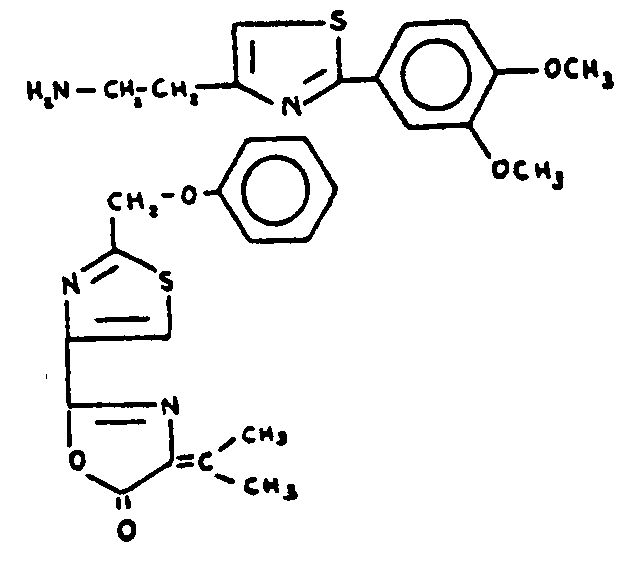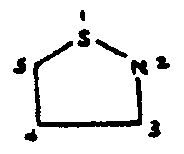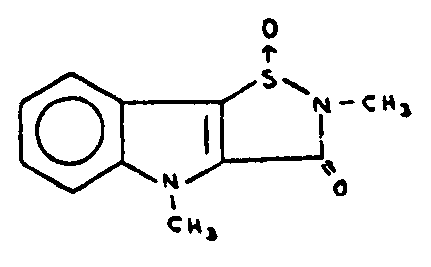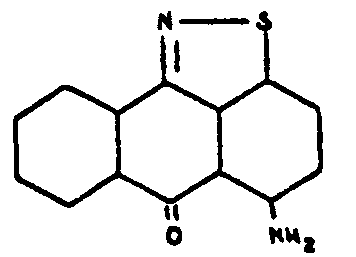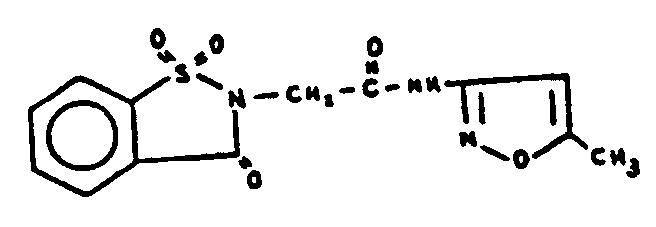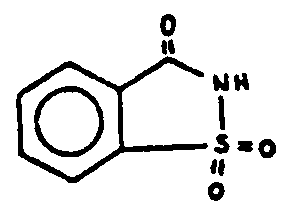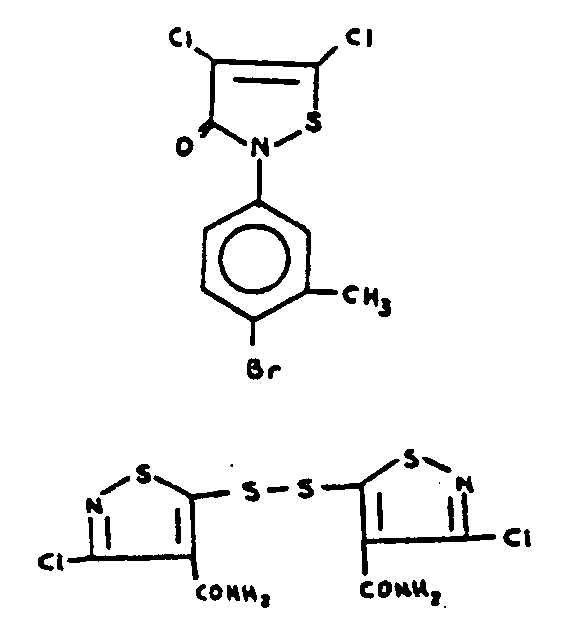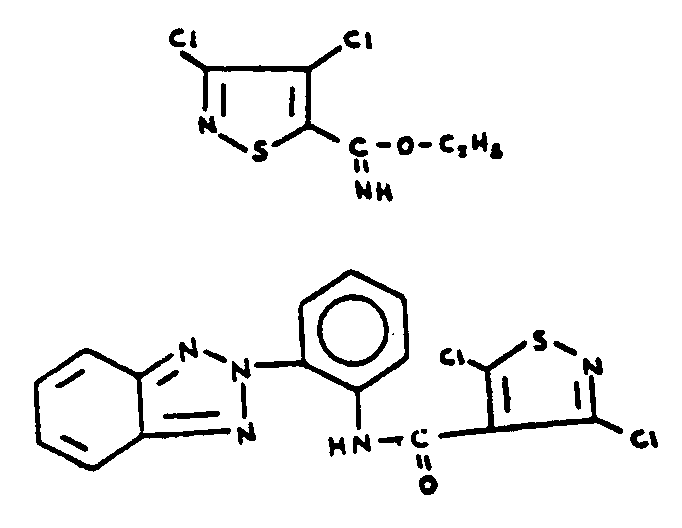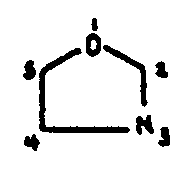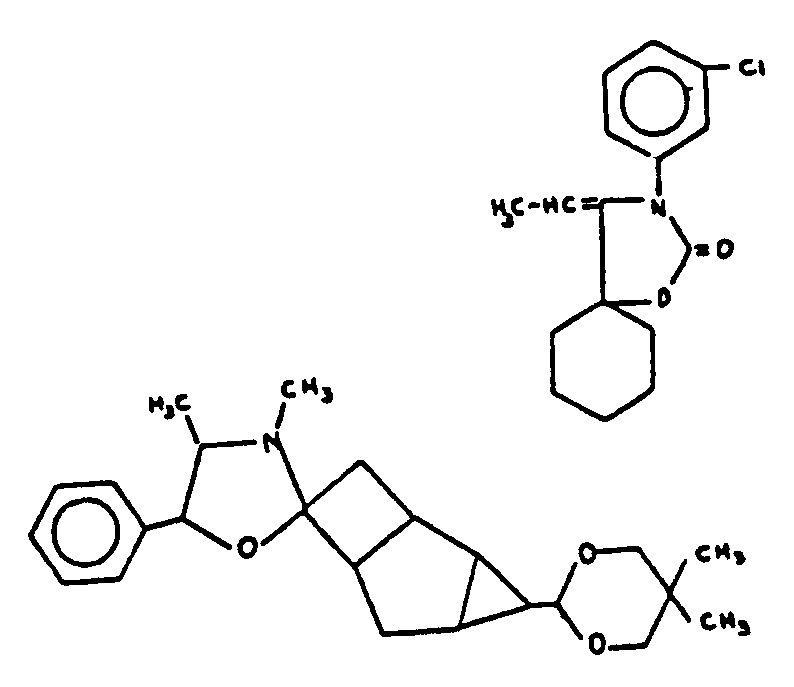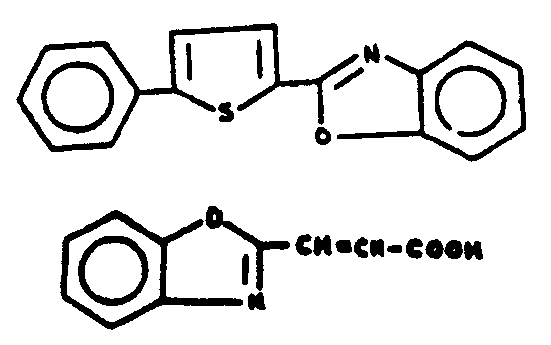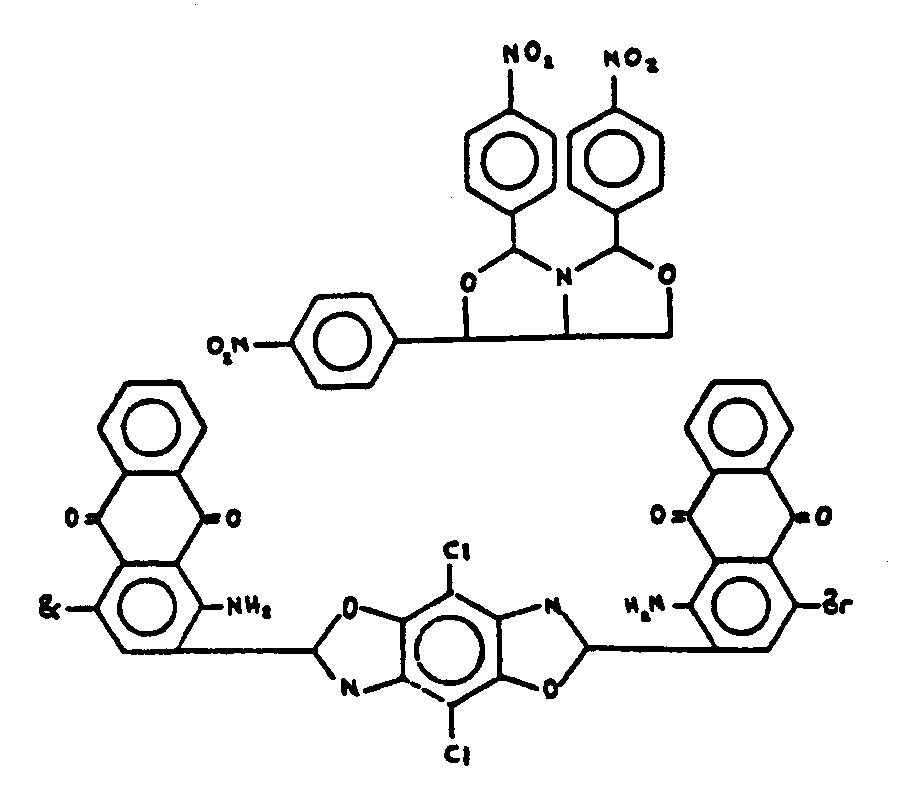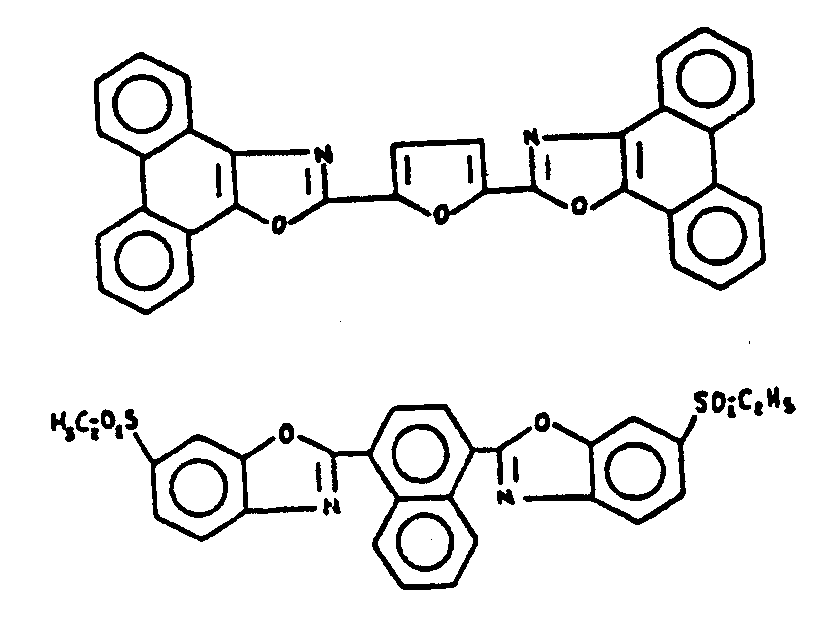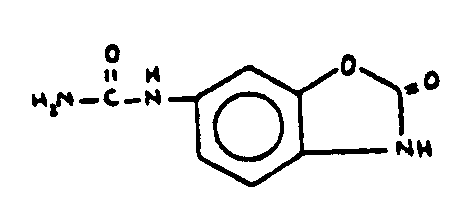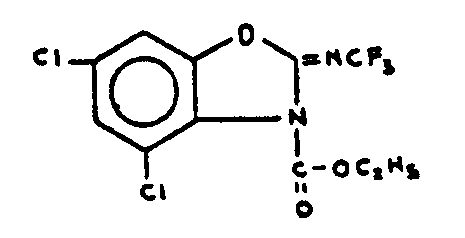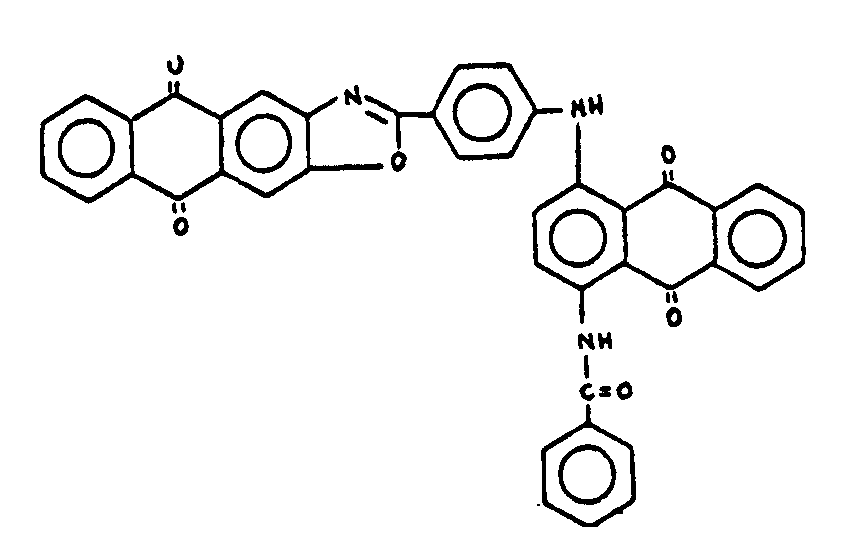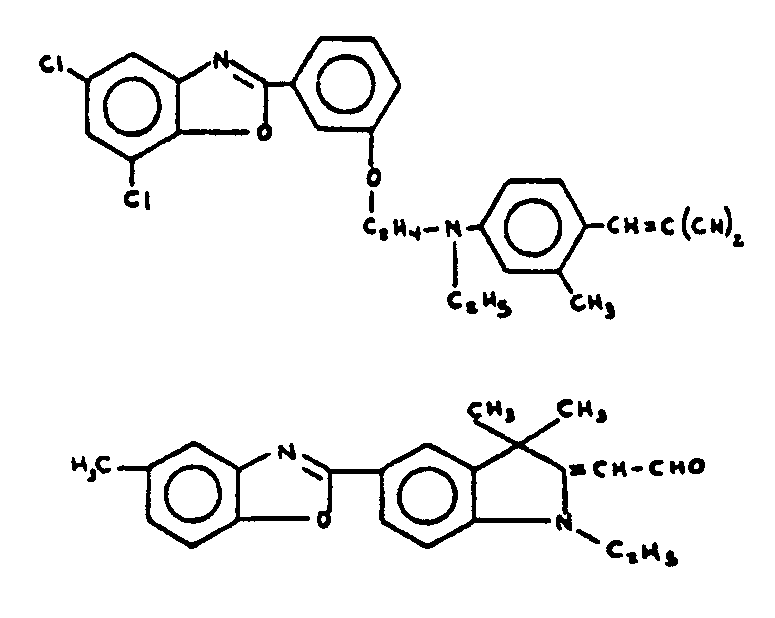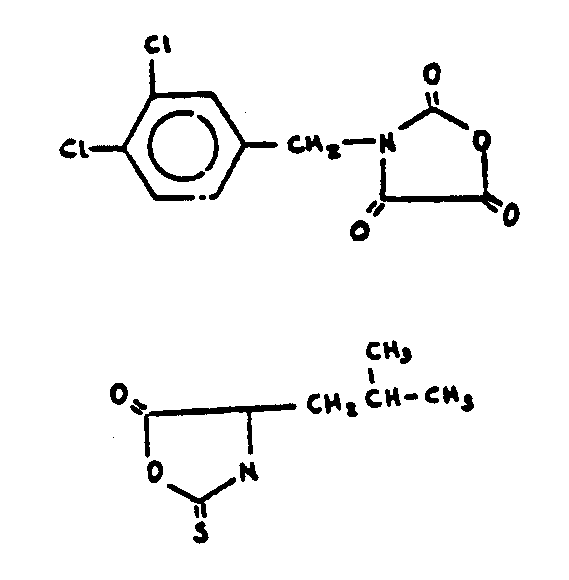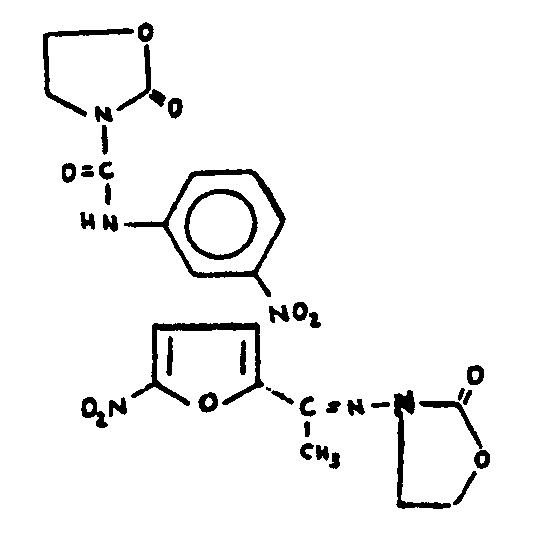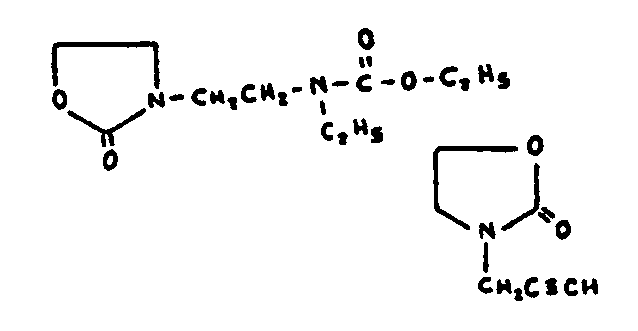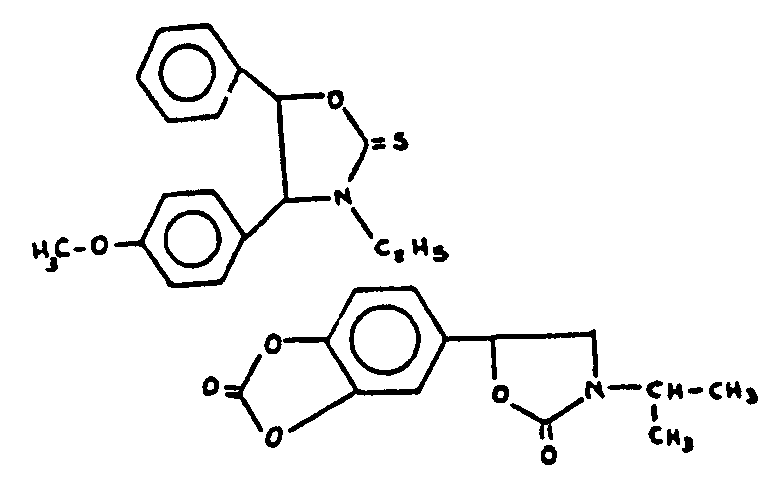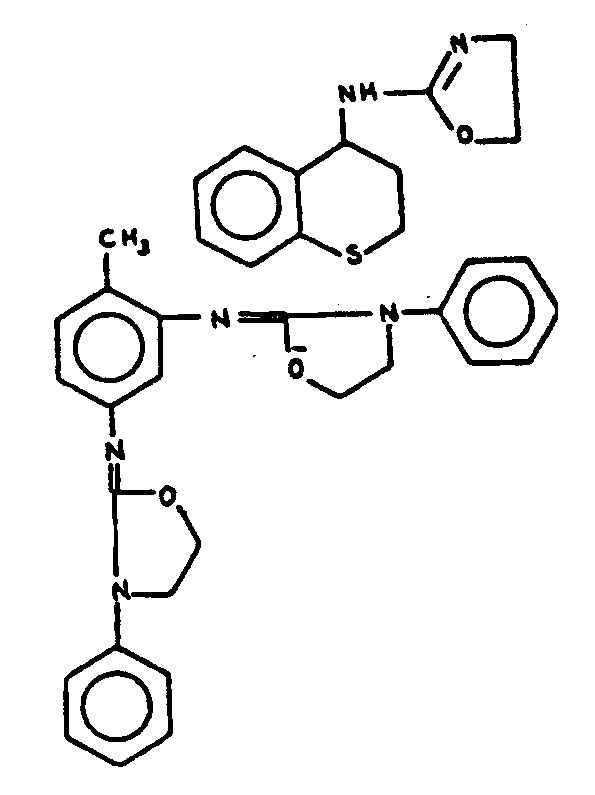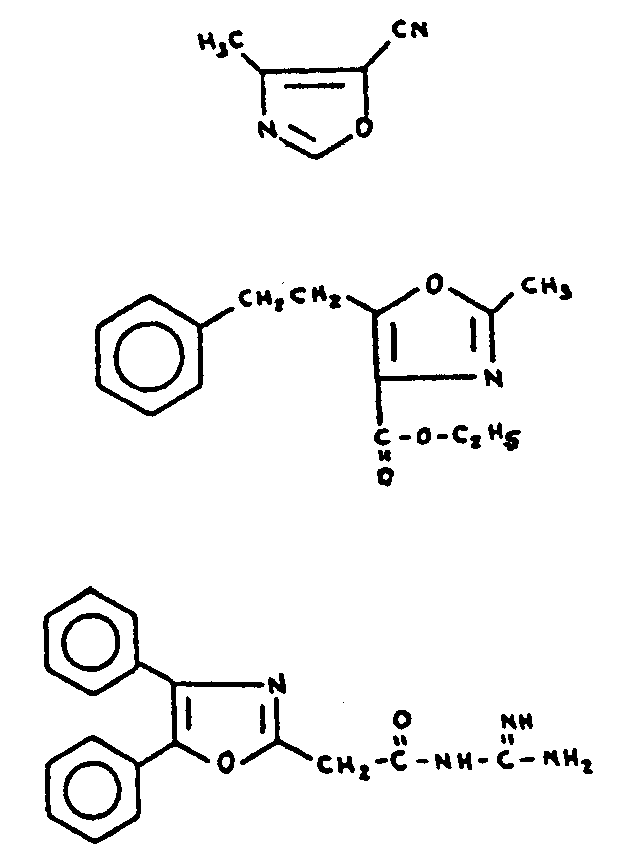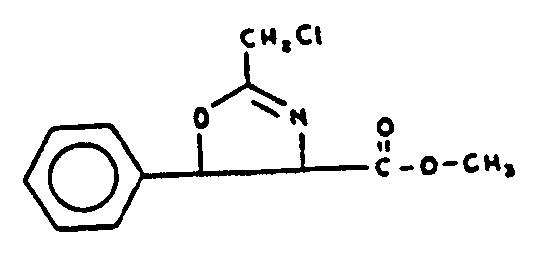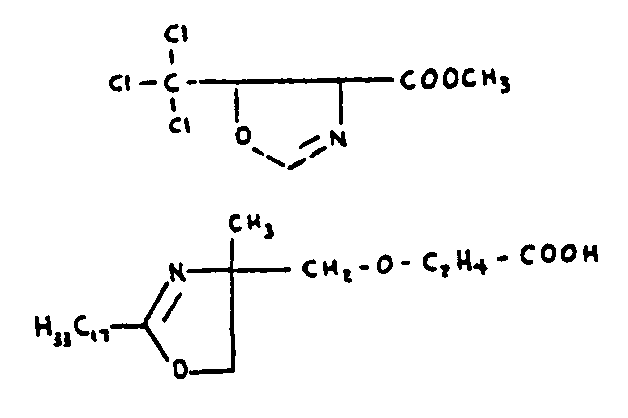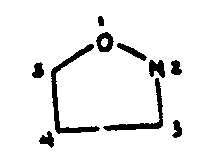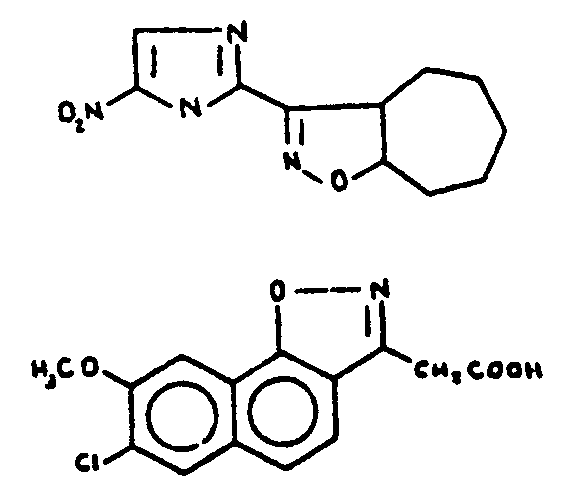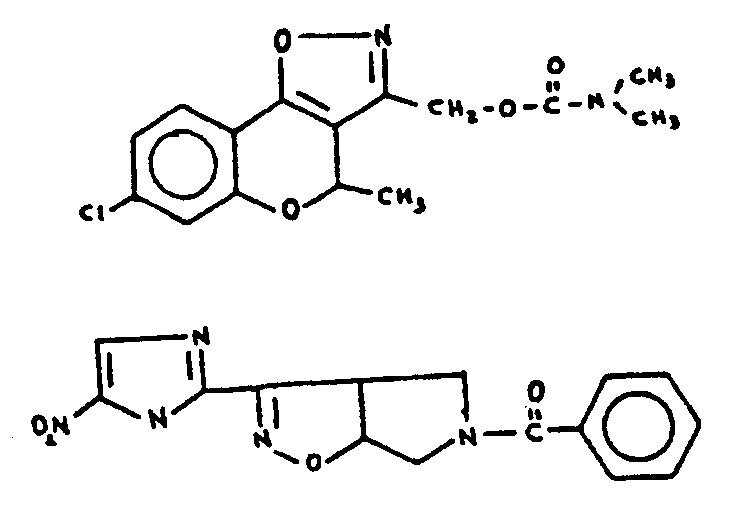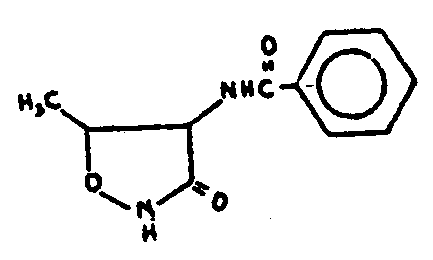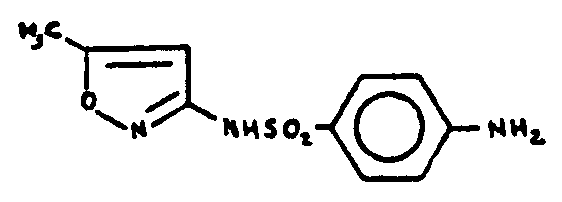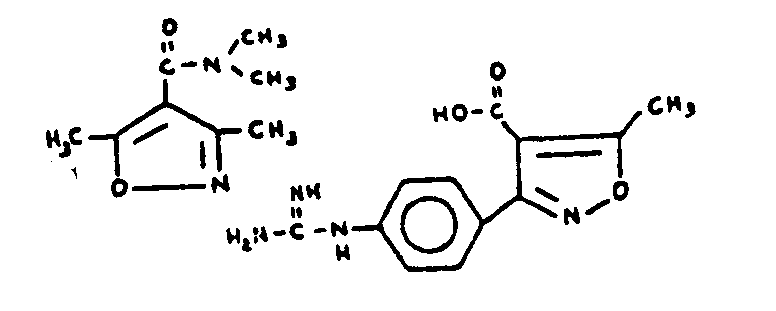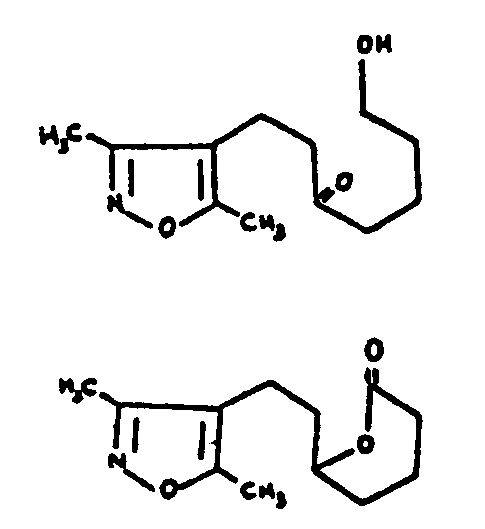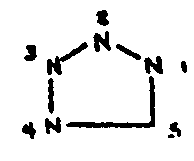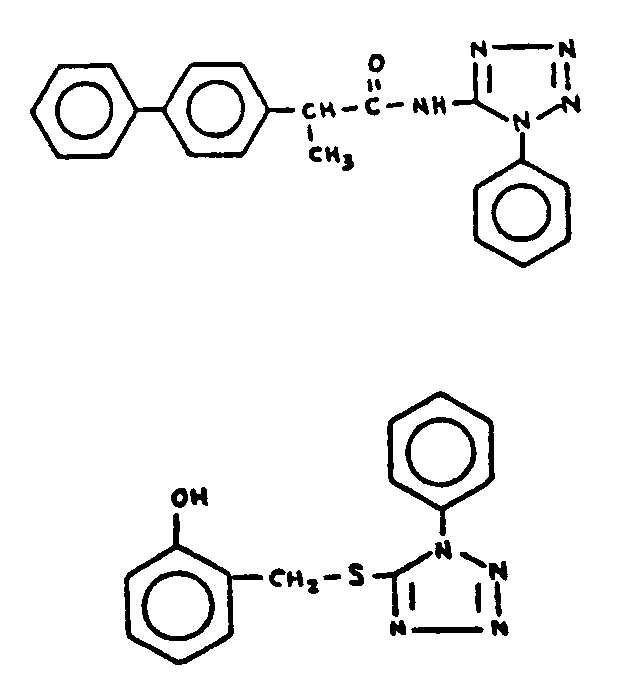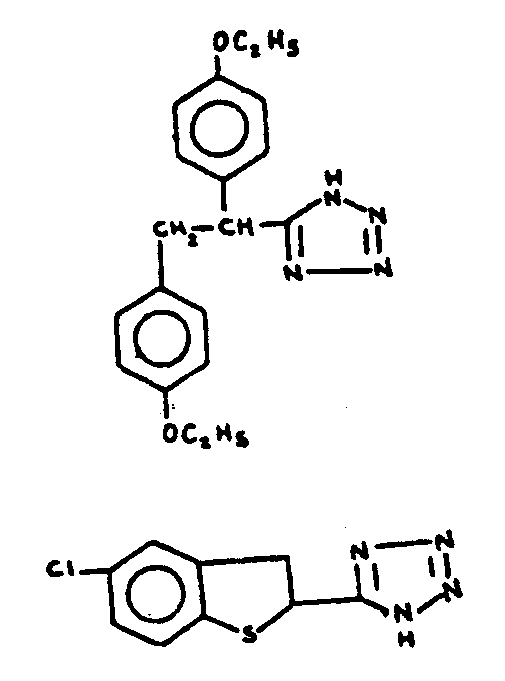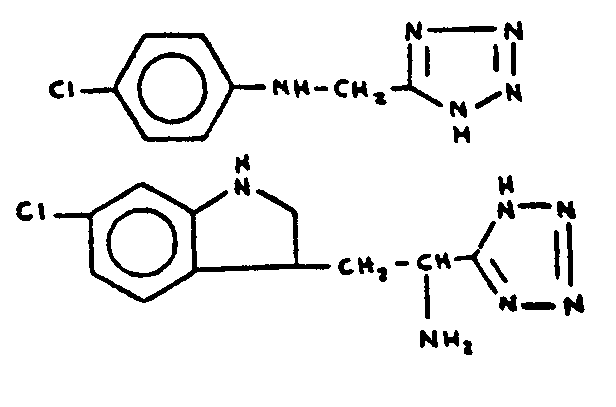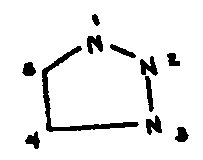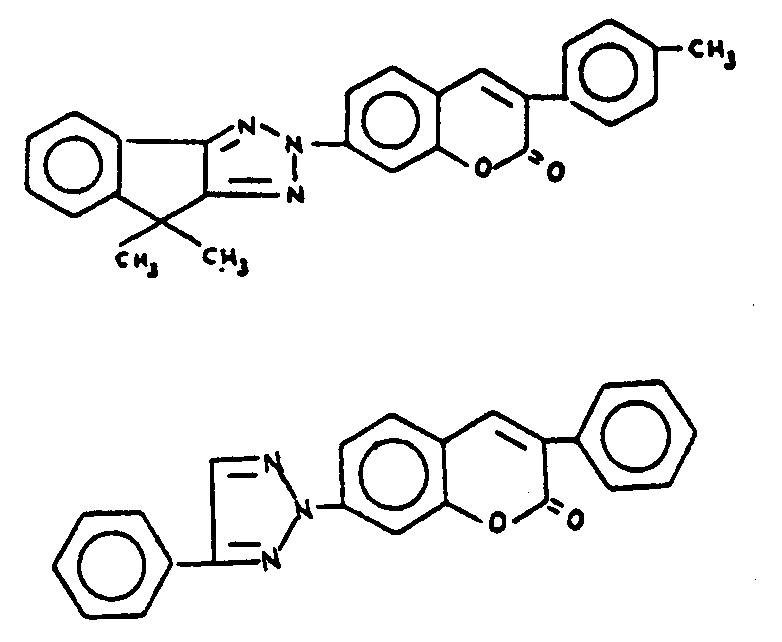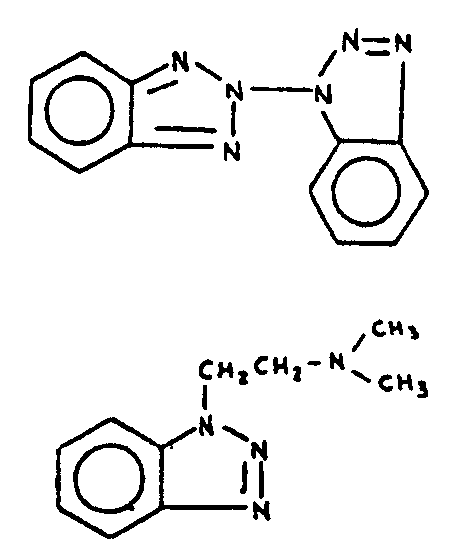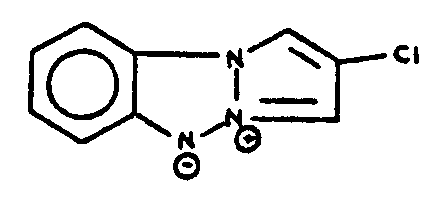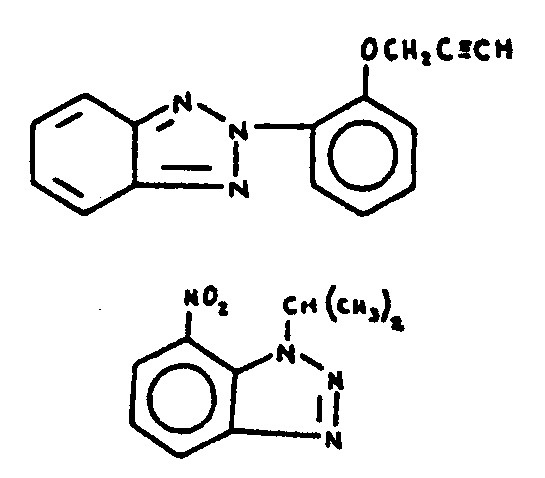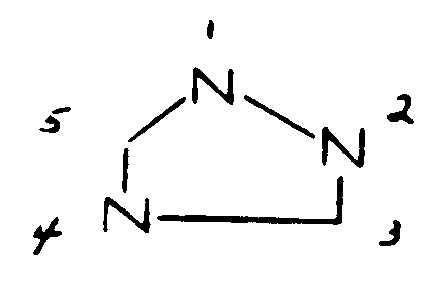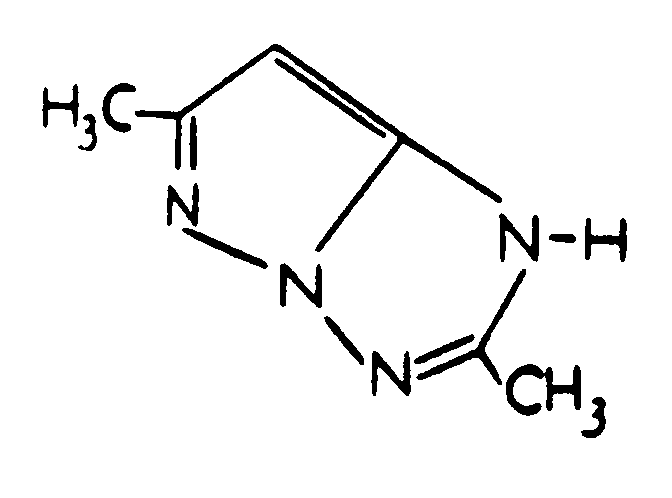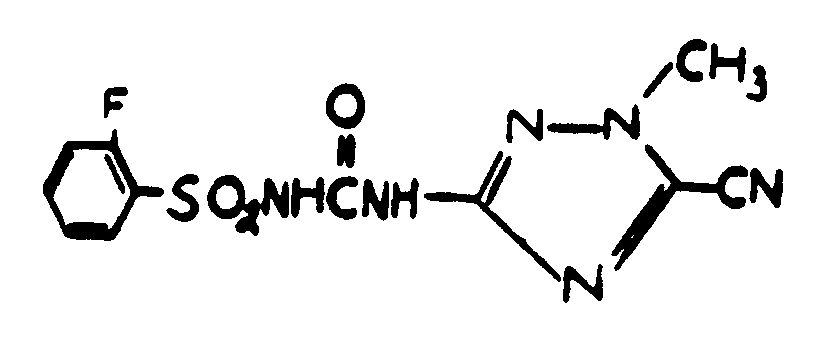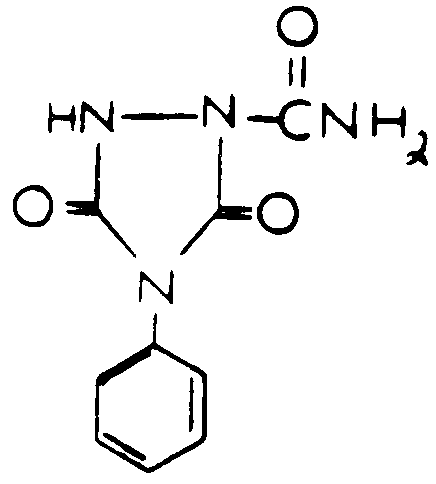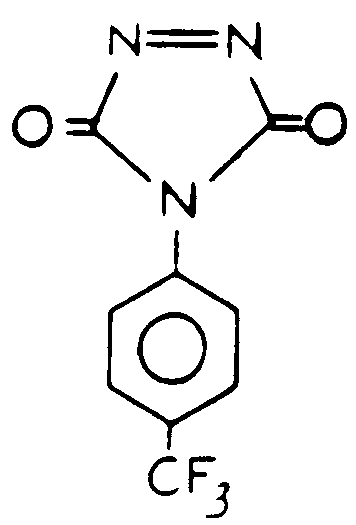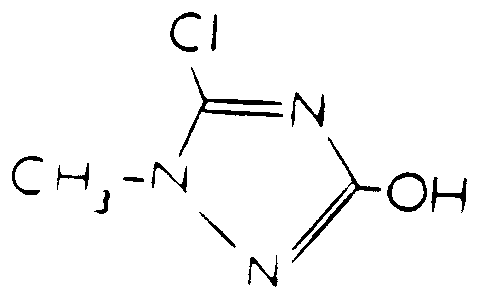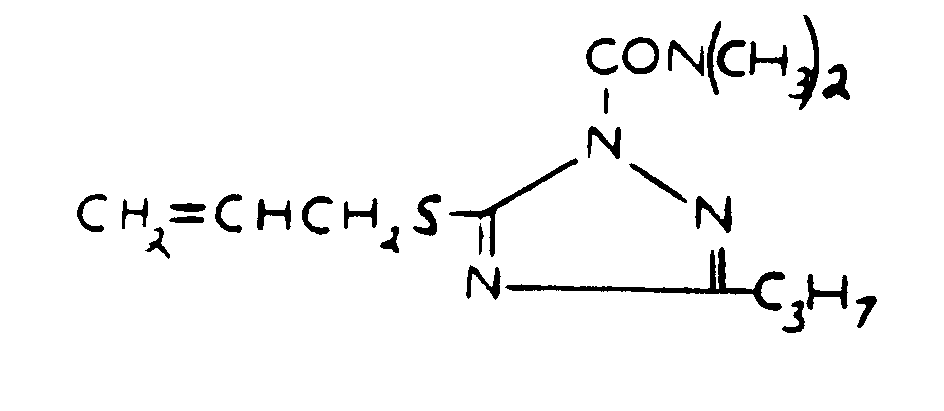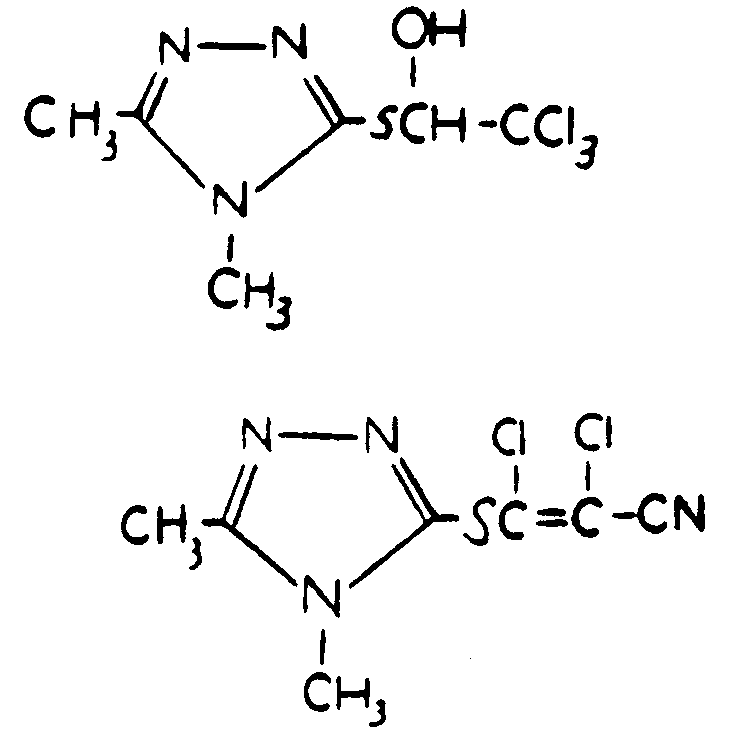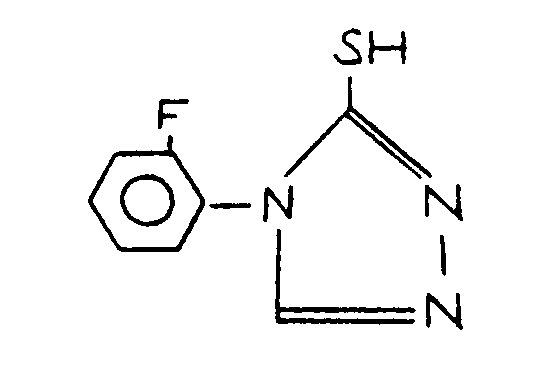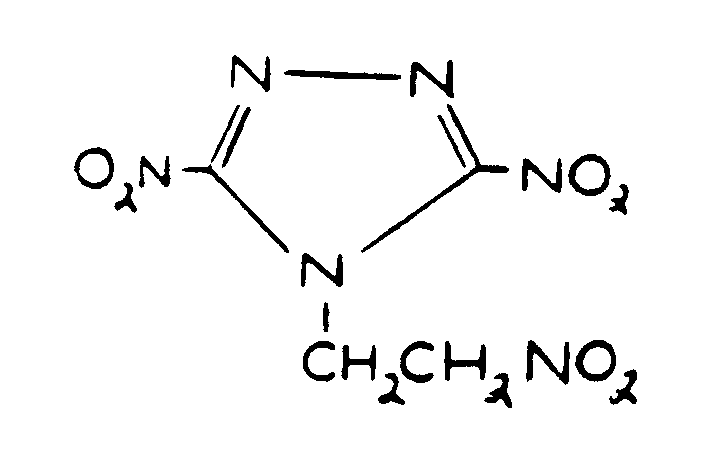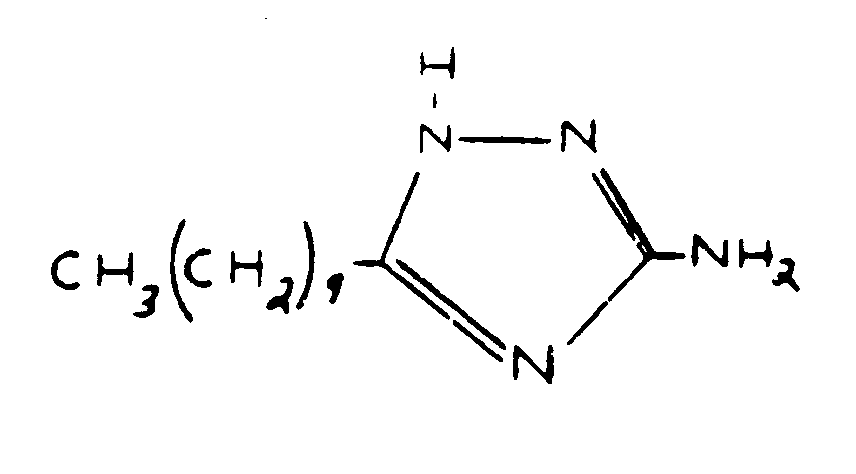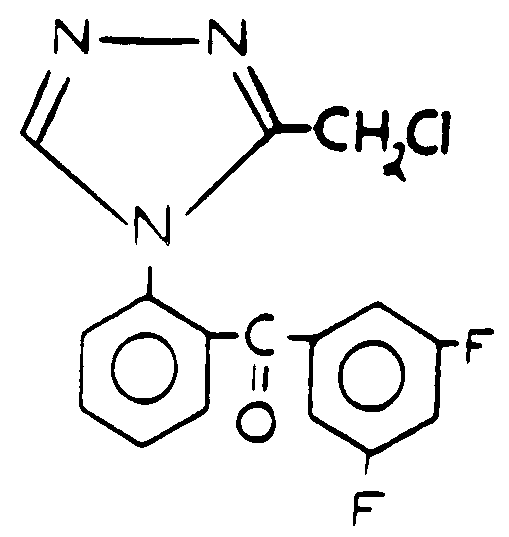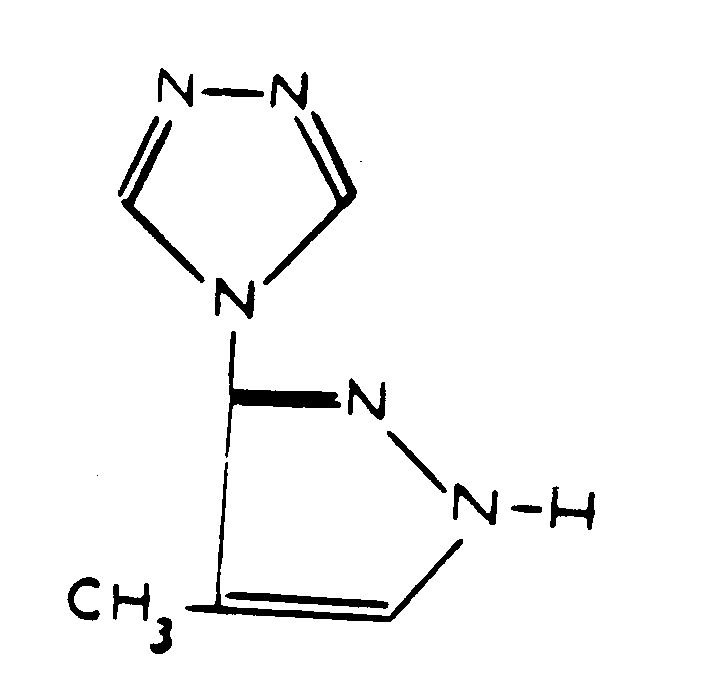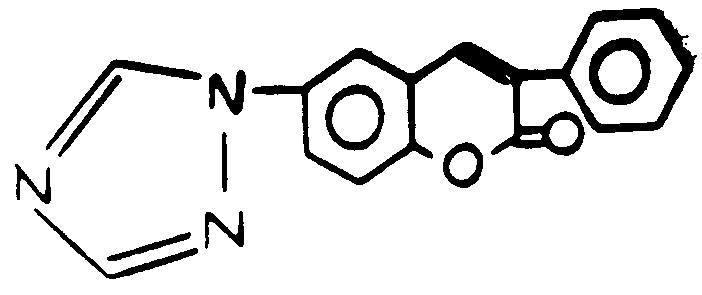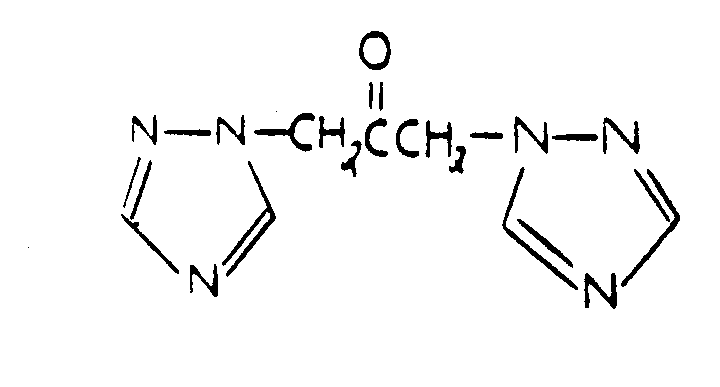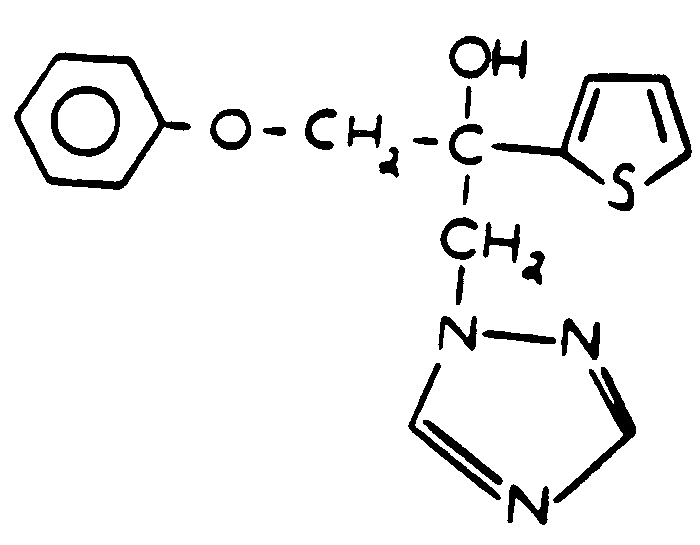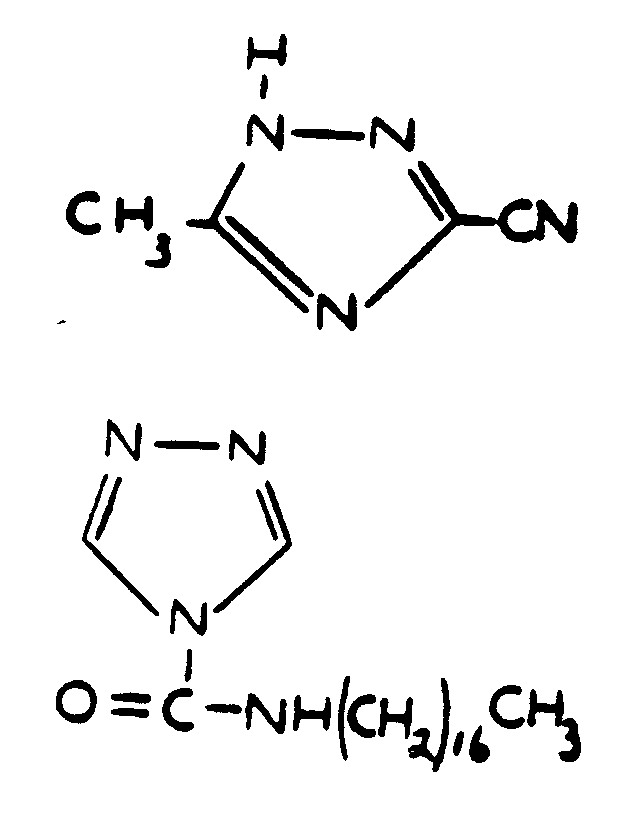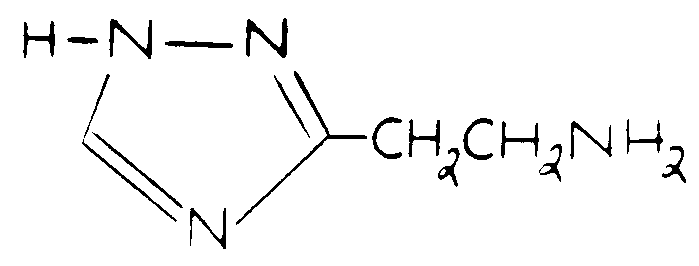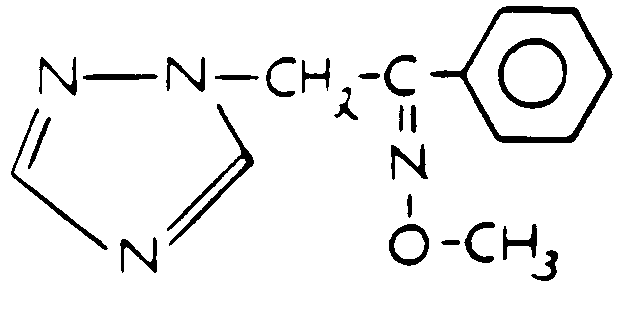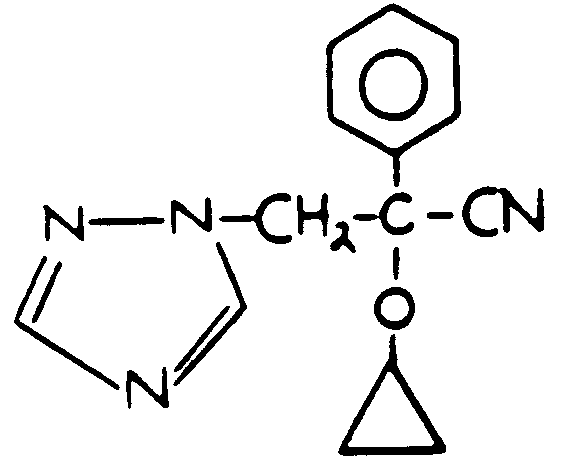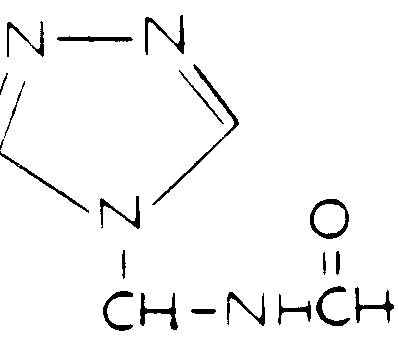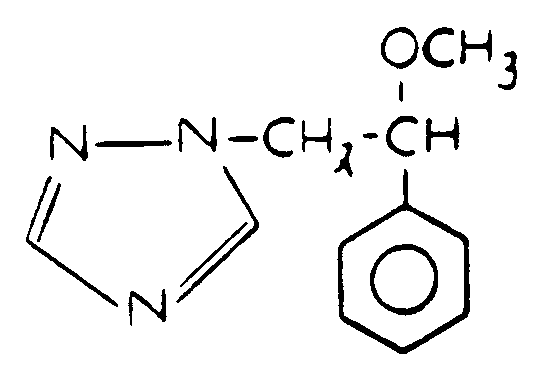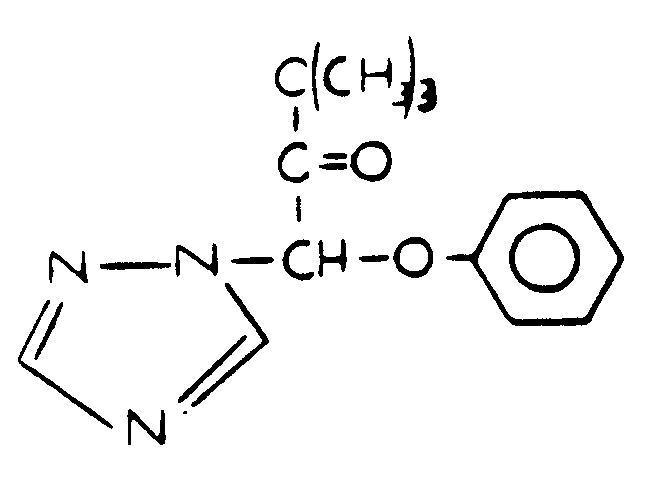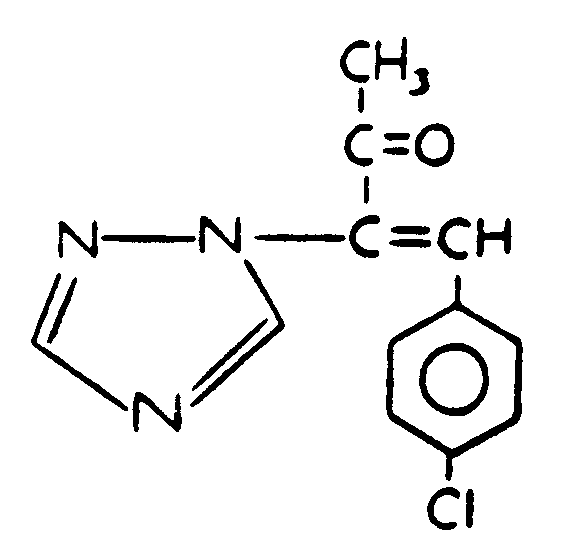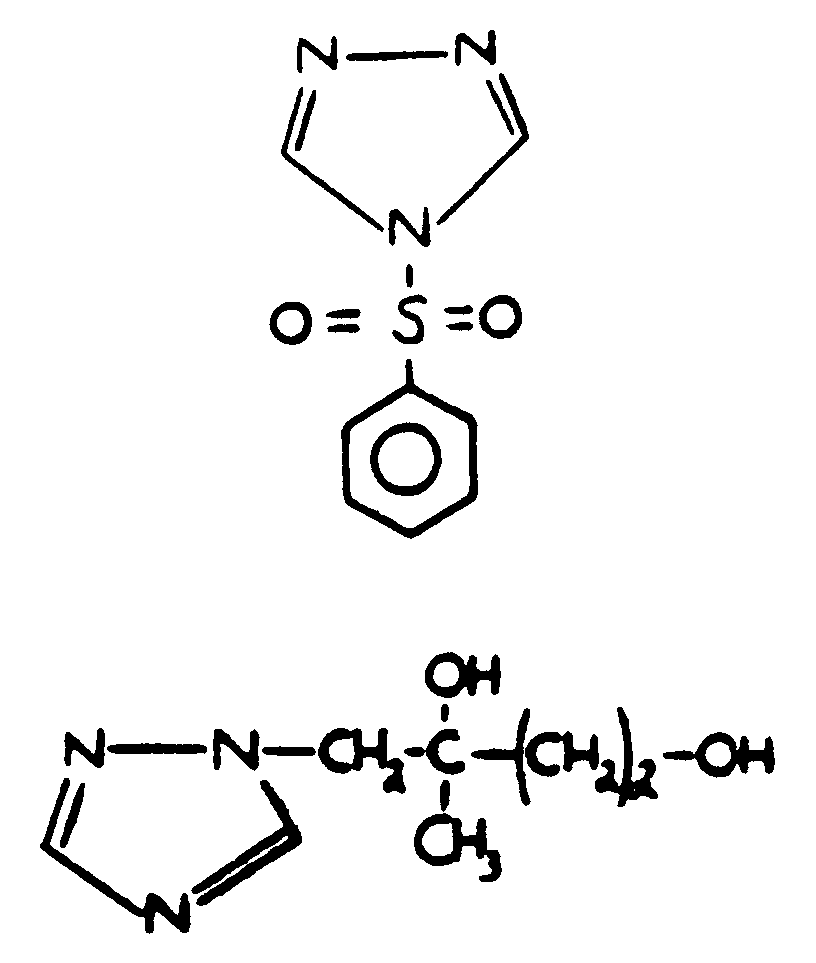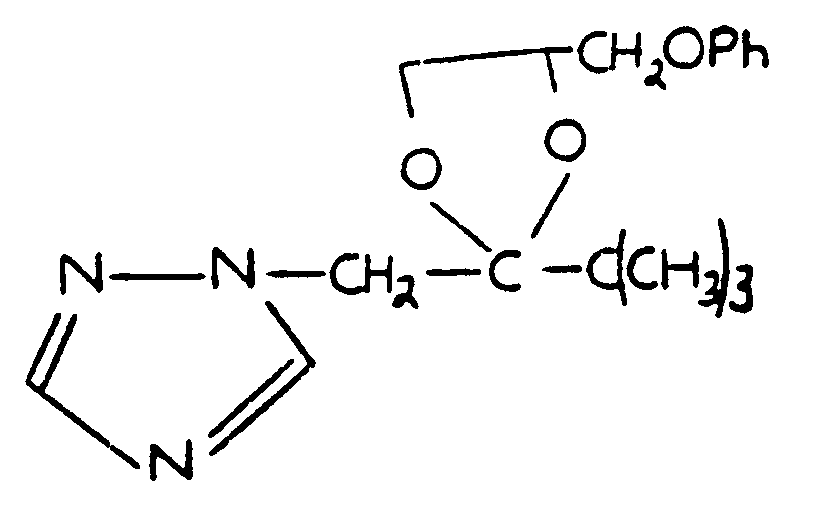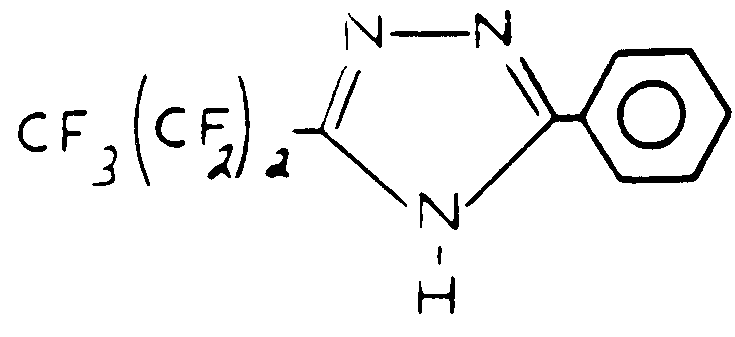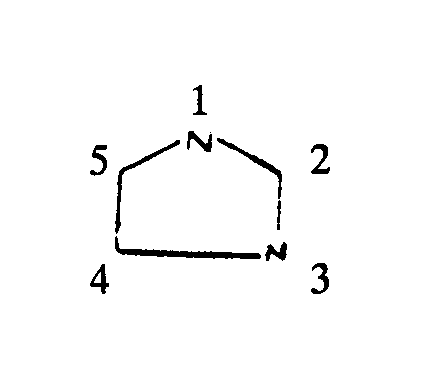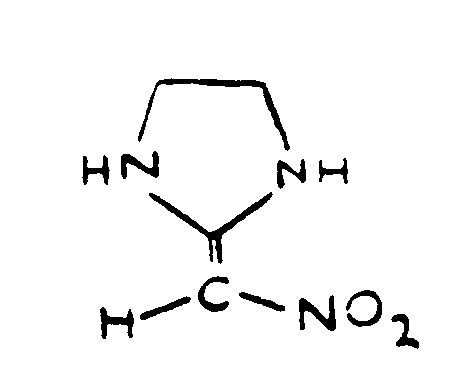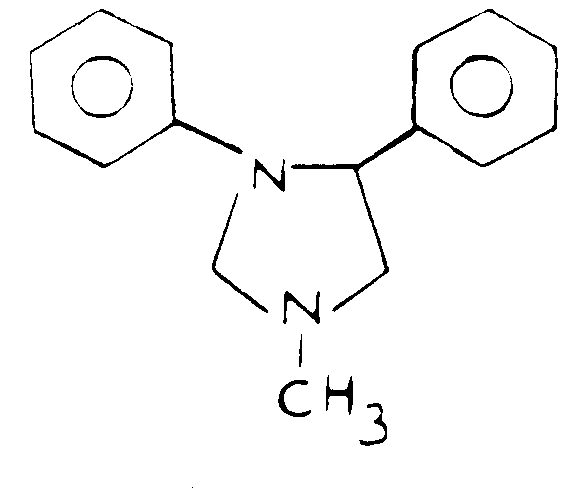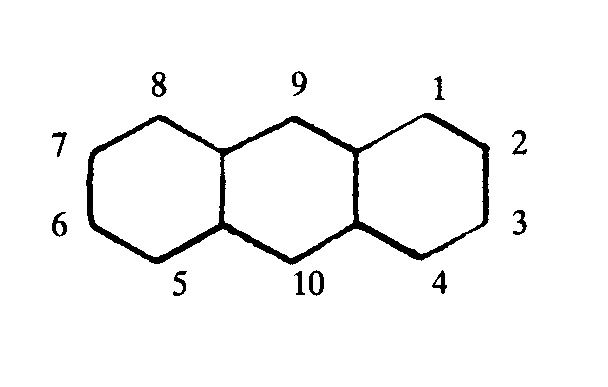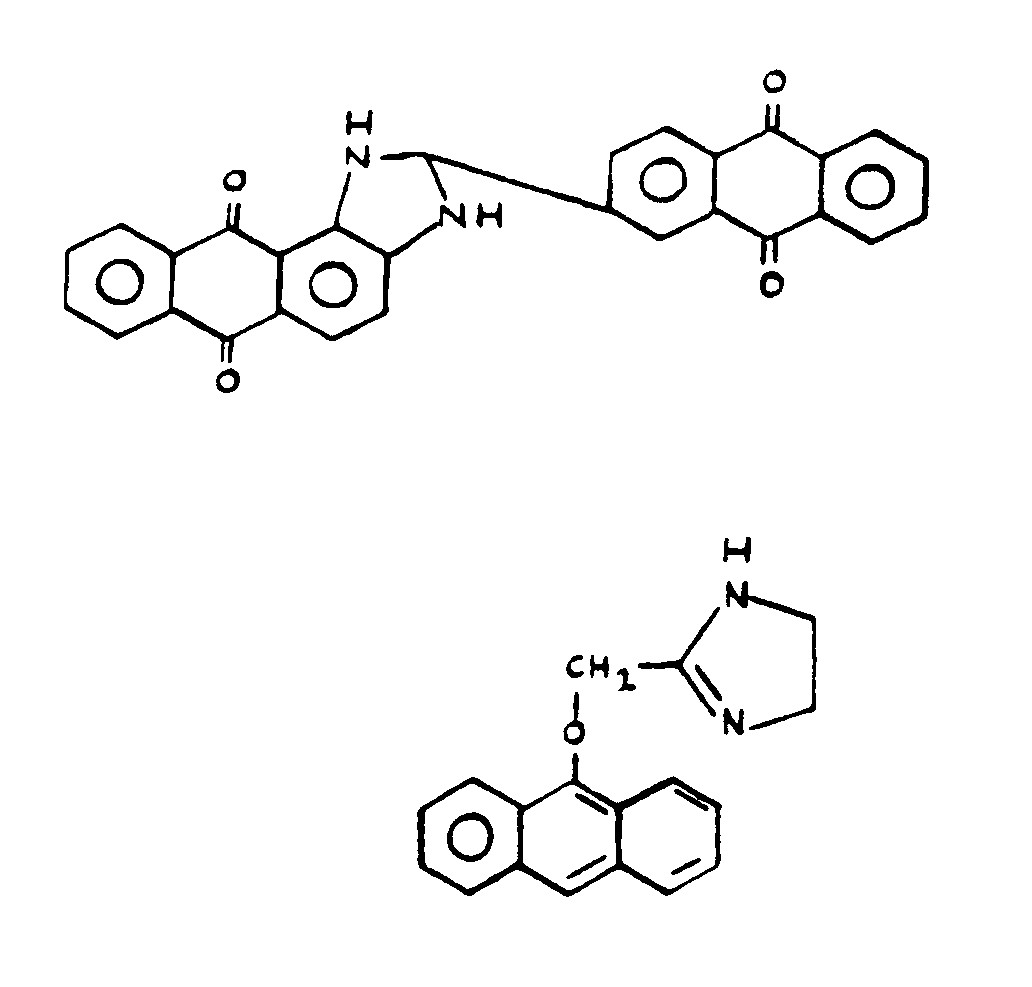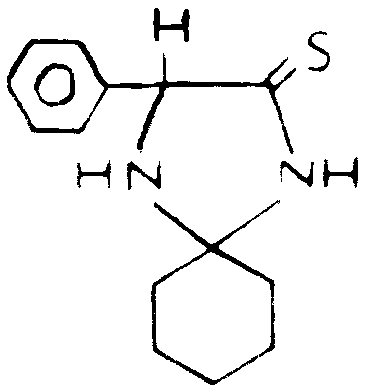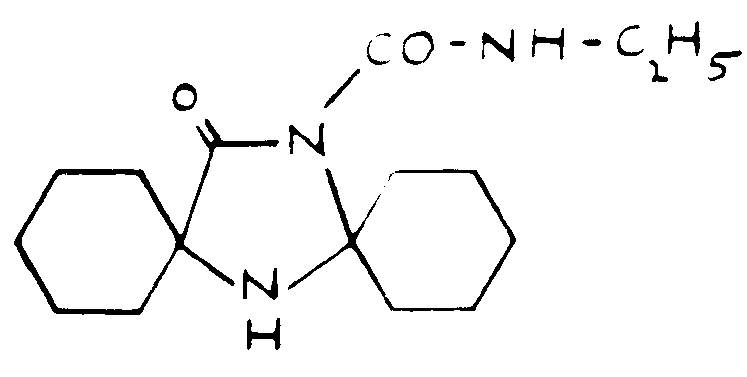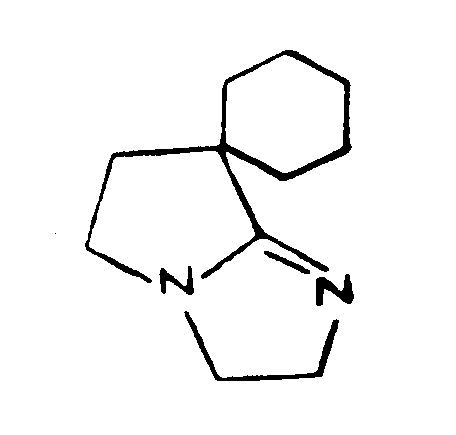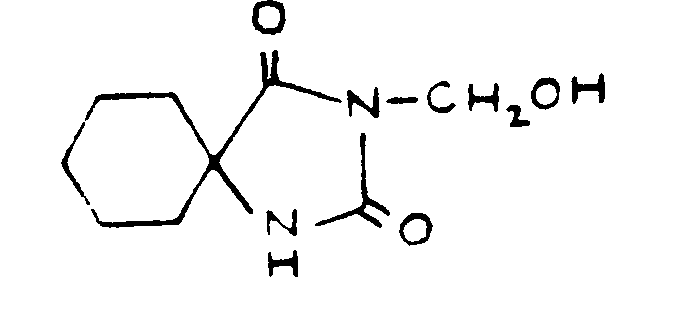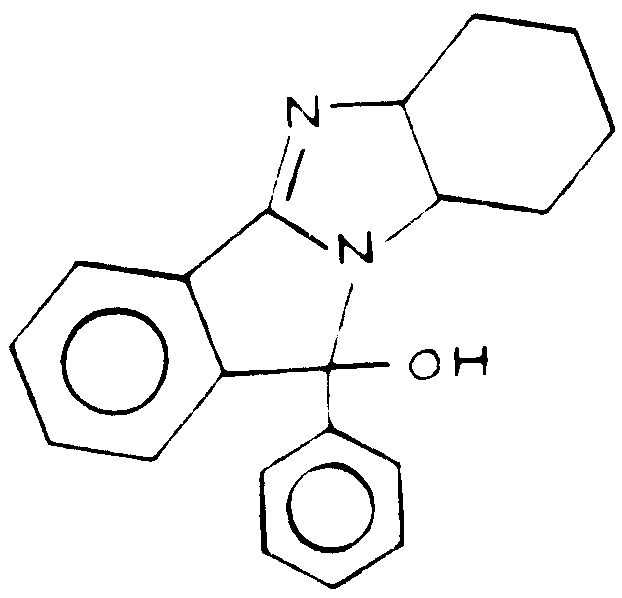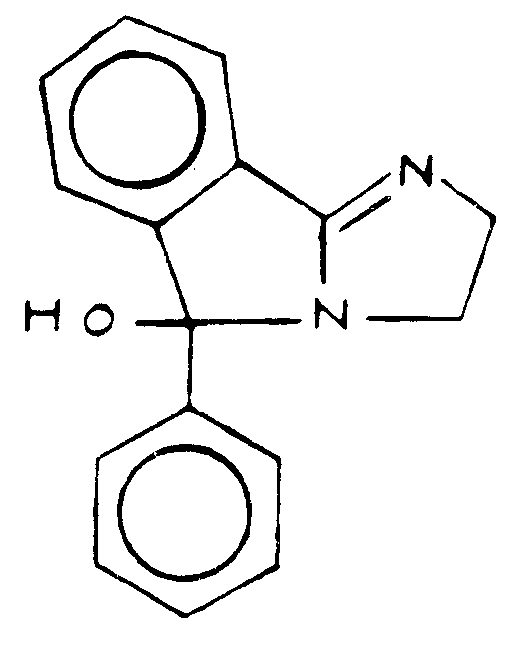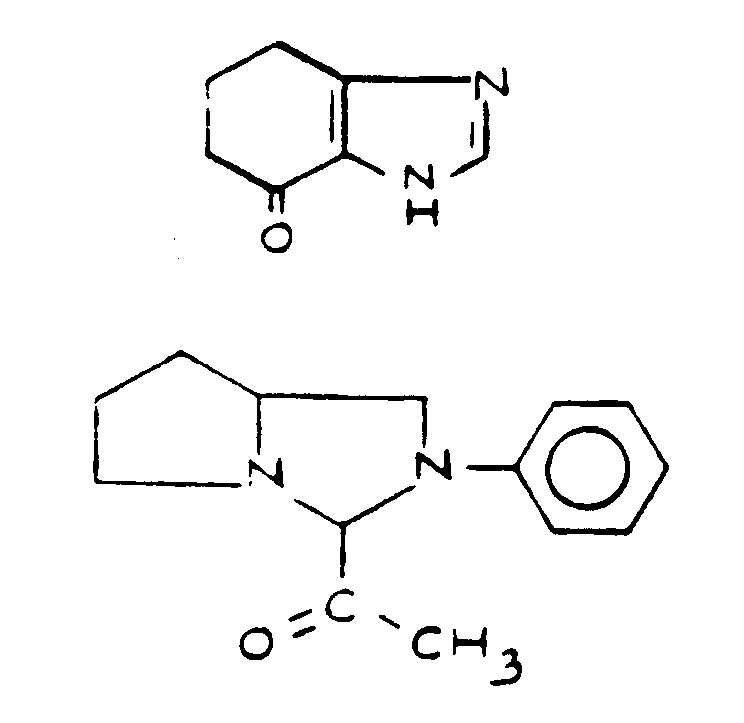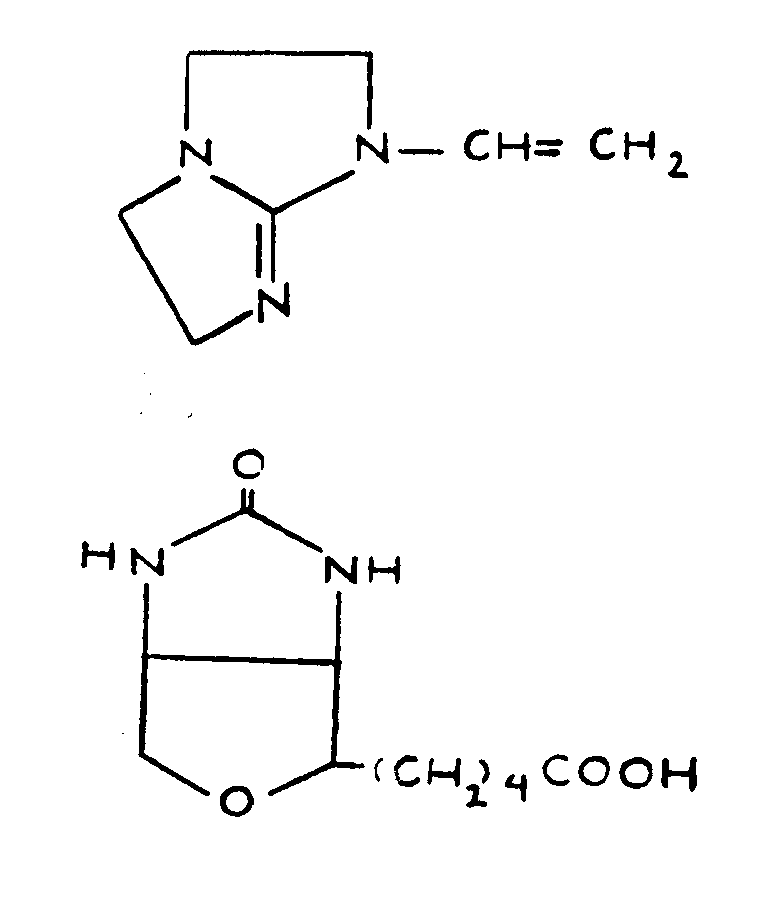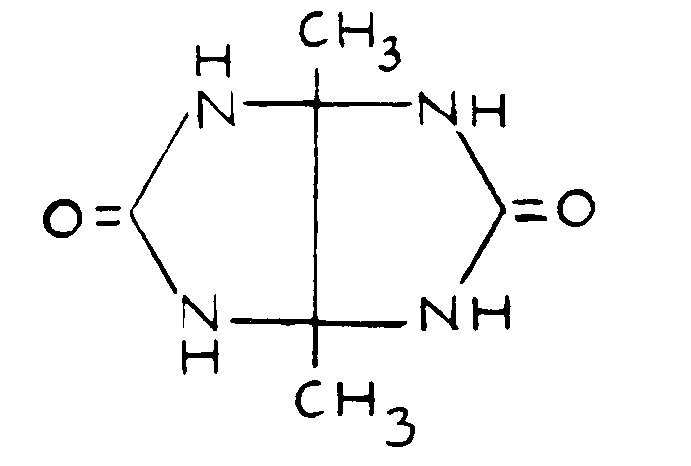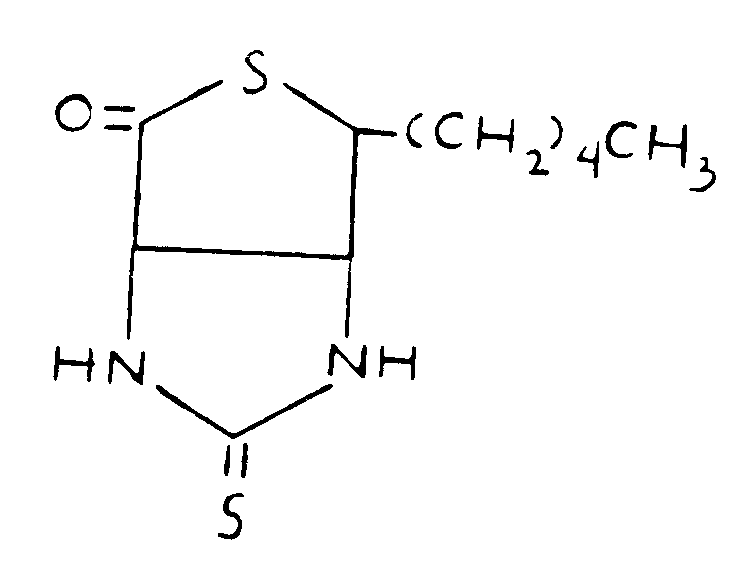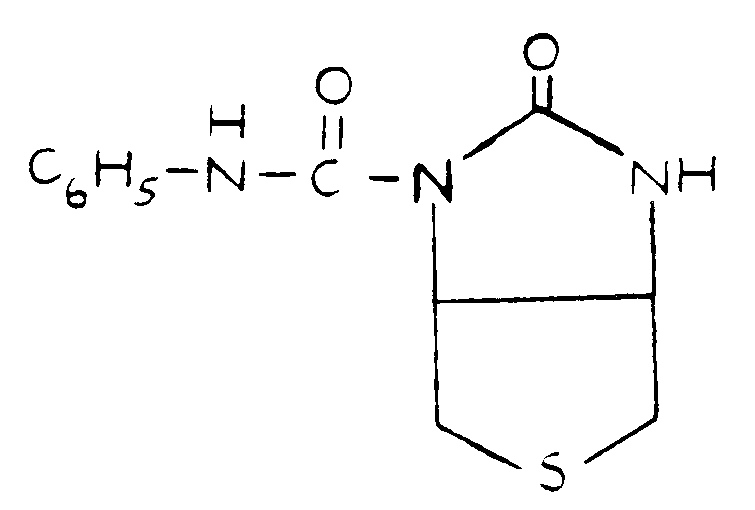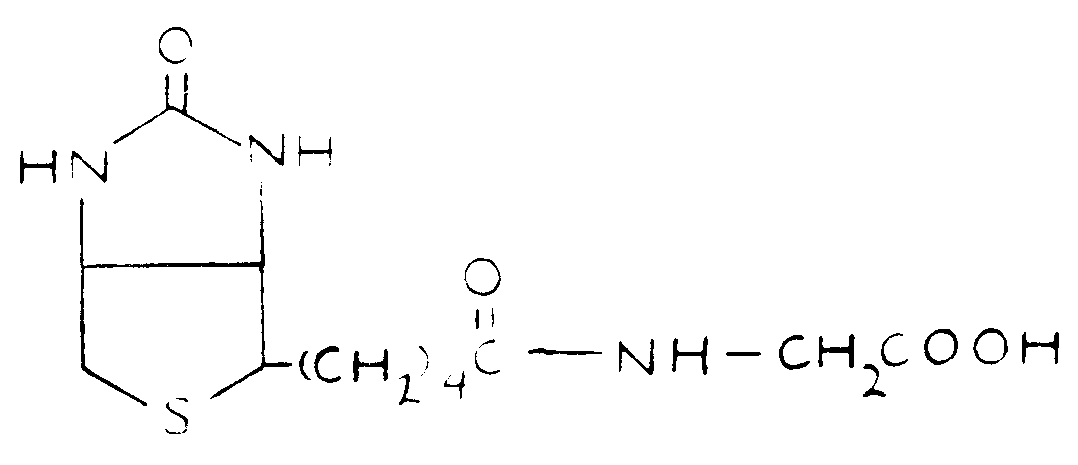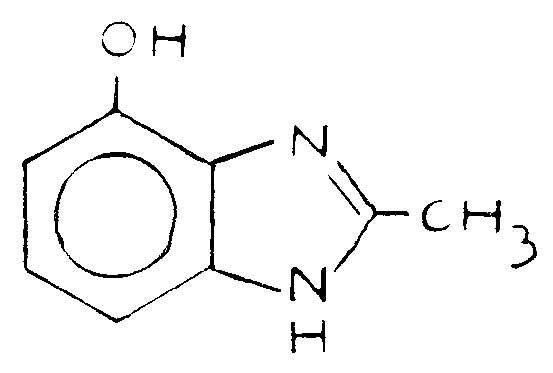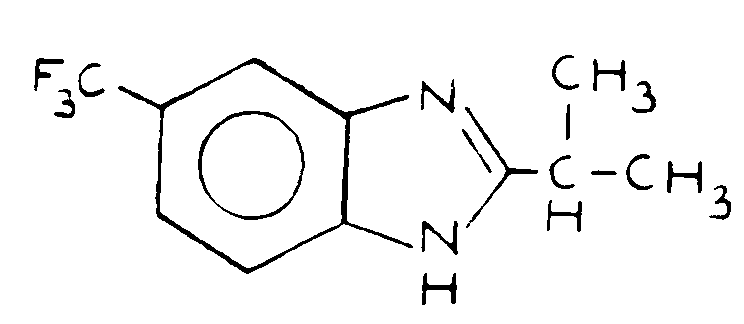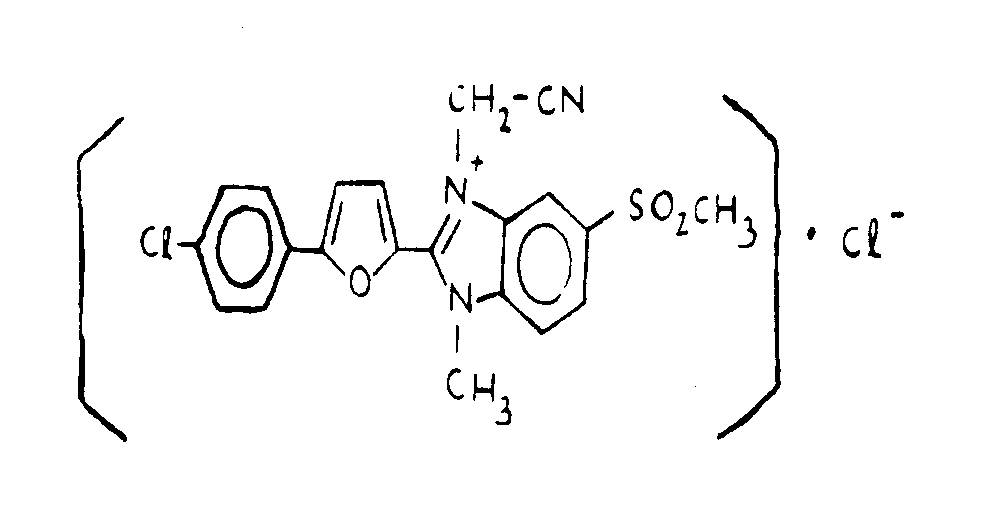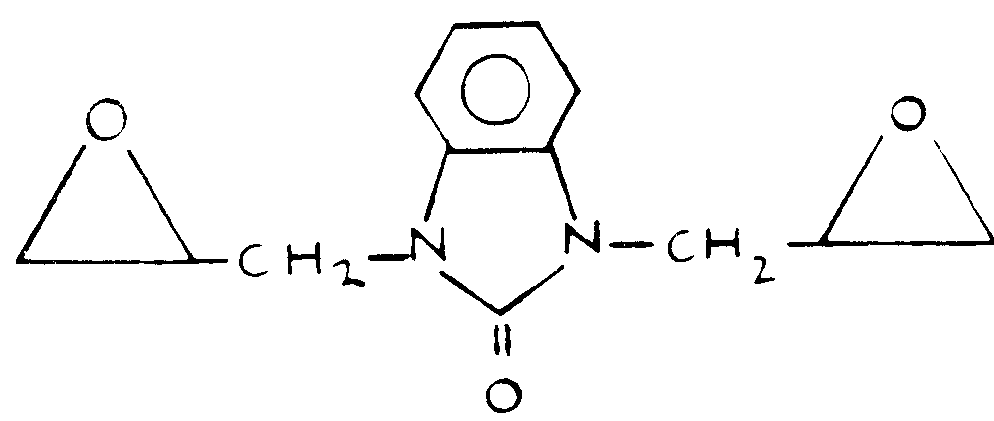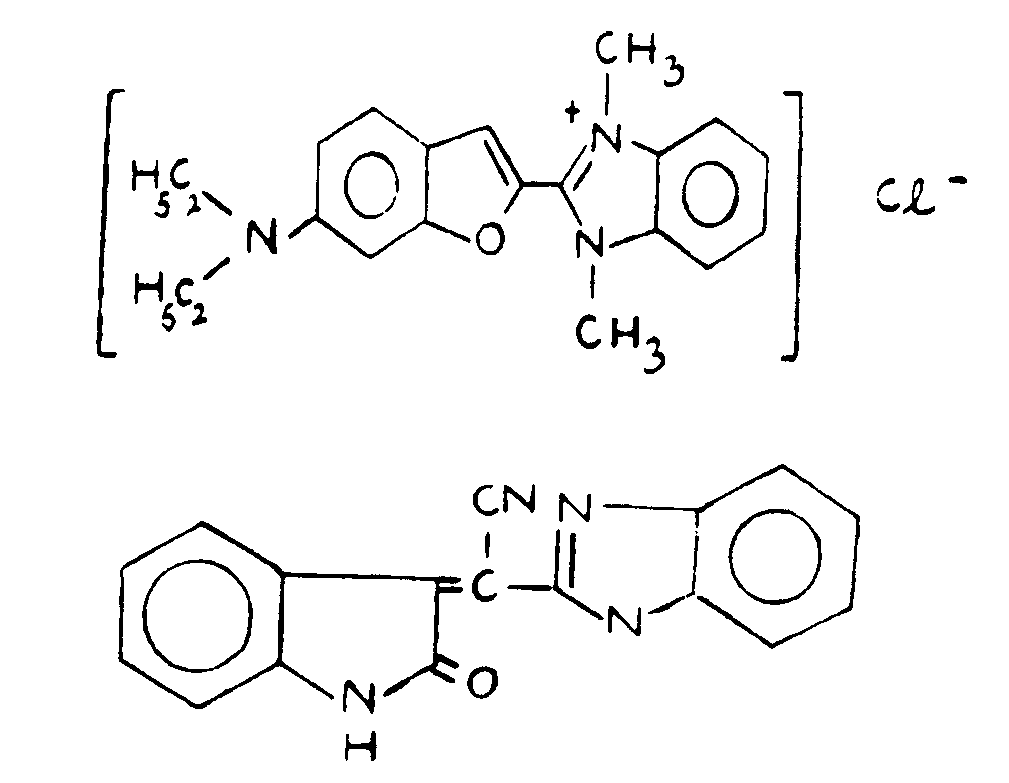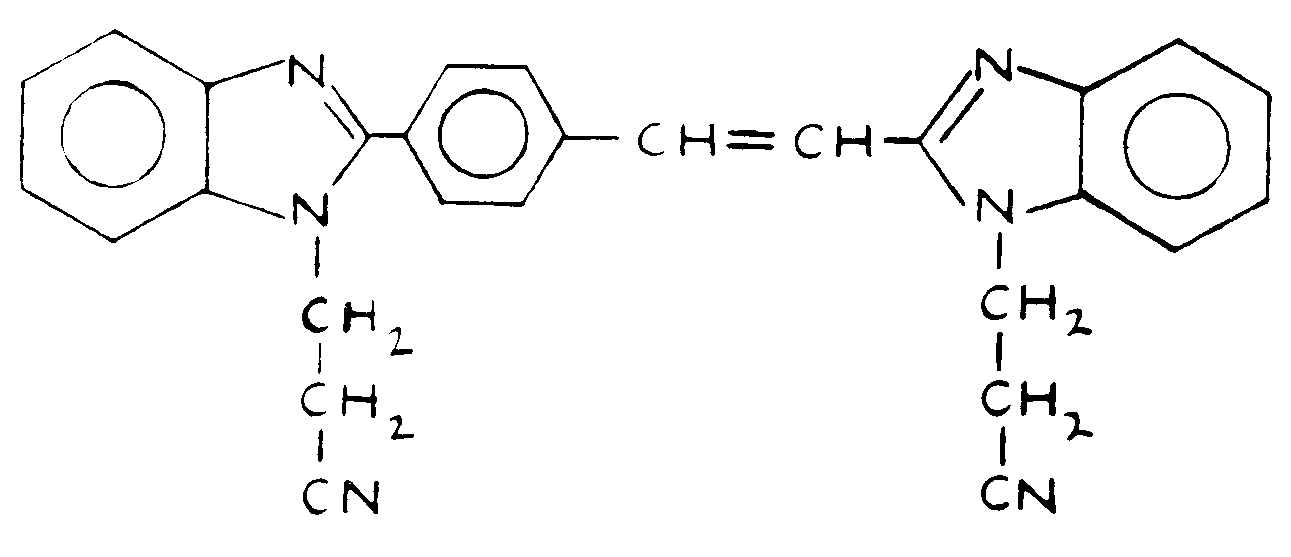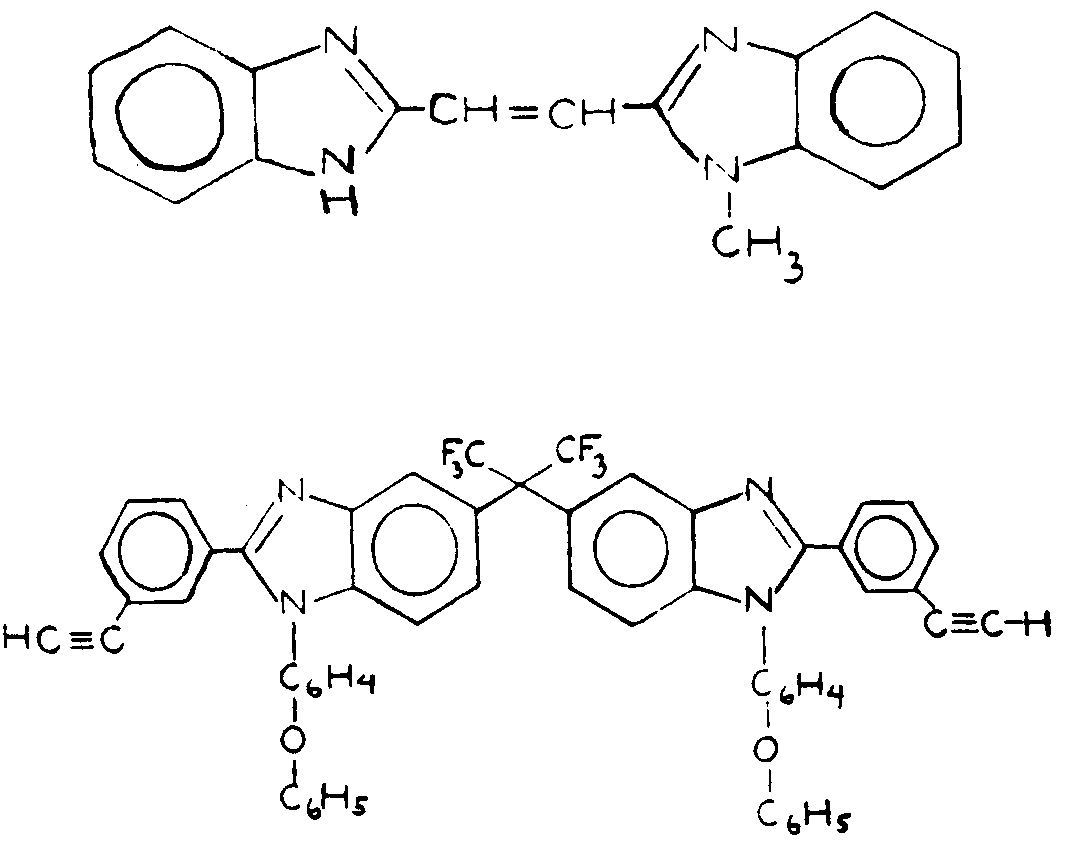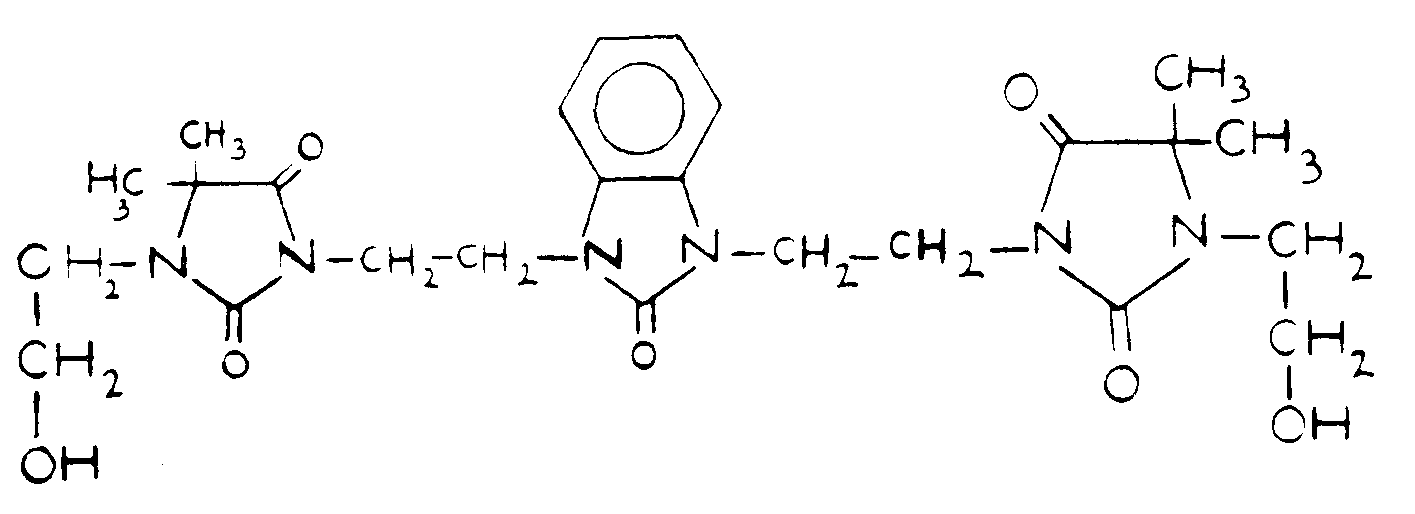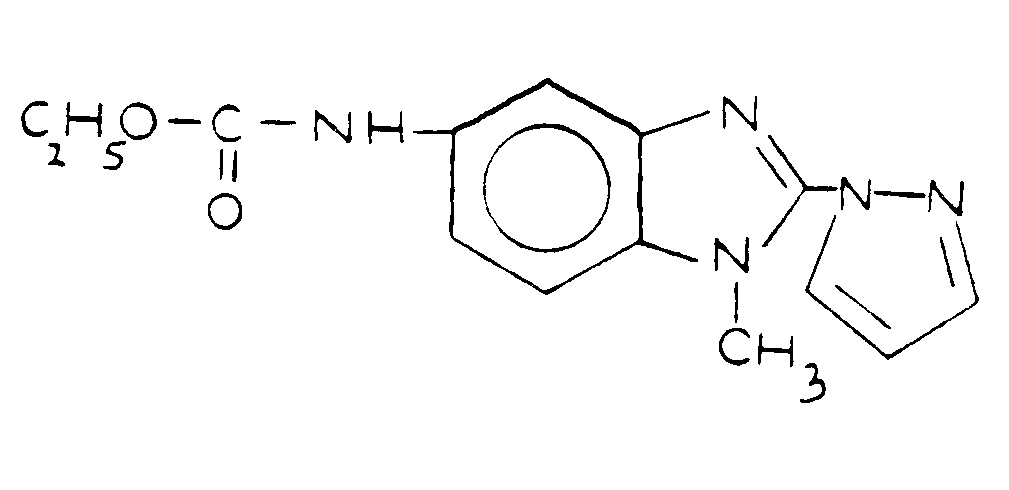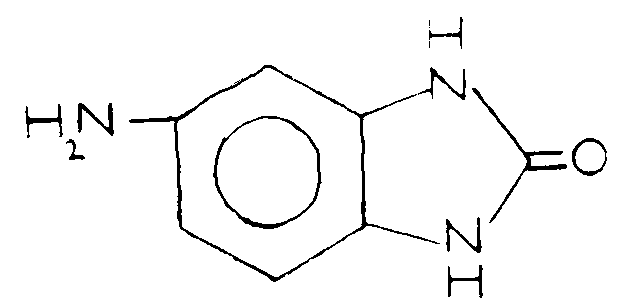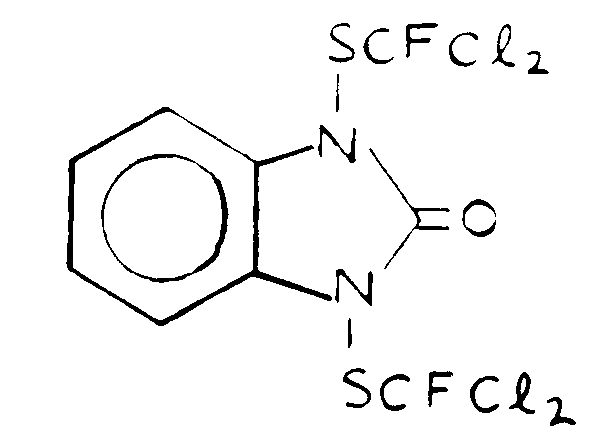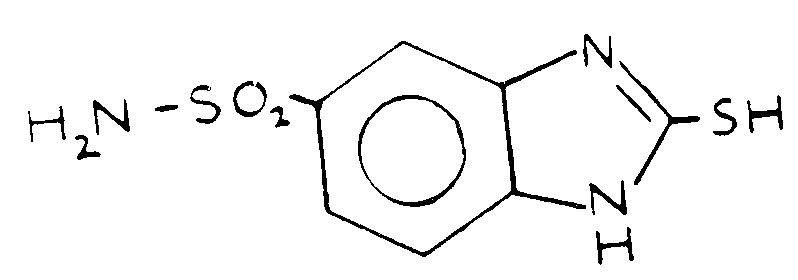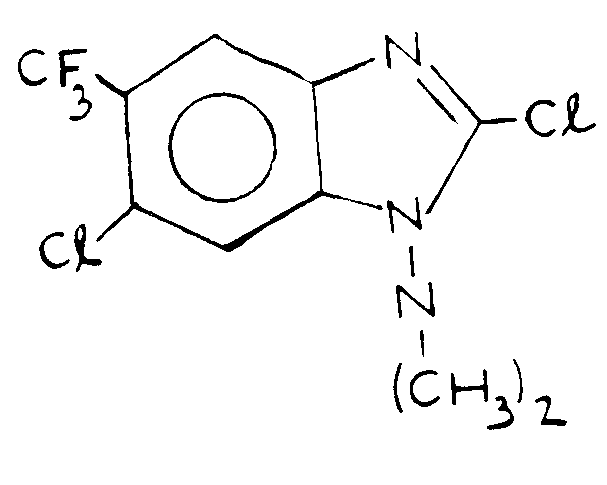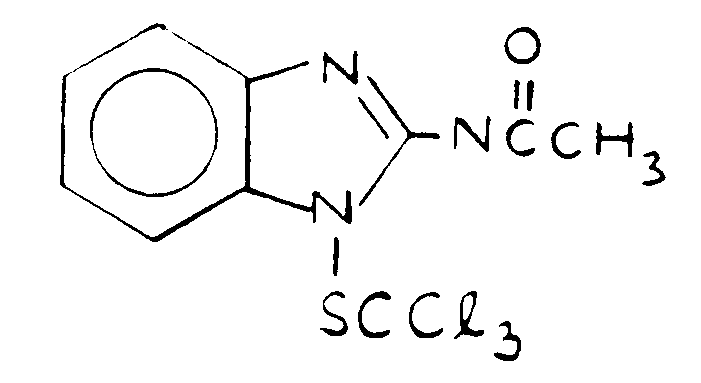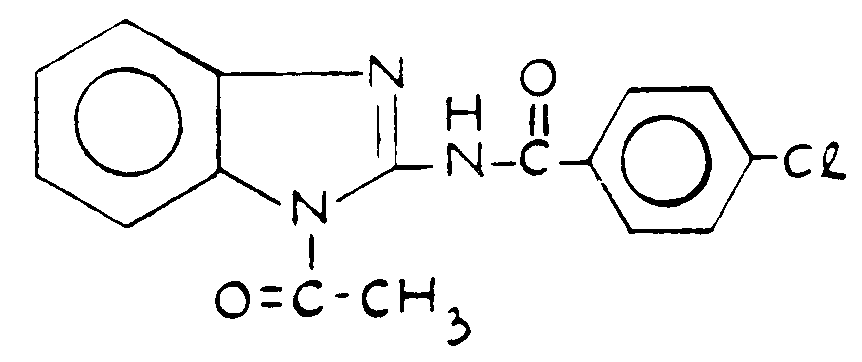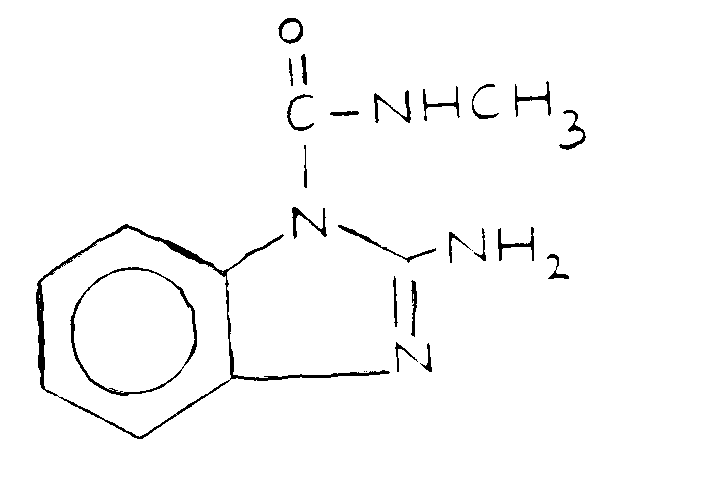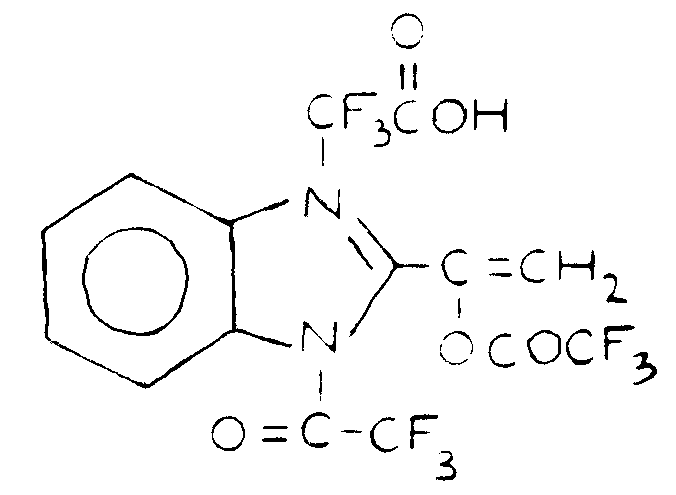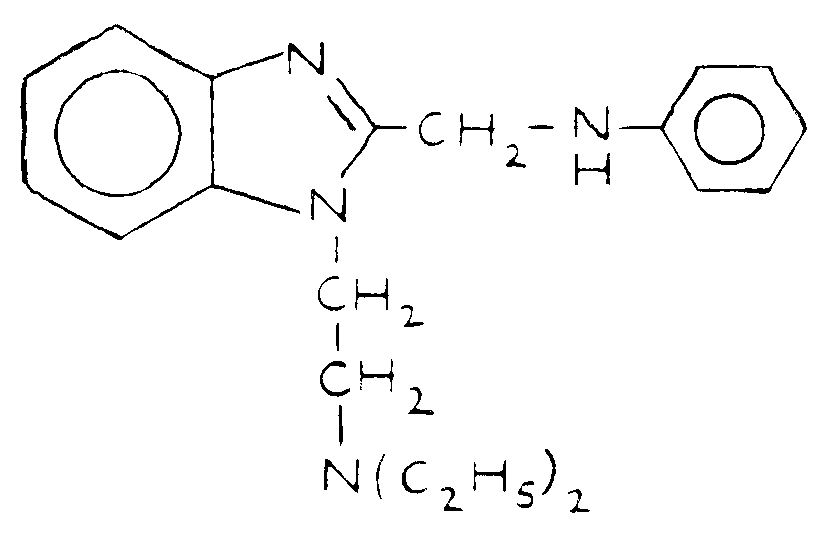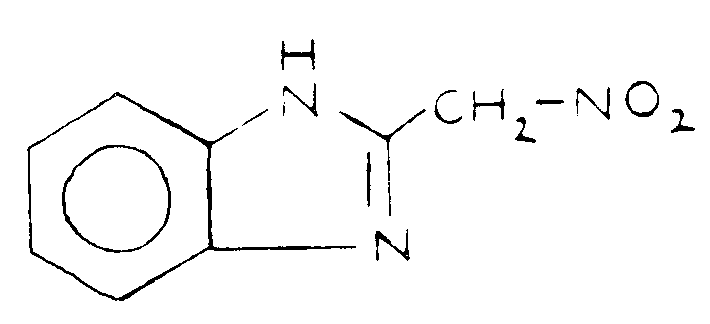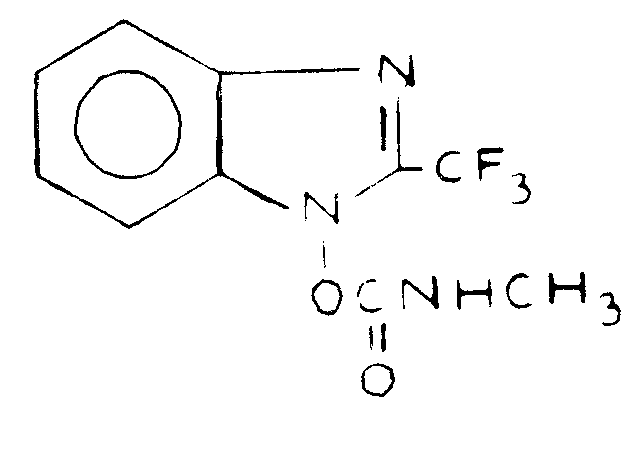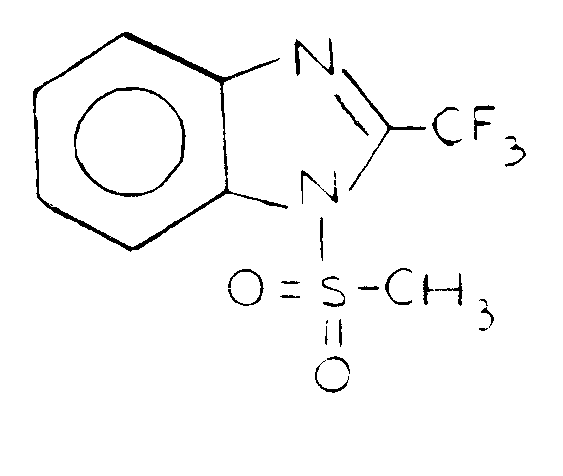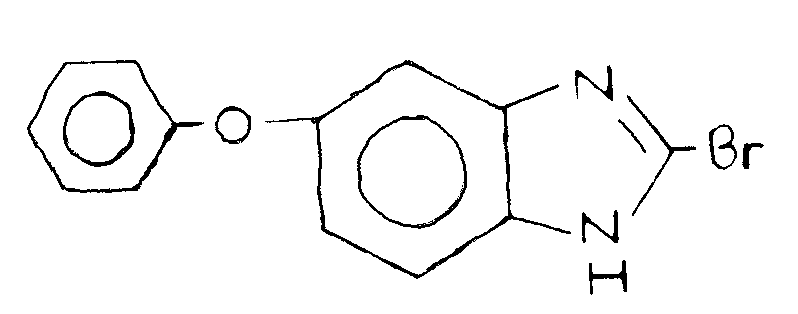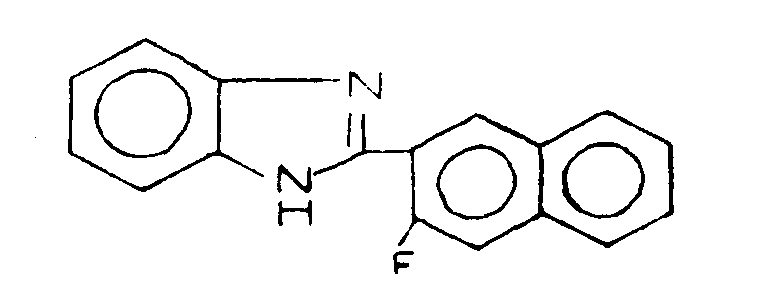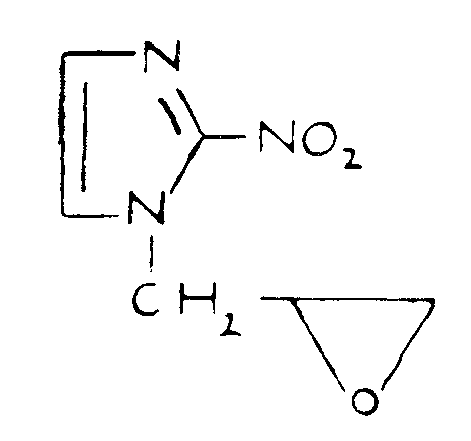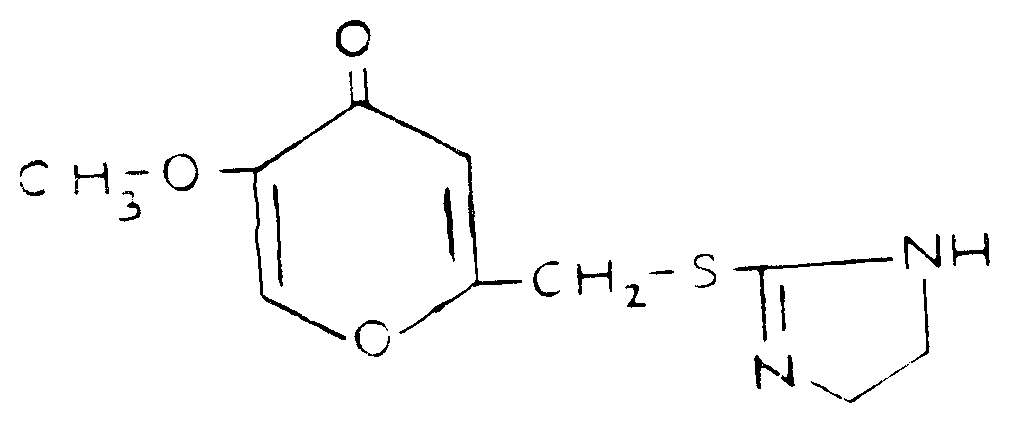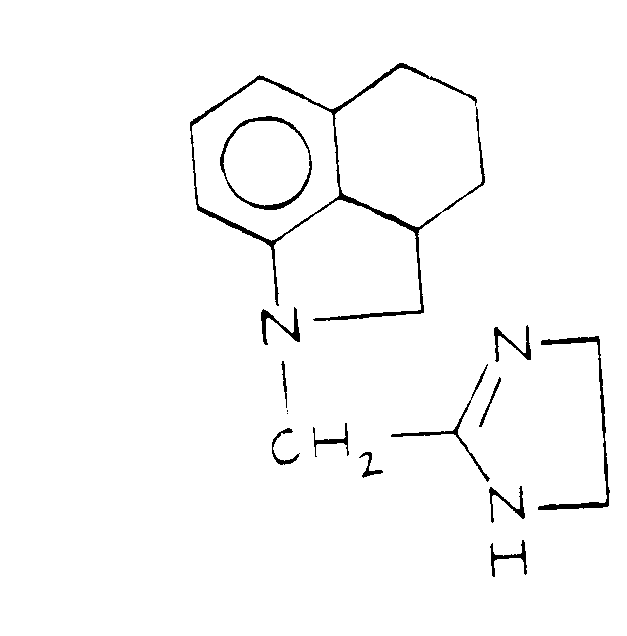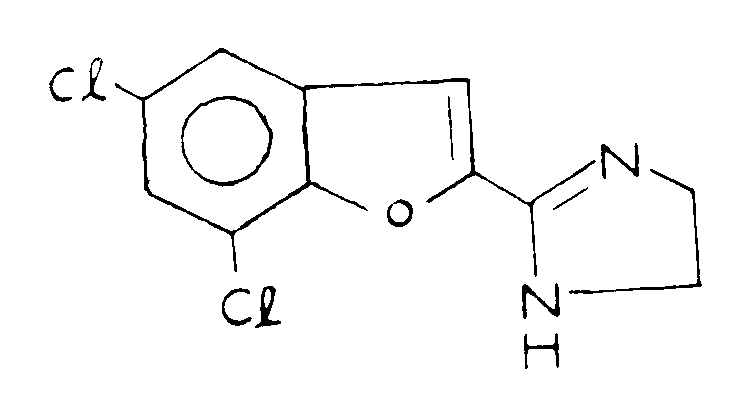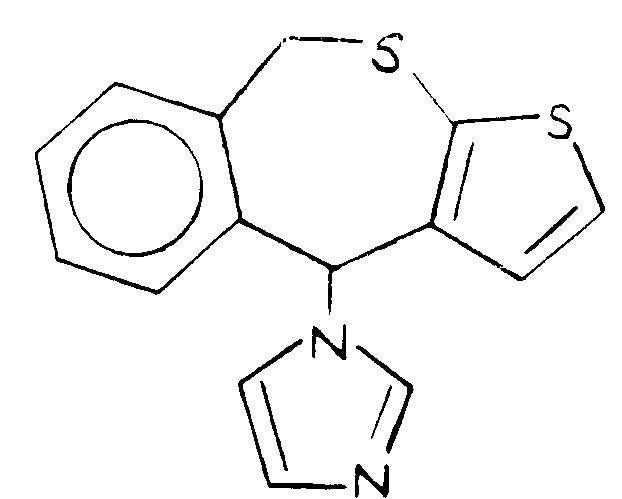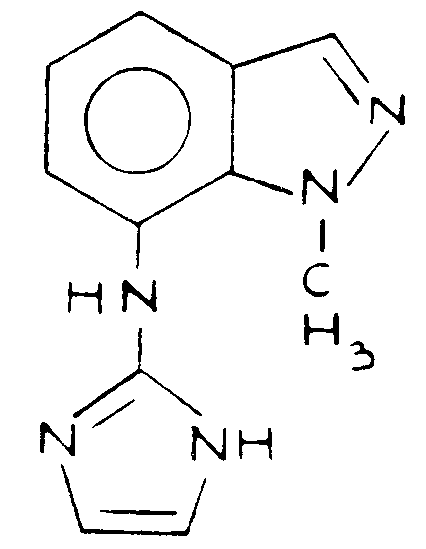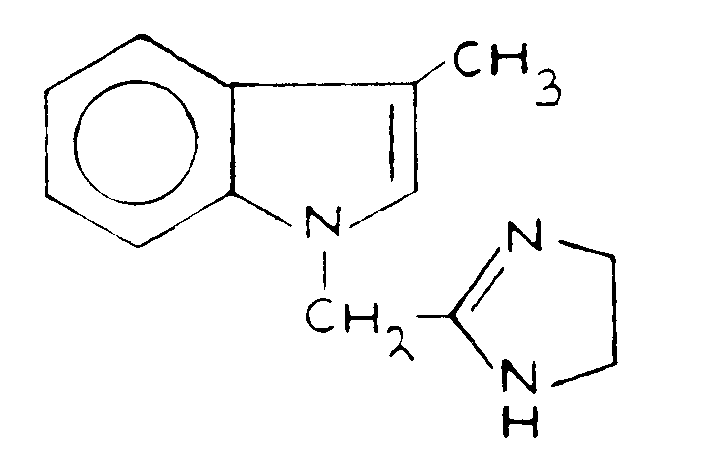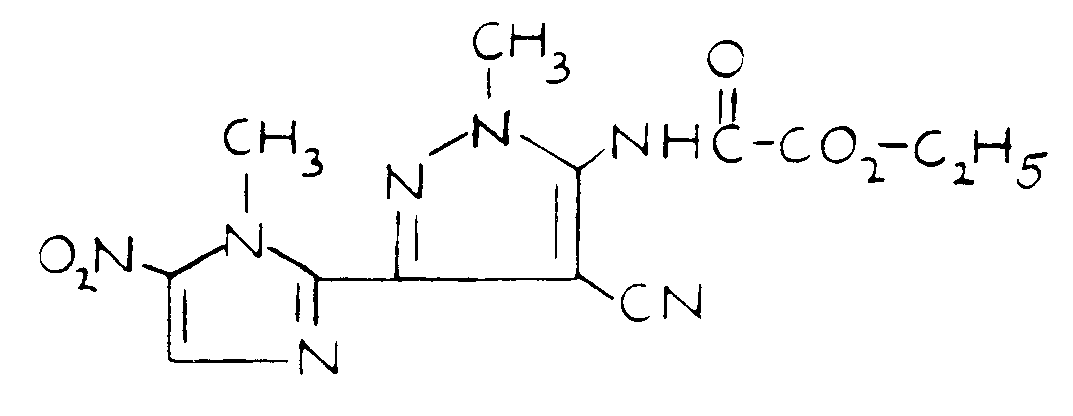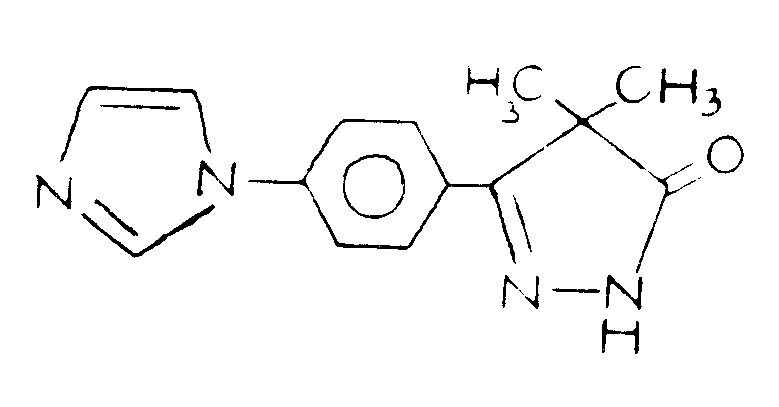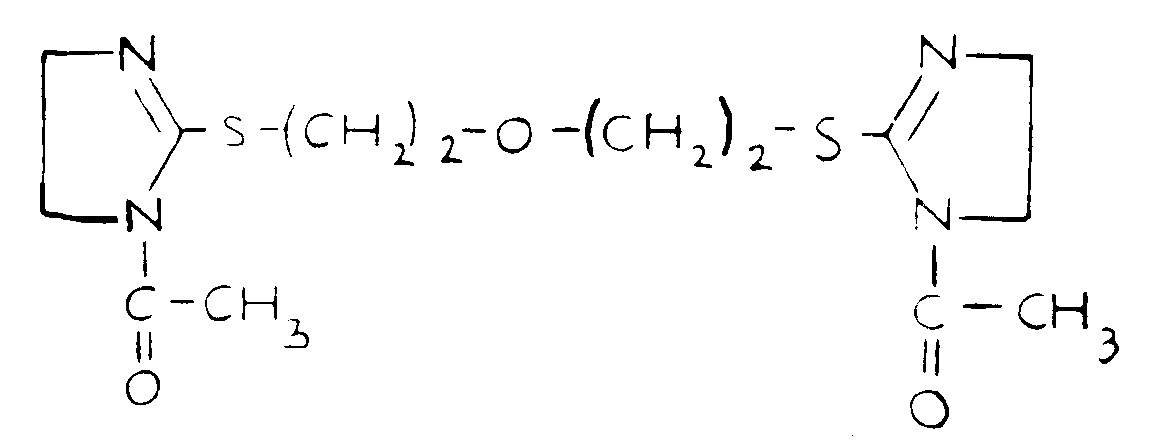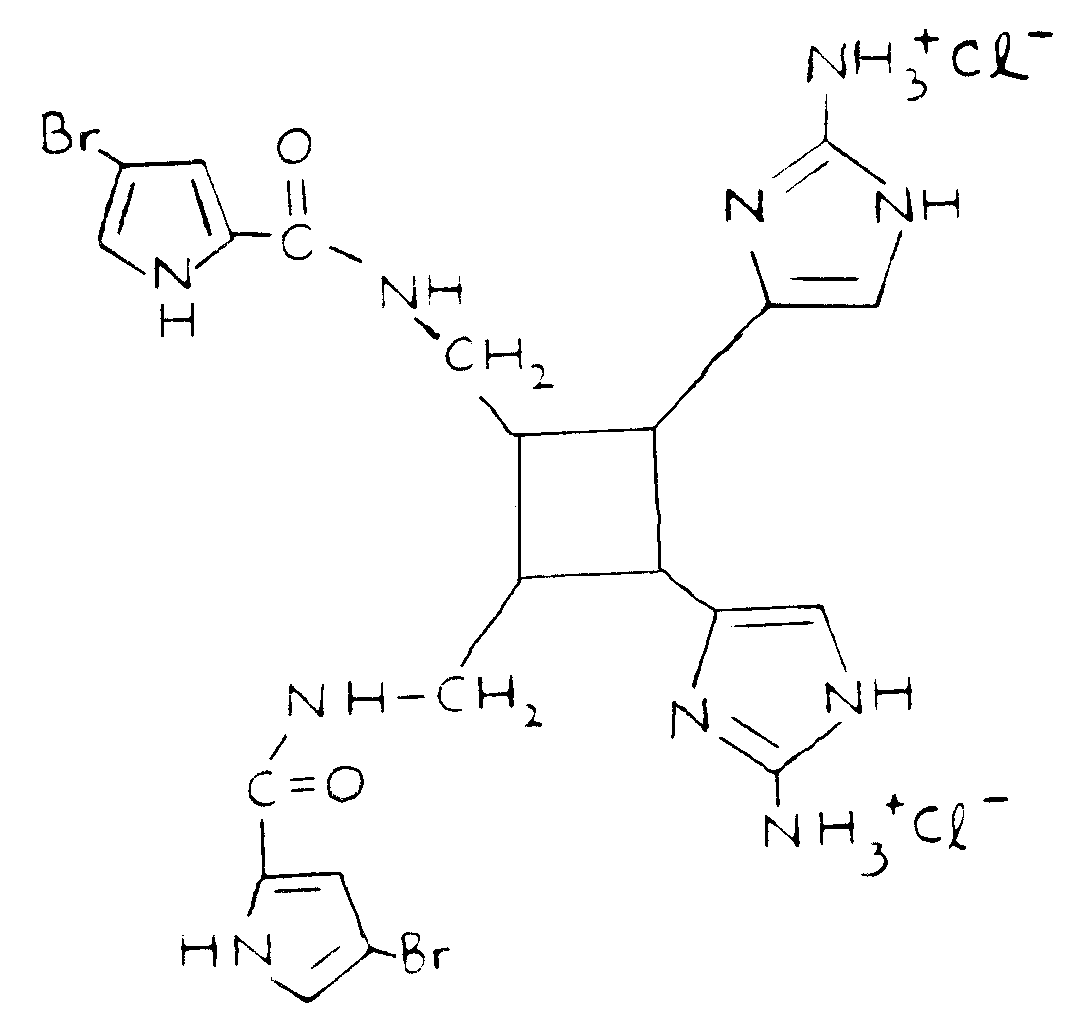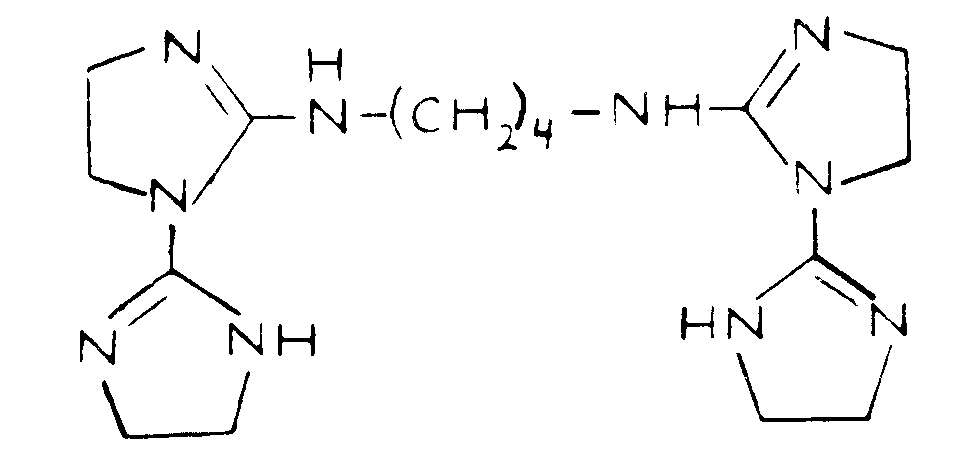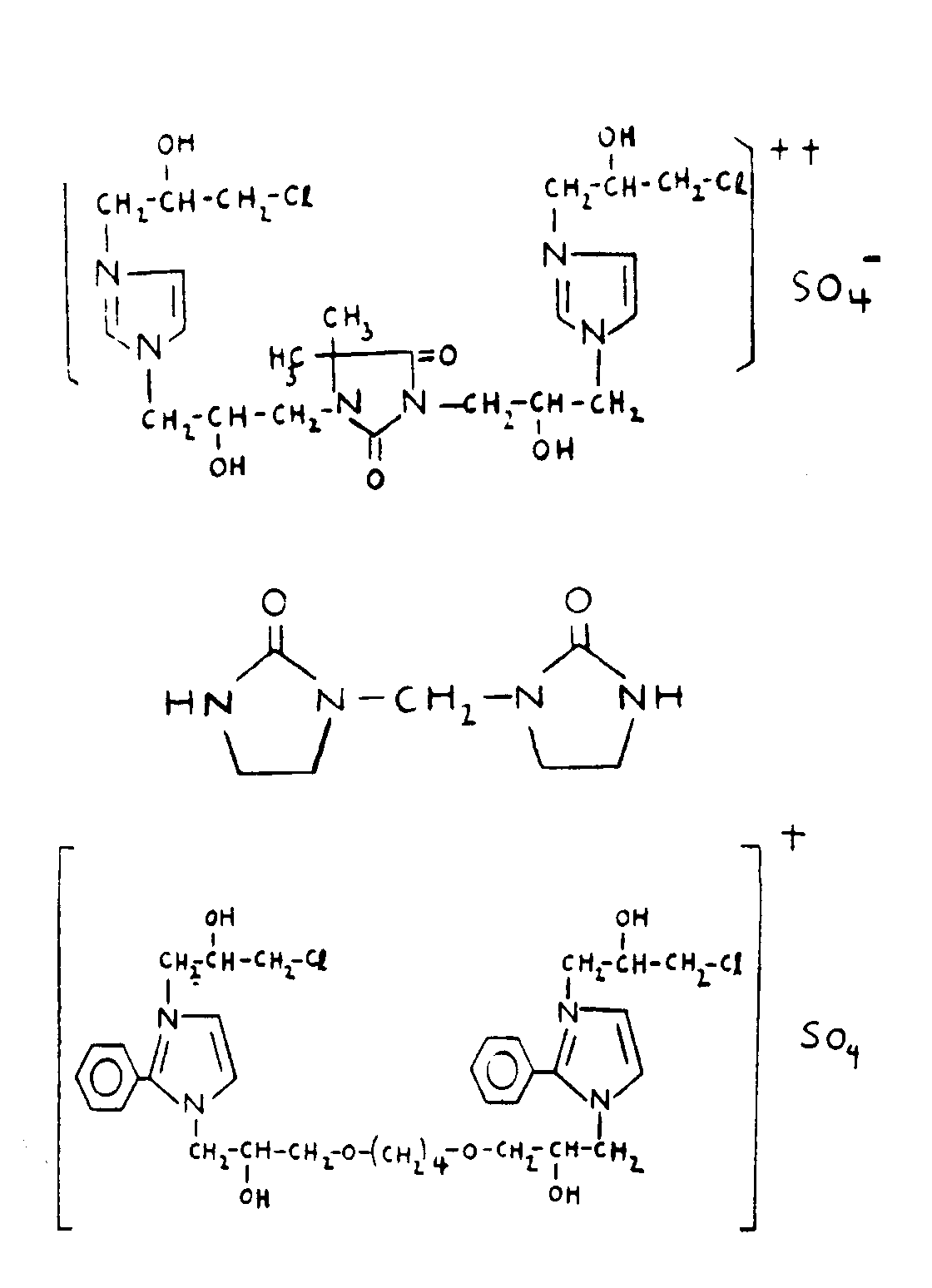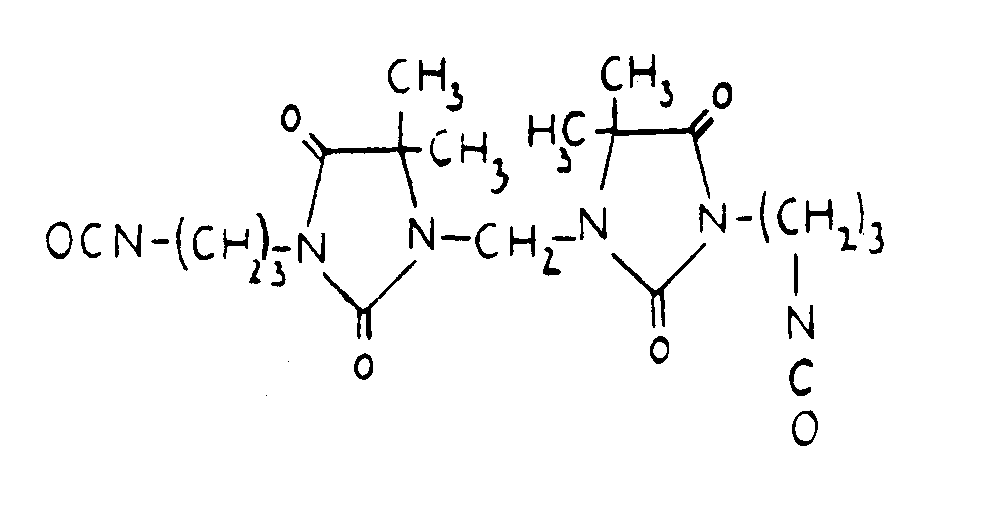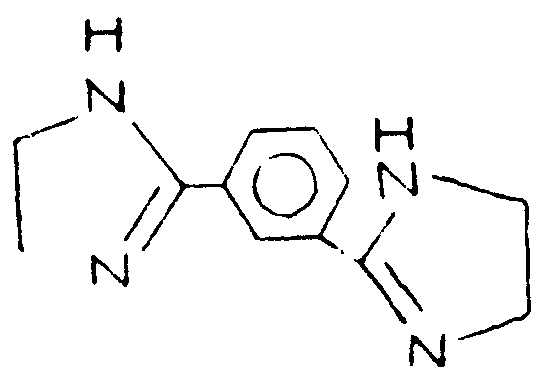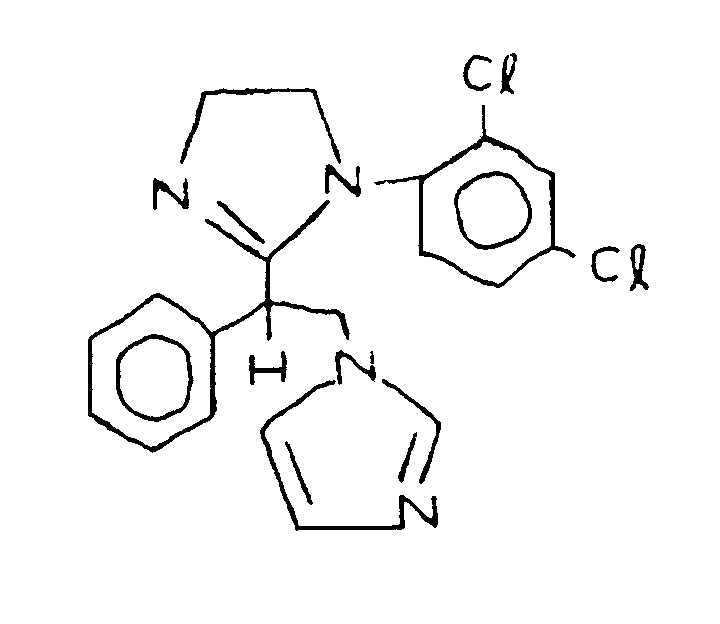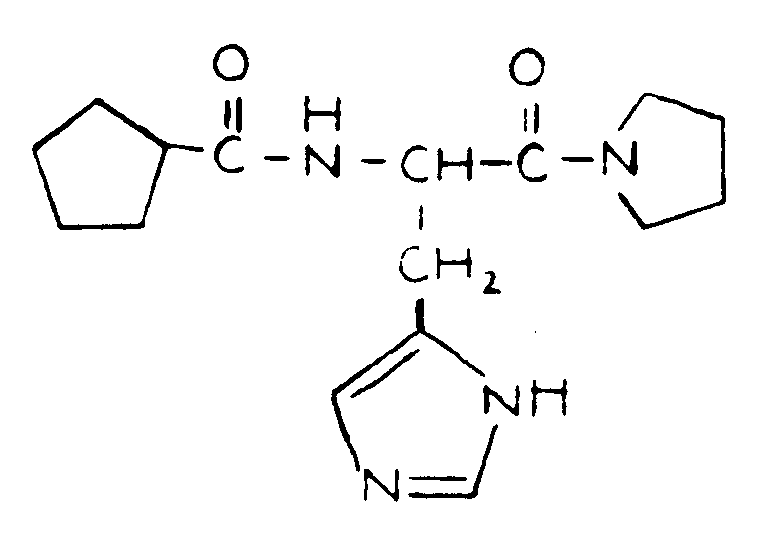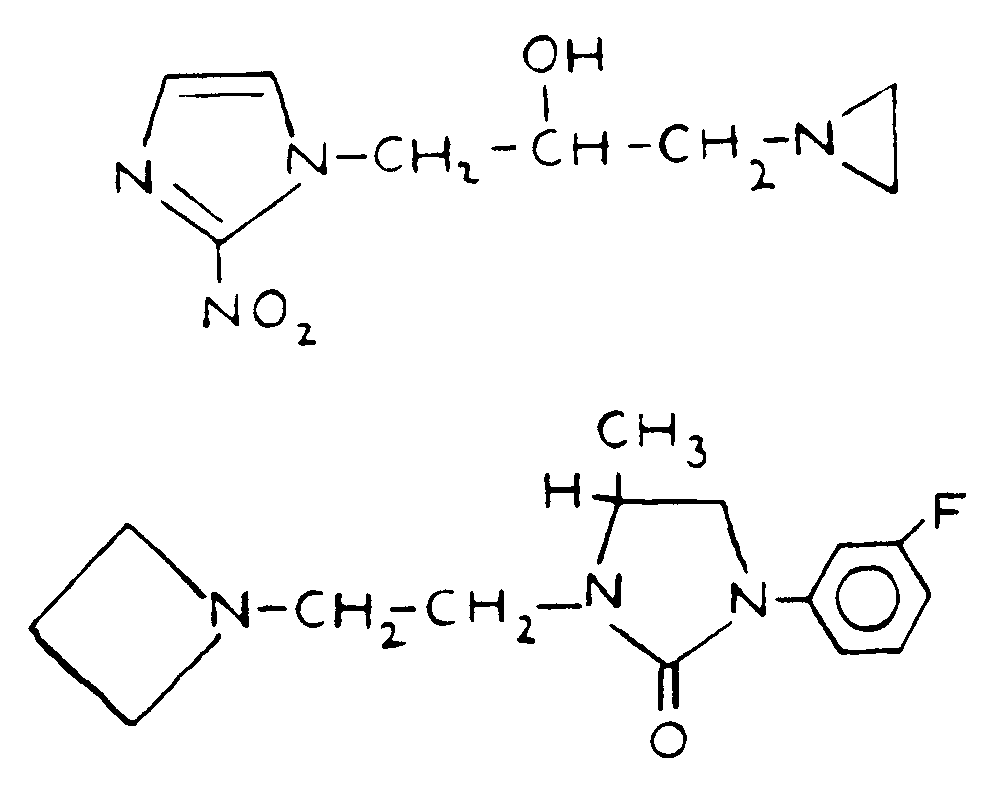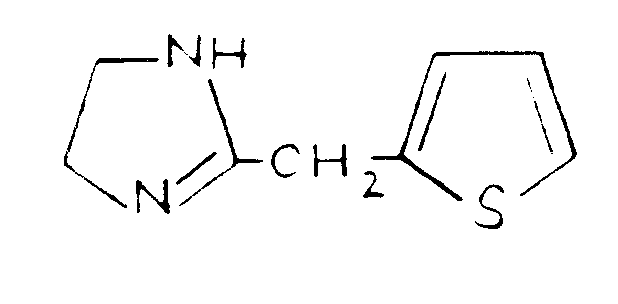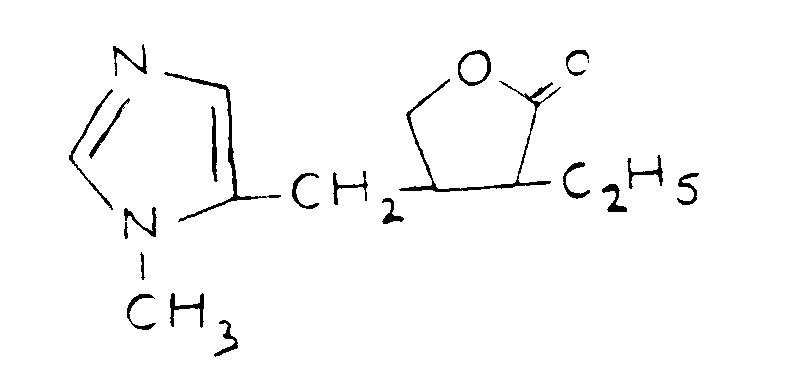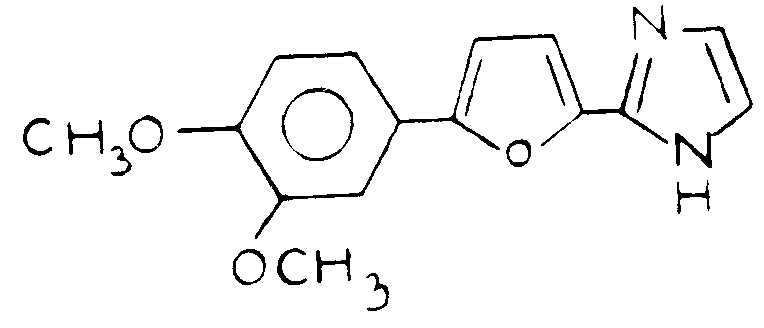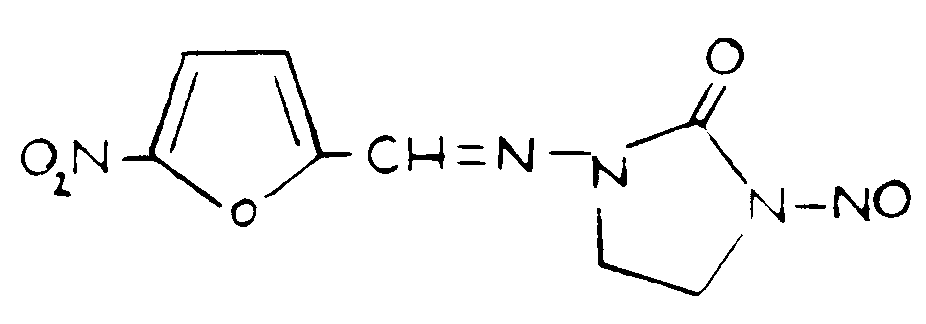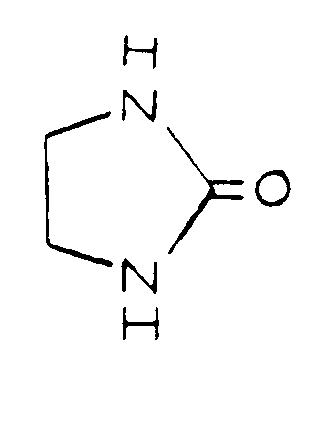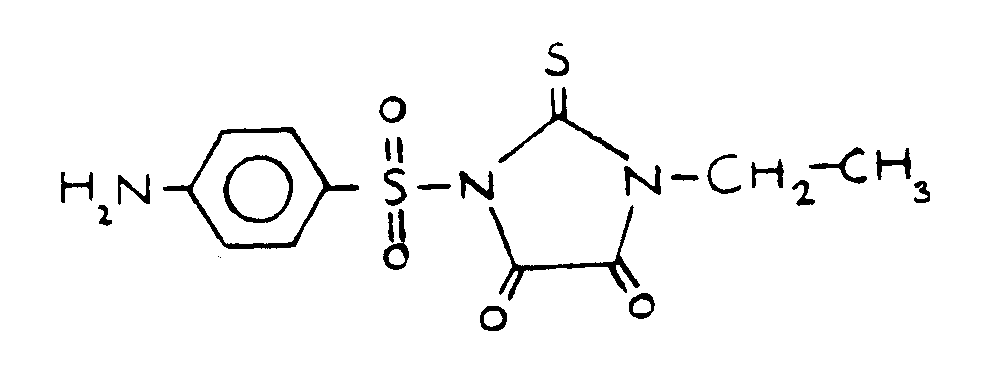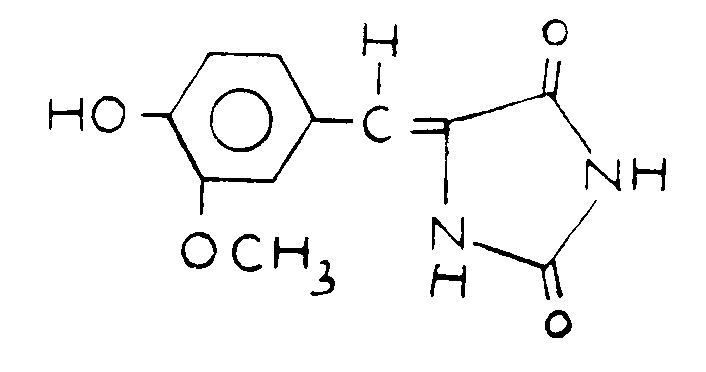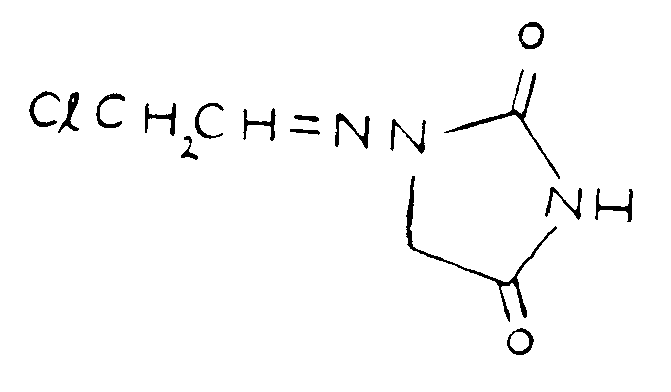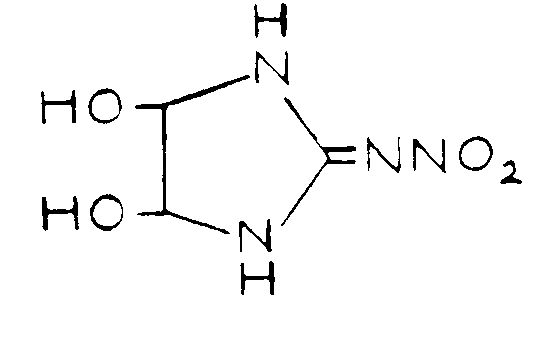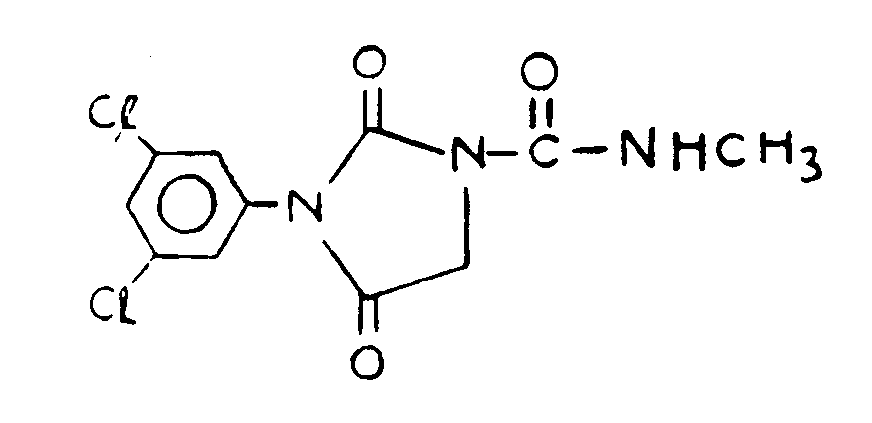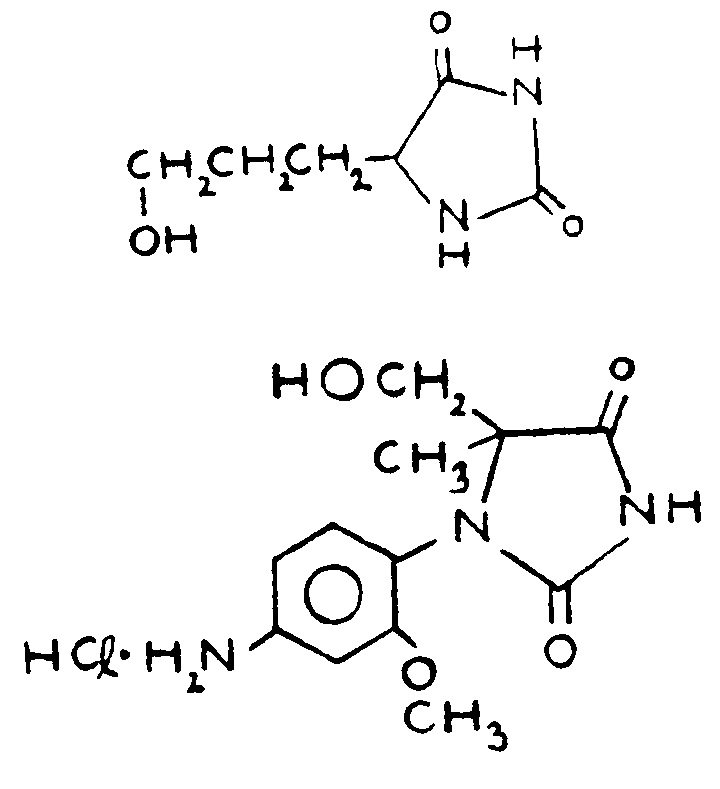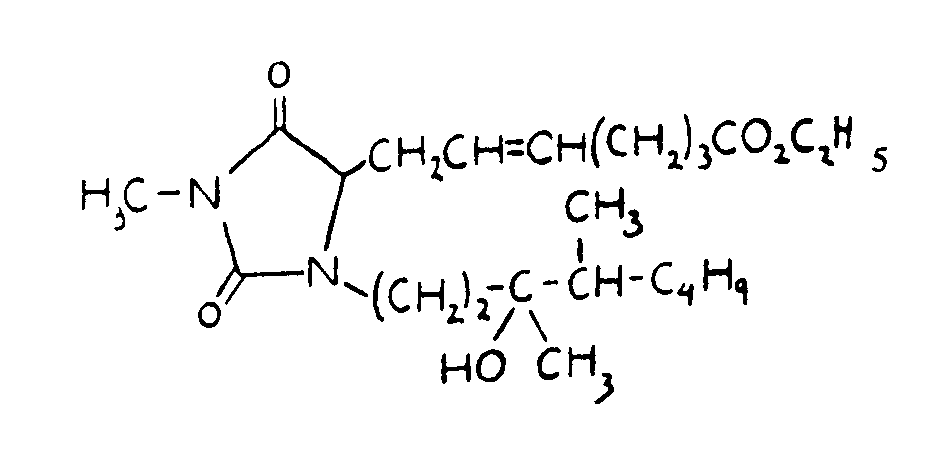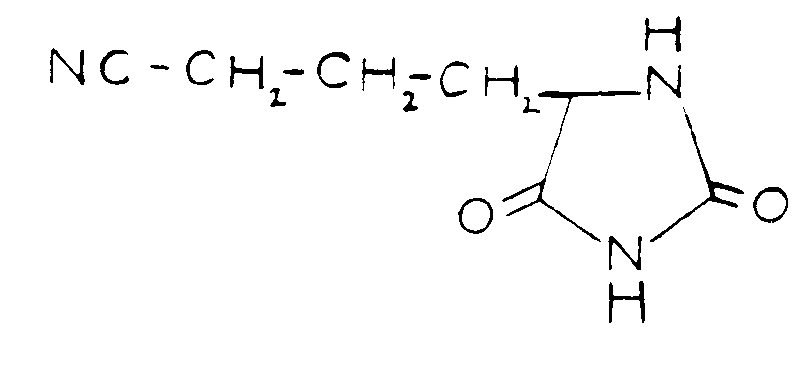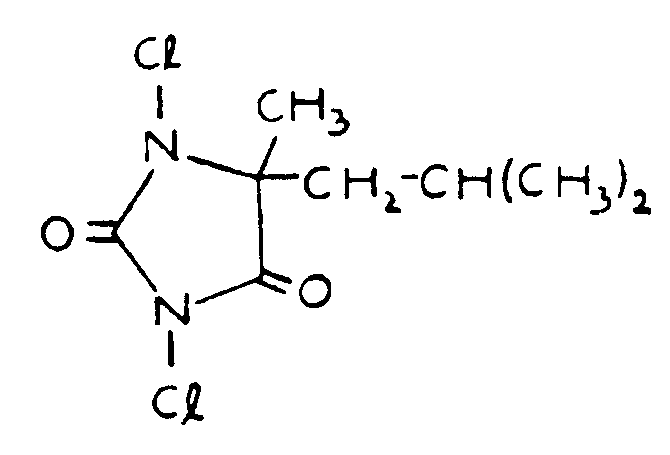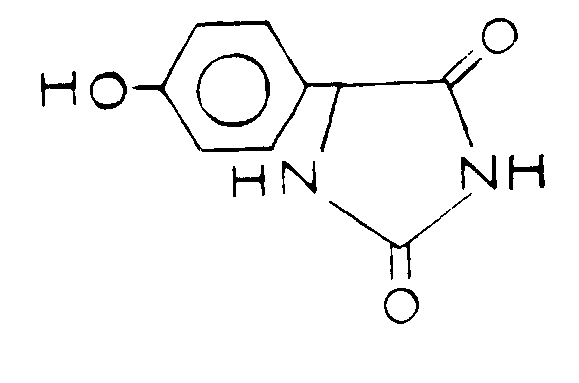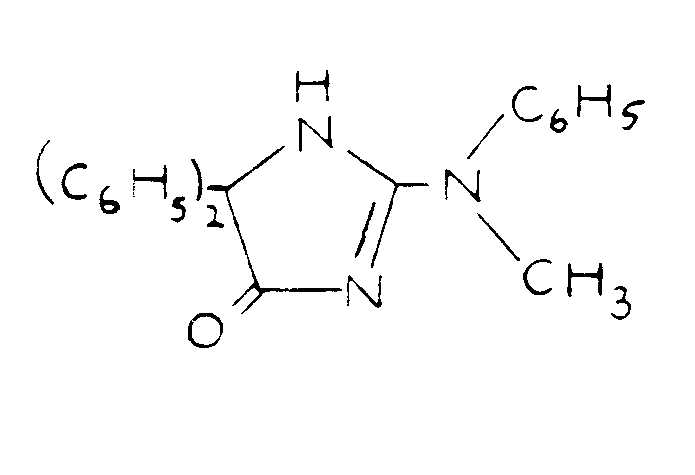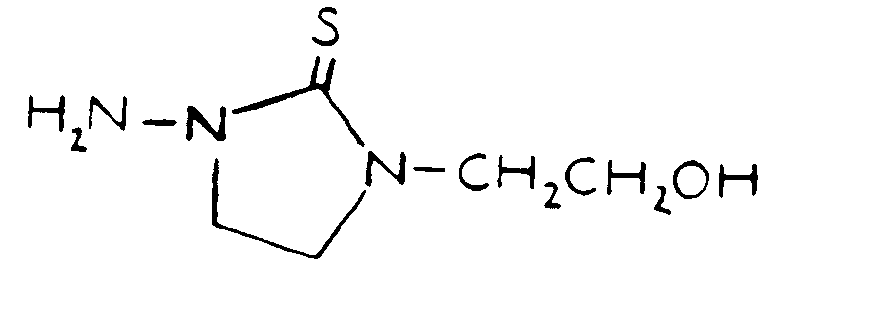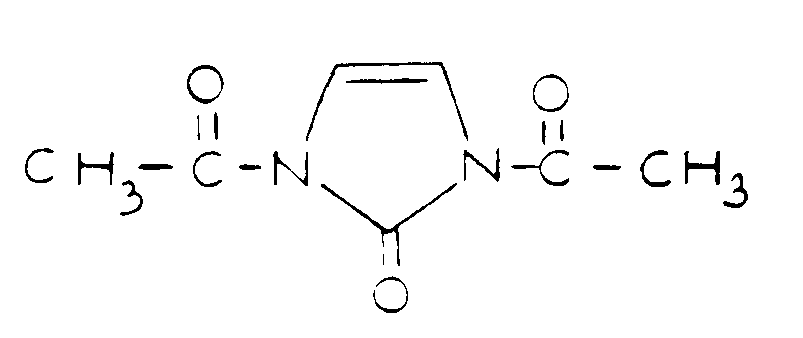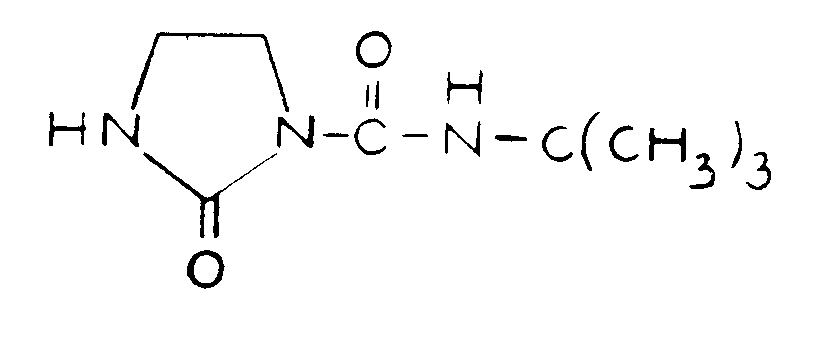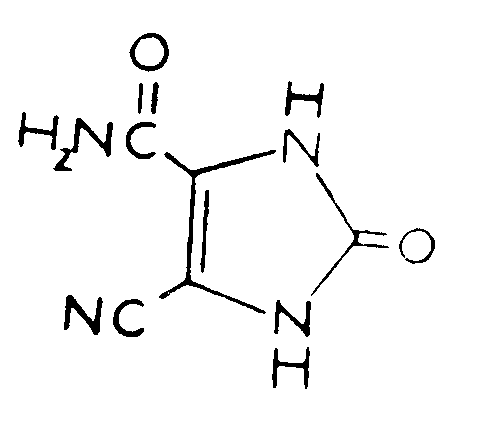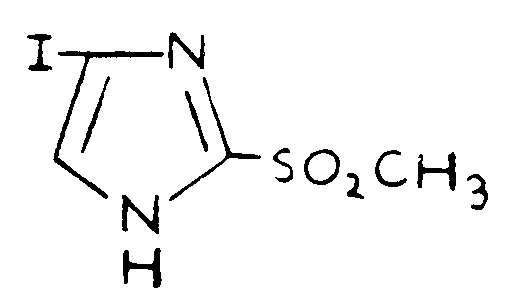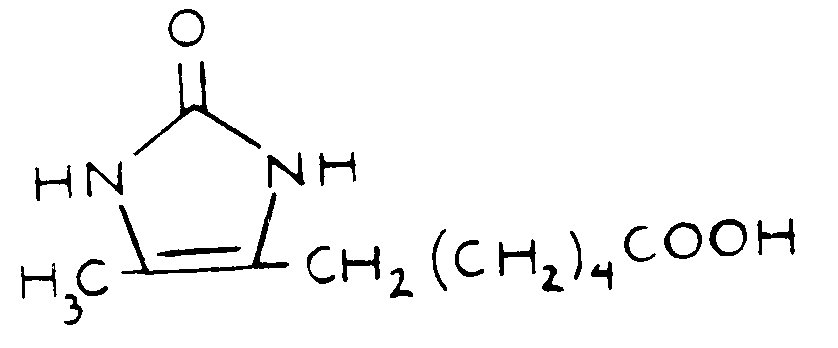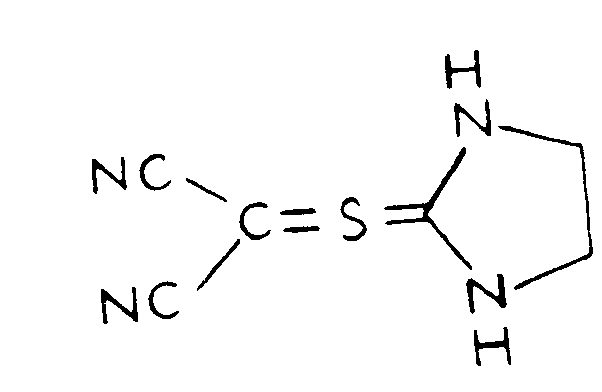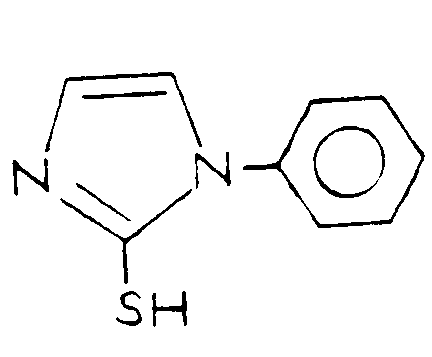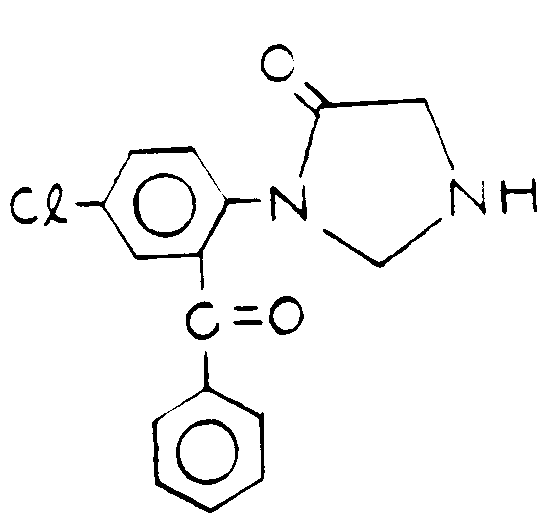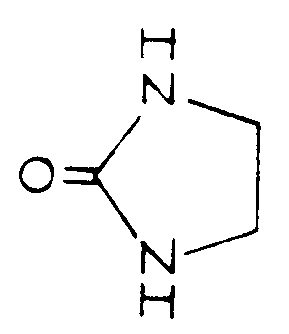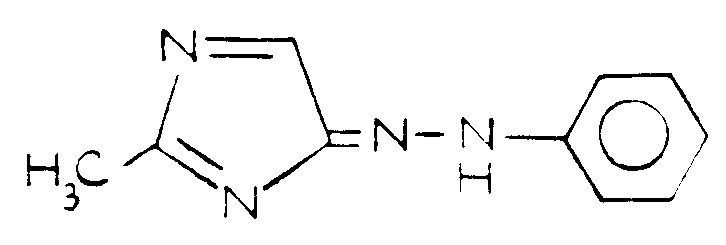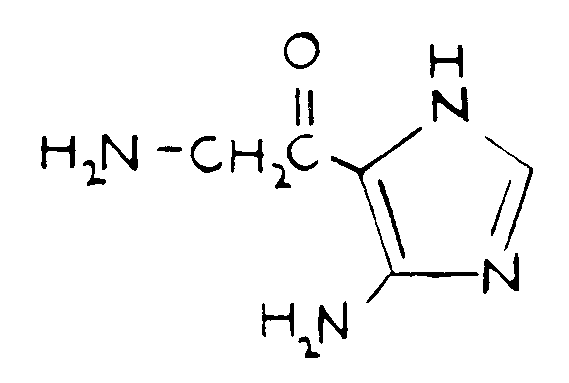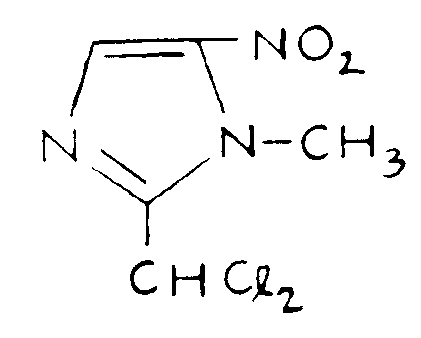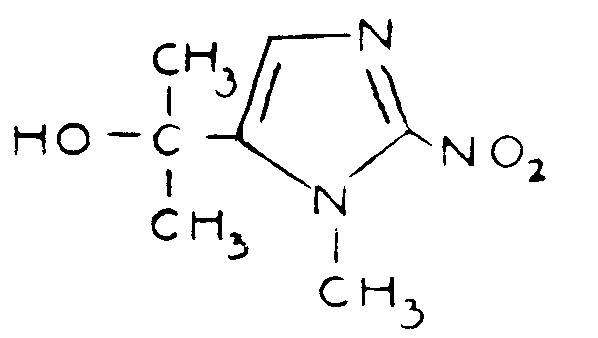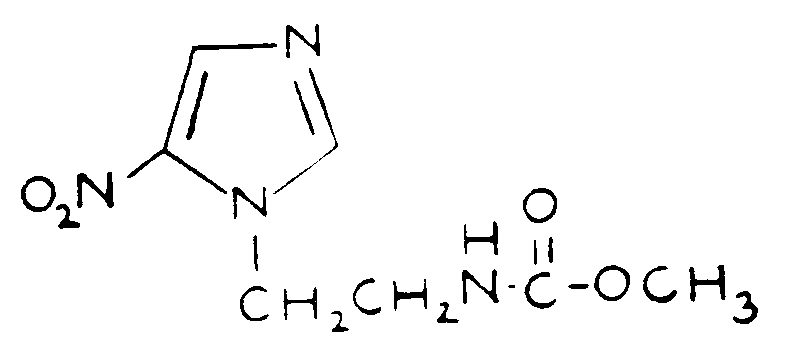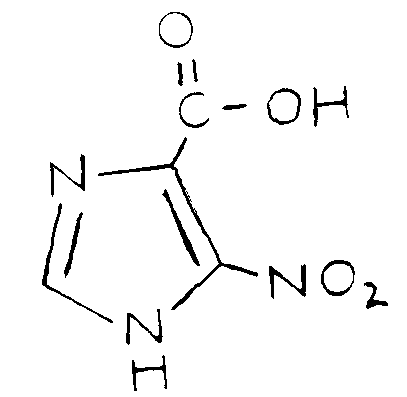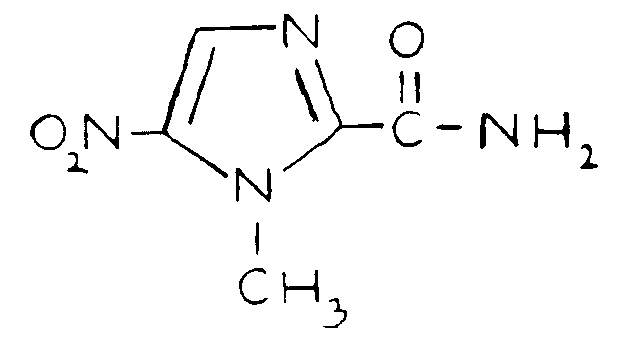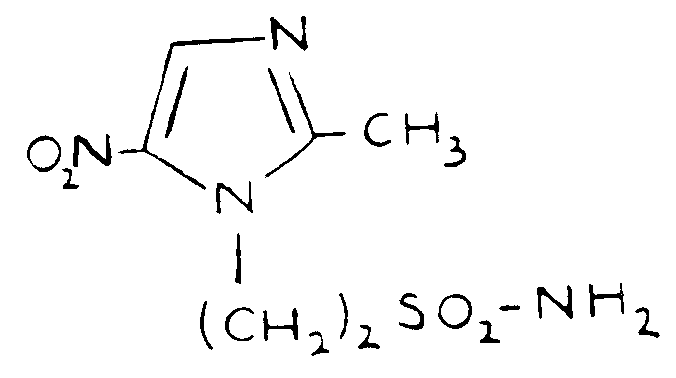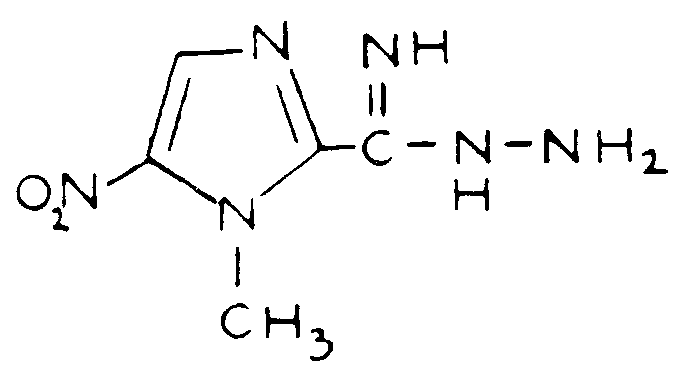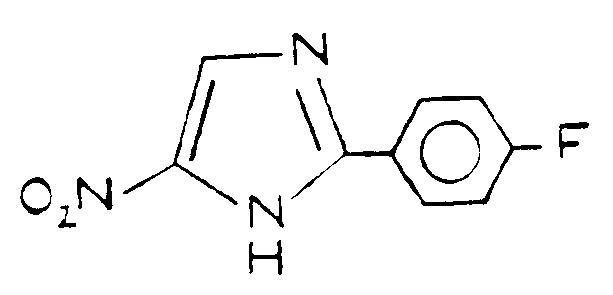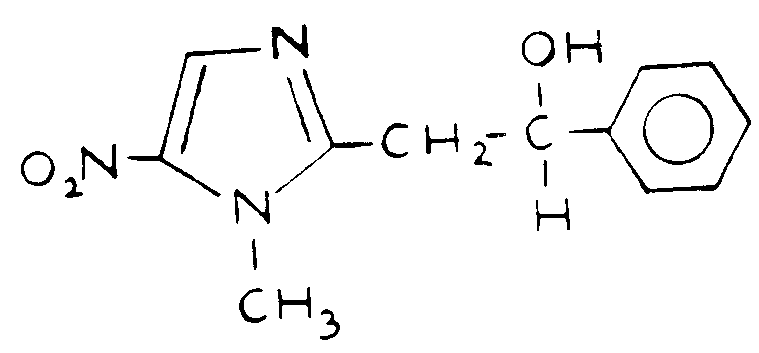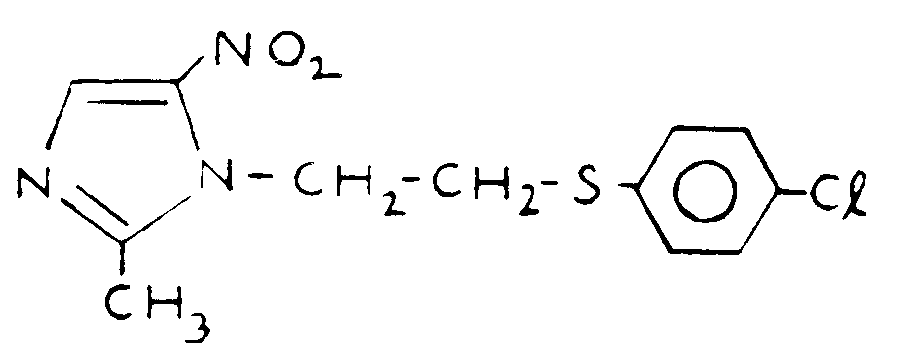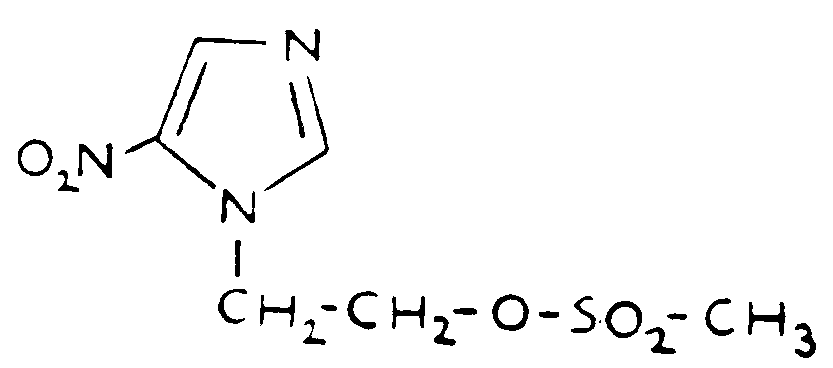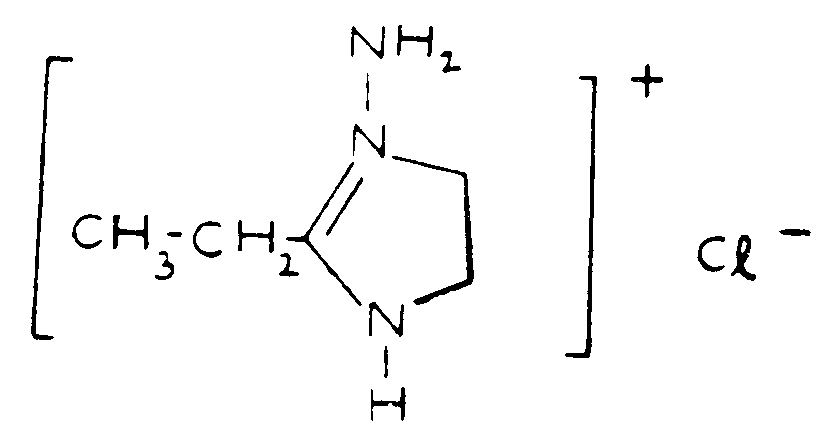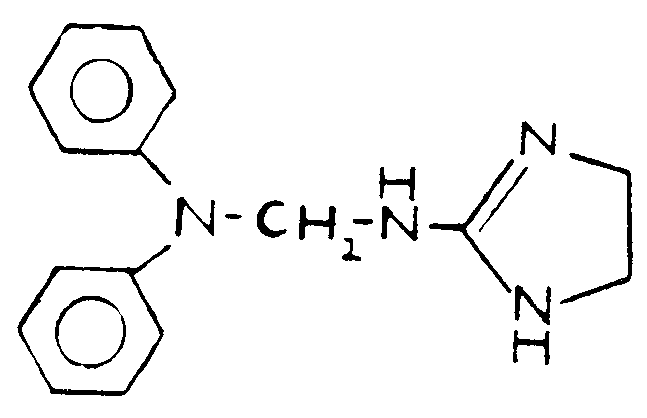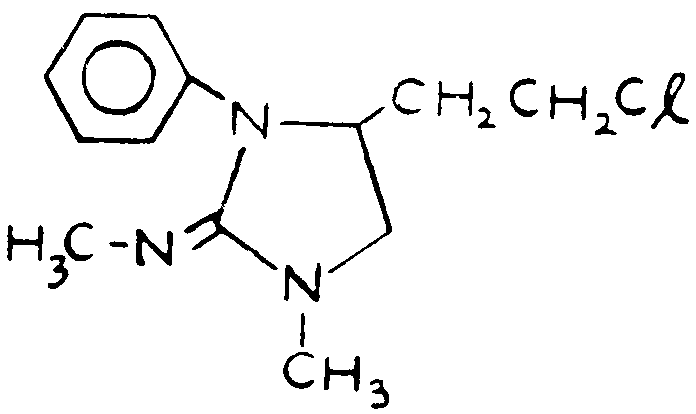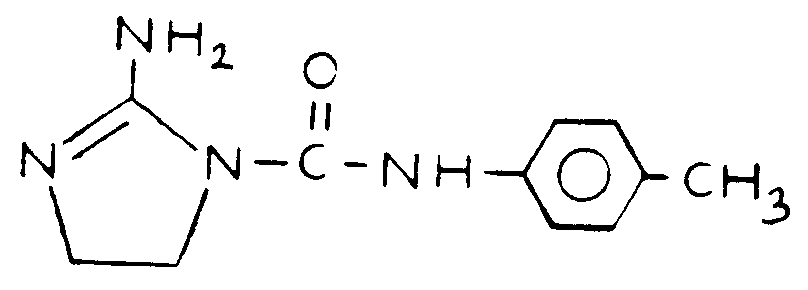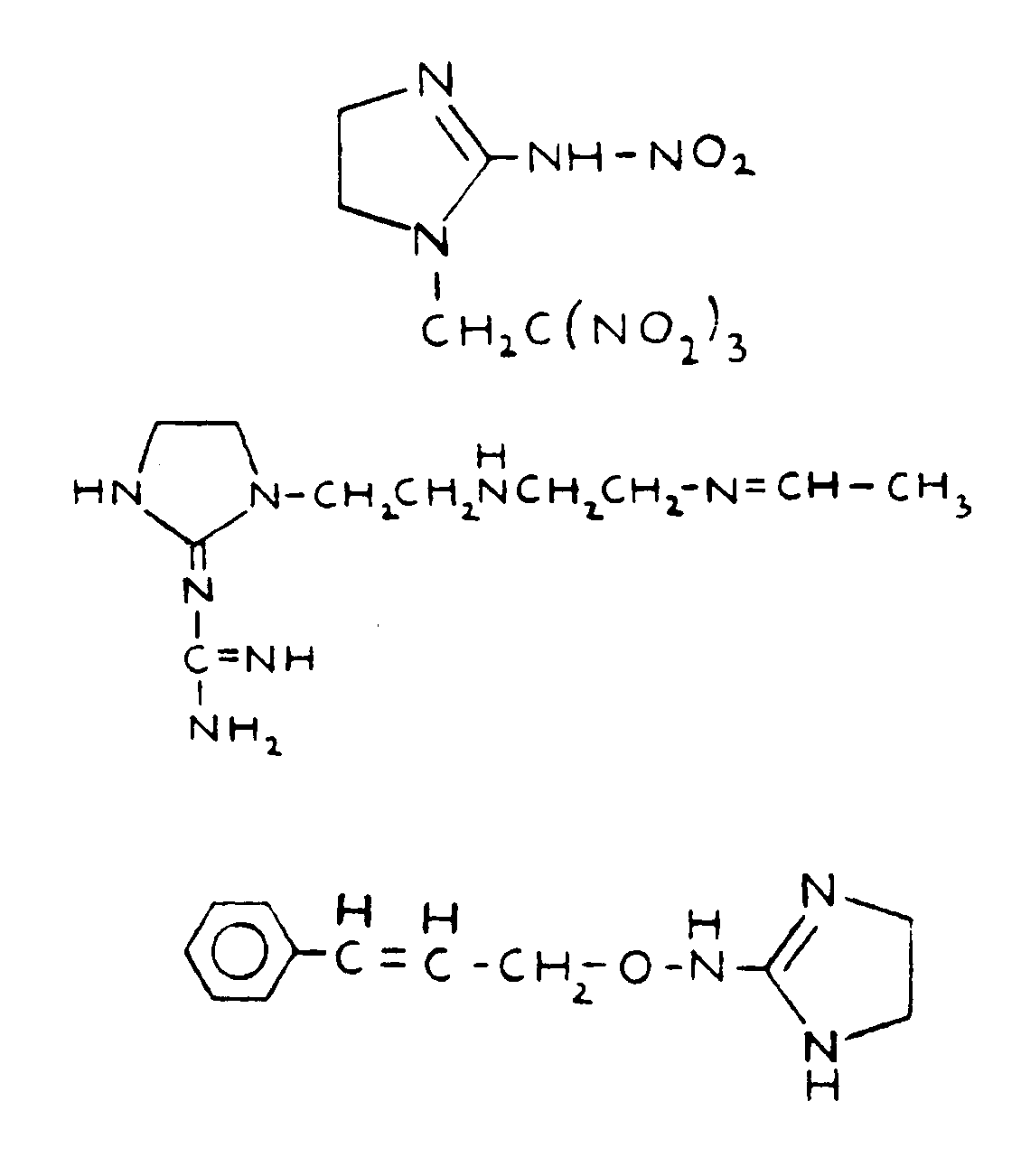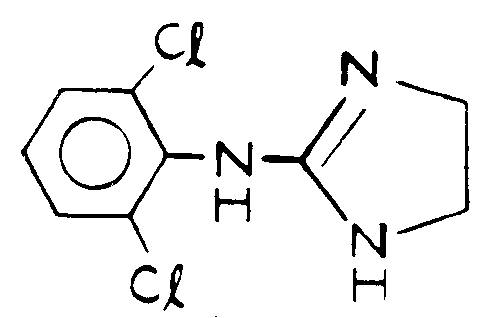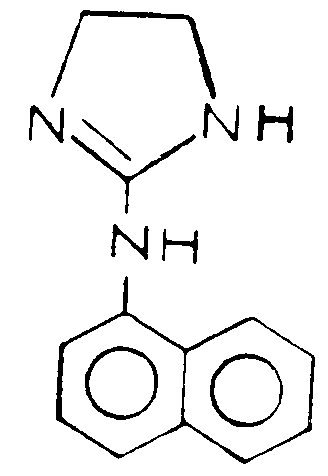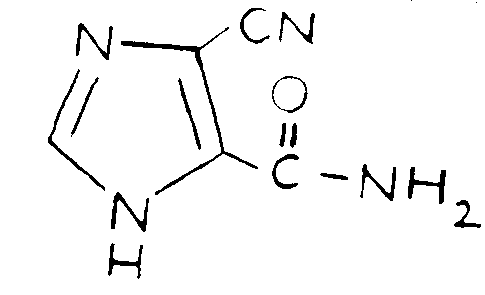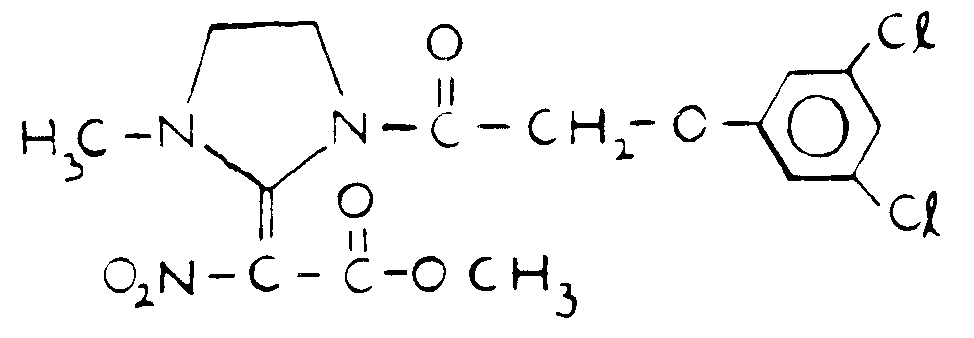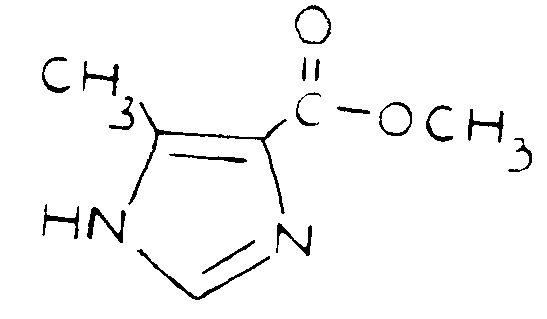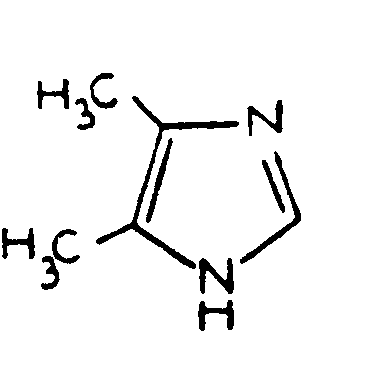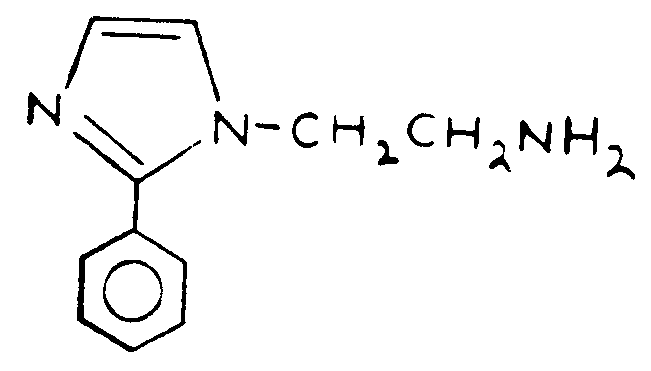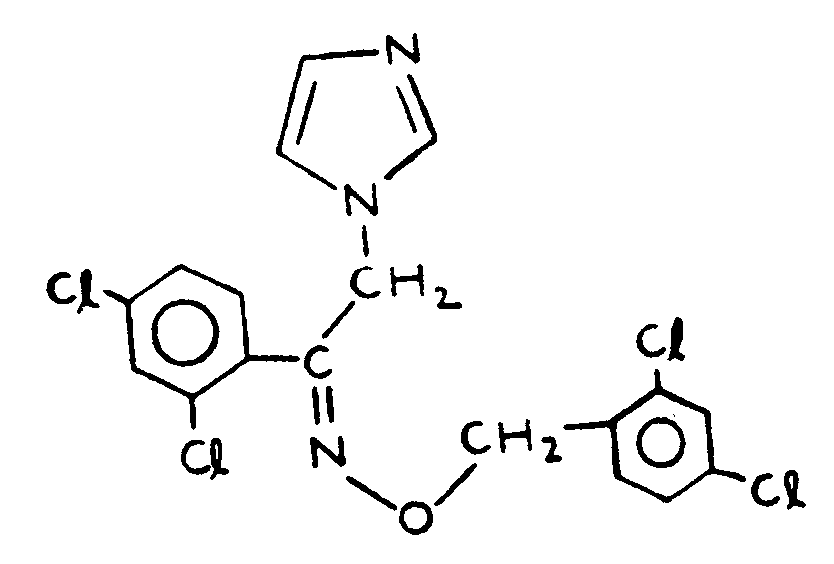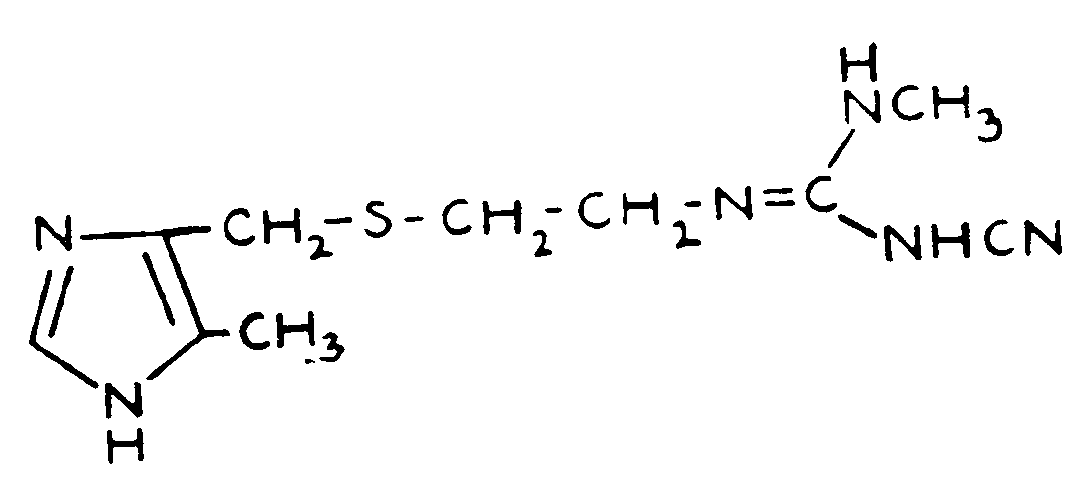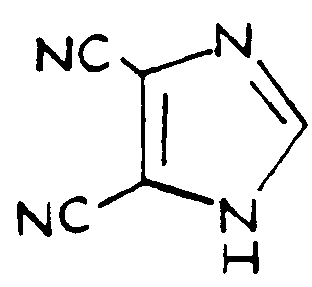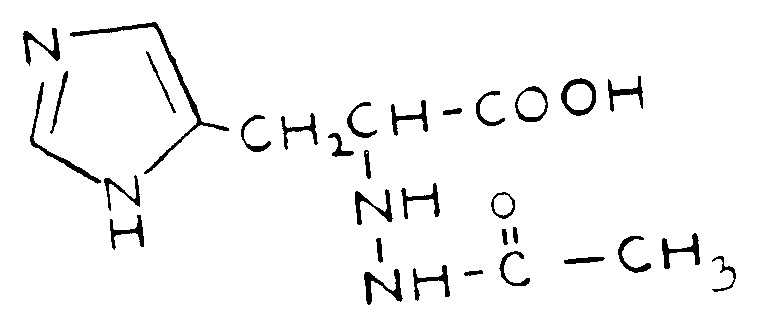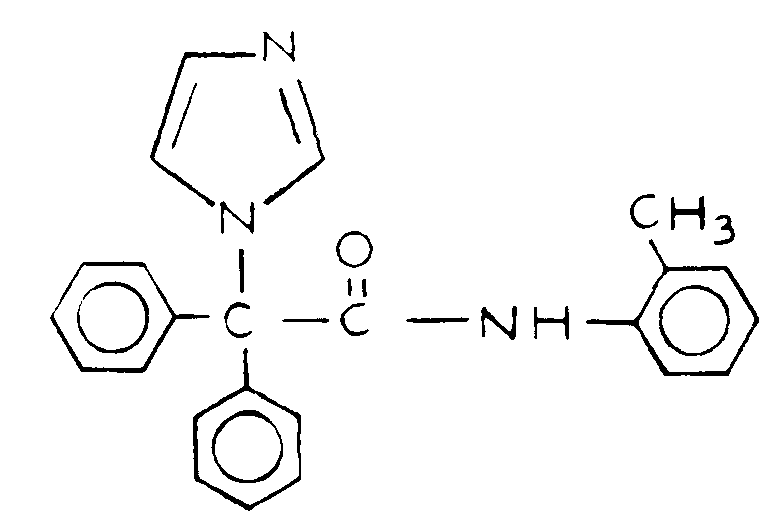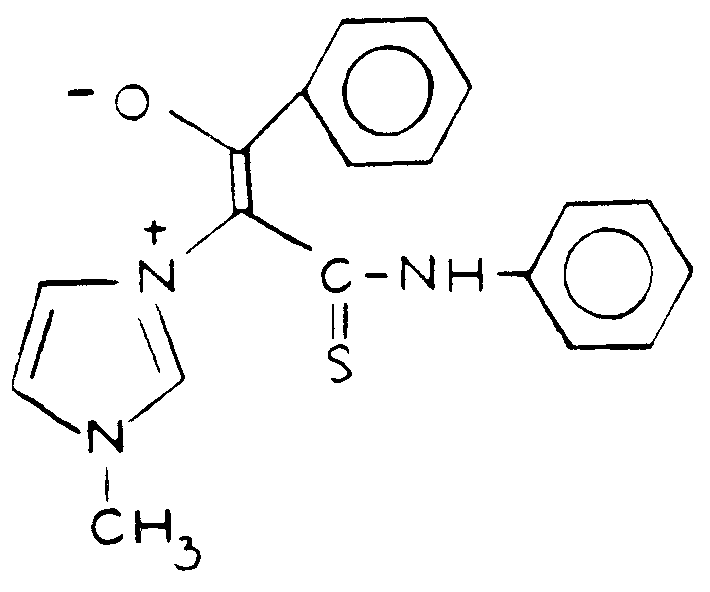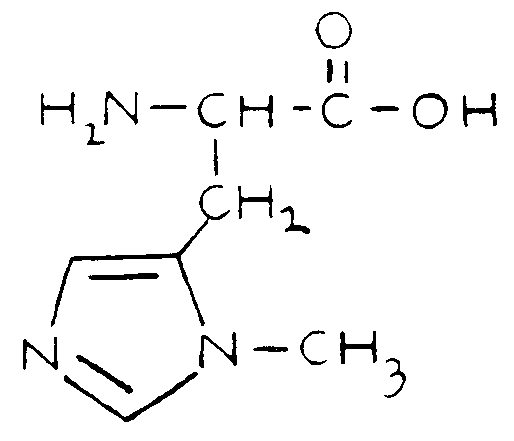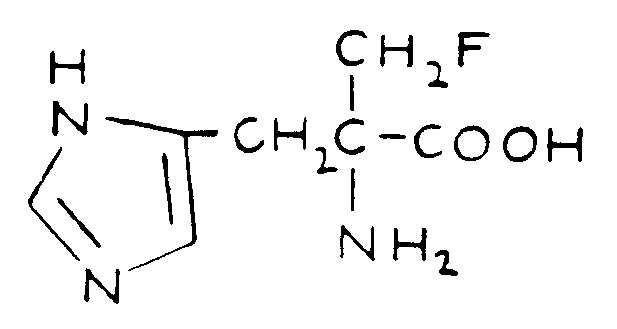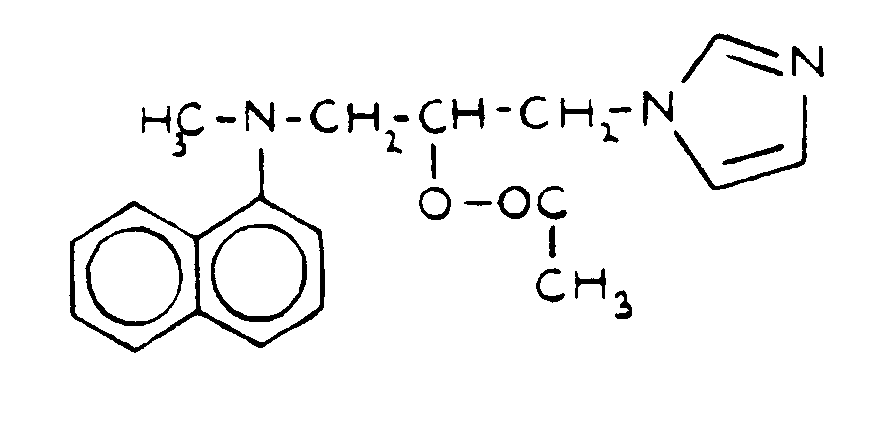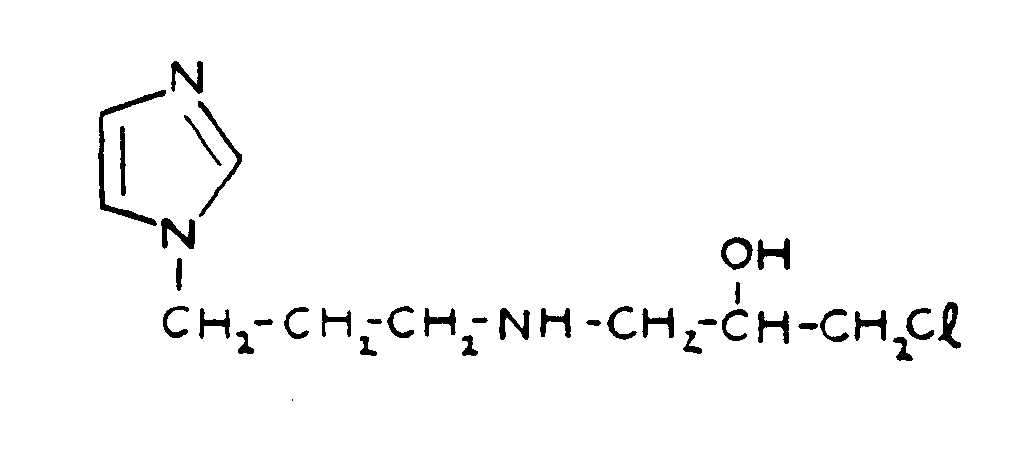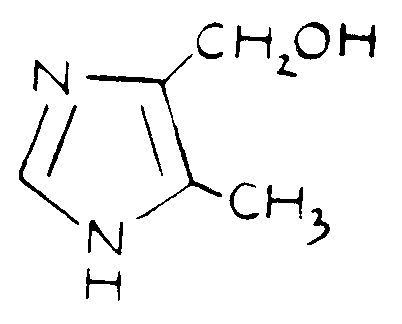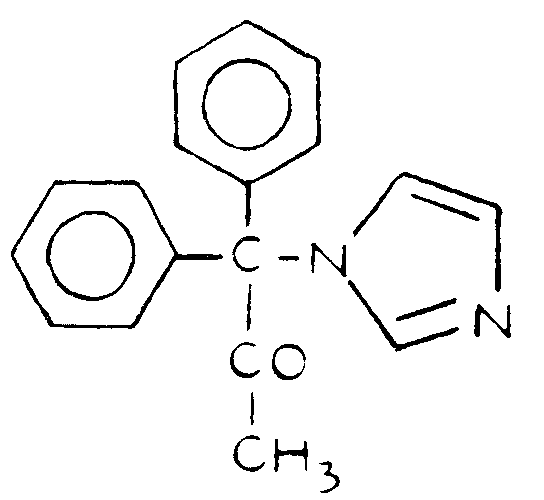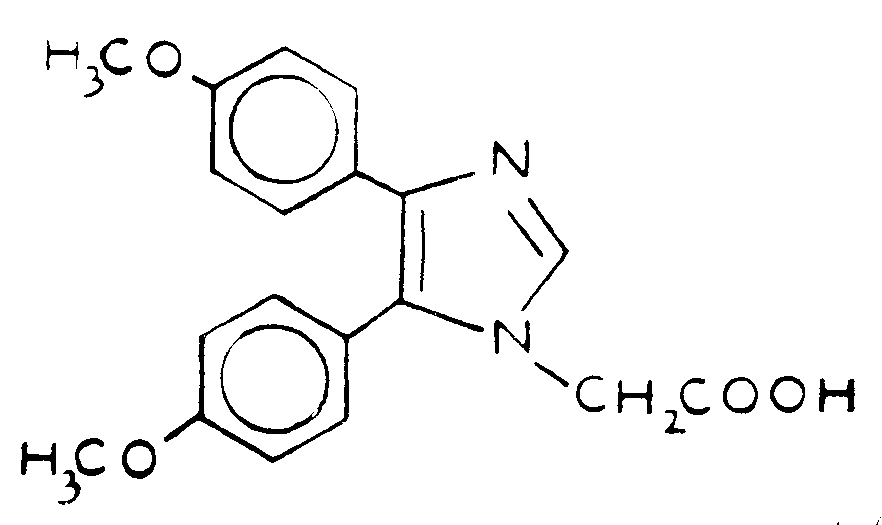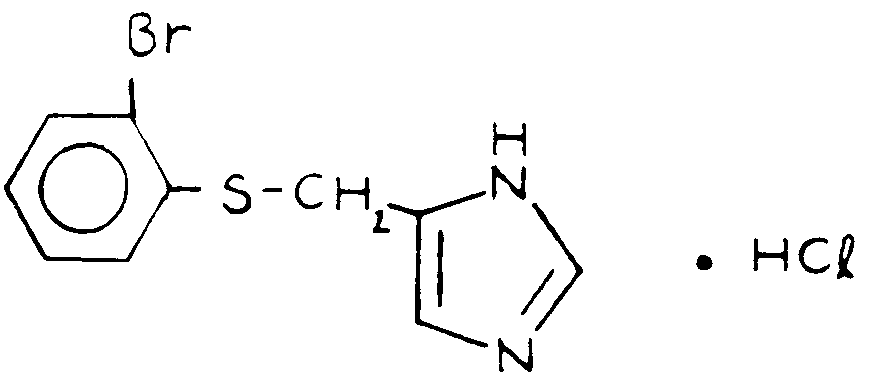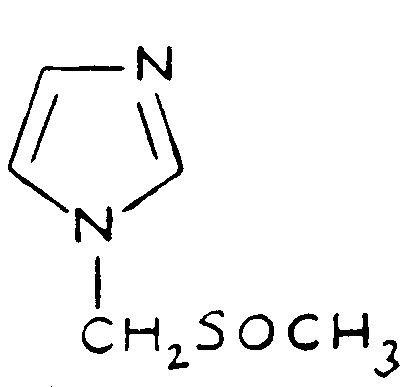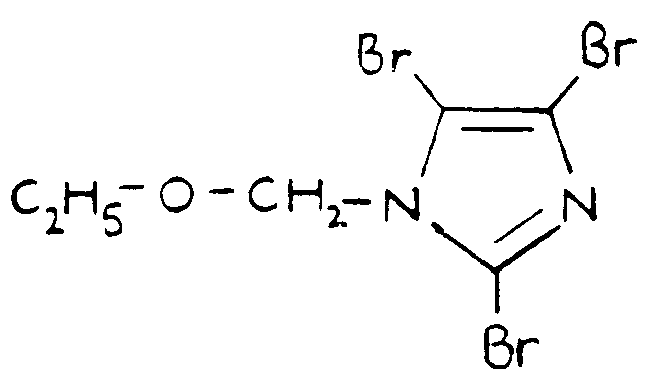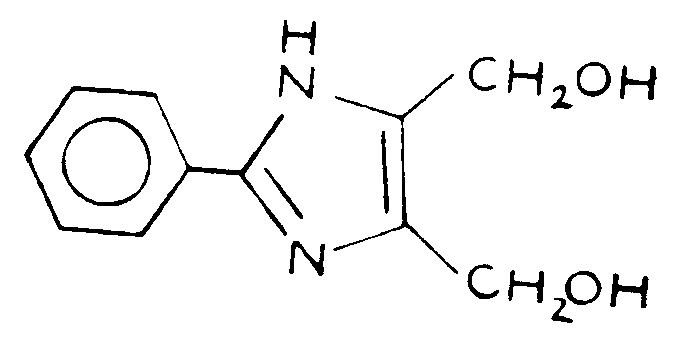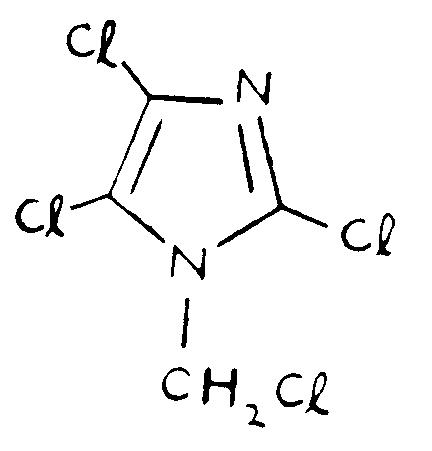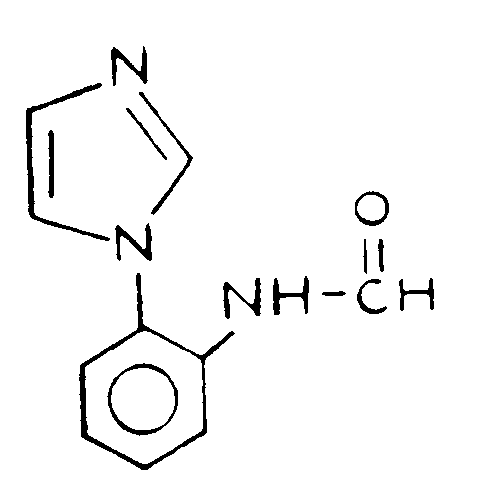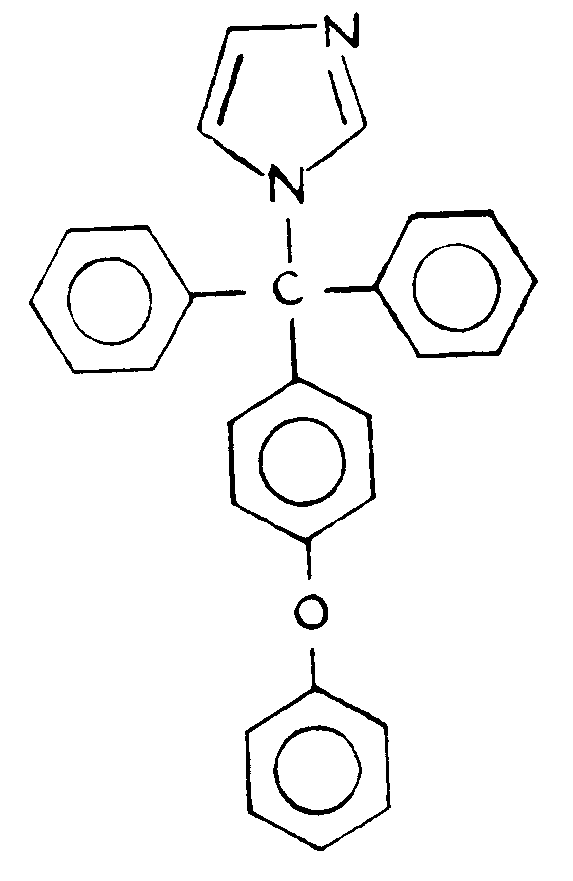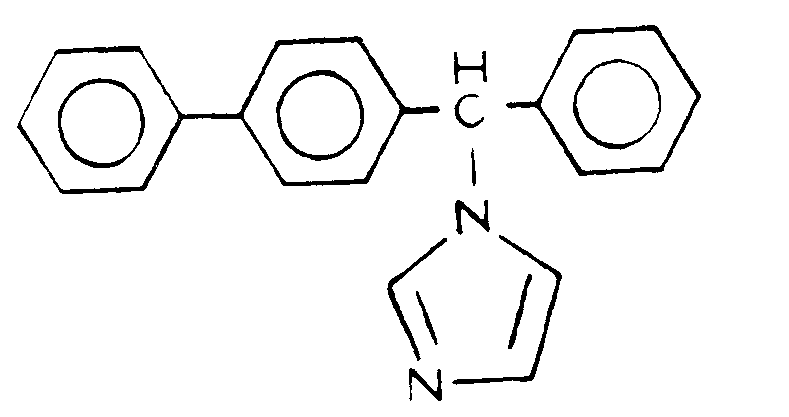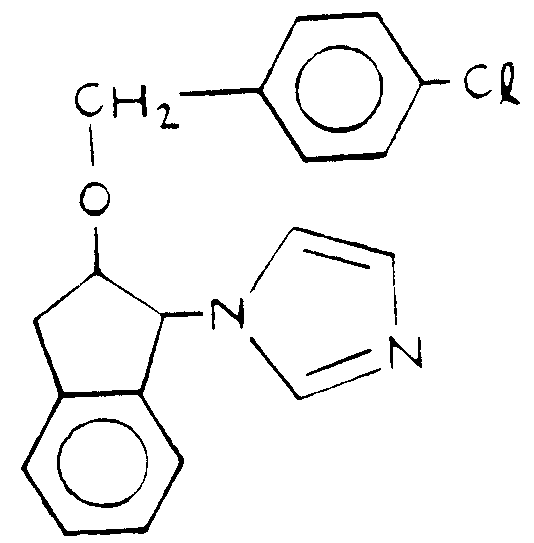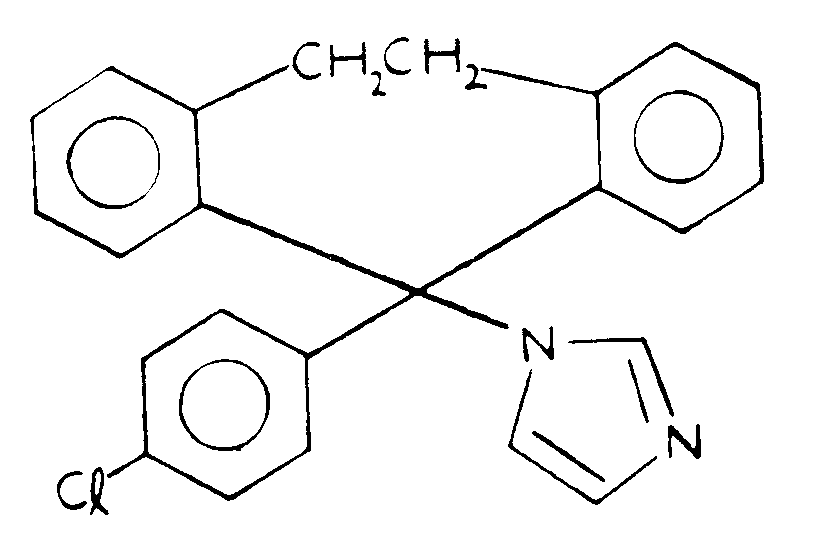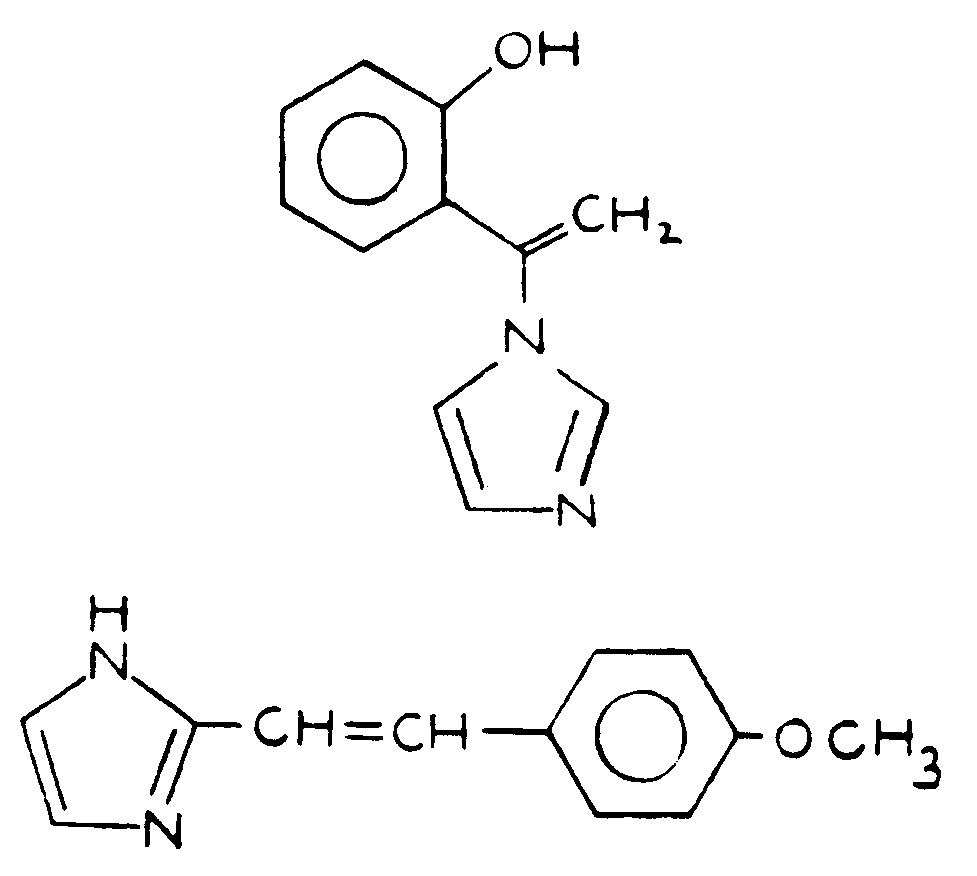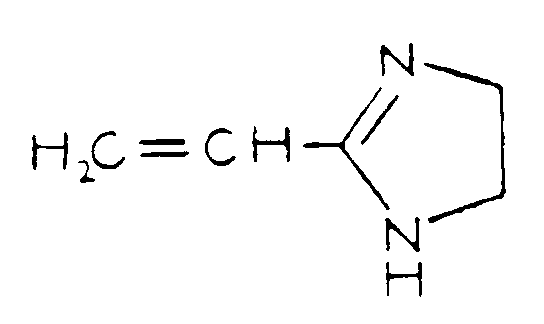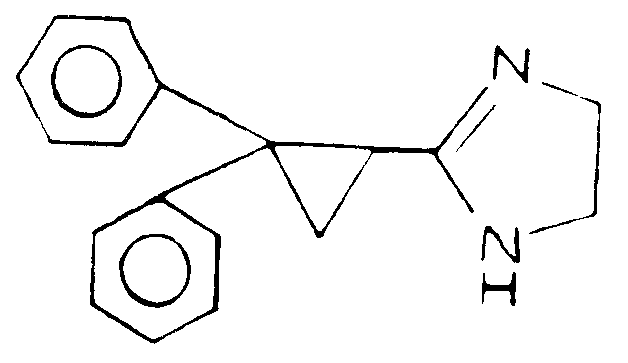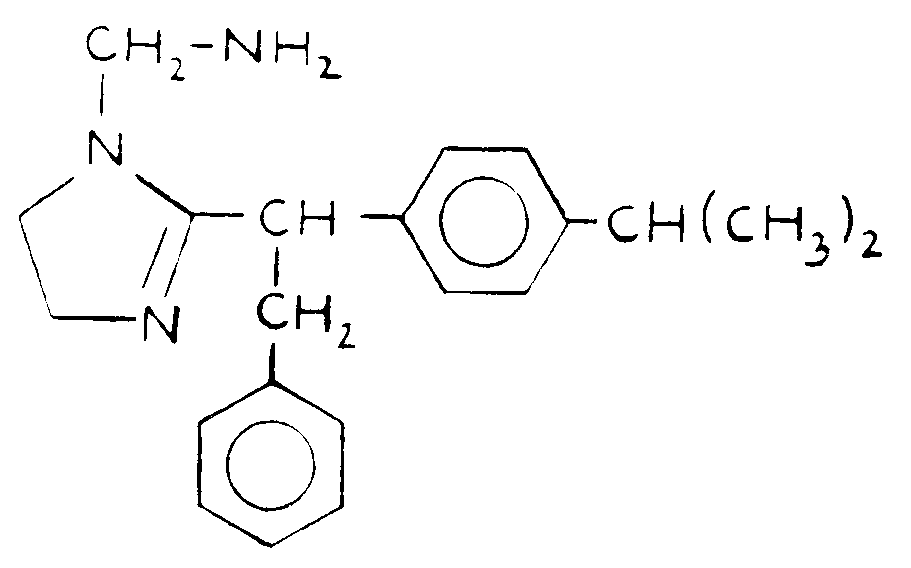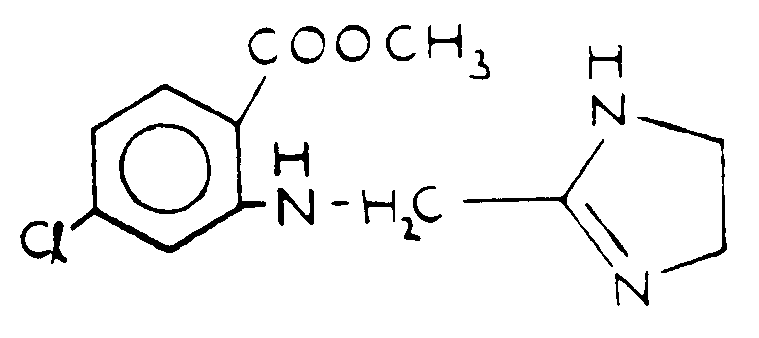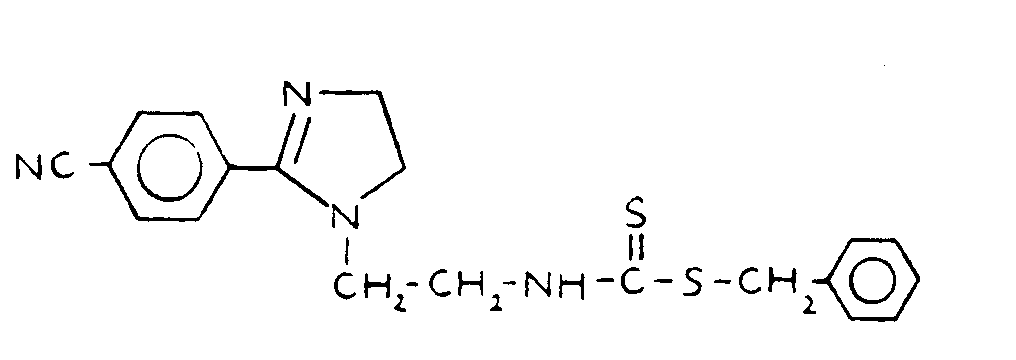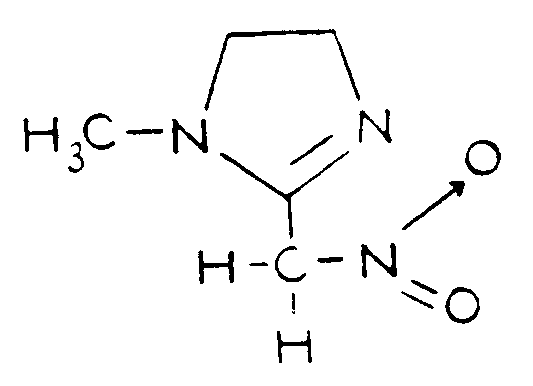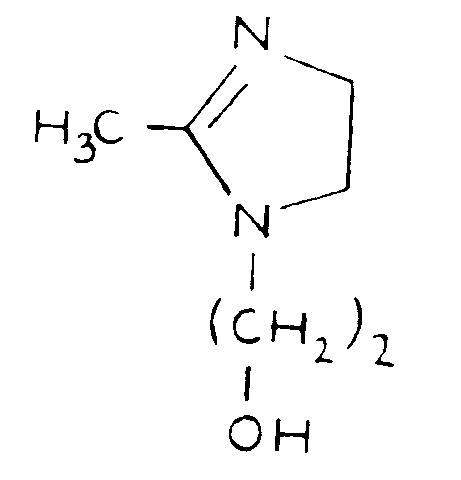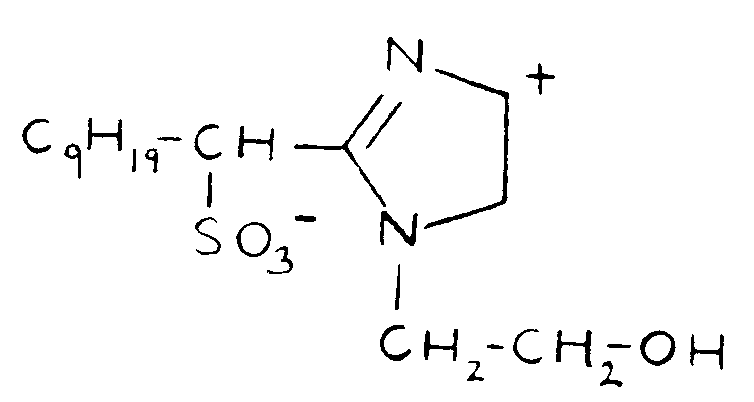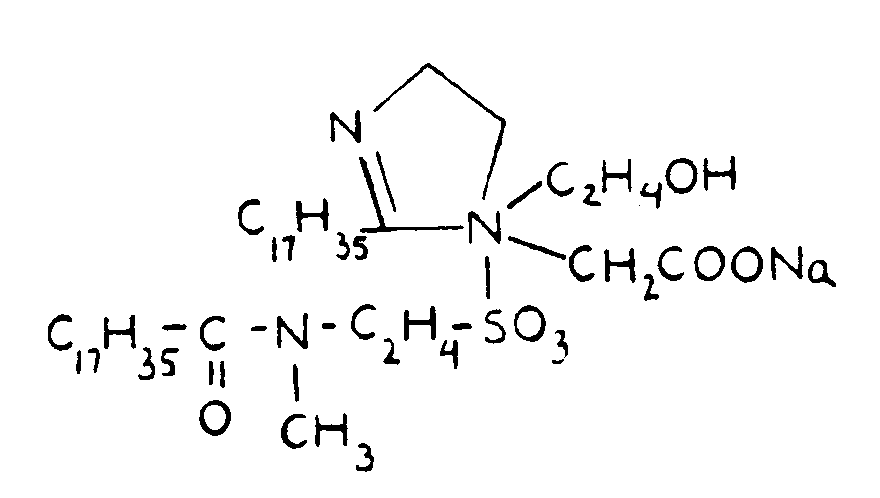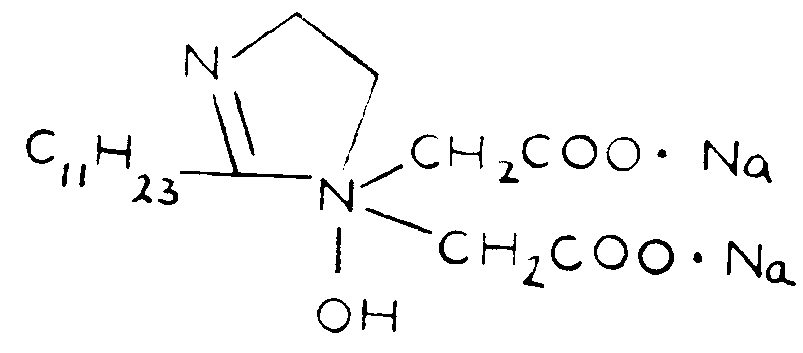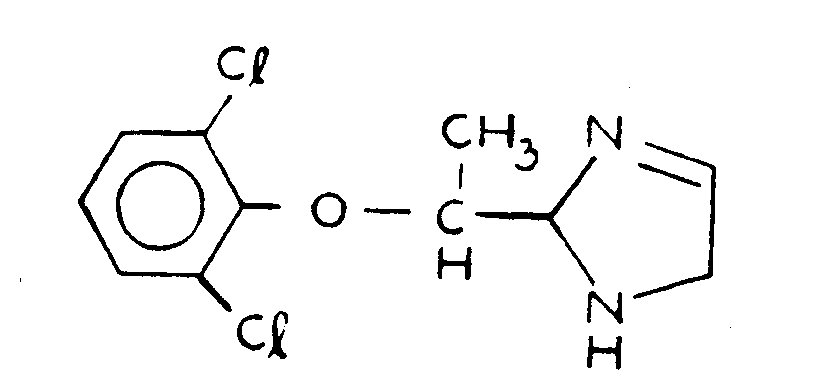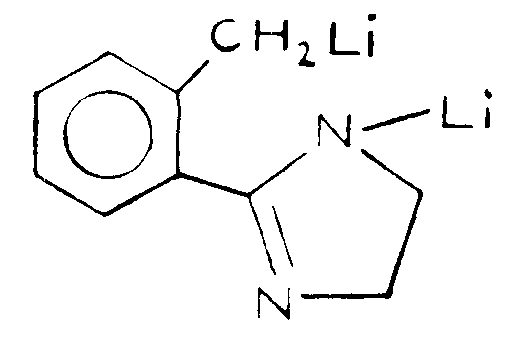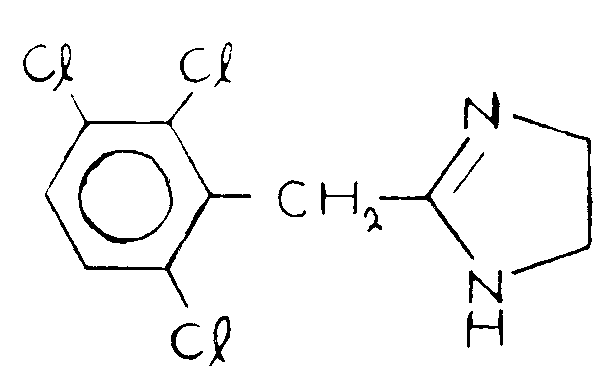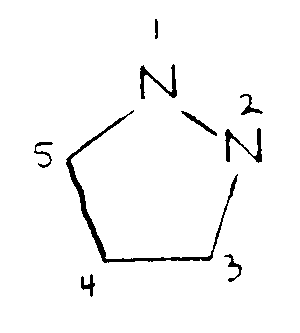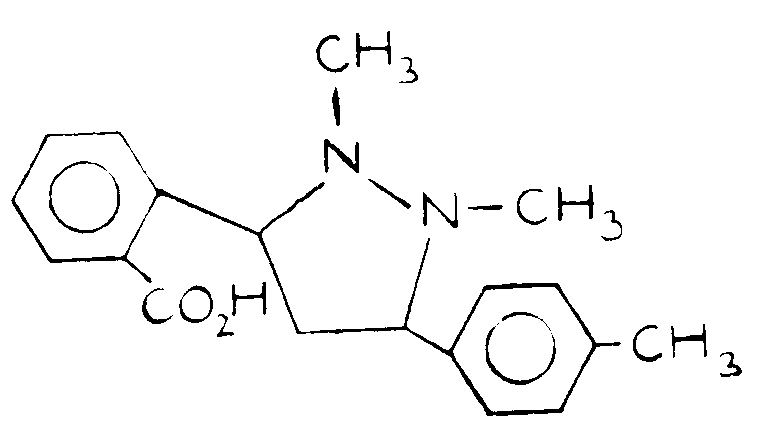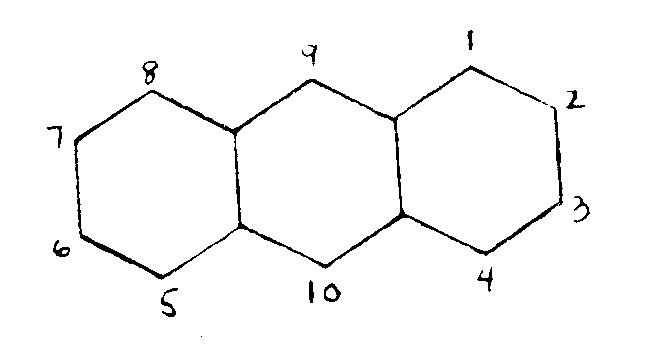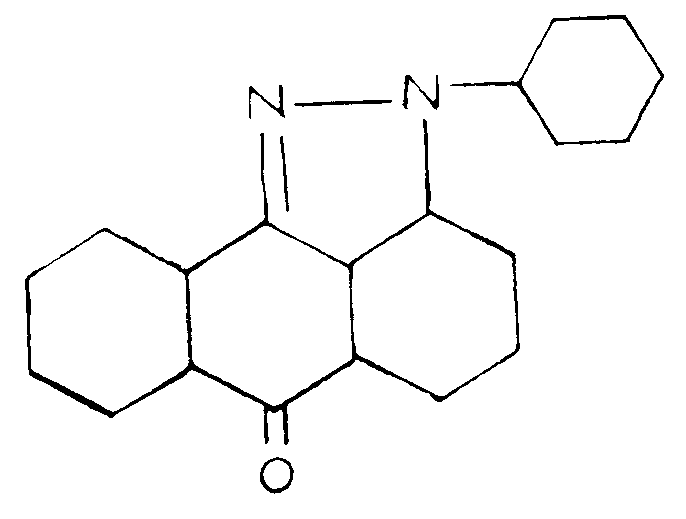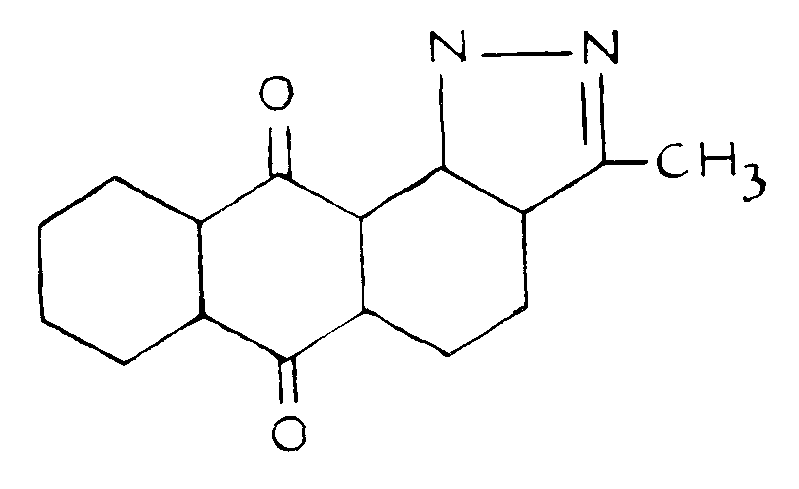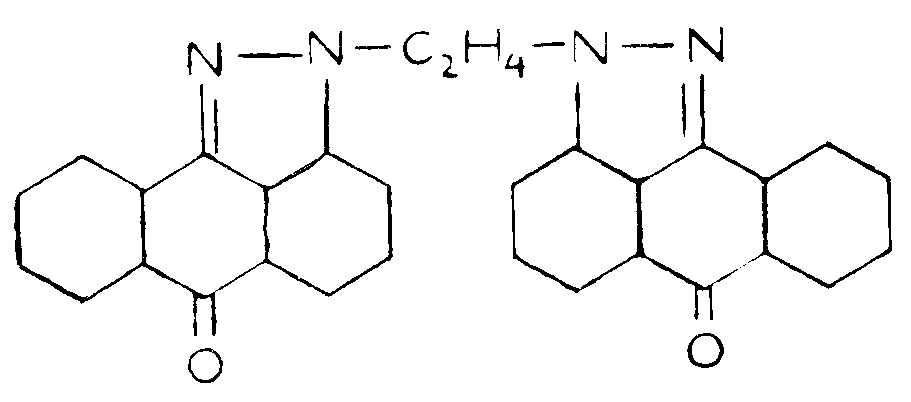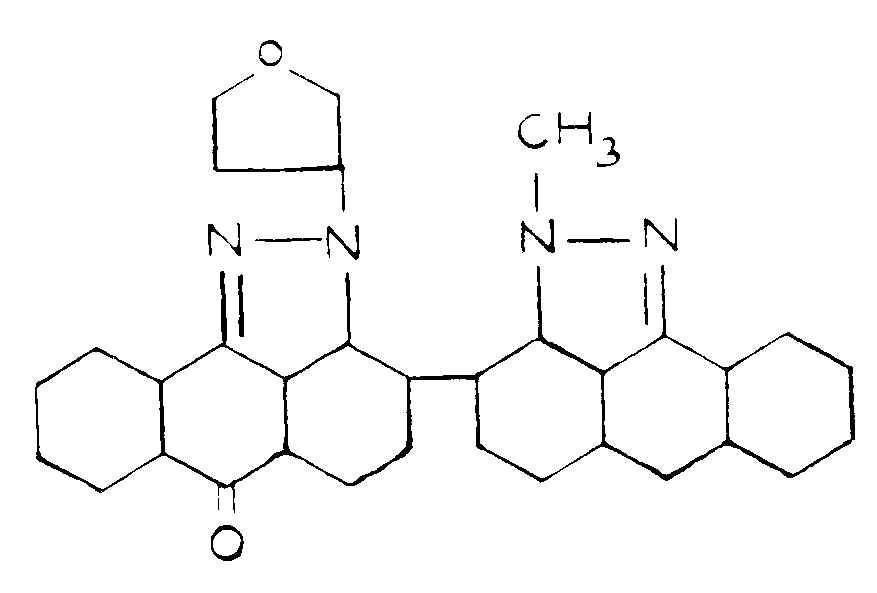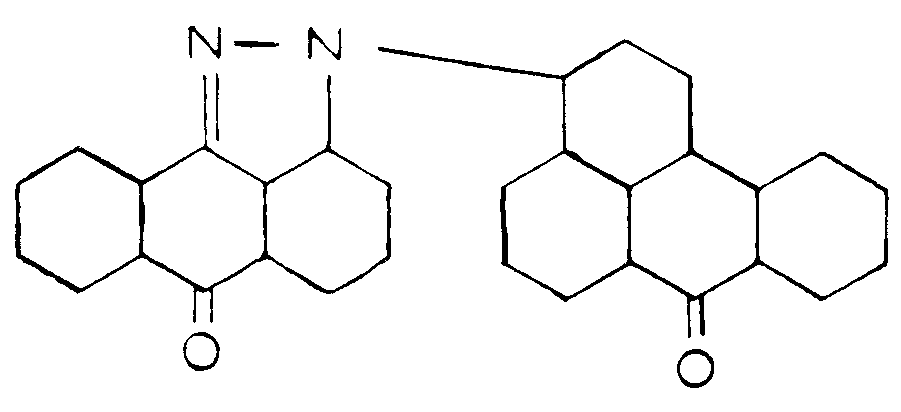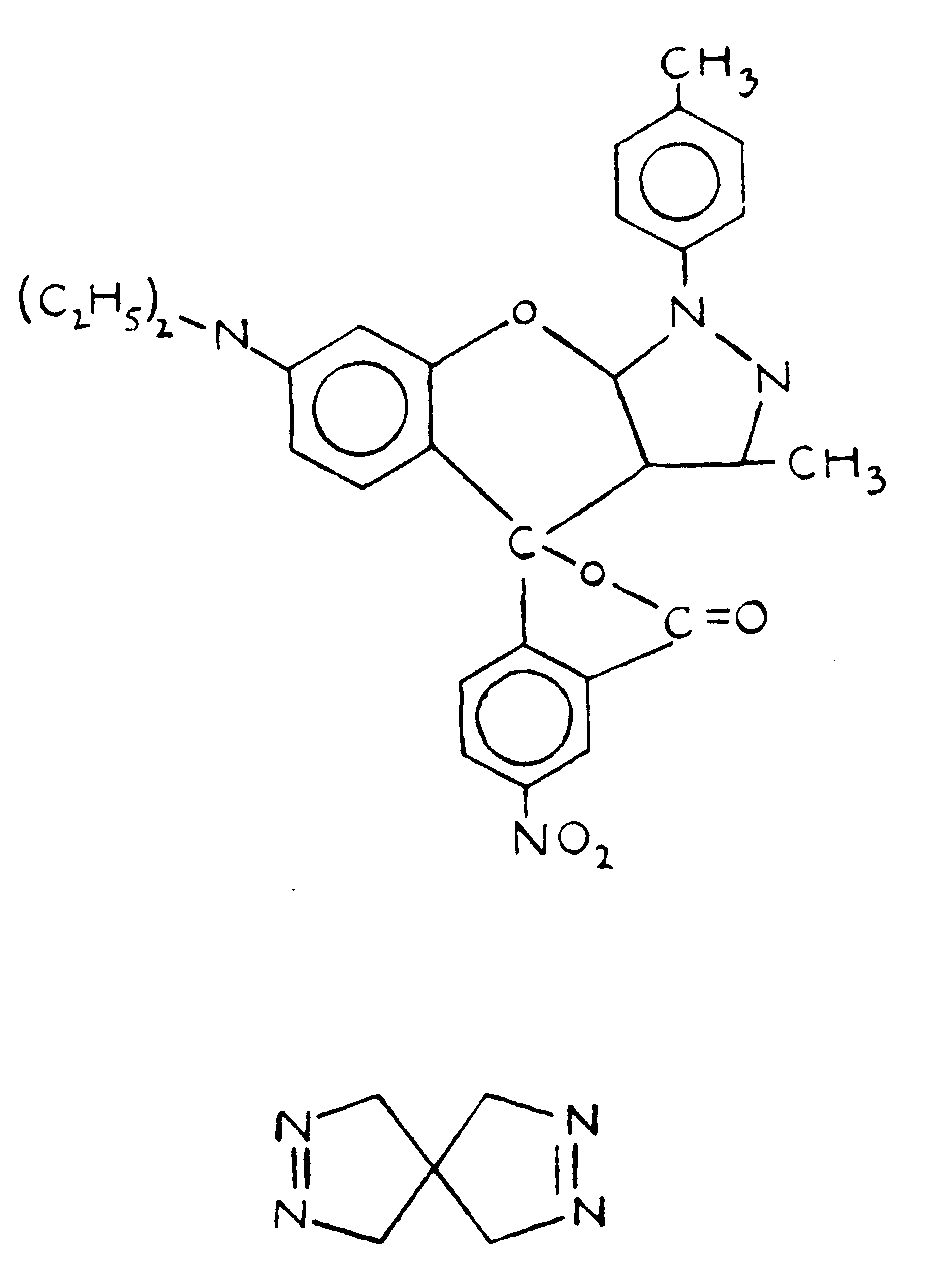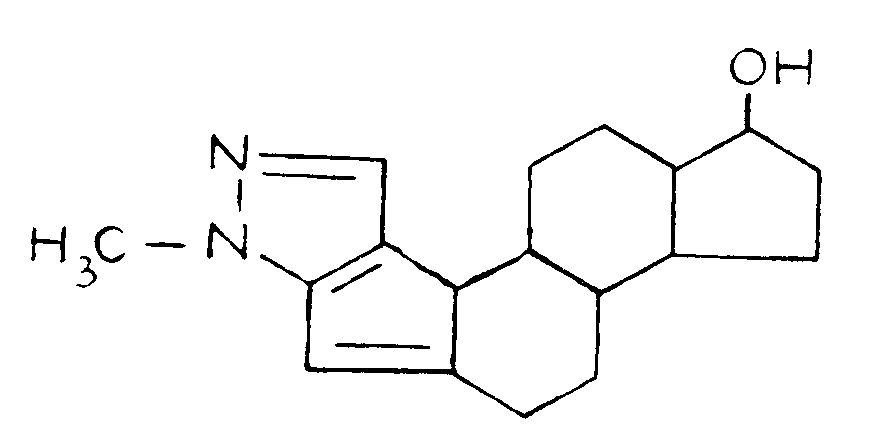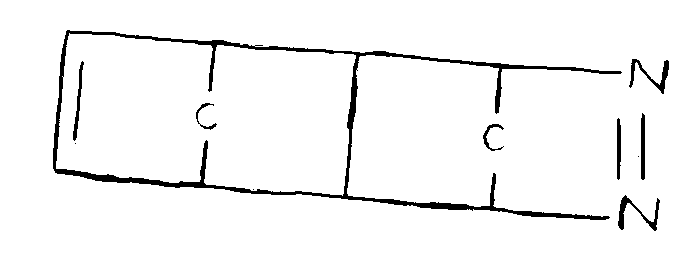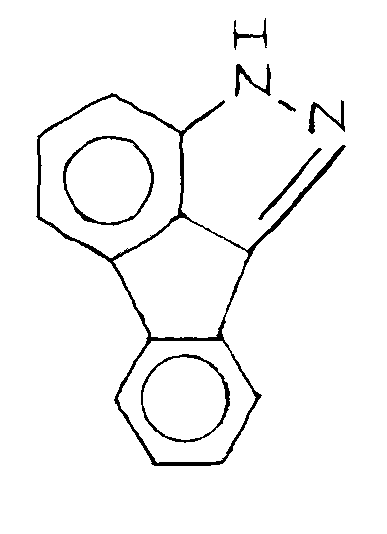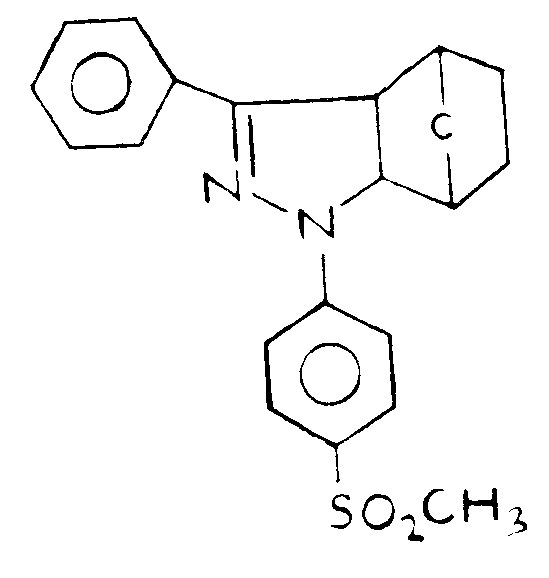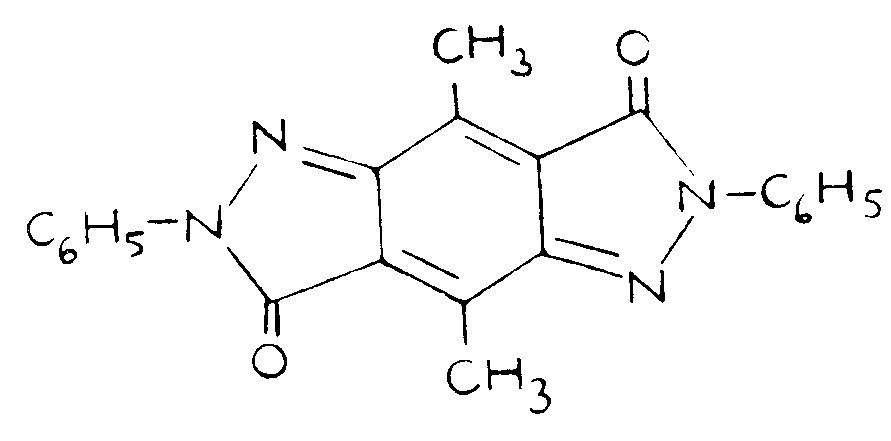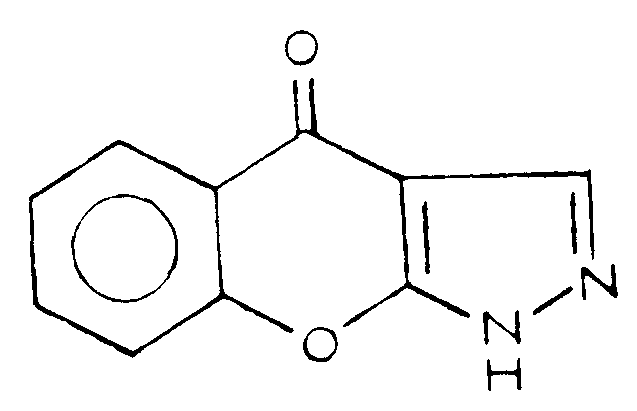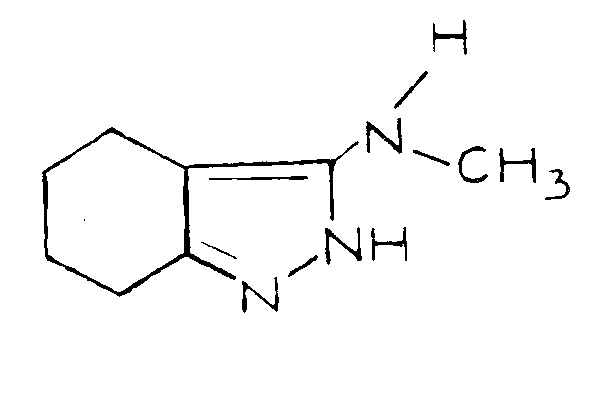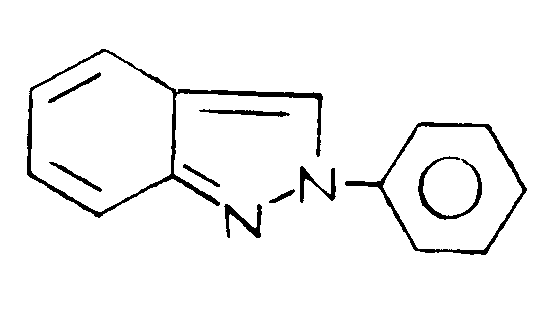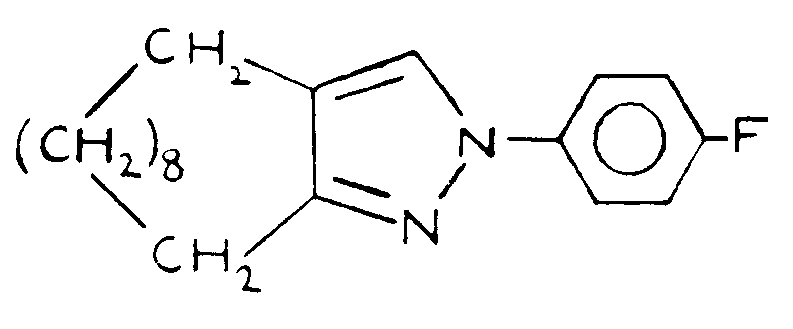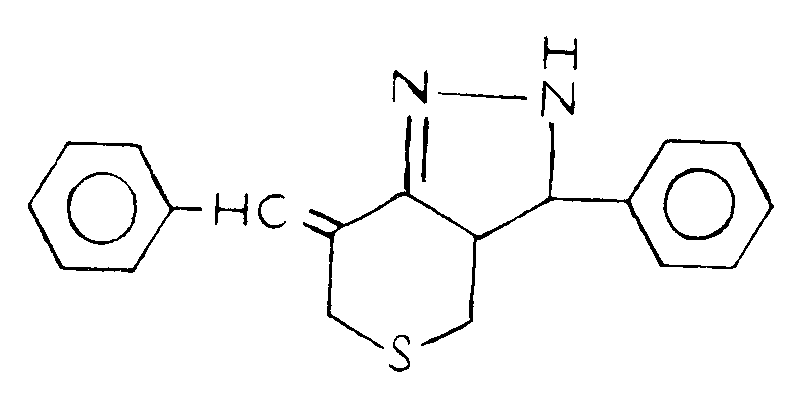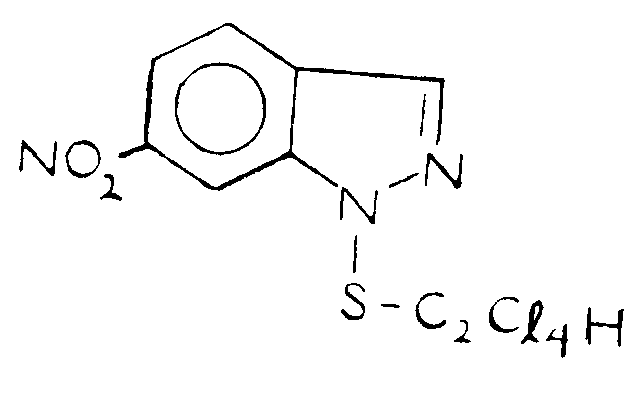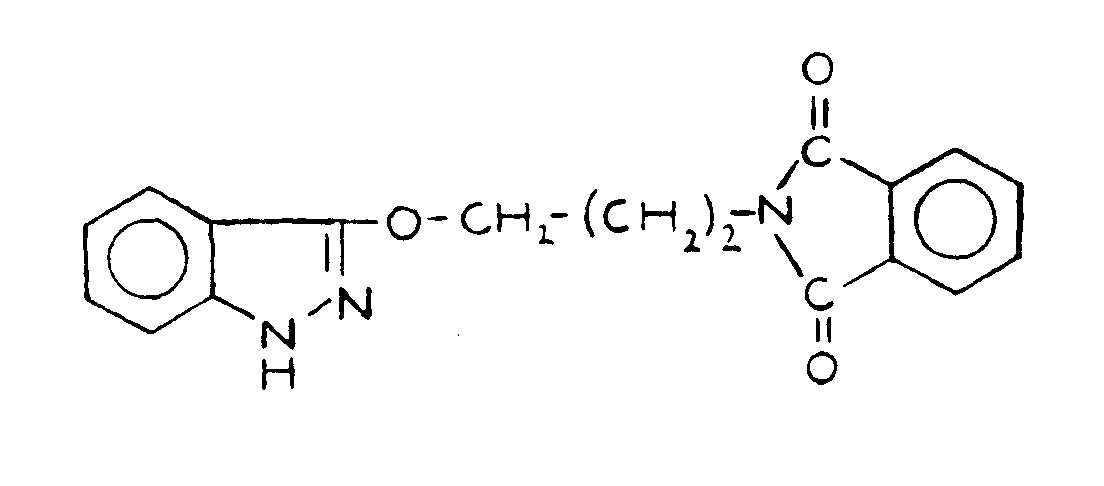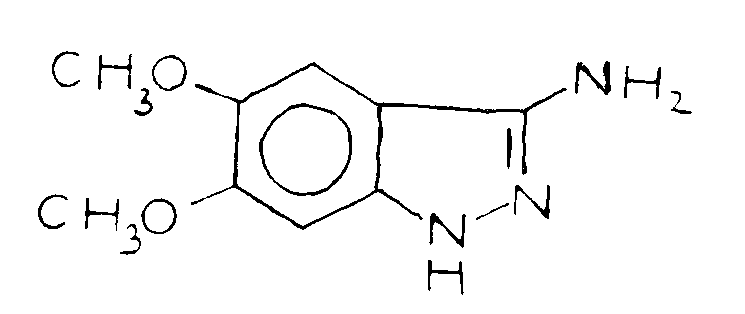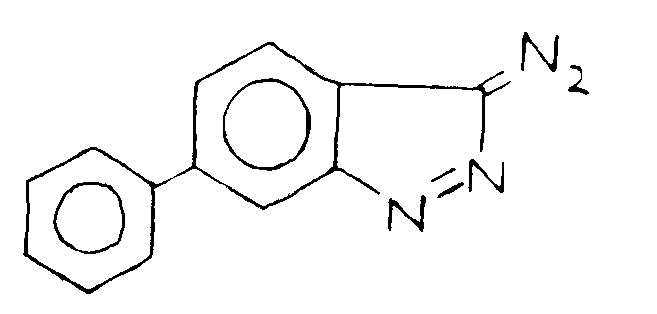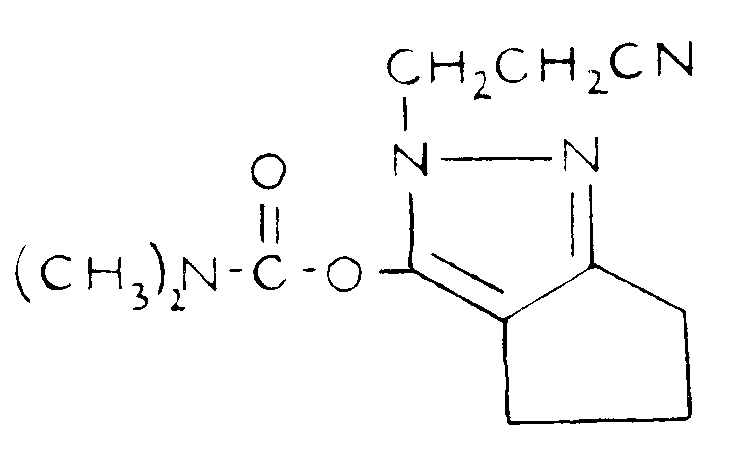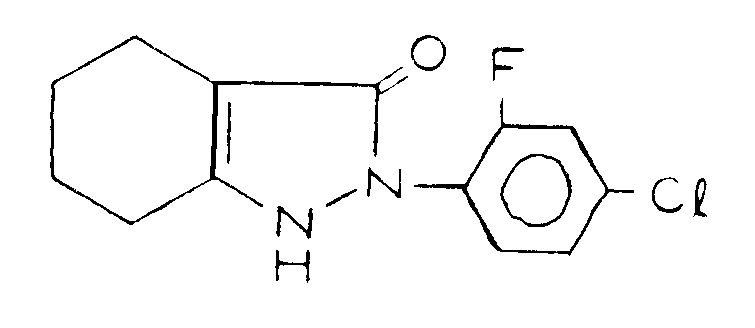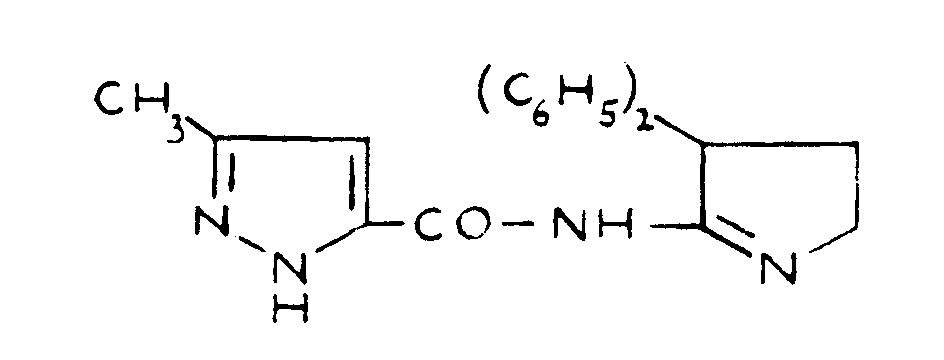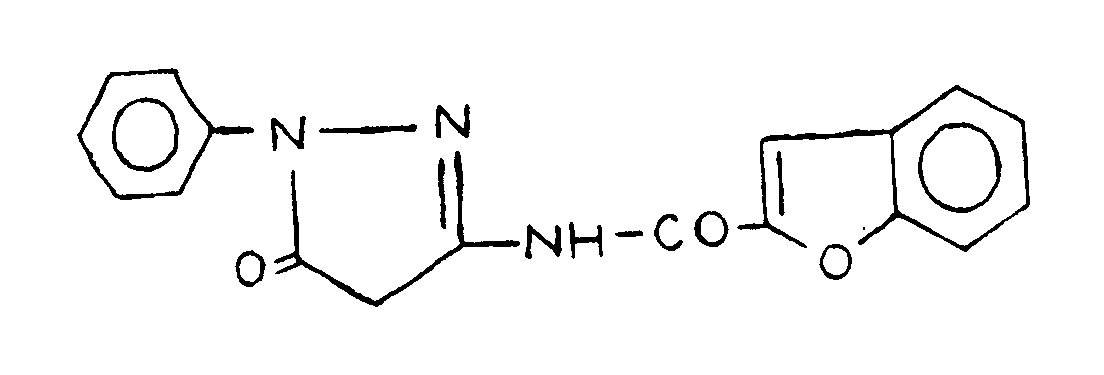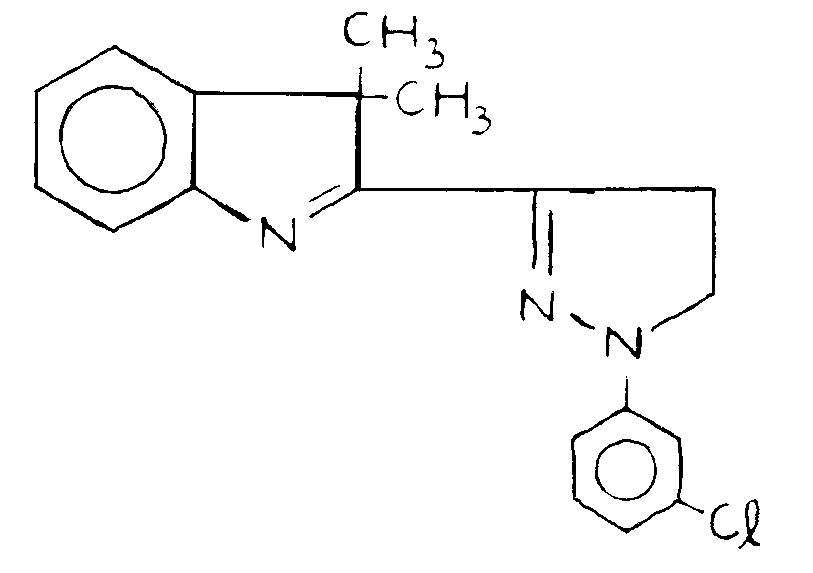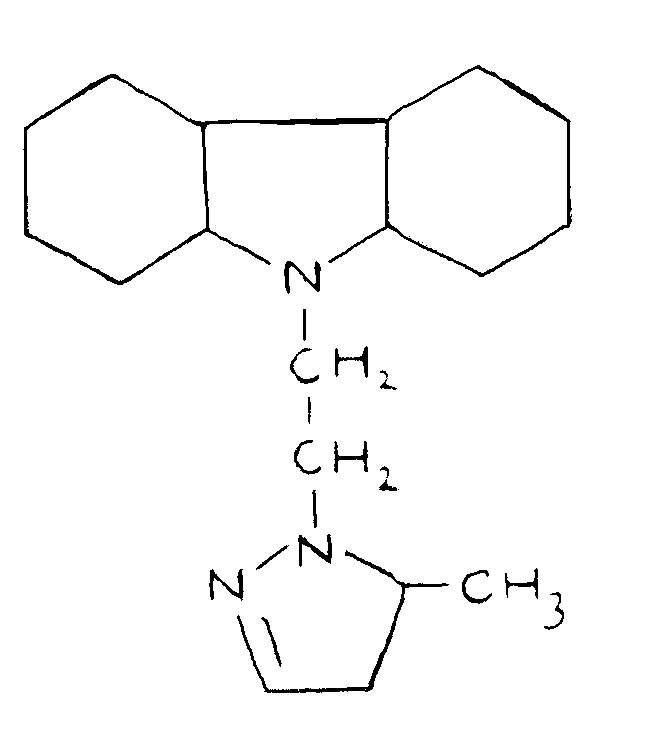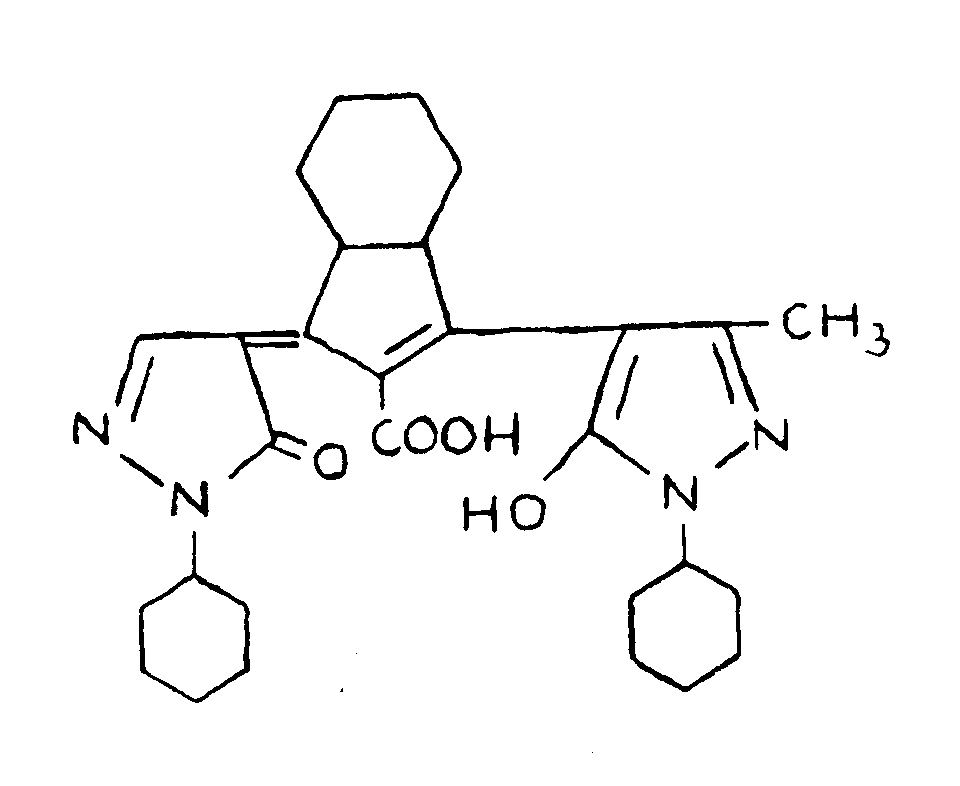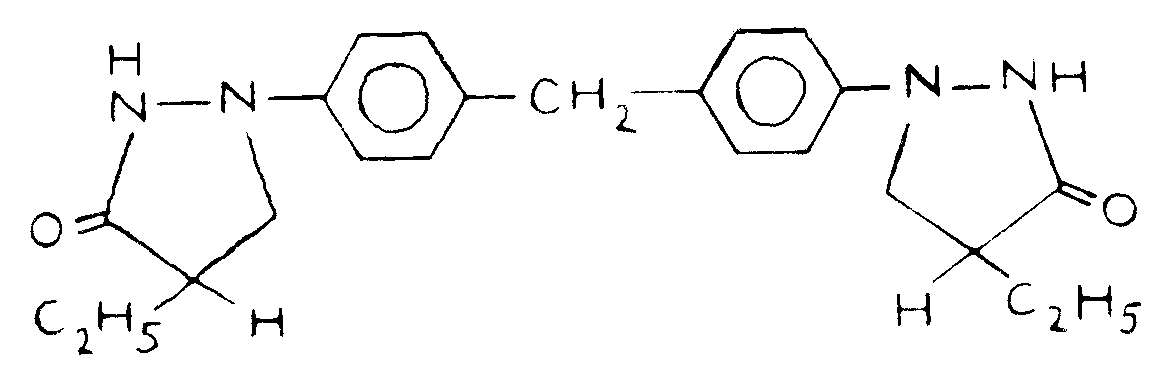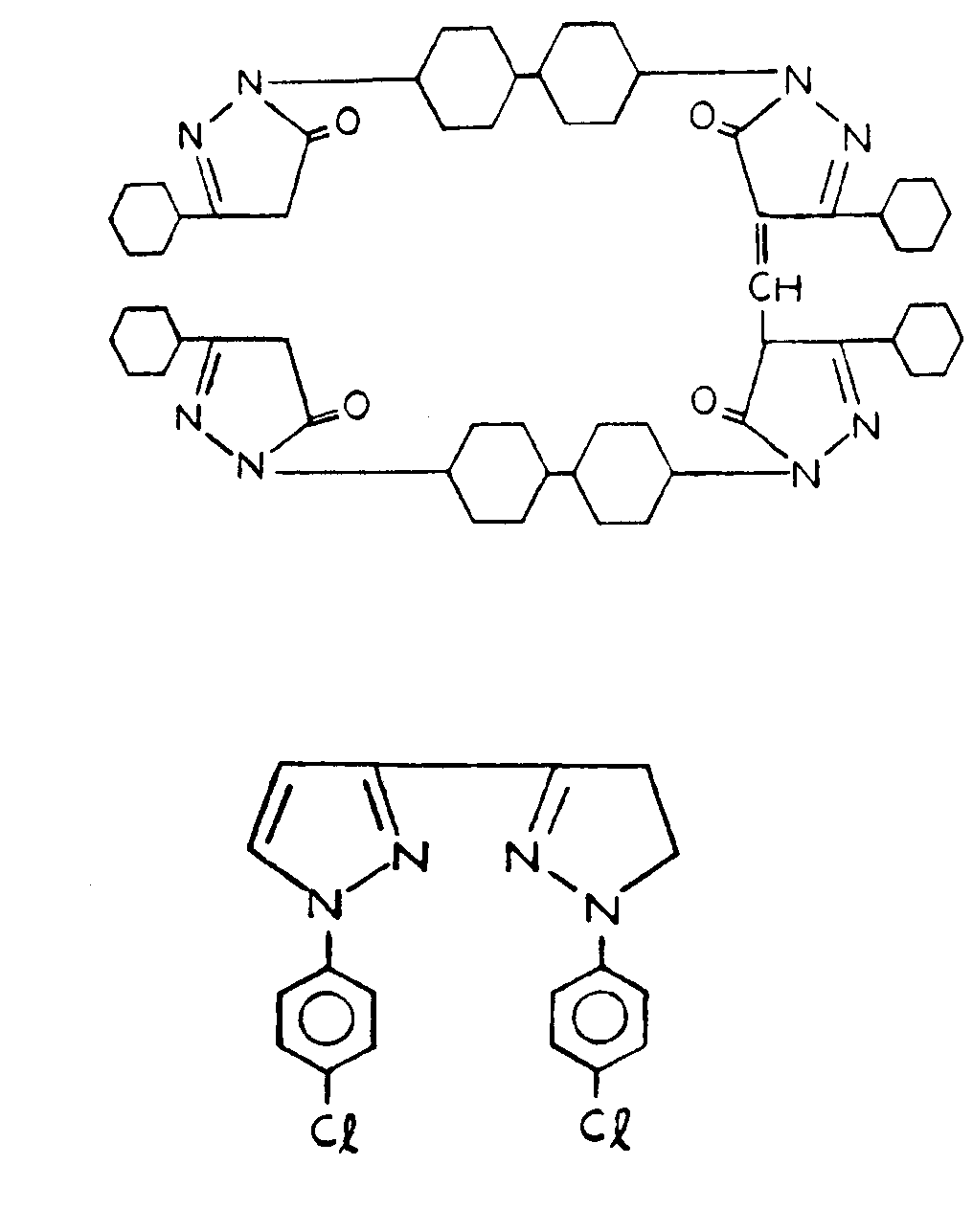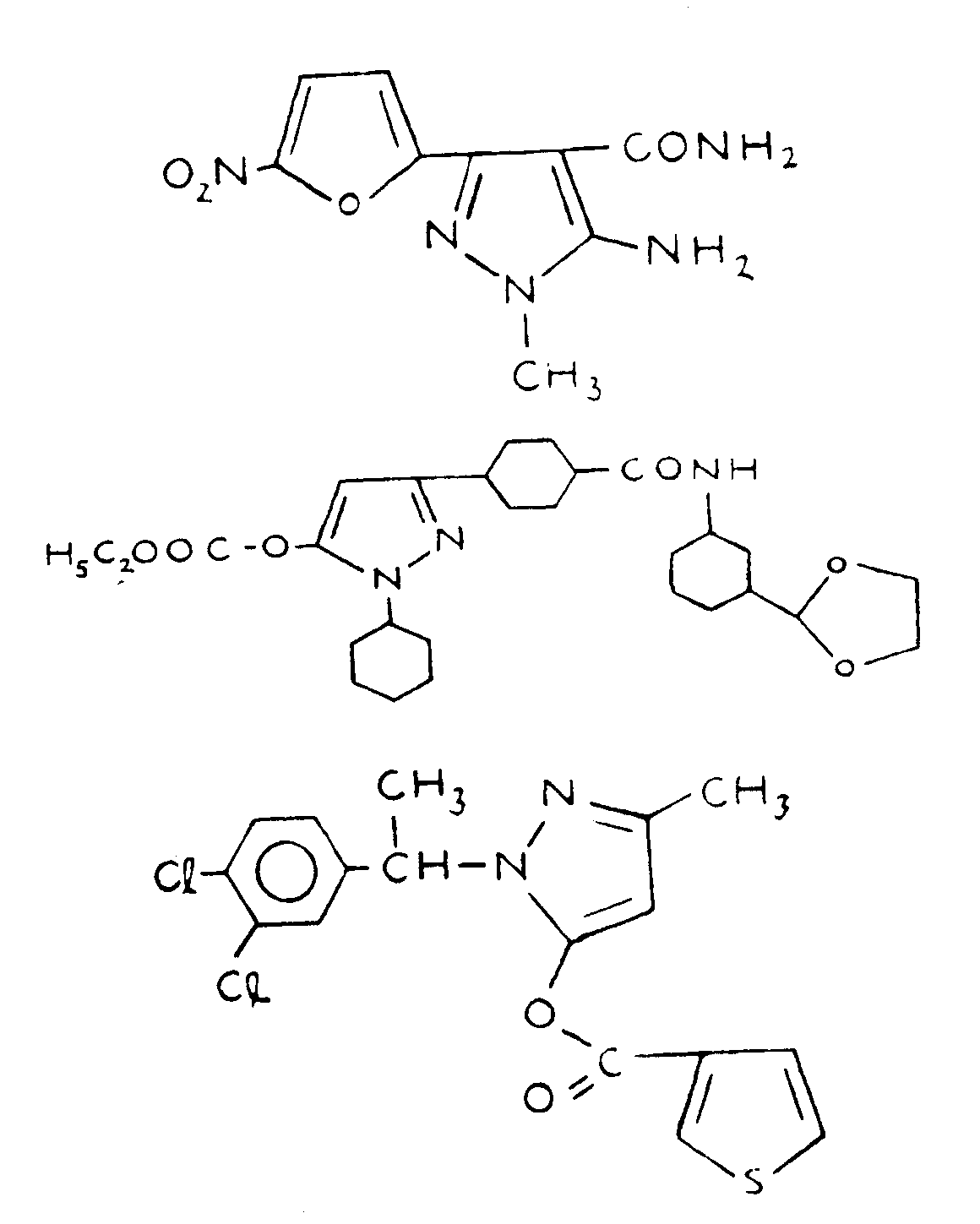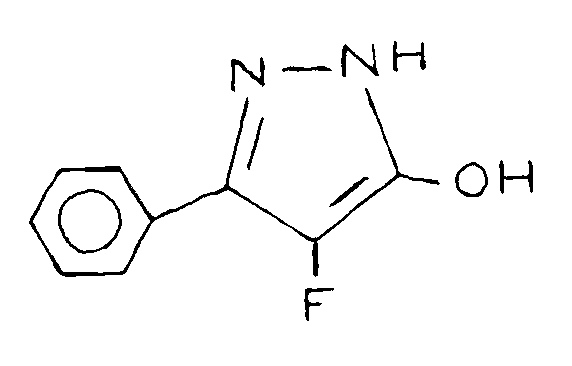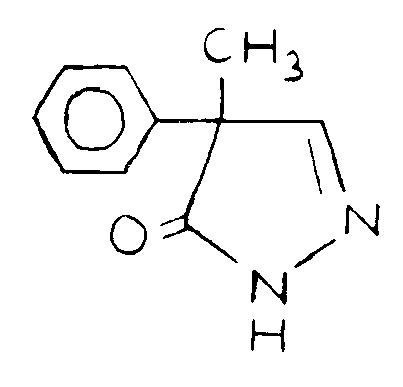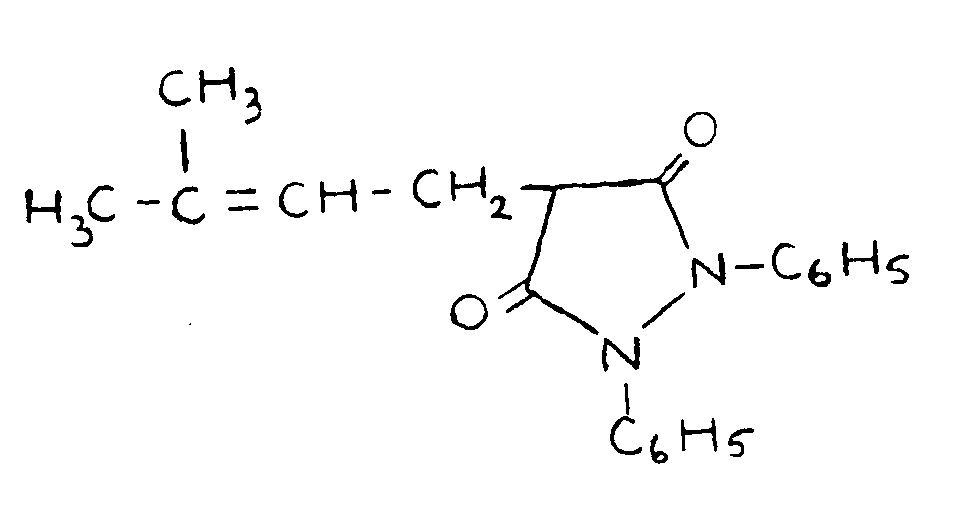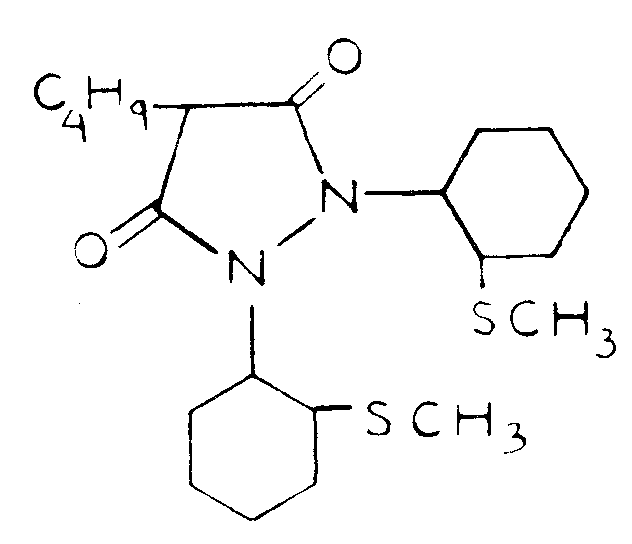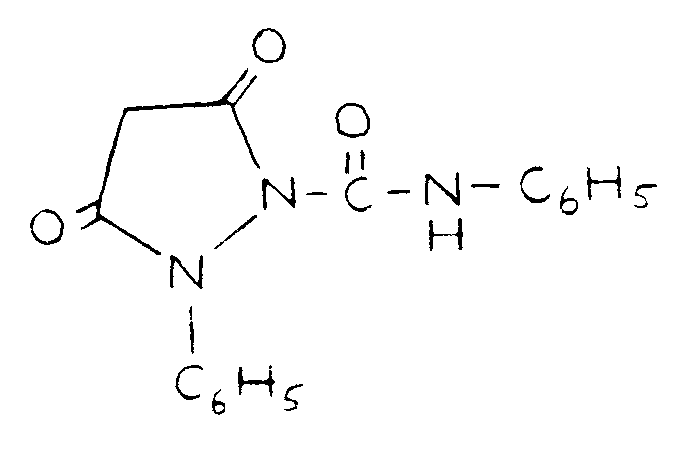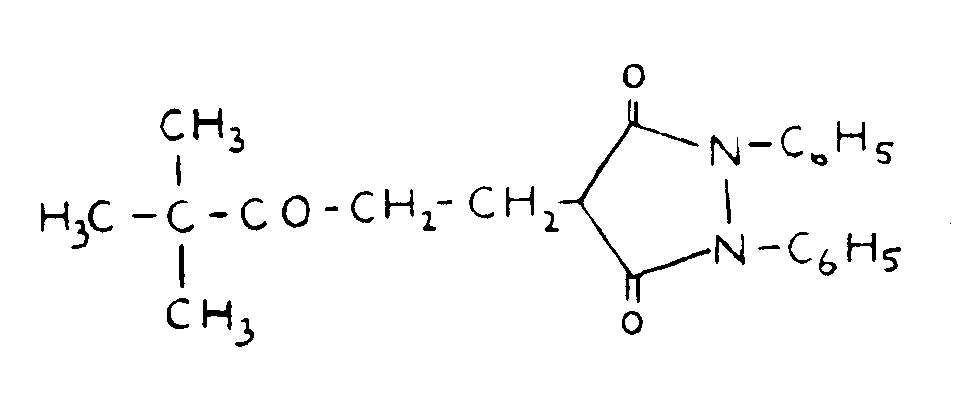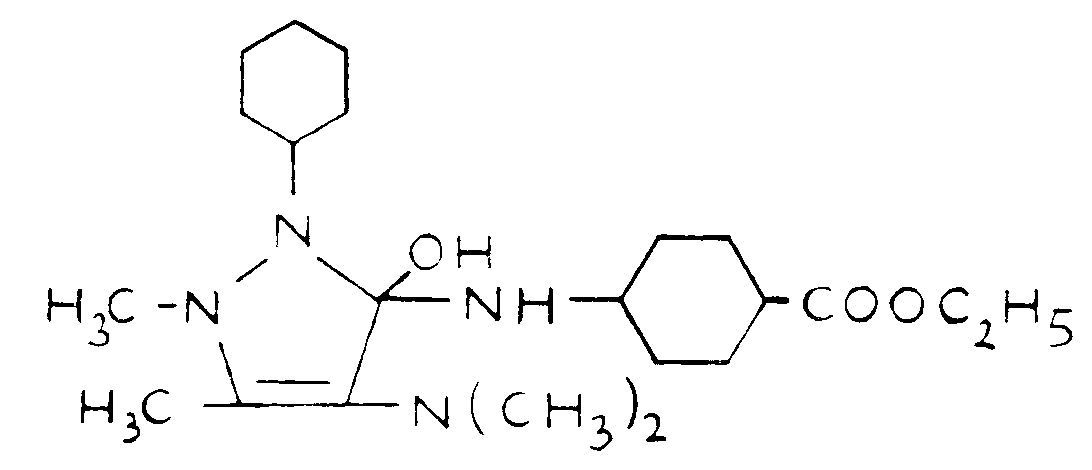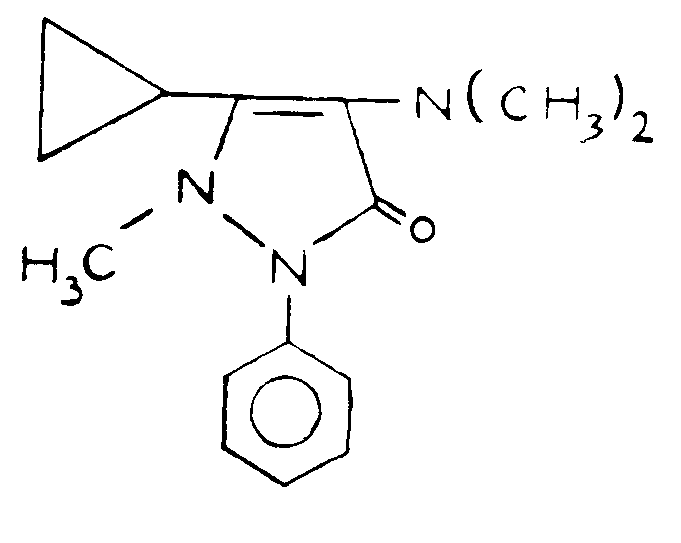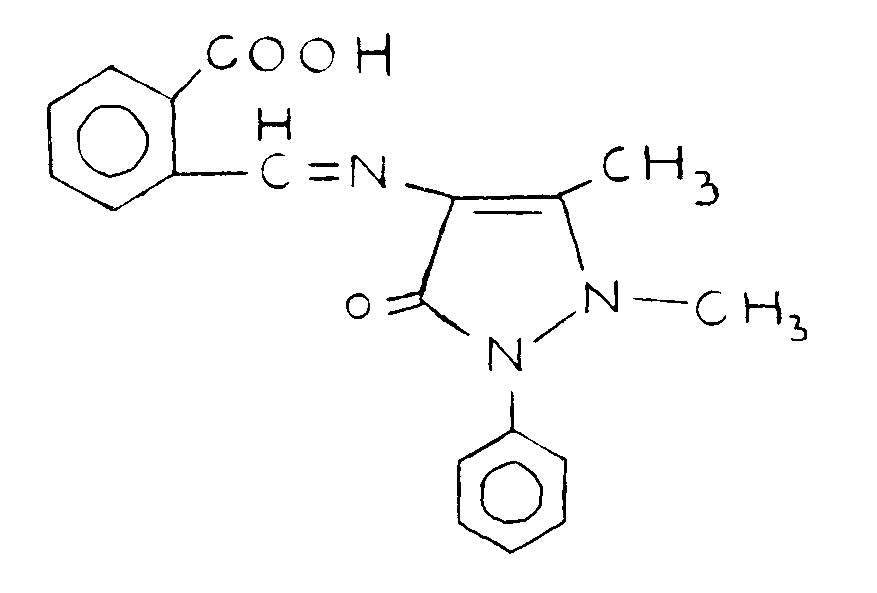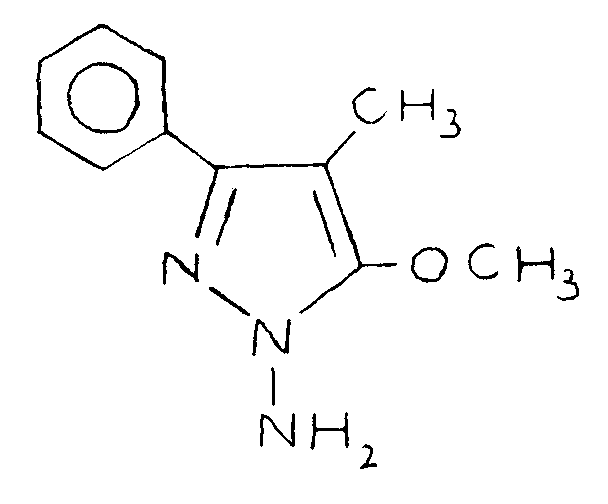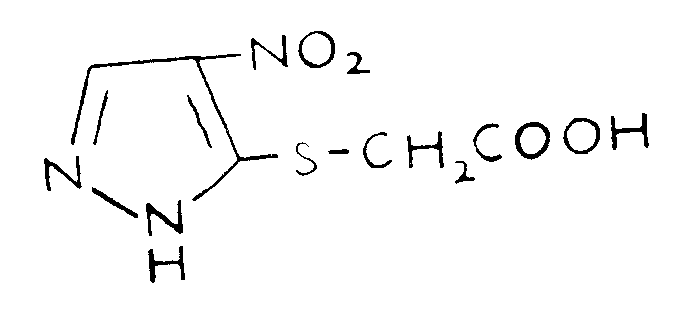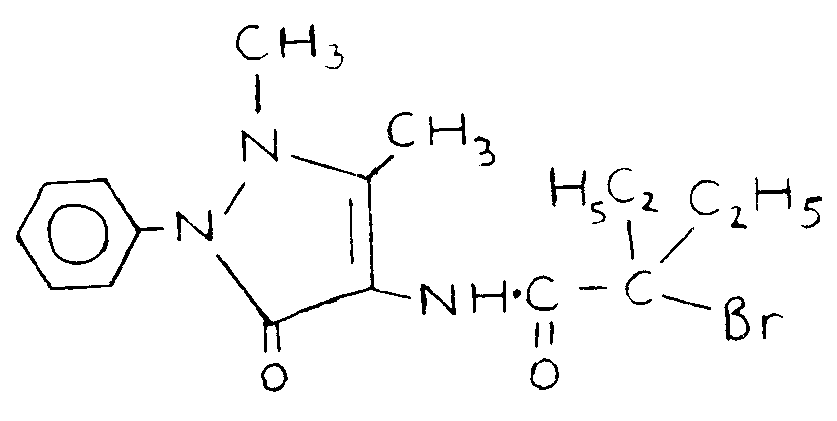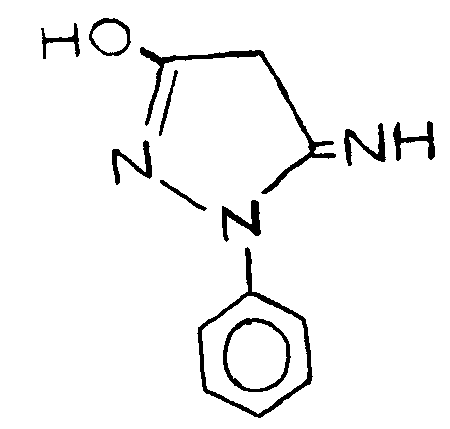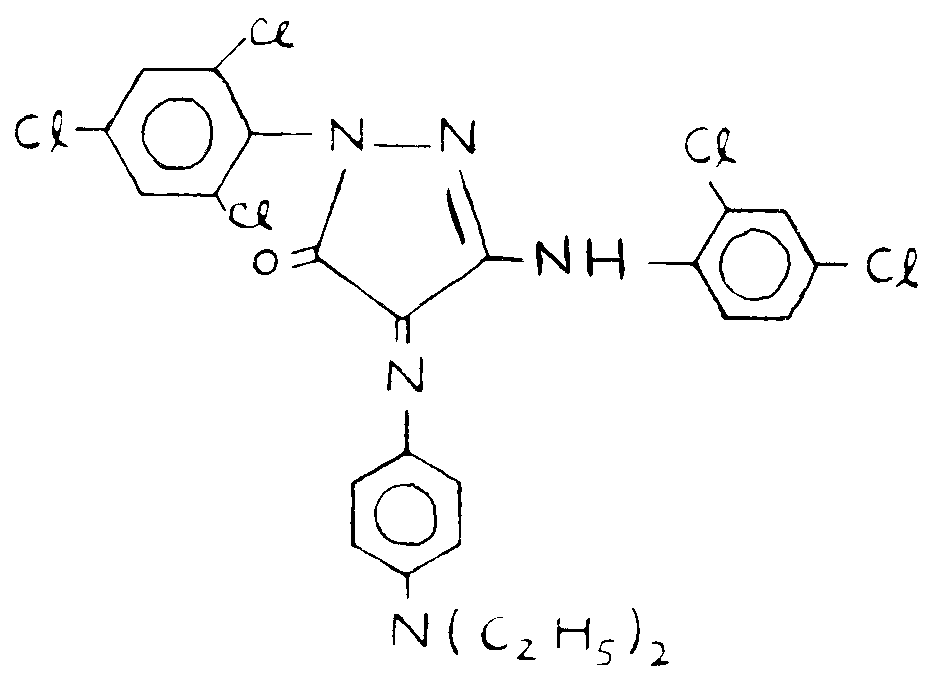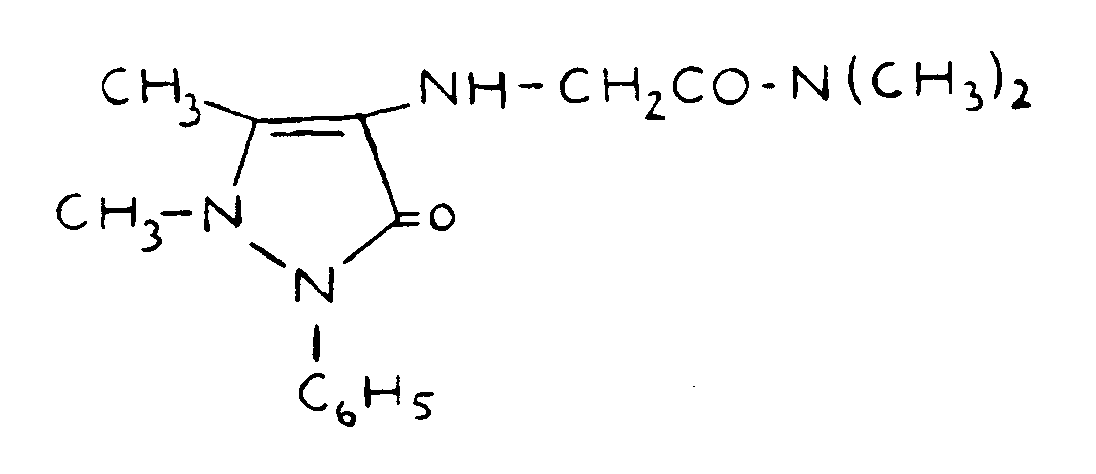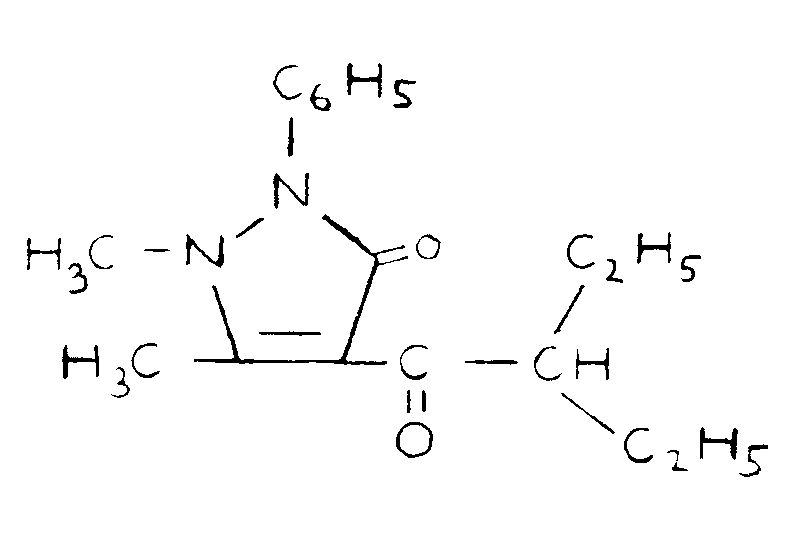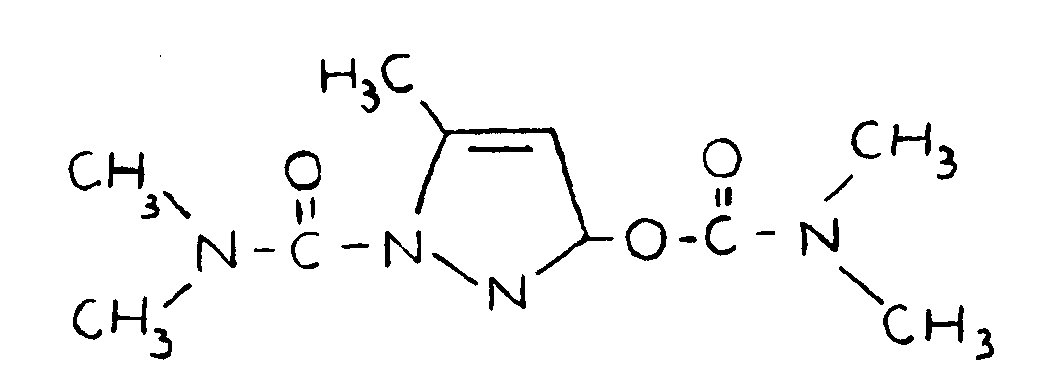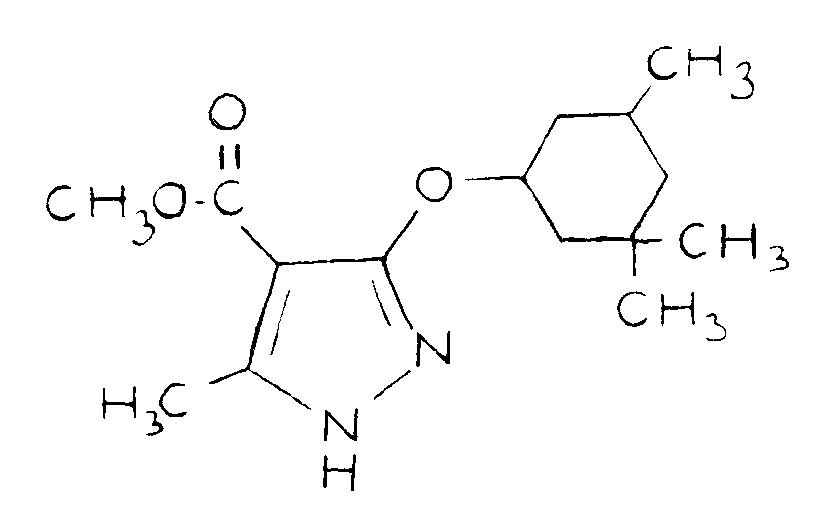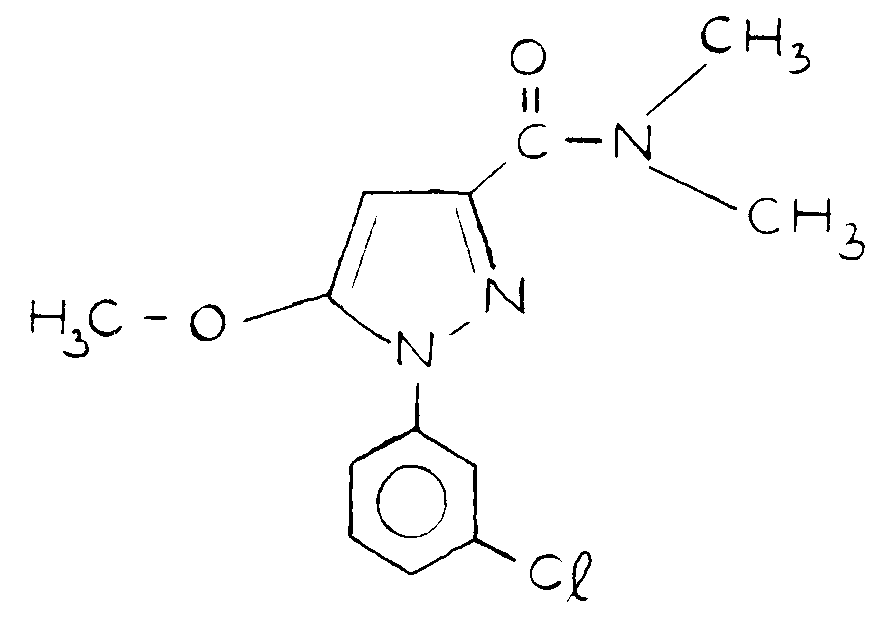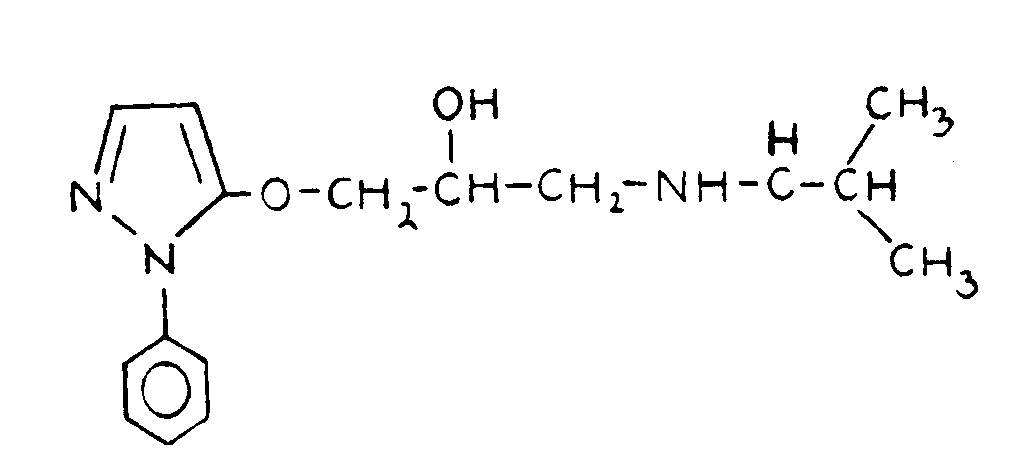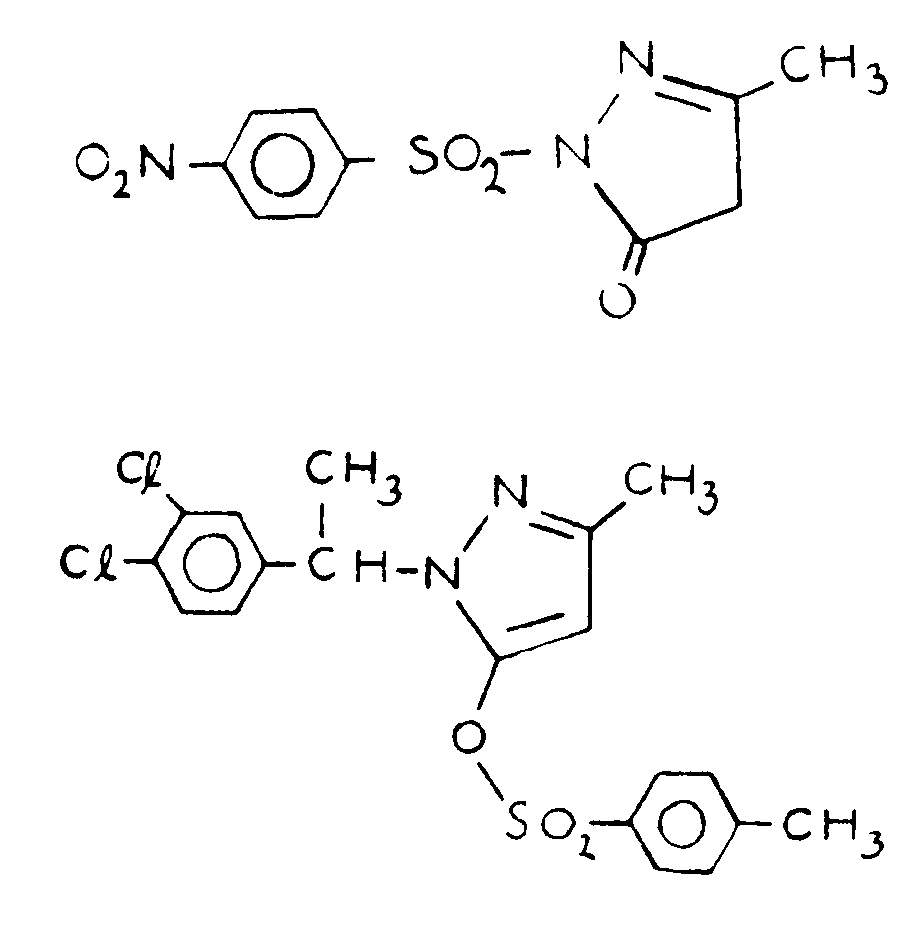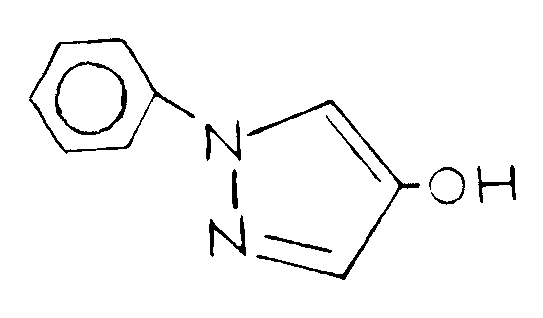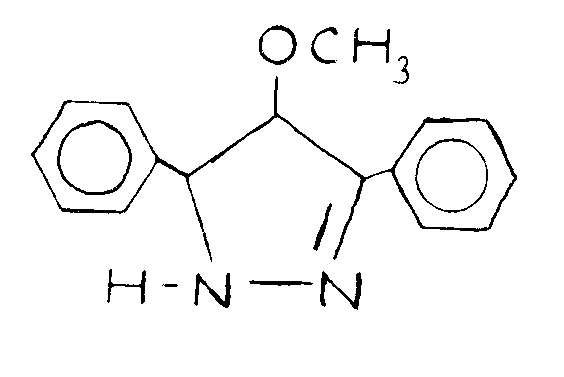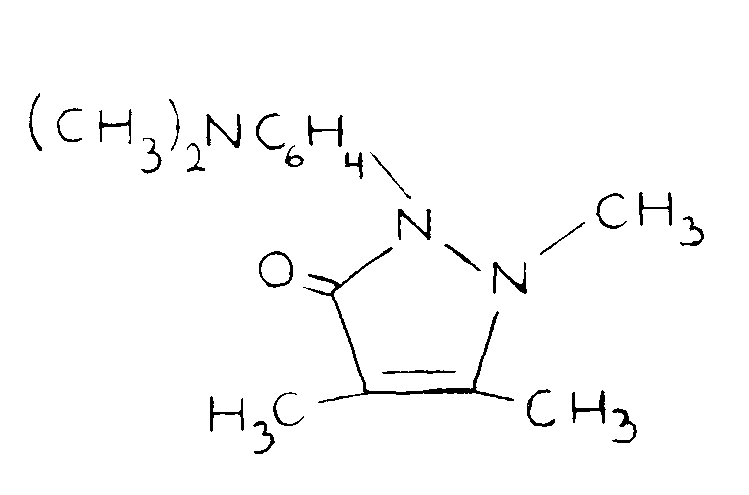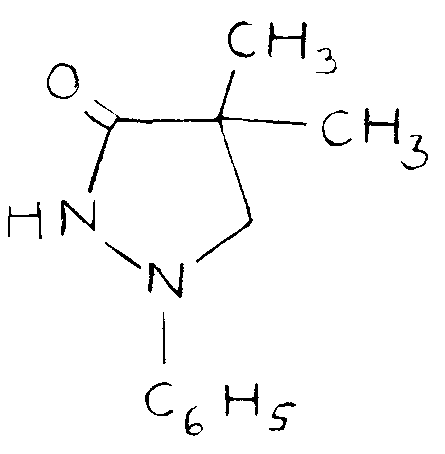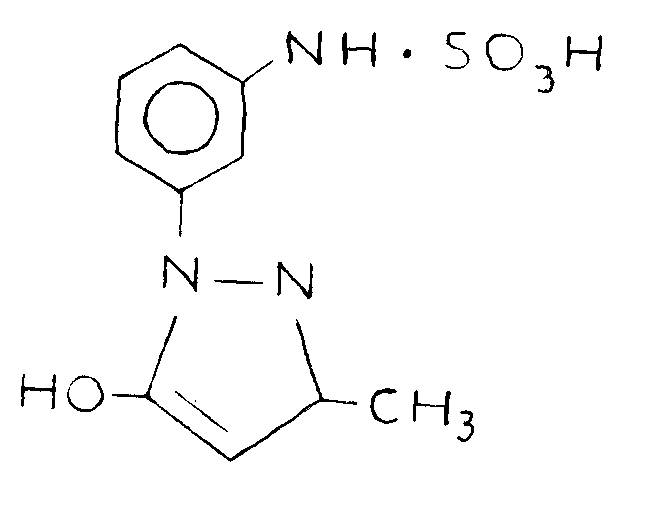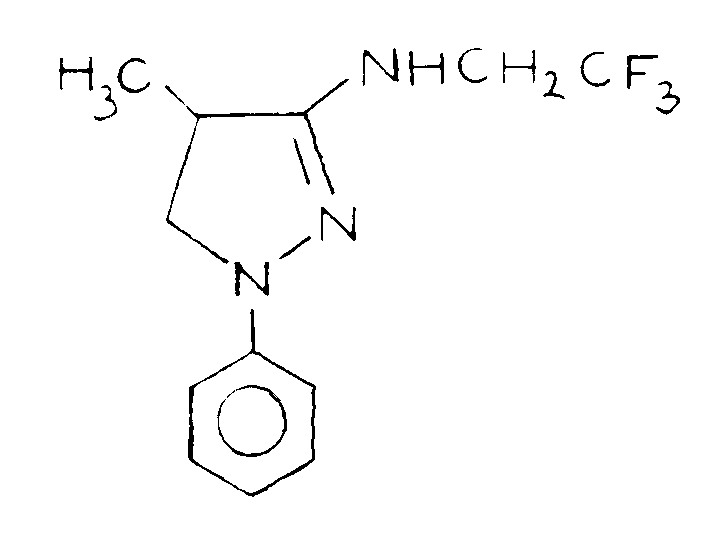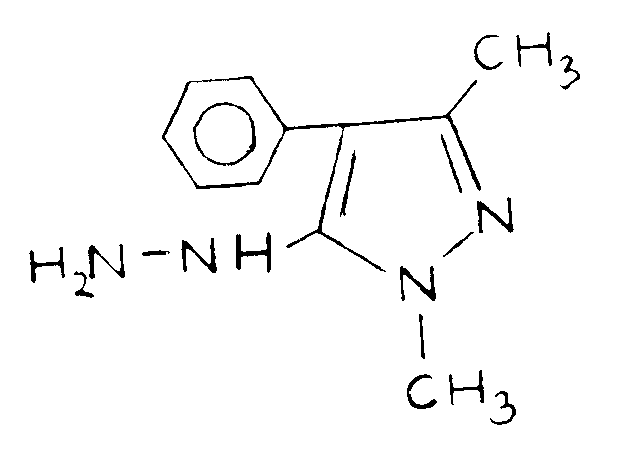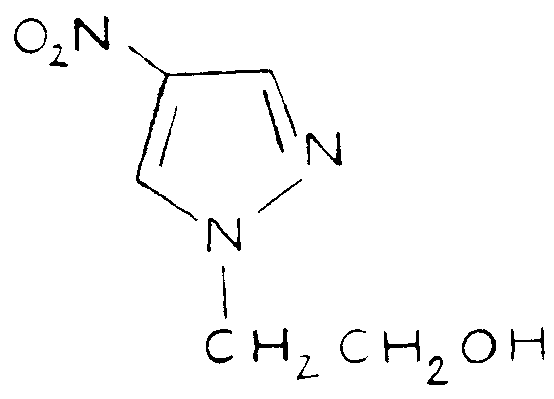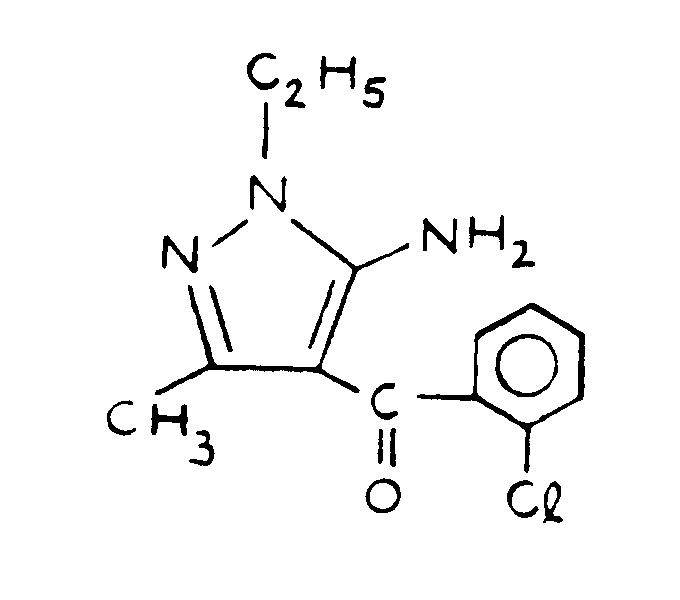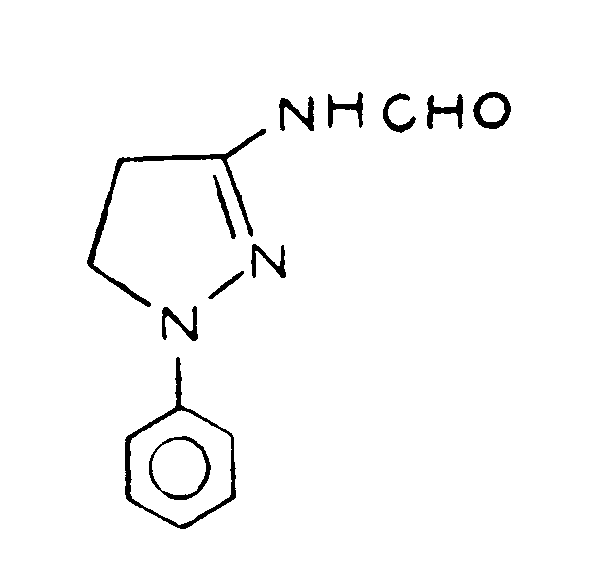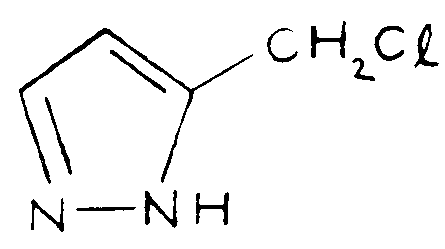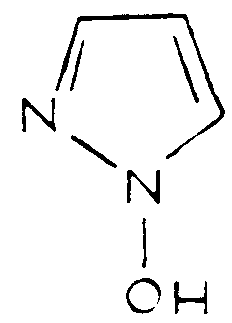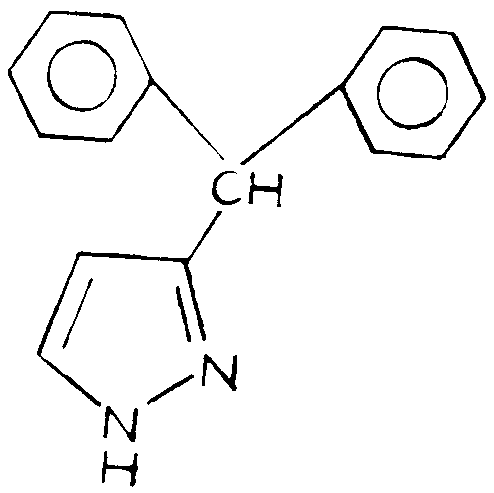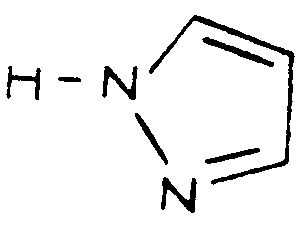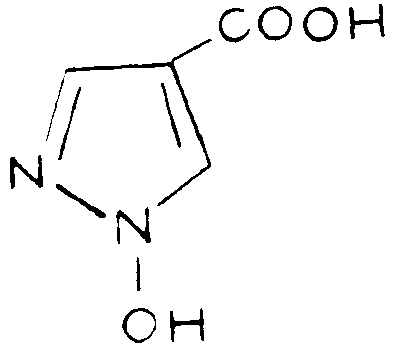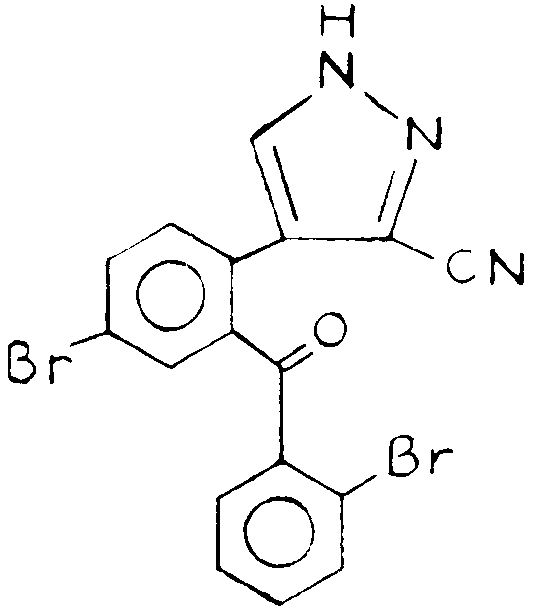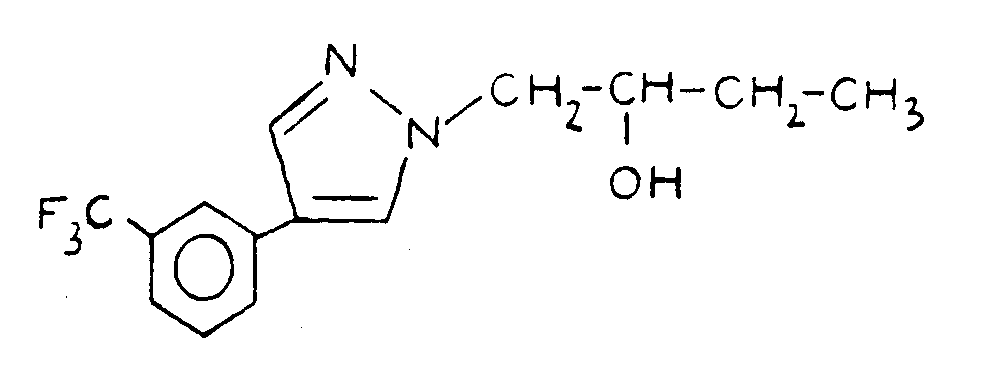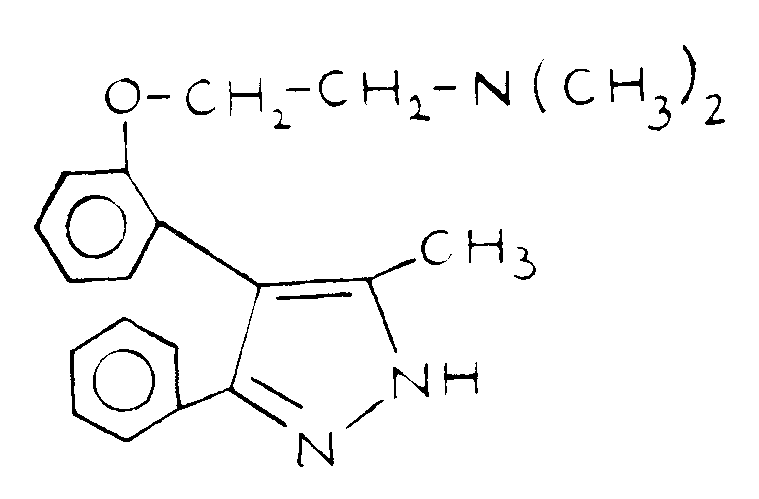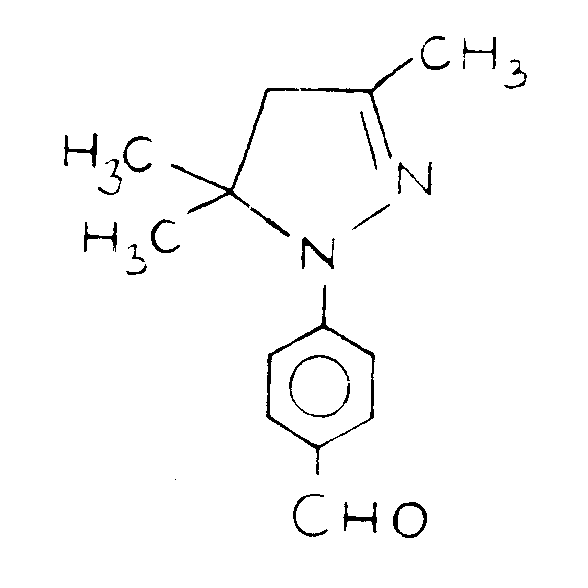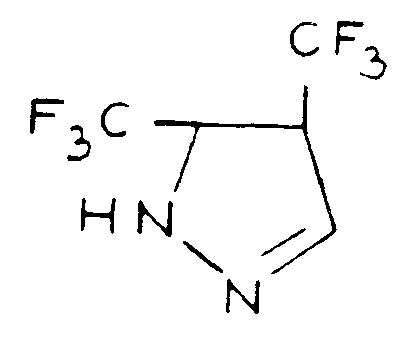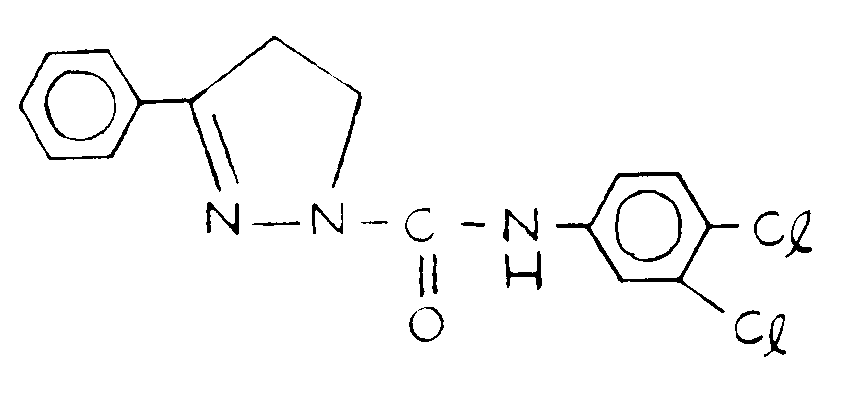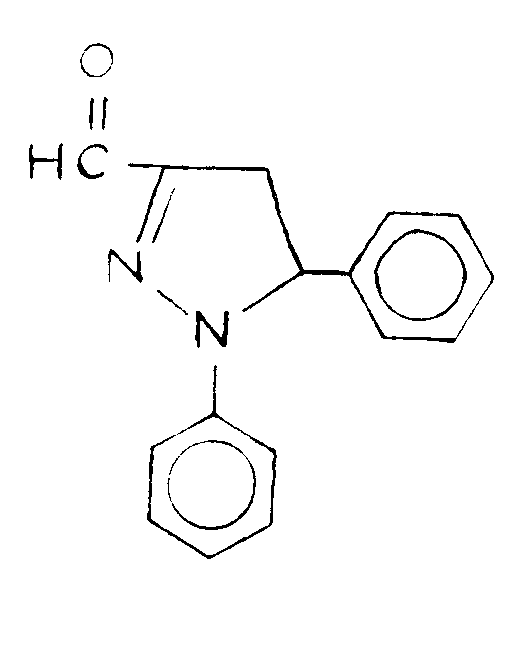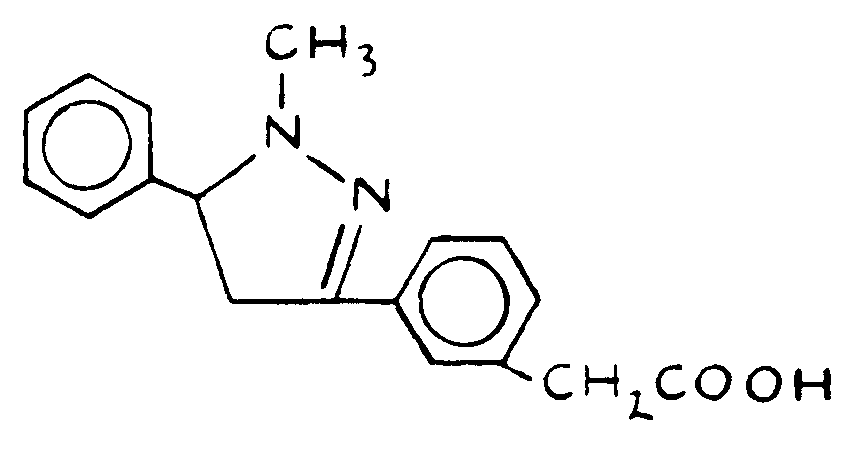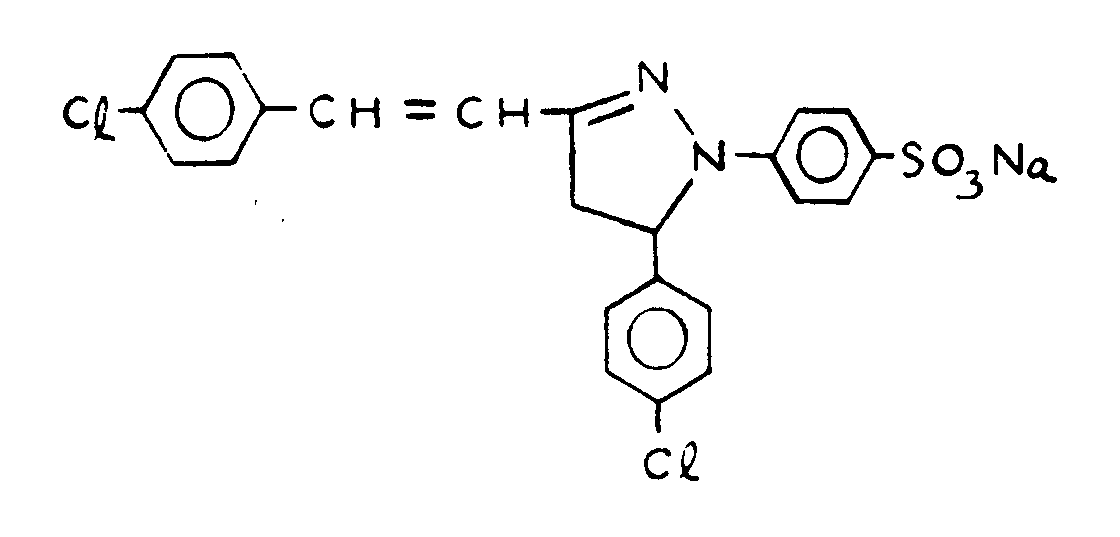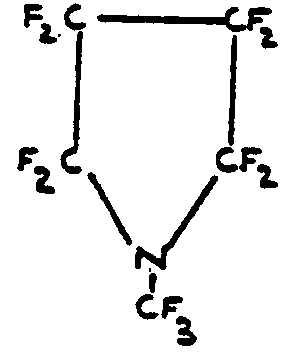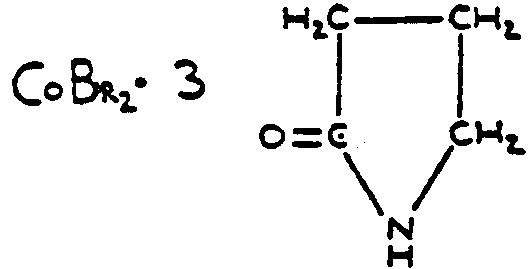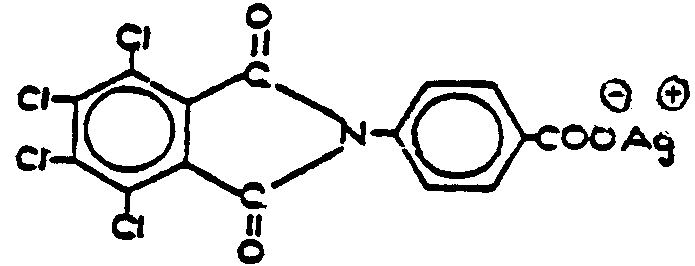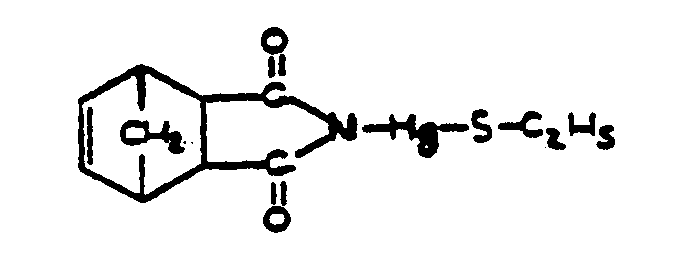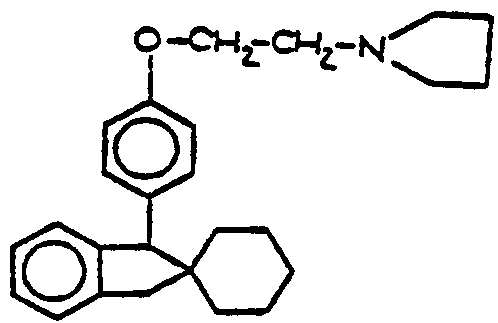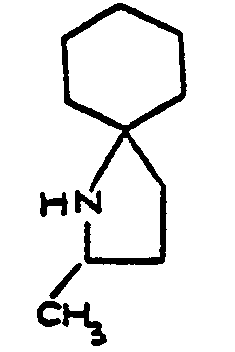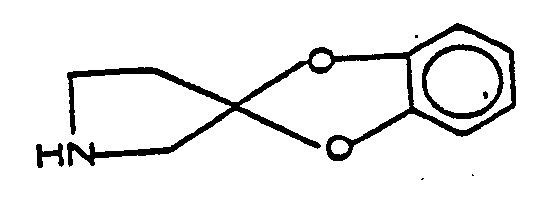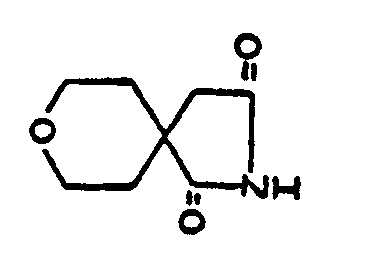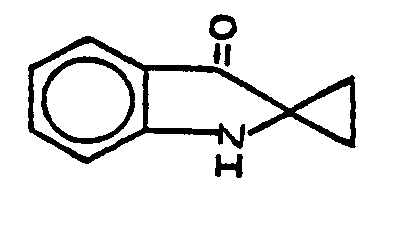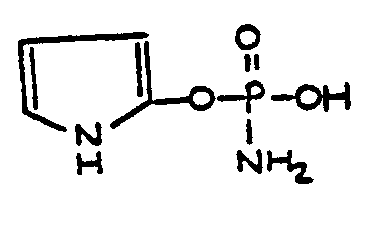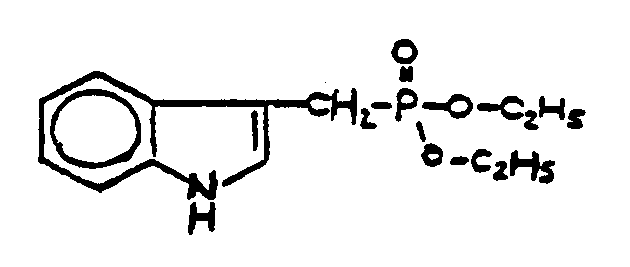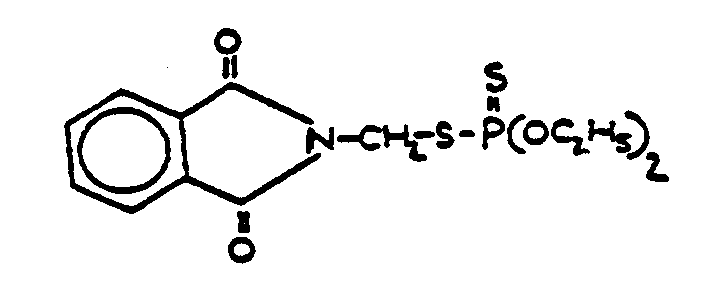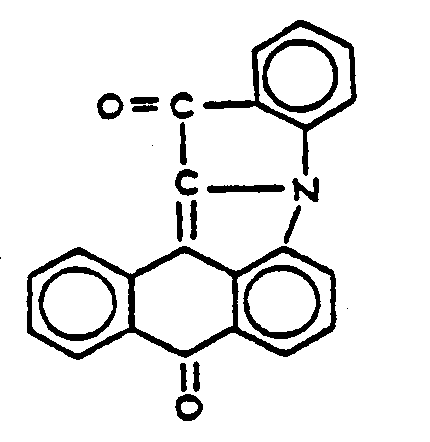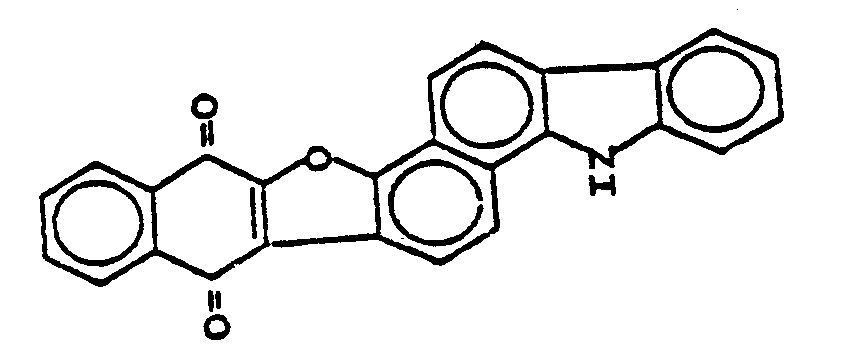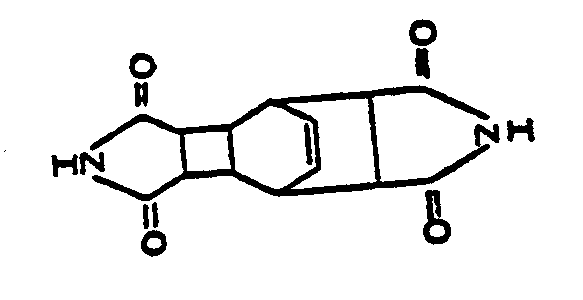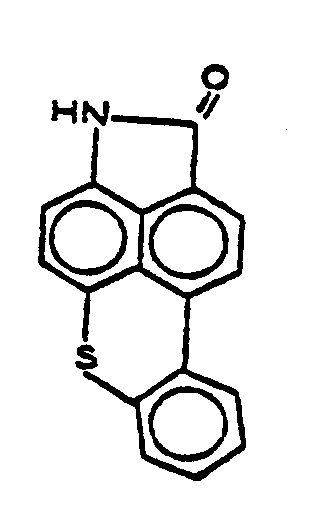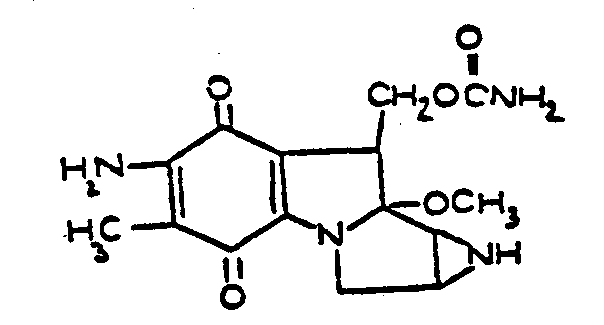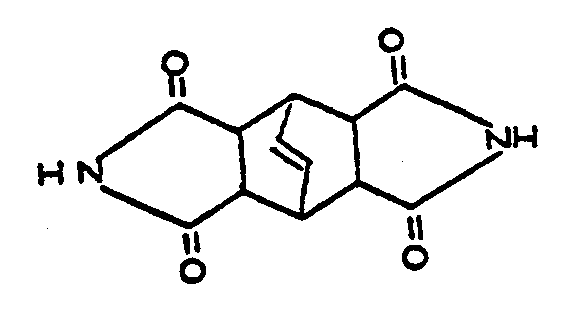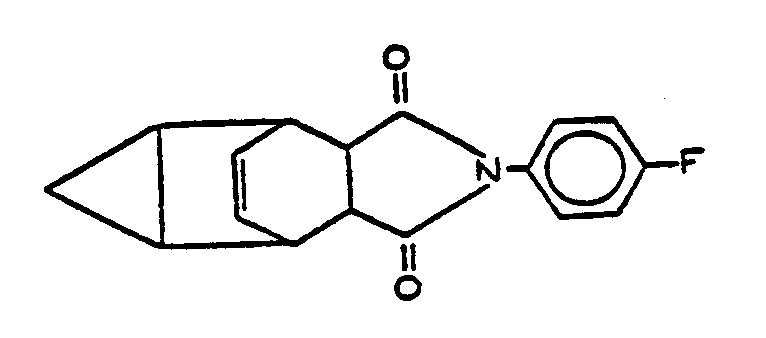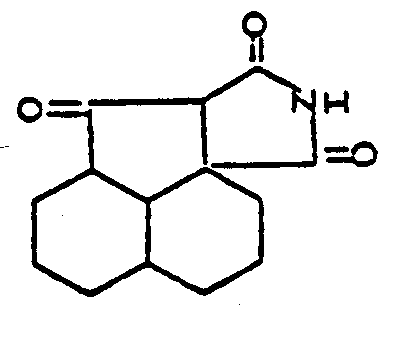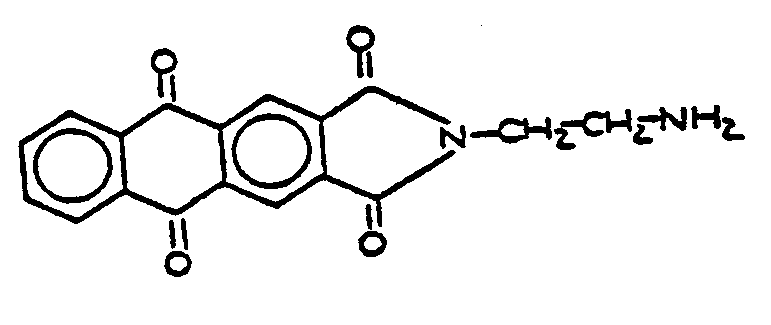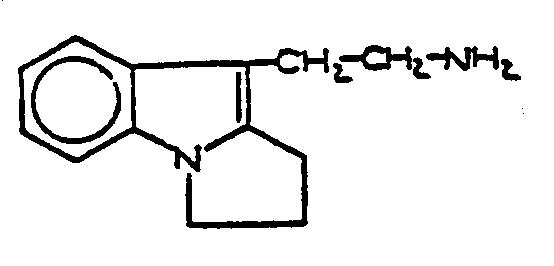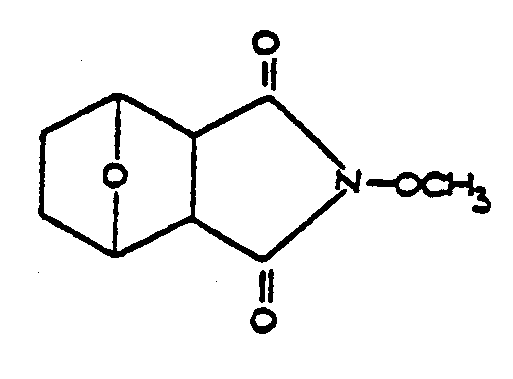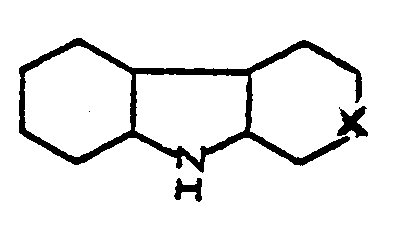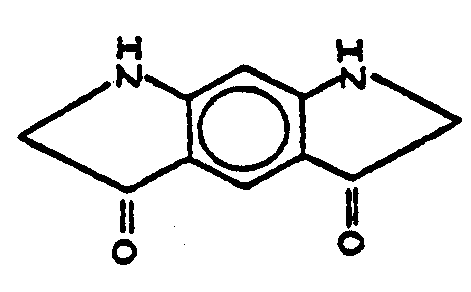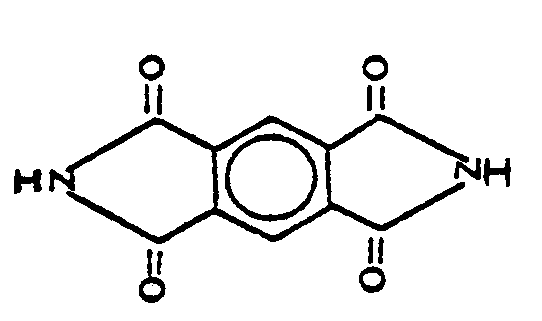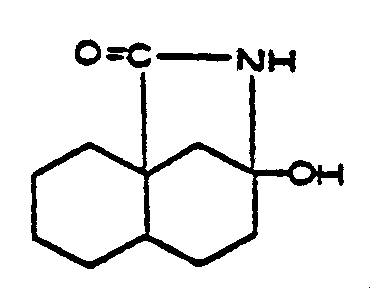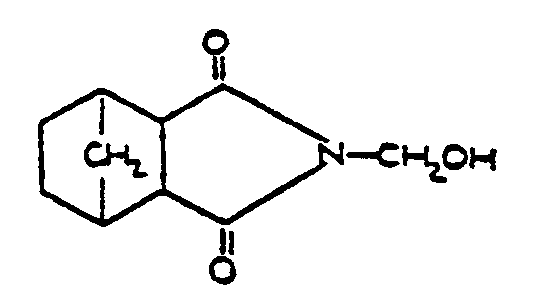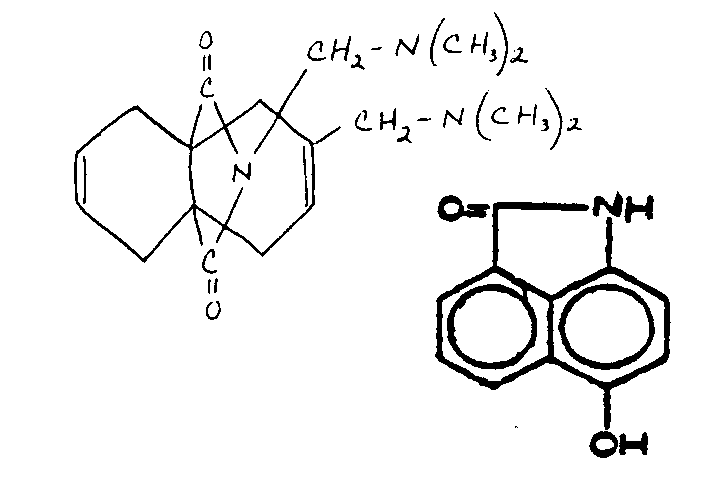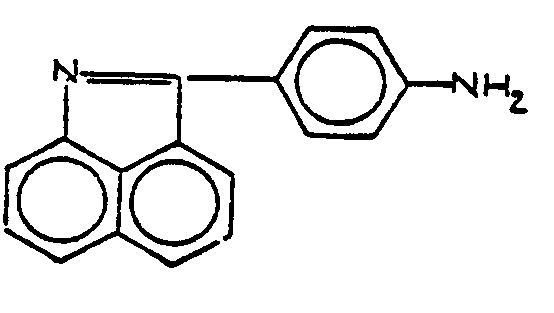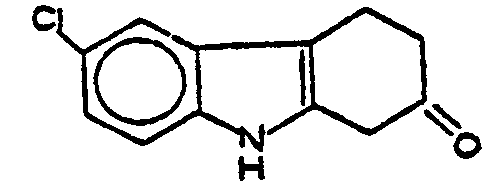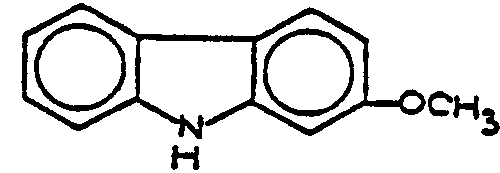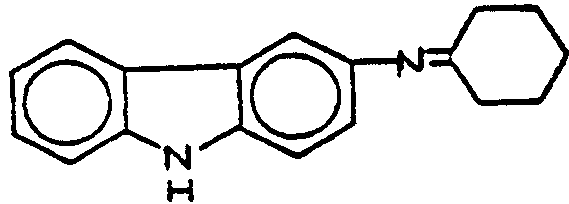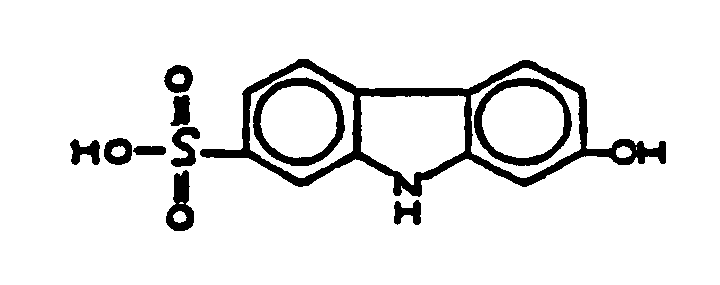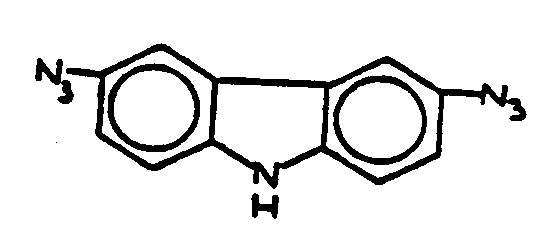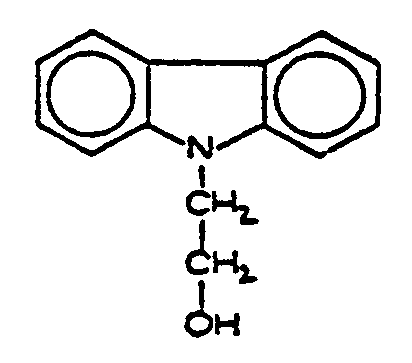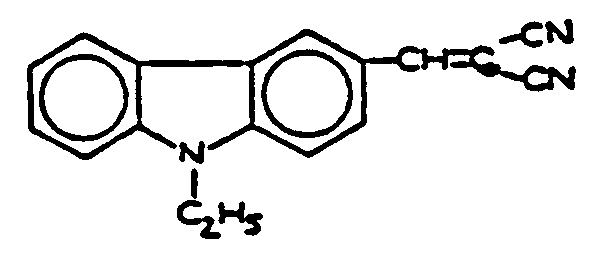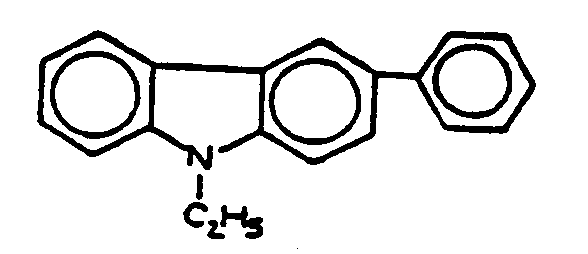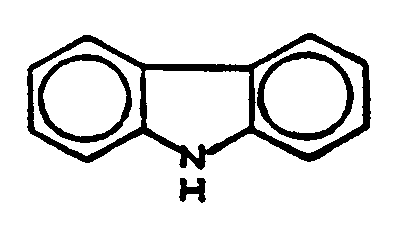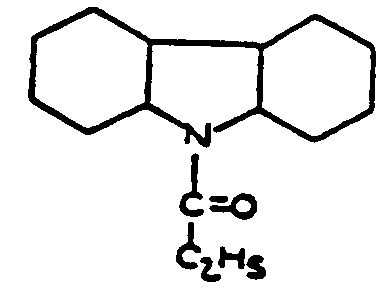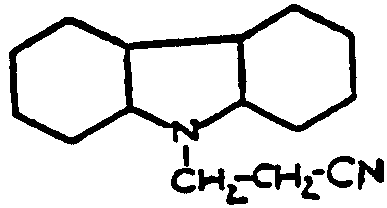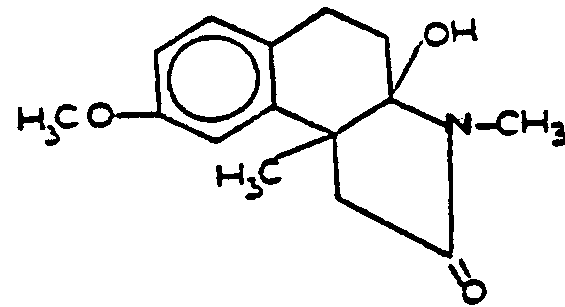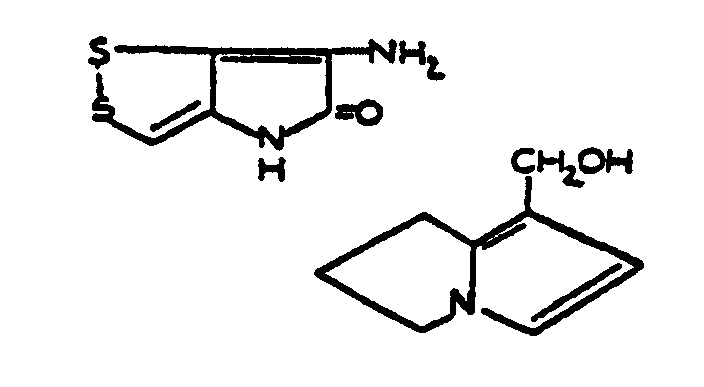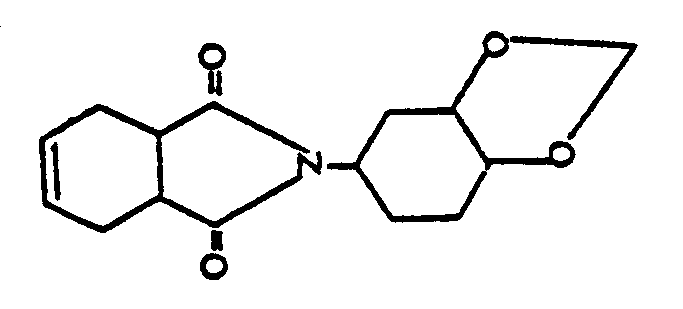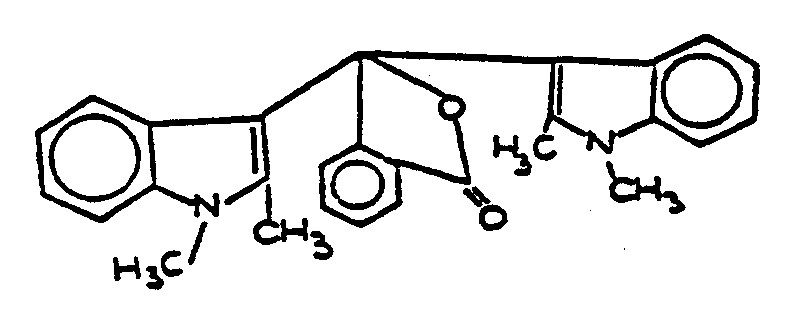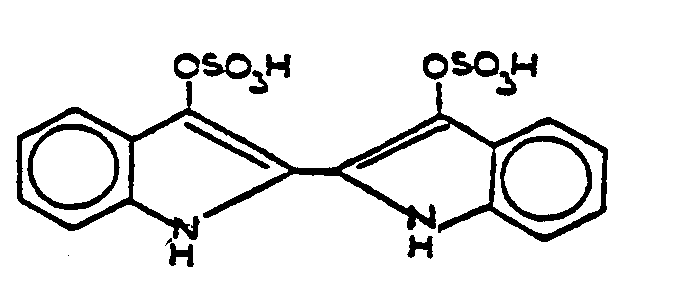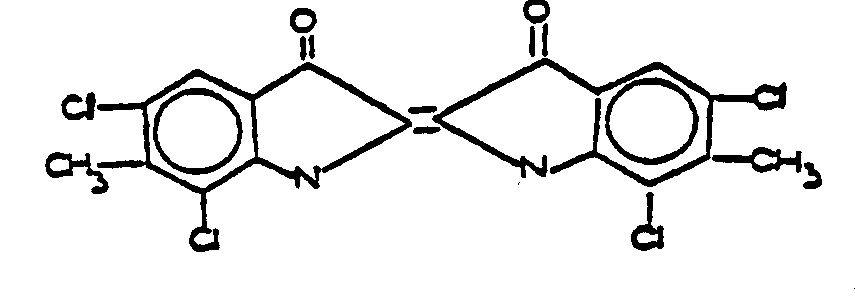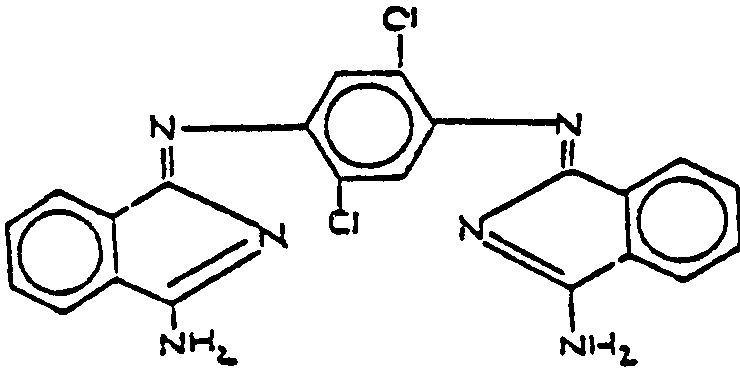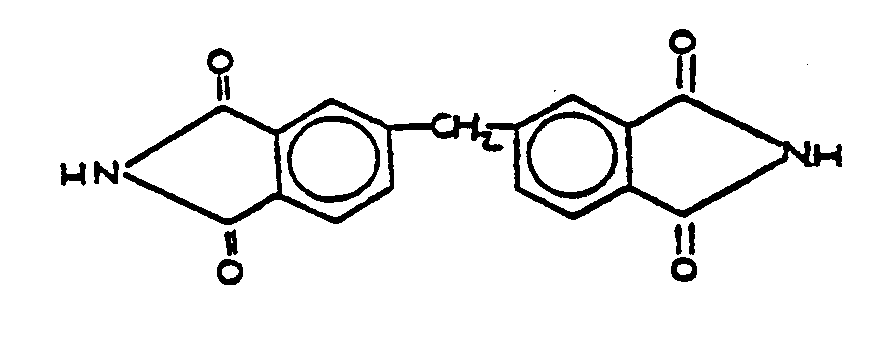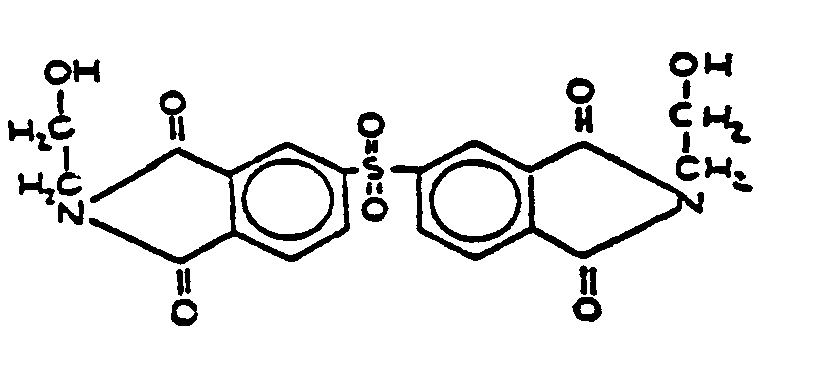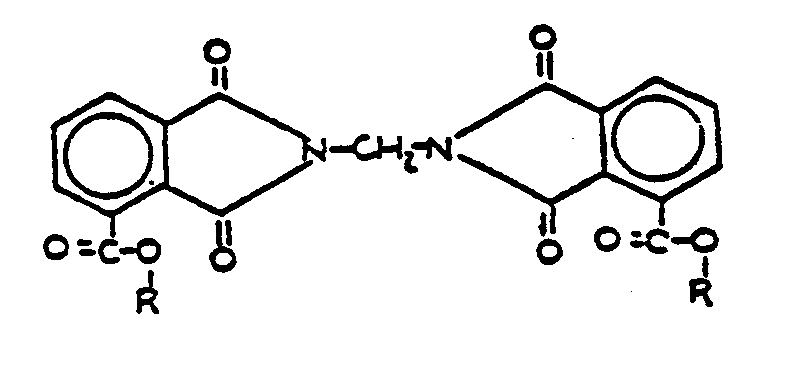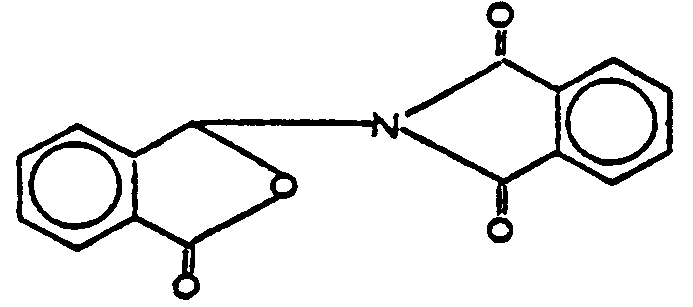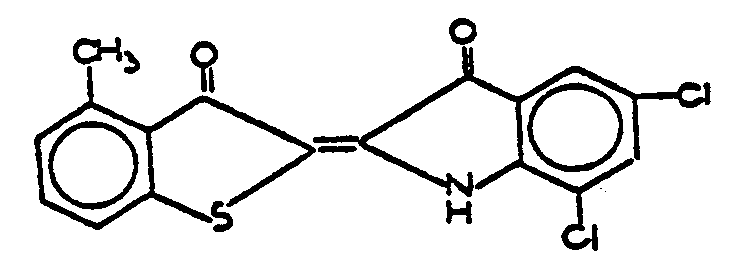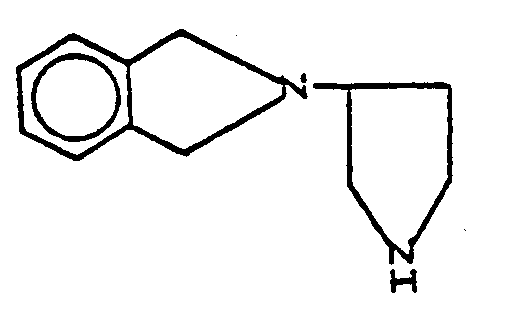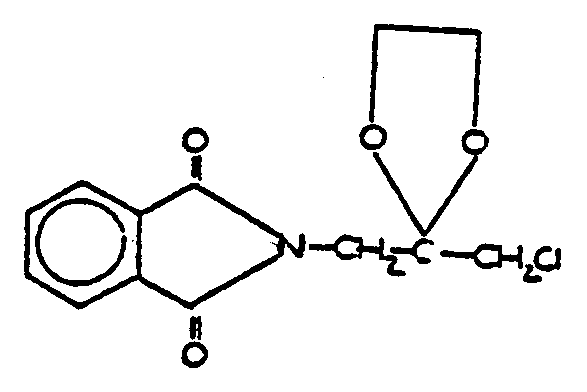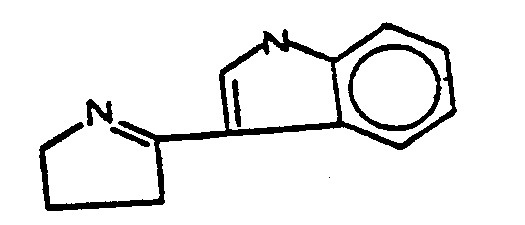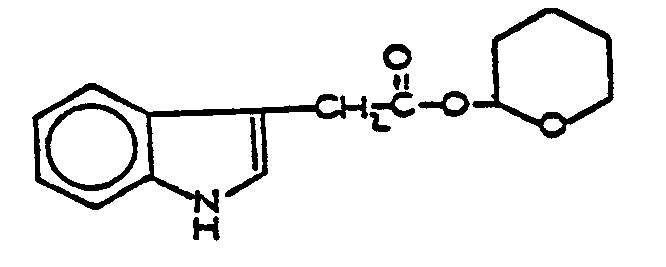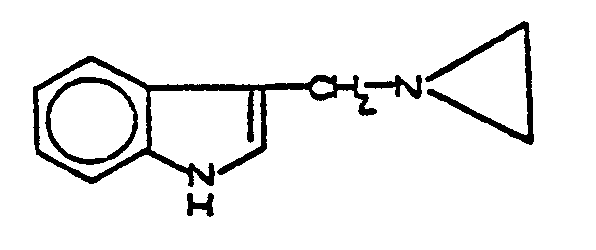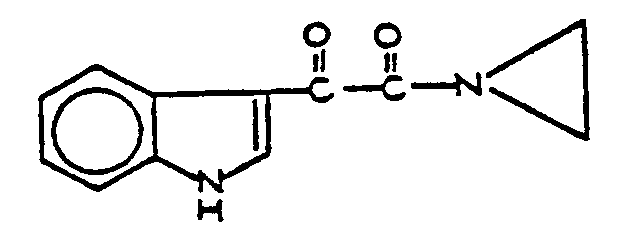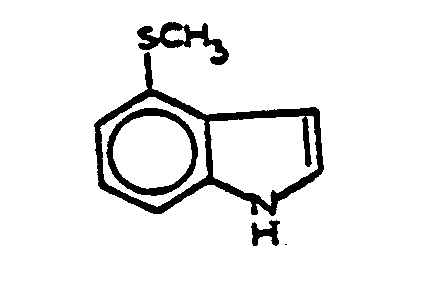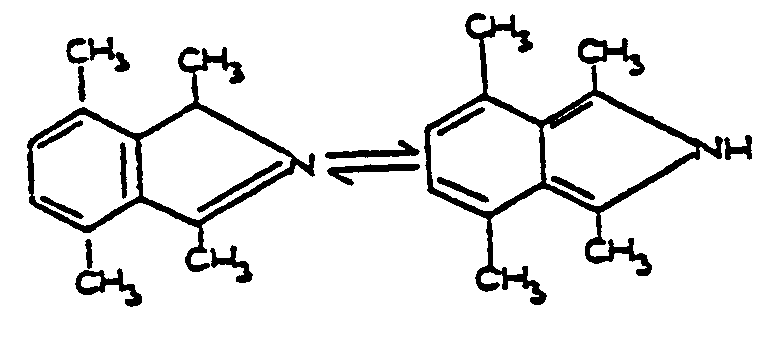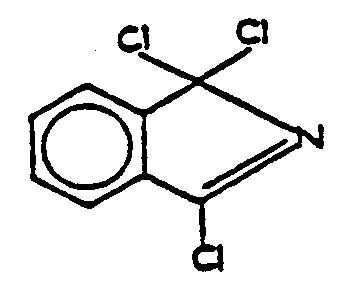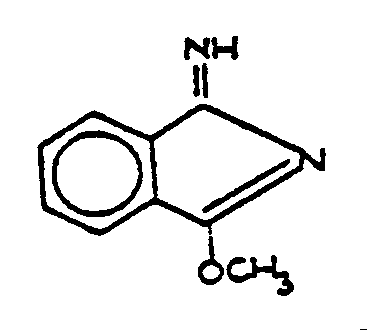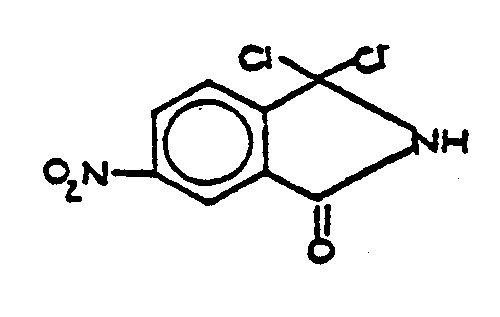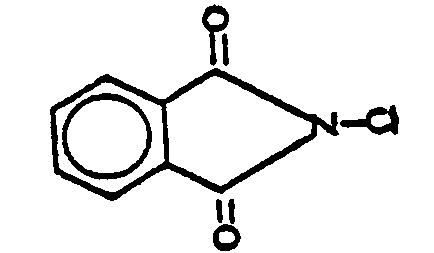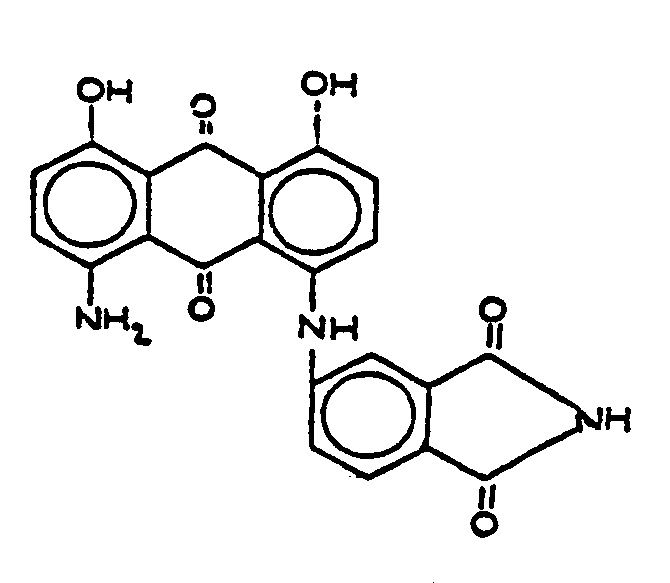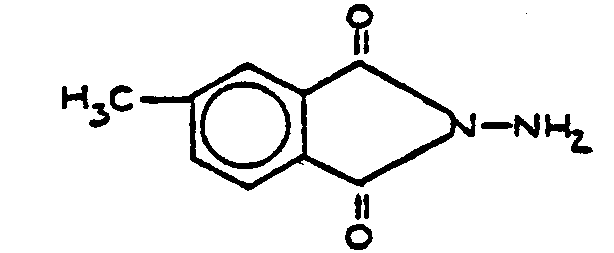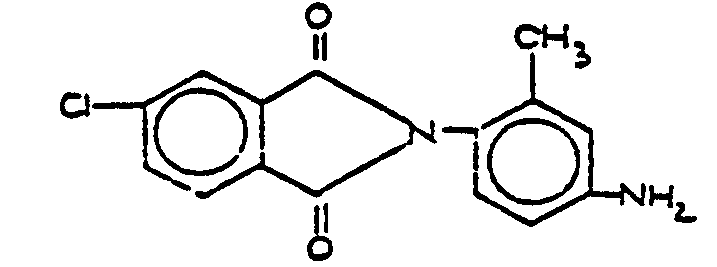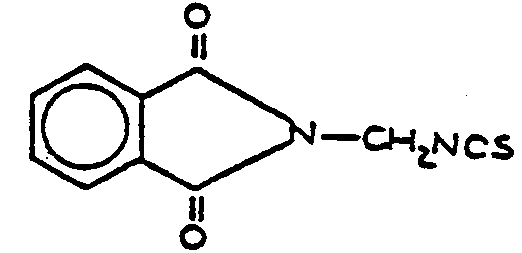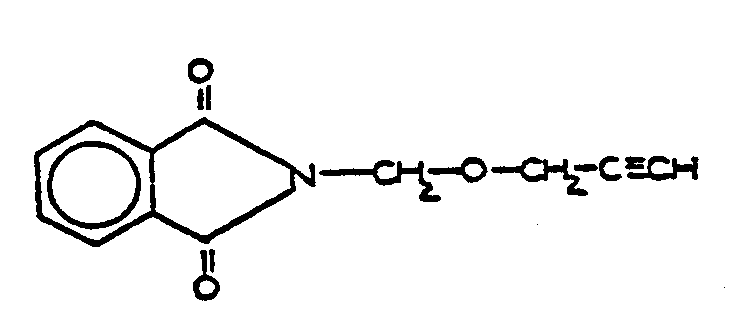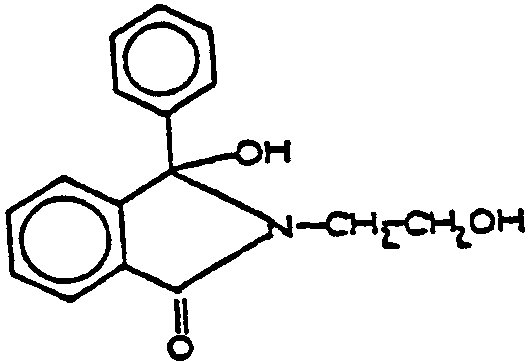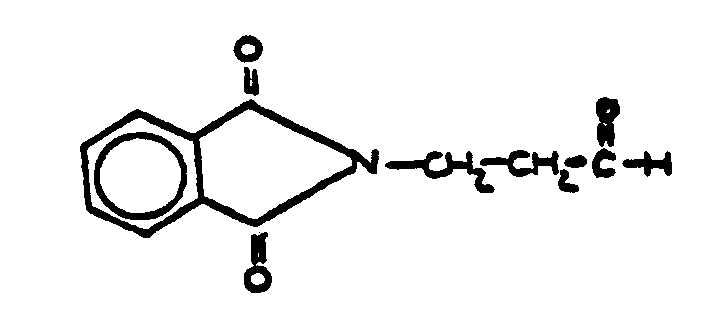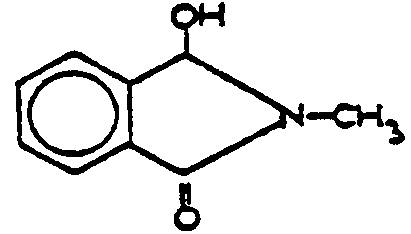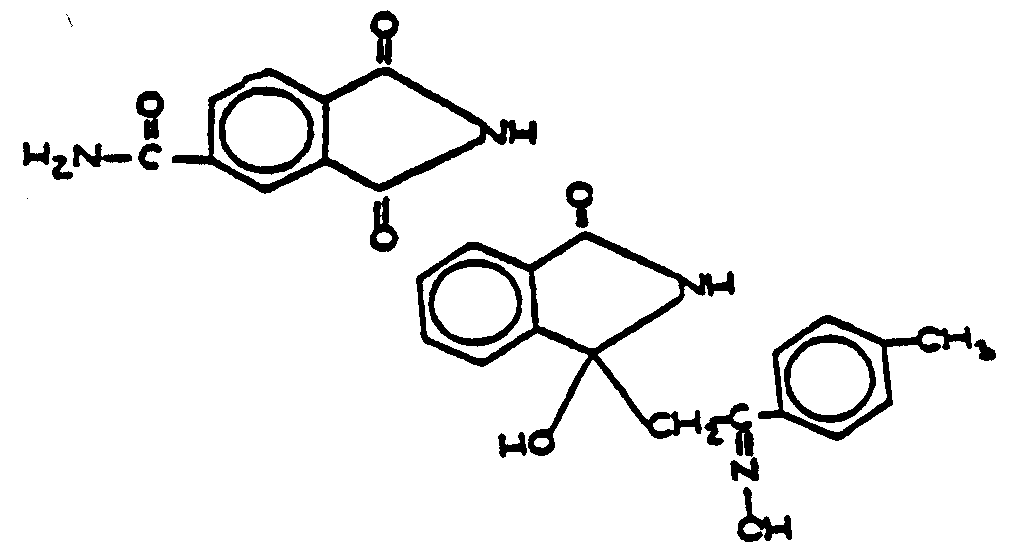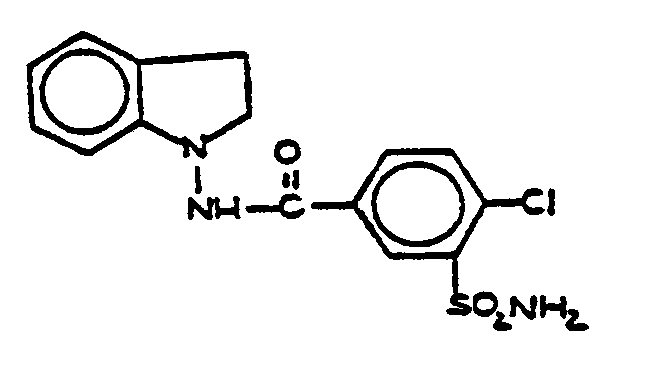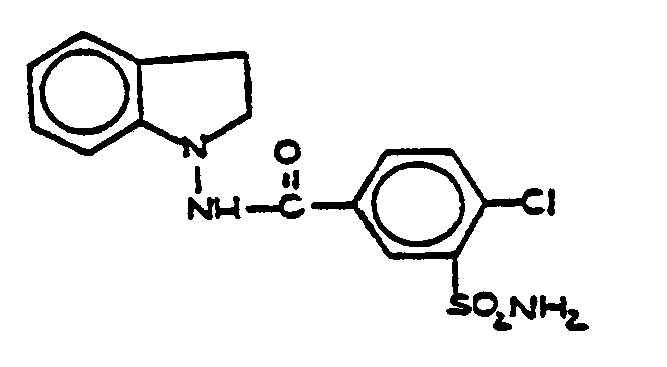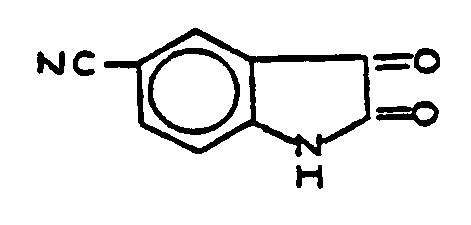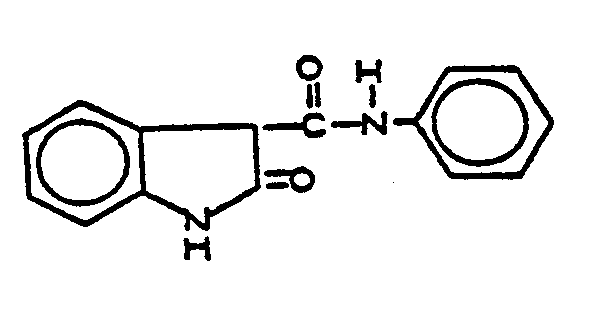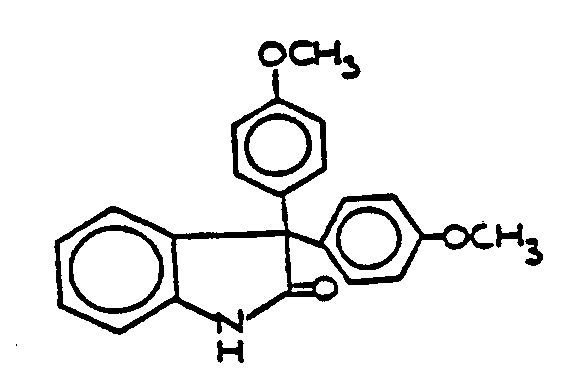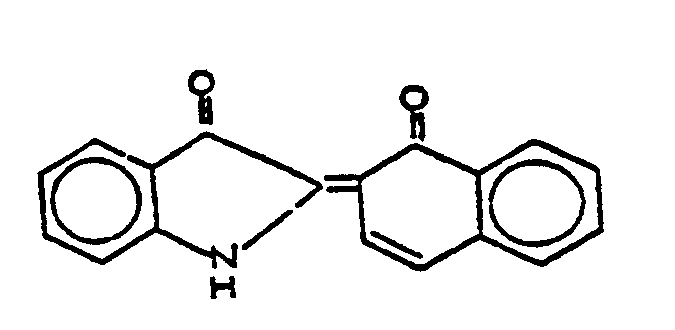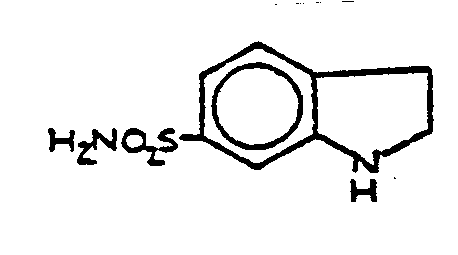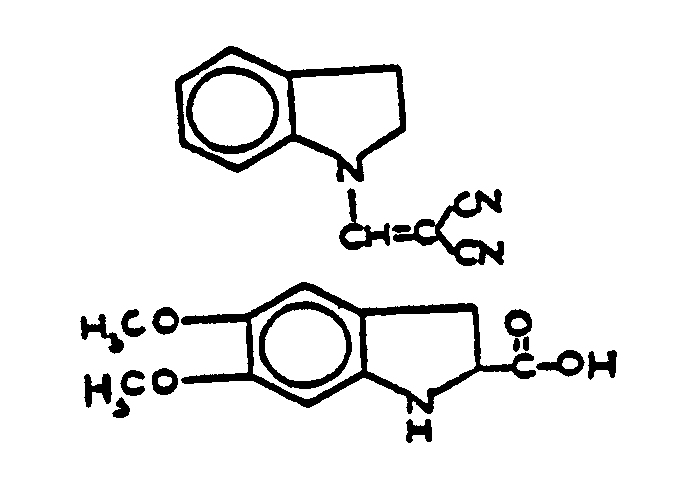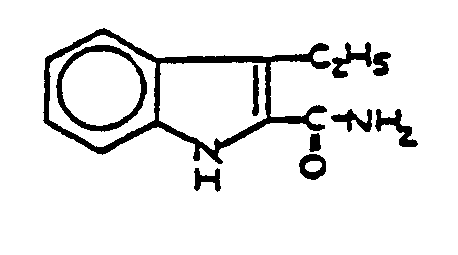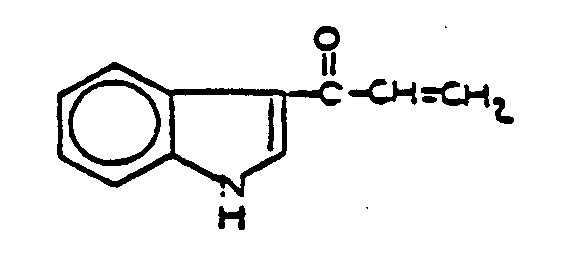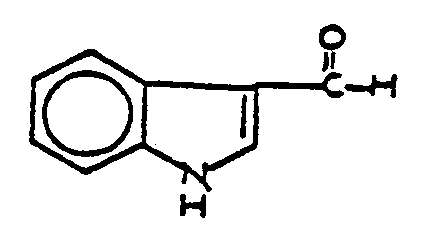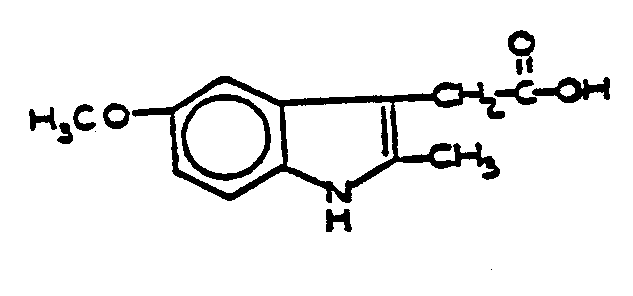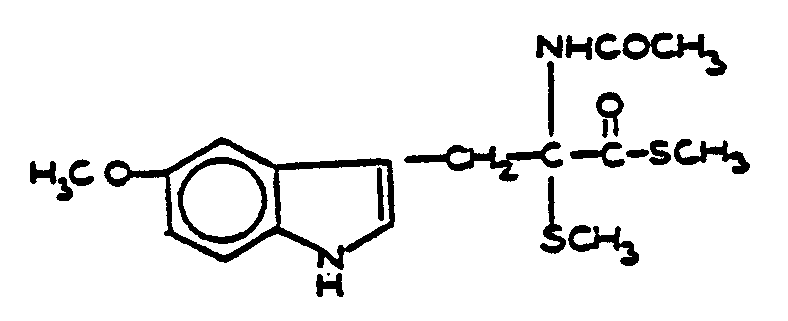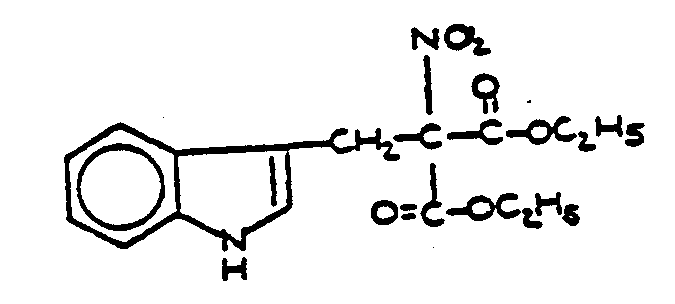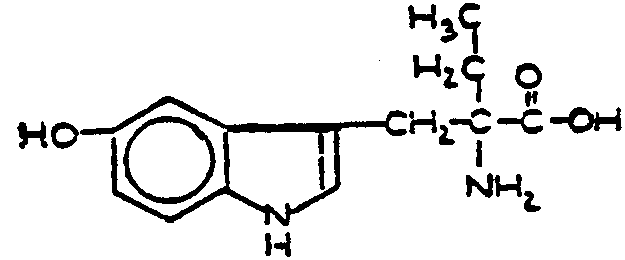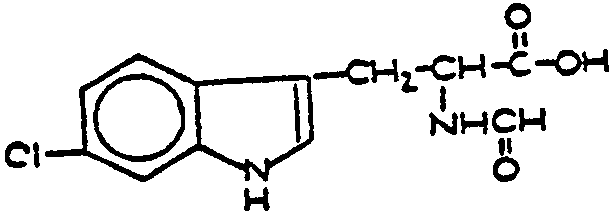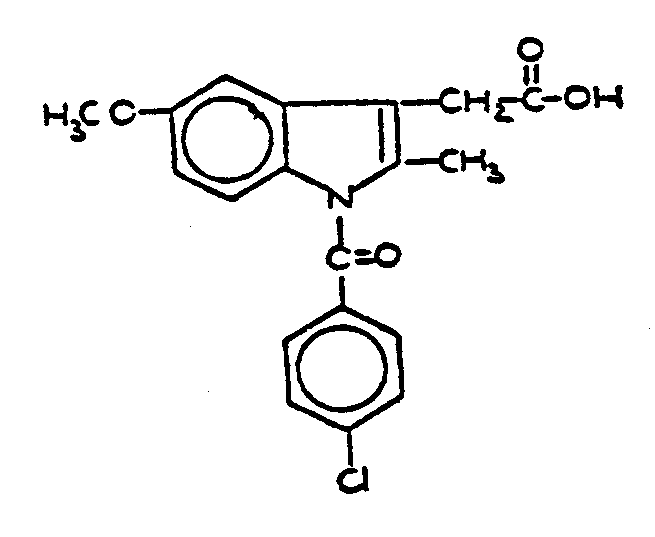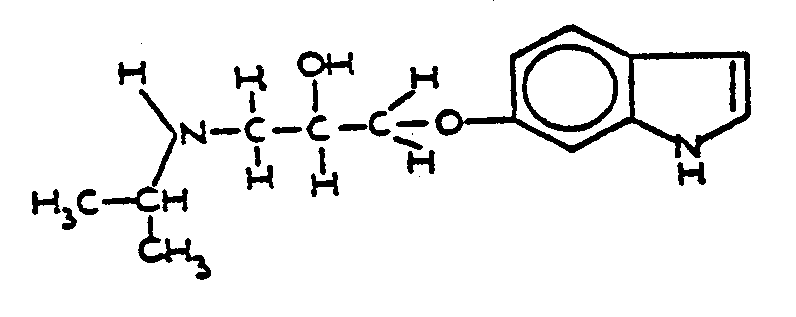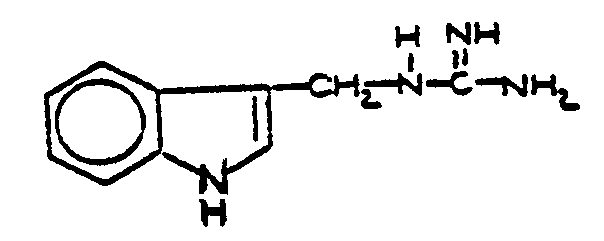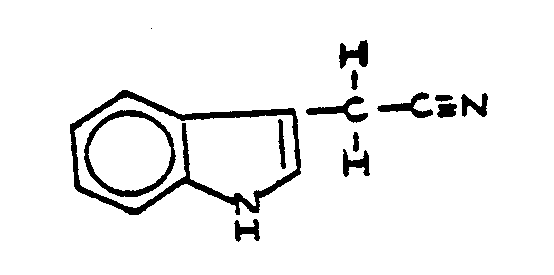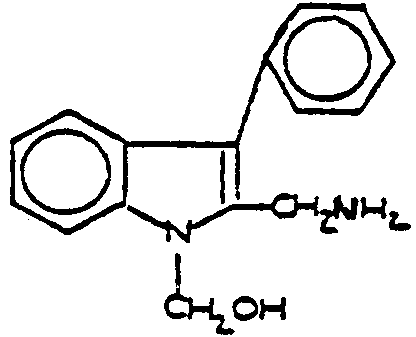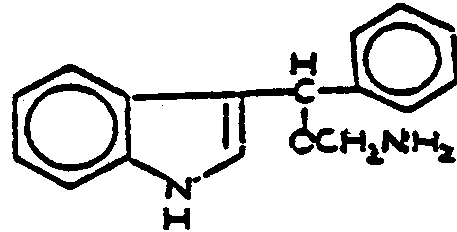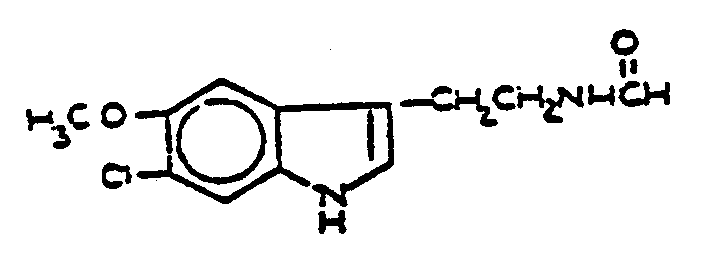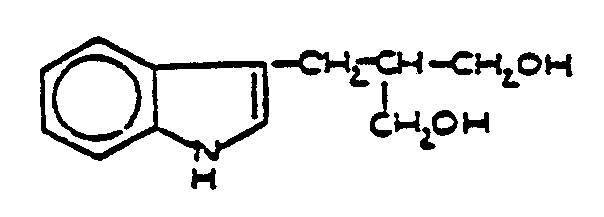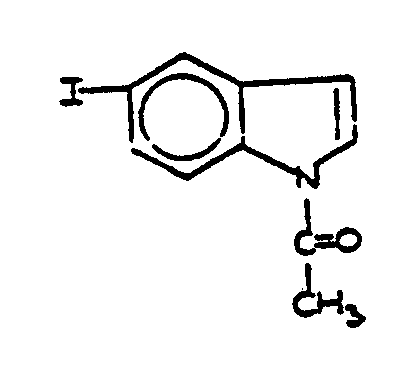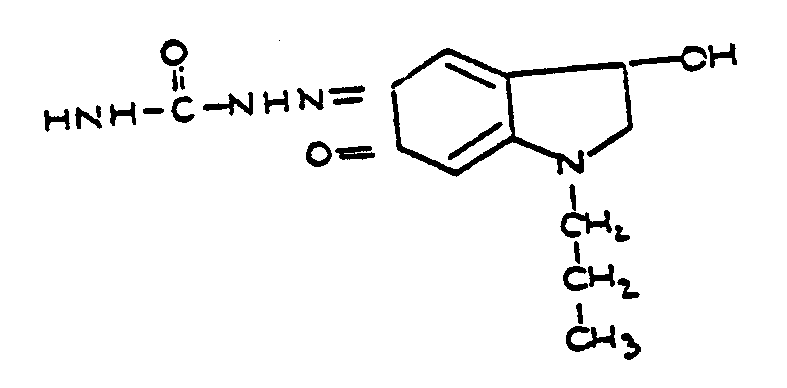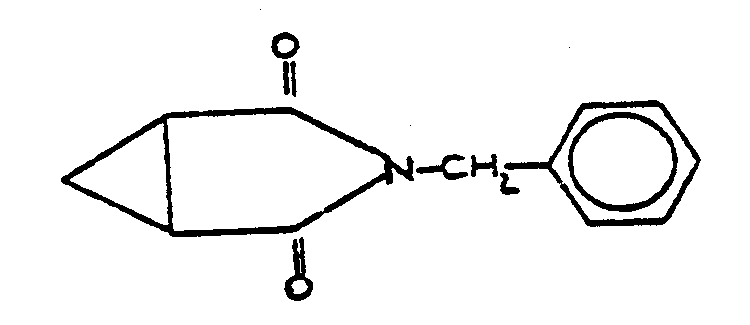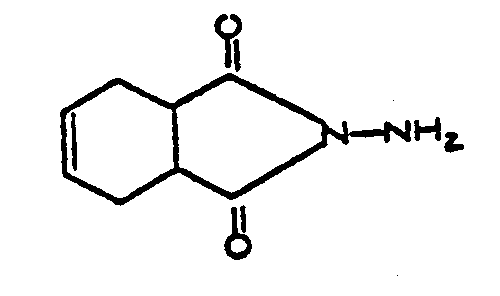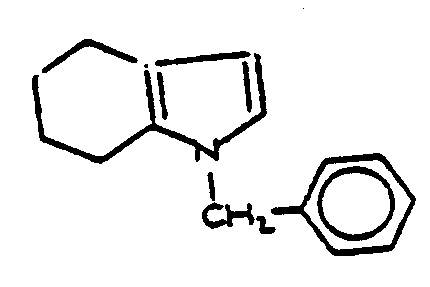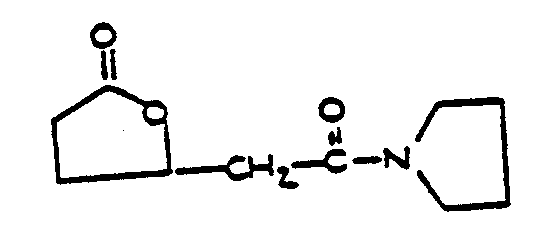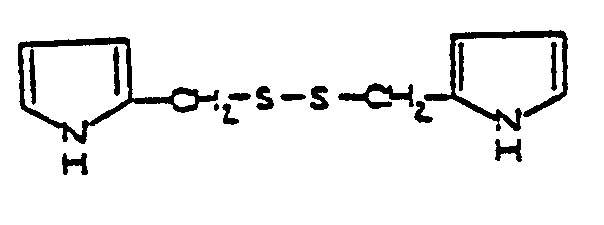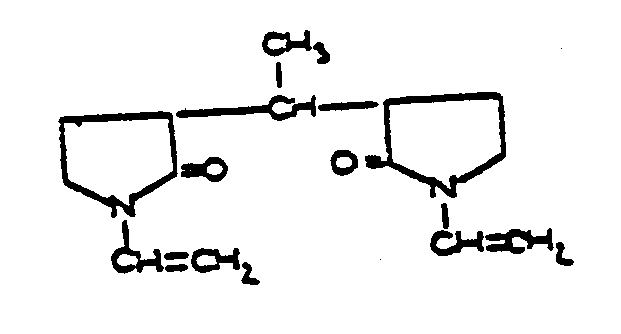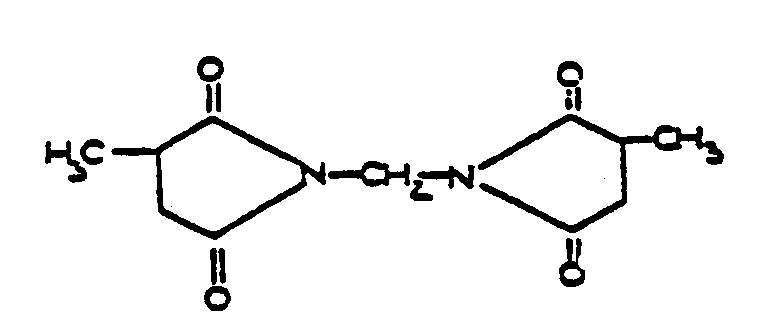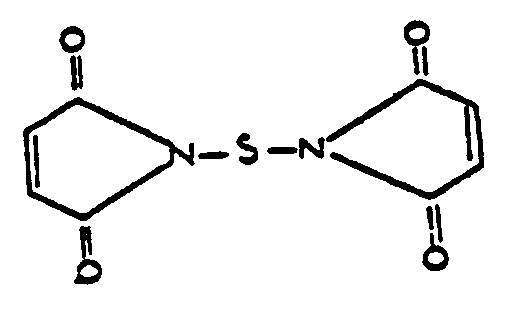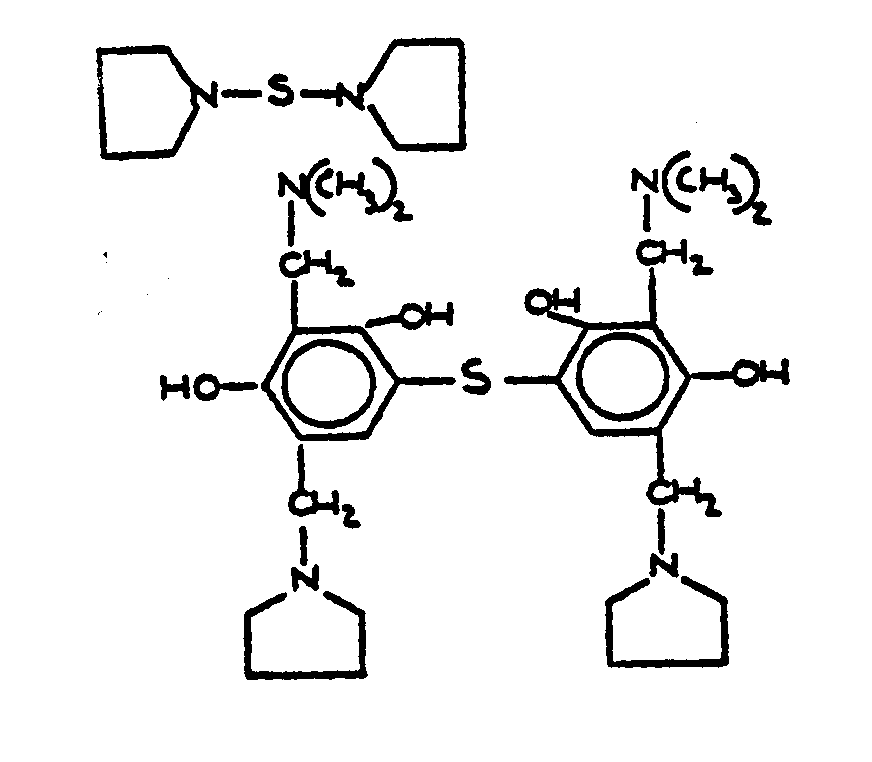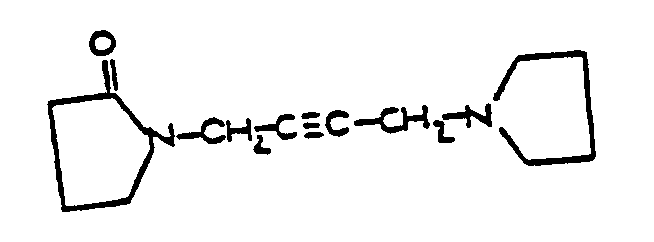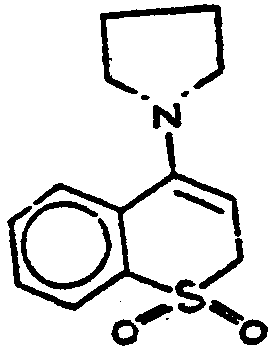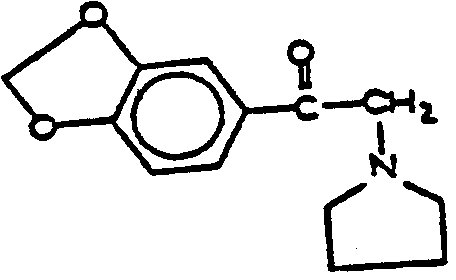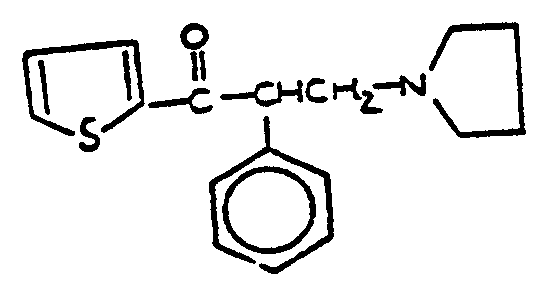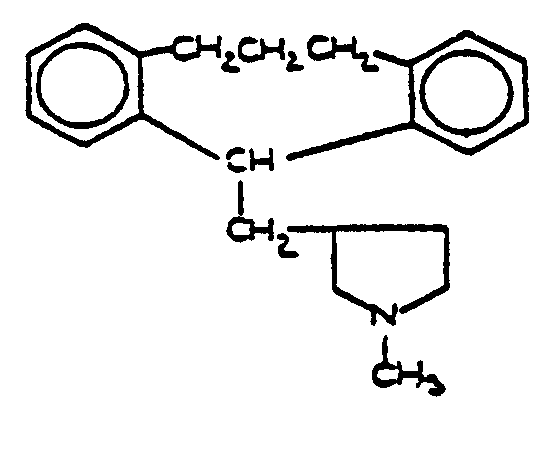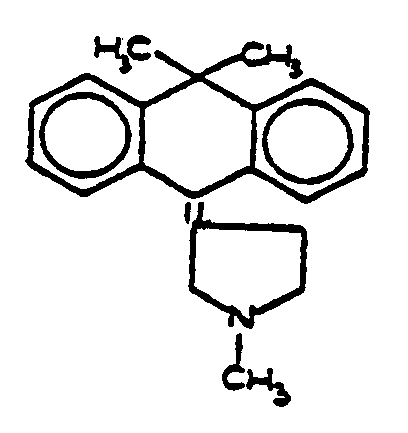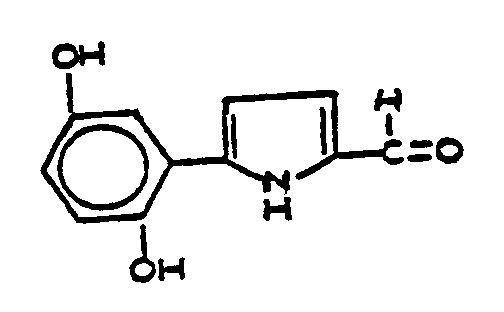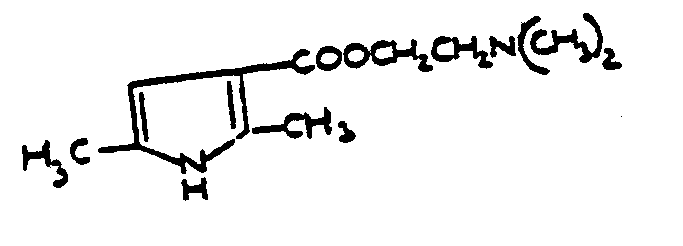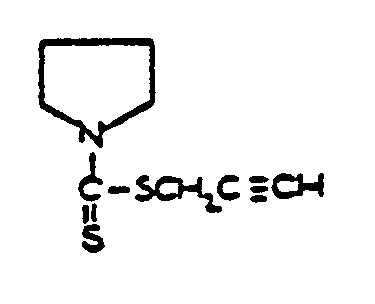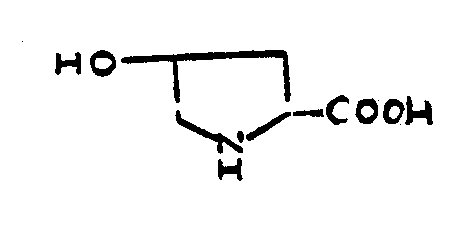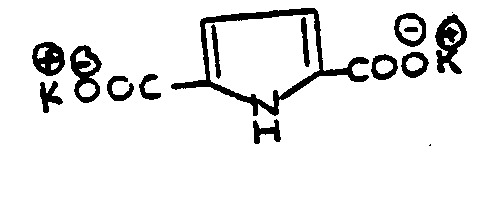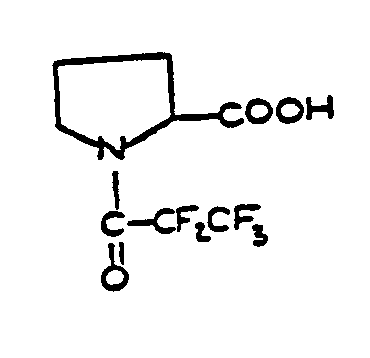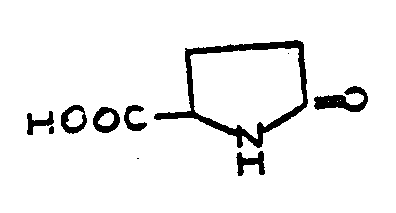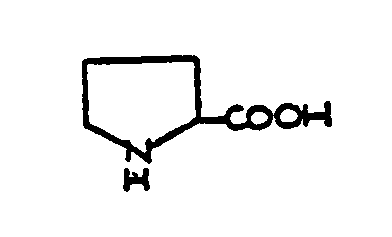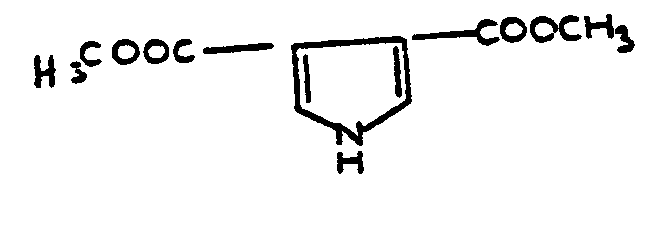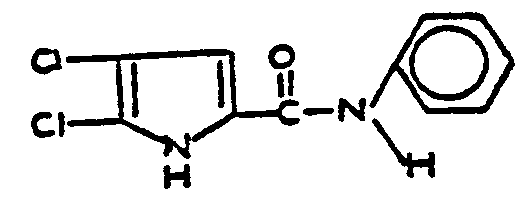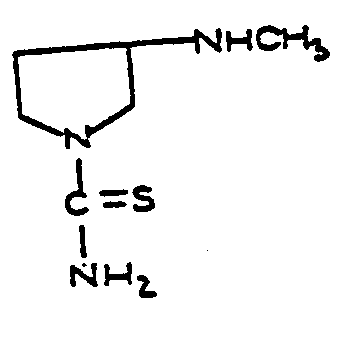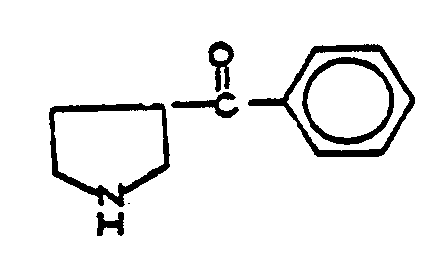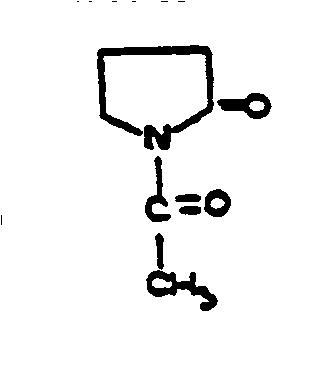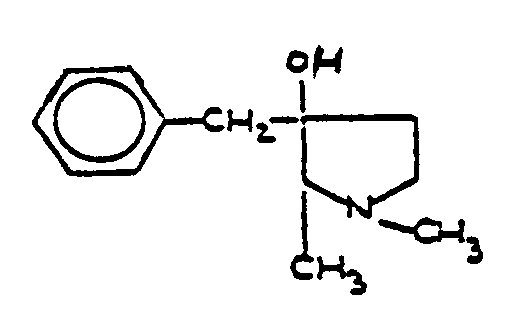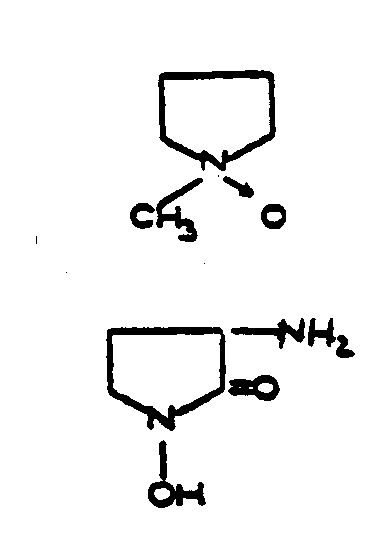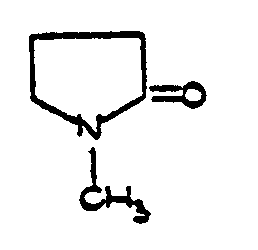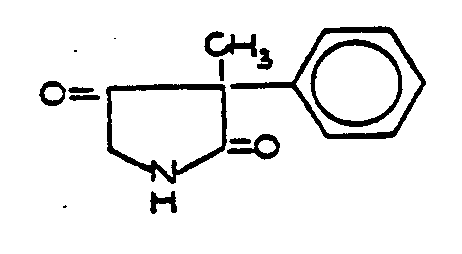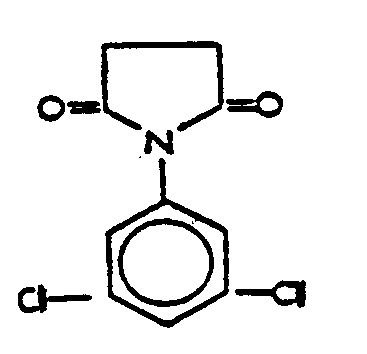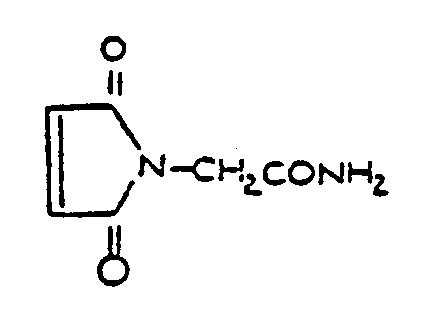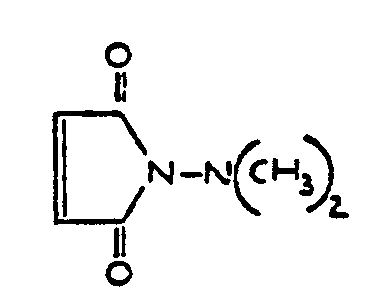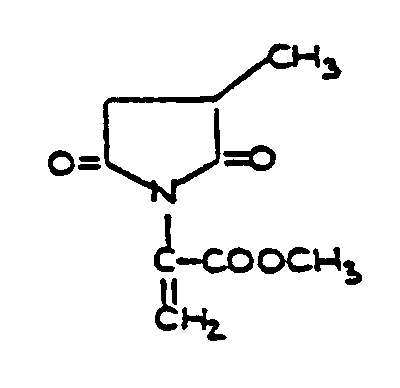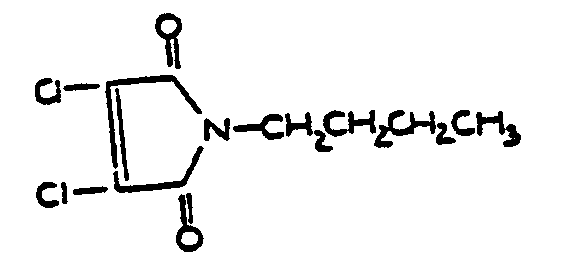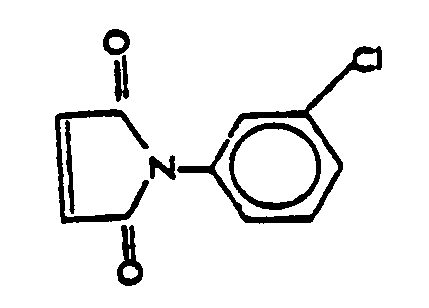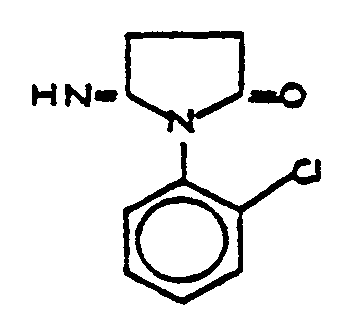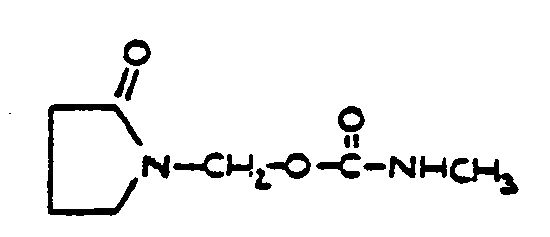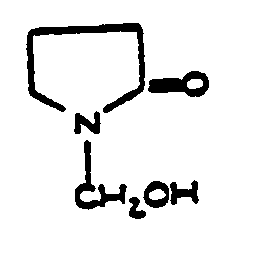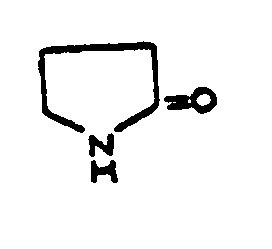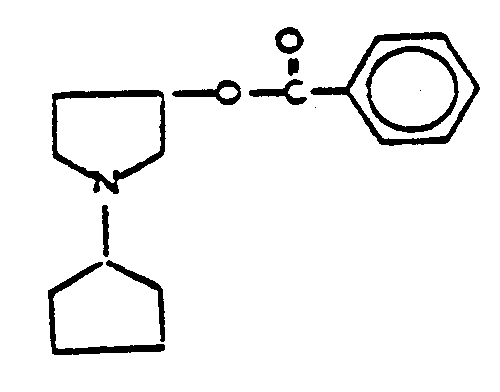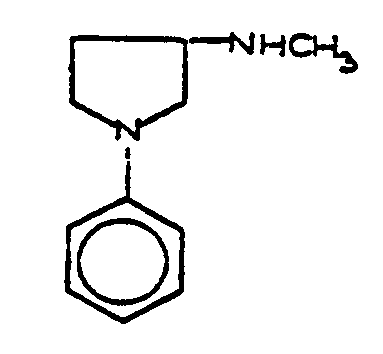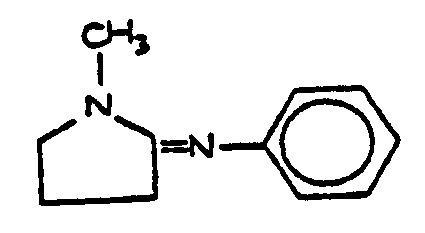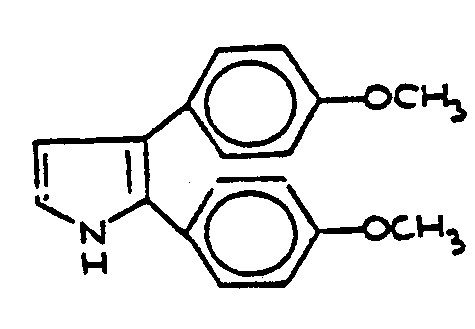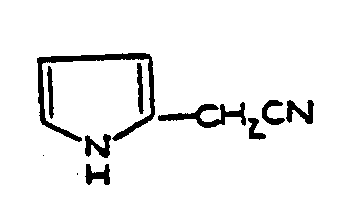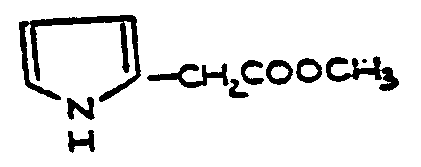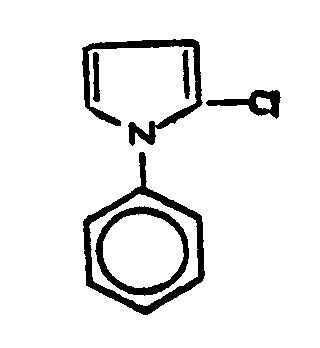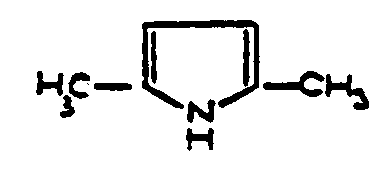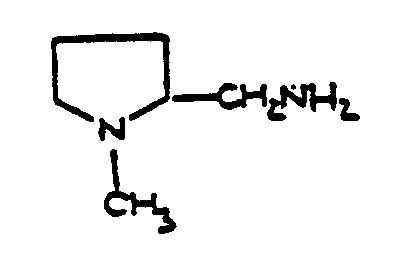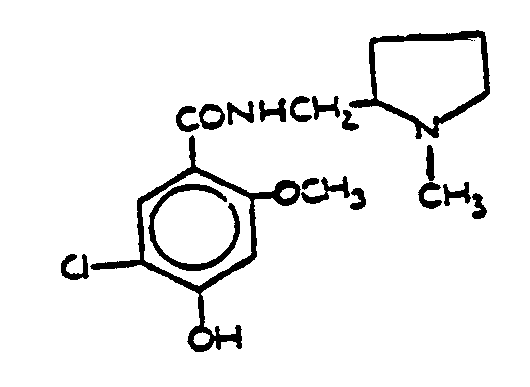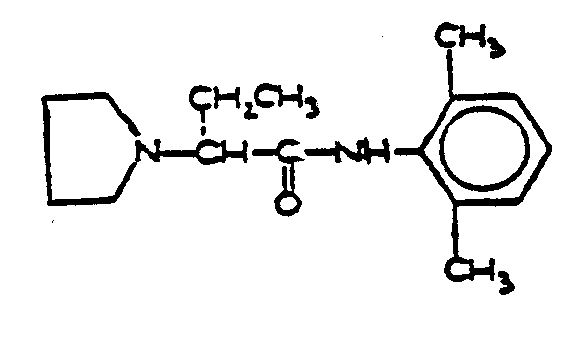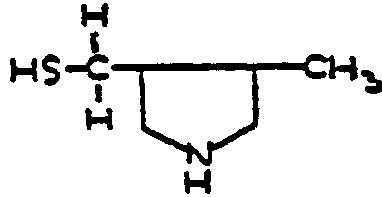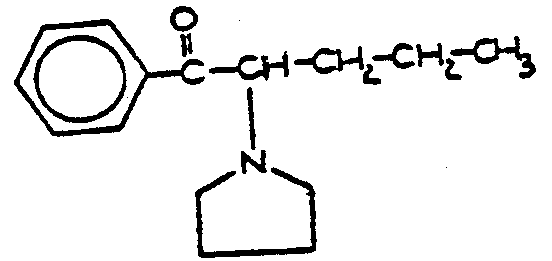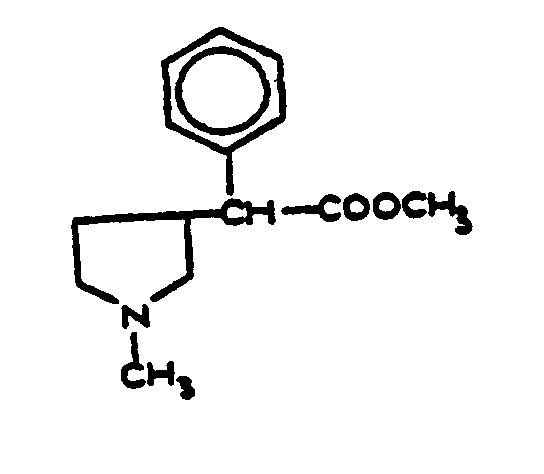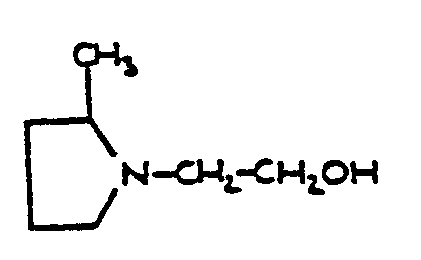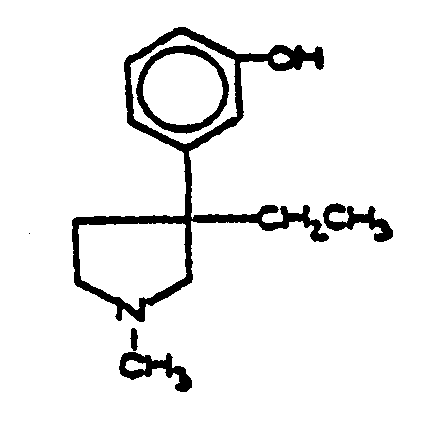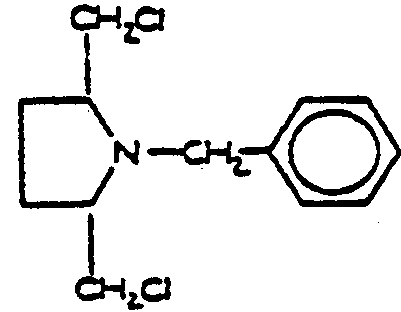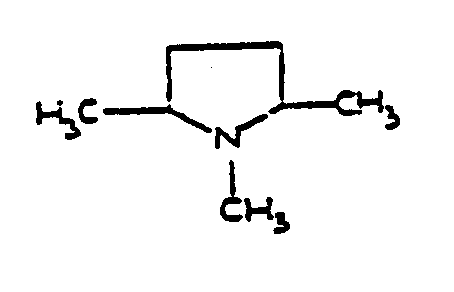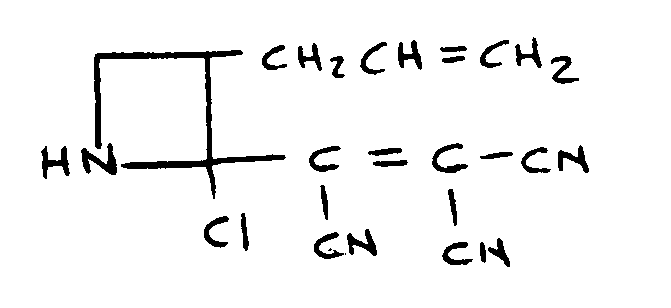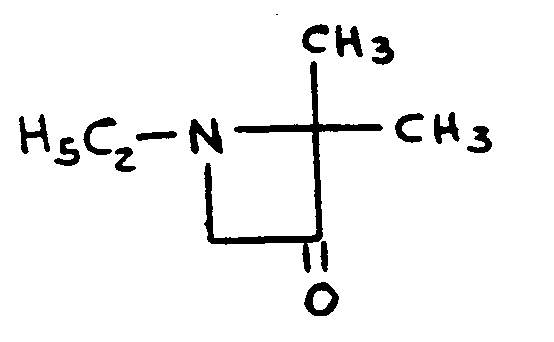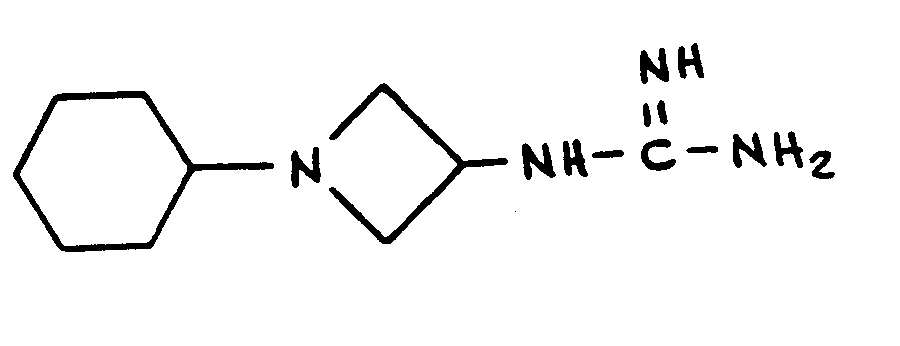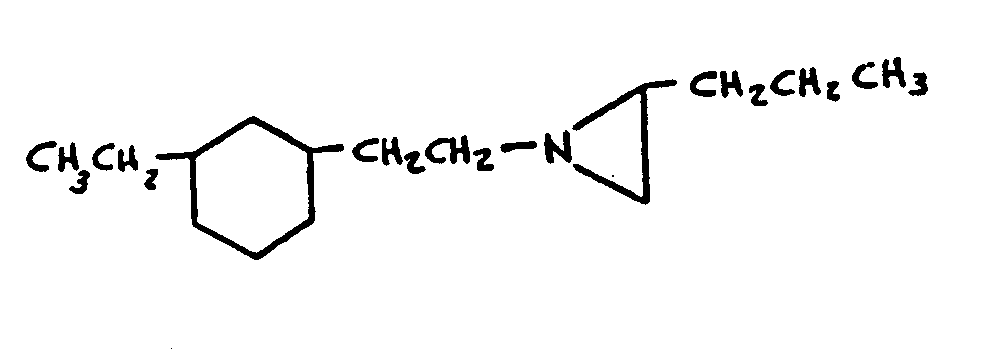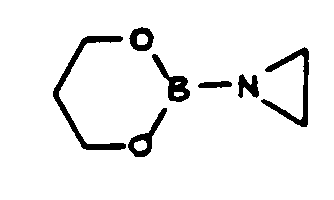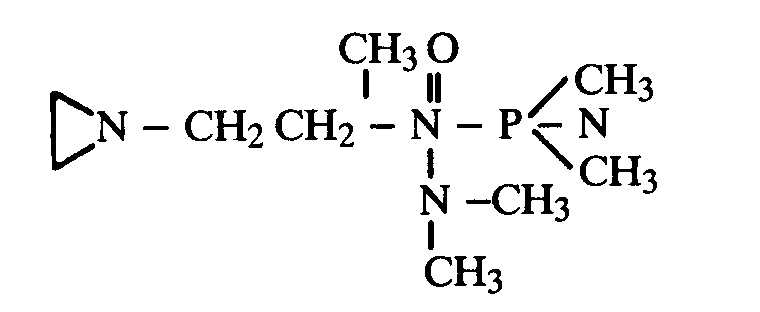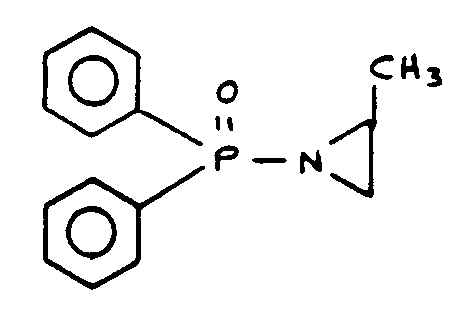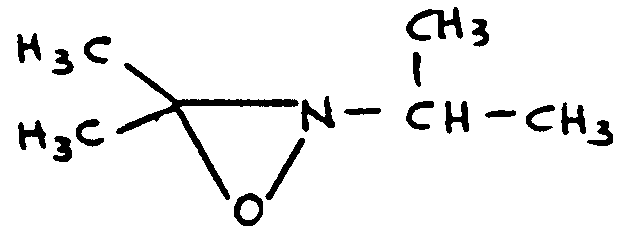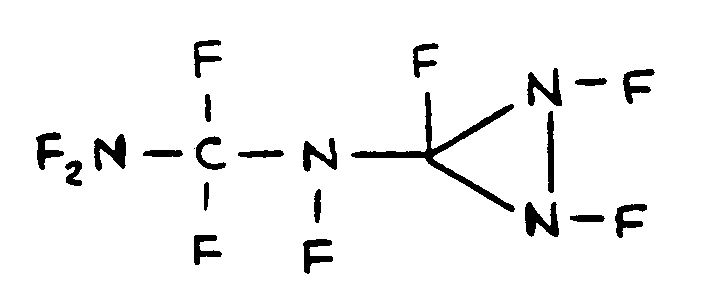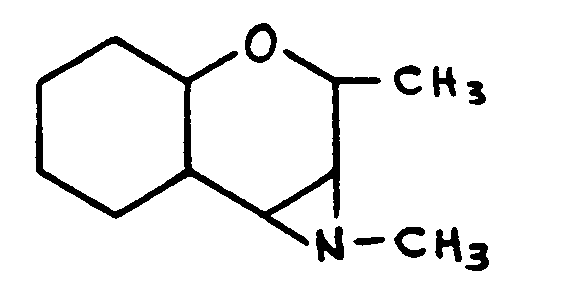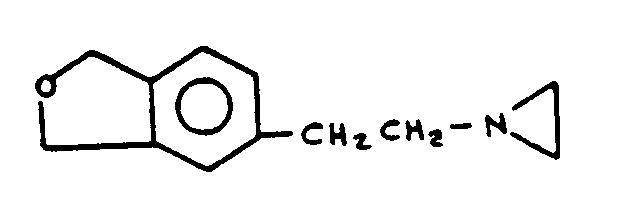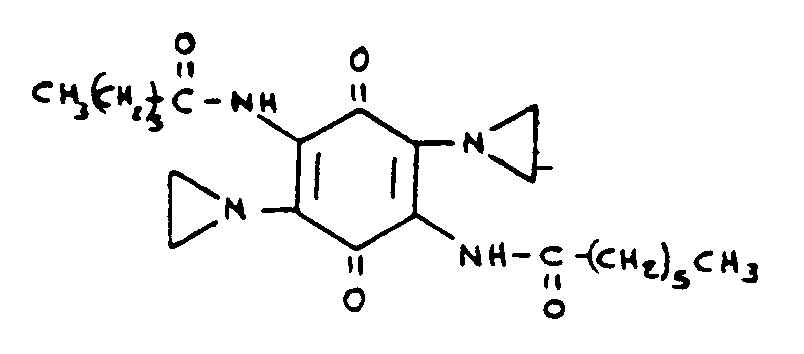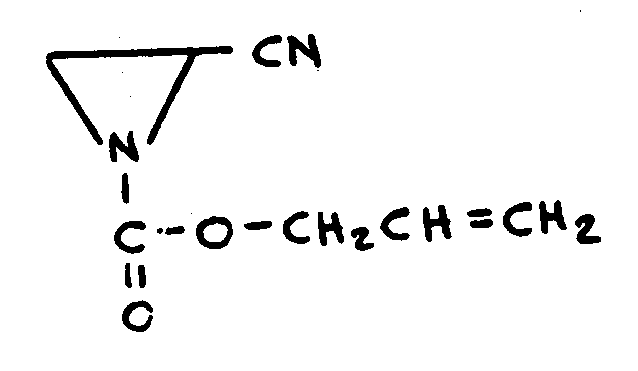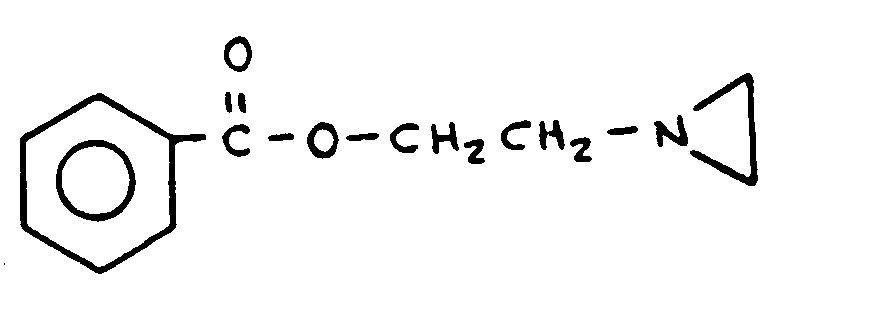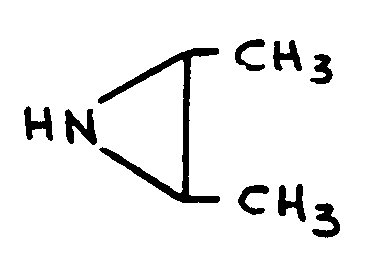![[Search a list of Patent Appplications for class 548]](../as.gif) CLASS 548, CLASS 548, | ORGANIC COMPOUNDS -- PART OF THE CLASS 532-570 SERIES |
| Click here for a printable version of this file | |
SUBCLASSES
![[List of Patents for class 548 subclass 100]](../ps.gif) 100 100 | Hetero ring is five-membered having two or more ring hetero atoms of which at least one is nitrogen (e.g., selenazoles, etc.) | ||
This subclass is indented under subclass 1. Compounds under Class 540 which contain a five-membered
hetero ring having two or more ring hetero atoms of which at least
one is nitrogen.
| |||
![[List of Patents for class 548 subclass 101]](../ps.gif) 101 101 | Heavy metal or aluminum containing | ||||
This subclass is indented under subclass 100. Compounds which include aluminum or a metal having a specific
gravity greater than 4.
SEE OR SEARCH THIS CLASS, SUBCLASS:
| |||||
![[List of Patents for class 548 subclass 102]](../ps.gif) 102 102 | Arsenic containing | ||
This subclass is indented under subclass 101. Compounds which contain arsenic.
| |||
![[List of Patents for class 548 subclass 103]](../ps.gif) 103 103 | The metal is bonded directly to carbon, which carbon is a ring carbon of the five-membered hetero ring or which carbon is attached directly or indirectly to the five-membered hetero ring by nonionic bonding | ||||
This subclass is indented under subclass 101. Compounds wherein the metal is bonded directly (a) to a
ring carbon of the five-membered hetero ring or (b) to a carbon
atom which additionally is attached directly or indirectly to the
five-membered hetero ring by nonionic bonding.
| |||||
![[List of Patents for class 548 subclass 104]](../ps.gif) 104 104 | The metal is bonded directly to chalcogen of a -C(=X)X- group, wherein the X's are the same or diverse chalcogens, which group is attached directly or indirectly to the five-membered hetero ring by nonionic bonding | ||||
This subclass is indented under subclass 101. Compounds wherein the metal is bonded directly to the singly
bonded chalcogen of a X group, wherein the X"s are the
same or diverse chalcogens (i.e., oxygen, sulfur, selenium, or tellurium),
which group is attached directly or indirectly to the five-membered
hetero ring by nonionic bonding.
| |||||
![[List of Patents for class 548 subclass 105]](../ps.gif) 105 105 | The metal is bonded directly to chalcogen which chalcogen is attached directly to the five-membered hetero ring by nonionic bonding | ||
This subclass is indented under subclass 101. Compounds wherein the metal is bonded directly to a chalcogen
(i.e., oxygen, sulfur, selenium, or tellurium) which is attached directly
to a ring carbon of the five-membered hetero ring.
| |||
![[List of Patents for class 548 subclass 106]](../ps.gif) 106 106 | The metal is bonded directly to chalcogen which chalcogen is attached indirectly to the five-membered hetero ring by nonionic bonding | ||
This subclass is indented under subclass 101. Compounds wherein the metal is bonded directly to chalcogen
(i.e., oxygen, sulfur, selenium, or tellurium) which is attached
additionally indirectly to the five-membered hetero ring by nonionic
bonding.
| |||
![[List of Patents for class 548 subclass 107]](../ps.gif) 107 107 | The metal is in an anion and the five-membered hetero ring is in a cation | ||
This subclass is indented under subclass 101. Compounds wherein the metal is in an anion, i.e., a group
having a negative charge, and the five-membered hetero ring is in
a cation, i.e., a group having a positive charge.
| |||
![[List of Patents for class 548 subclass 108]](../ps.gif) 108 108 | Polycyclo ring system having the five-membered hetero ring as one of the cyclos | ||
This subclass is indented under subclass 101. Compounds wherein the five-membered hetero ring is a cyclo
in a polycyclo ring system.
| |||
![[List of Patents for class 548 subclass 109]](../ps.gif) 109 109 | Azide or acyclic nitrogen containing | ||||
This subclass is indented under subclass 101. Compounds which contain an acyclic nitrogen atom or the
azide group.
| |||||
![[List of Patents for class 548 subclass 110]](../ps.gif) 110 110 | Boron or silicon containing |
| This subclass is indented under subclass 100. Compounds which contain boron or silicon. | |
![[List of Patents for class 548 subclass 111]](../ps.gif) 111 111 | Phosphorus attached directly to the five-membered hetero ring by nonionic bonding | ||
This subclass is indented under subclass 100. Compounds wherein phosphorus is attached directly to the
five-membered hetero ring by nonionic bonding.
| |||
![[List of Patents for class 548 subclass 112]](../ps.gif) 112 112 | Phosphorus attached indirectly to the five-membered hetero ring by nonionic bonding | ||
This subclass is indented under subclass 100. Compounds wherein phosphorus is attached indirectly to the
five-membered hetero ring by nonionic bonding.
| |||
![[List of Patents for class 548 subclass 113]](../ps.gif) 113 113 | Polycyclo ring system having the five-membered hetero ring as one of the cyclos | ||||
This subclass is indented under subclass 112. Compounds wherein the five-membered hetero ring is one of
the cyclos of a polycyclo ring system.
| |||||
![[List of Patents for class 548 subclass 114]](../ps.gif) 114 114 | The polycyclo ring system and phosphorus are both bonded directly to the same chalcogen | ||
This subclass is indented under subclass 113. Compounds wherein the polycyclo ring system and phosphorus
are both bonded directly to the same chalcogen (i.e., oxygen, sulfur,
selenium, or tellurium) atom.
| |||
![[List of Patents for class 548 subclass 115]](../ps.gif) 115 115 | The five-membered hetero ring and phosphorus are both bonded directly to the same nitrogen | ||
This subclass is indented under subclass 112. Compounds in which the five-membered hetero ring and phosphorus
are both bonded directly to the same nitrogen atom.
| |||
![[List of Patents for class 548 subclass 116]](../ps.gif) 116 116 | The five-membered hetero ring and phosphorus are both bonded directly to the same chalcogen | ||
This subclass is indented under subclass 112. Compounds in which the five-membered hetero ring and phosphorus
are both bonded directly to the same chalcogen (i.e., oxygen, sulfur,
selenium, or tellurium) atom.
| |||
![[List of Patents for class 548 subclass 117]](../ps.gif) 117 117 | The five-membered hetero ring contains chalcogen as a ring hetero atom | ||
This subclass is indented under subclass 116. Compounds wherein the five-membered hetero ring contains
chalcogen (i.e., oxygen, sulfur, selenium, or tellurium) as a ring
hetero atom.
| |||
![[List of Patents for class 548 subclass 118]](../ps.gif) 118 118 | The five-membered hetero ring contains at least three ring nitrogens | ||
This subclass is indented under subclass 116. Compounds wherein the five-membered hetero ring contains
three or more ring nitrogens.
| |||
![[List of Patents for class 548 subclass 119]](../ps.gif) 119 119 | The phosphorus is part of a substituent which is attached directly to ring carbon of the five-membered hetero ring | ||
This subclass is indented under subclass 112. Compounds wherein the phosphorus is contained in a substituent
which is attached directly to ring carbon of the five-membered hetero
ring.
| |||
![[List of Patents for class 548 subclass 120]](../ps.gif) 120 120 | The five-membered hetero ring contains ring selenium and is one of the cyclos in a polycyclo ring system | ||
This subclass is indented under subclass 100. Compounds wherein the five-membered hetero ring contains
ring selenium as an additional hetero atom and is one of the cylcos
in a polycyclo ring system.
| |||
![[List of Patents for class 548 subclass 121]](../ps.gif) 121 121 | Bicyclo ring system having the five-membered hetero ring as one of the cyclos | ||
This subclass is indented under subclass 120. Compounds in which the polycyclo ring system consists of
exactly two rings, one of which is the five-membered hetero ring
containing nitrogen and selenium as hetero atoms.
| |||
![[List of Patents for class 548 subclass 122]](../ps.gif) 122 122 | The five-membered hetero ring consists of sulfur, oxygen, nitrogen, and carbon | ||
This subclass is indented under subclass 100. Compounds wherein the five-membered hetero ring includes
at least one atom each of sulfur, oxygen, nitrogen, and carbon and
contains no other elements as ring members.
| |||
![[List of Patents for class 548 subclass 123]](../ps.gif) 123 123 | Plural ring sulfurs in the five-membered hetero ring | ||
This subclass is indented under subclass 100. Compounds wherein the five-membered hetero ring contains
at least two ring sulfurs in addition to the ring nitrogen and ring
carbon.
| |||
![[List of Patents for class 548 subclass 124]](../ps.gif) 124 124 | Plural ring oxygens in the five-membered hetero ring | ||
This subclass is indented under subclass 100. Compounds wherein the five-membered hetero ring contains
at least two ring oxygens in addition to the ring nitrogen and ring
carbon.
| |||
![[List of Patents for class 548 subclass 125]](../ps.gif) 125 125 | The five-membered hetero ring consists of chalcogen, plural nitrogens, and carbon | ||
This subclass is indented under subclass 100. Compounds wherein the five-membered hetero ring includes
at least one atom each of chalcogen (i.e., oxygen, sulfur, selenium,
or tellurium) and carbon and at least two ring nitrogens, and contains
no other elements as ring members.
| |||
![[List of Patents for class 548 subclass 126]](../ps.gif) 126 126 | Polycyclo ring system having the five-membered hetero ring as one of the cyclos | ||
This subclass is indented under subclass 125. Compounds wherein the five-membered hetero ring is one of
the cyclos of a polycyclo ring system.
| |||
![[List of Patents for class 548 subclass 127]](../ps.gif) 127 127 | 1,2,3-thiadiazoles (including hydrogenated) | ||||
This subclass is indented under subclass 125. Compounds in which the five-membered hetero ring has sulfur
in the 1-position, nitrogens in the 2- and 3-positions, and carbons
in the remaining two positions.
| |||||
![[List of Patents for class 548 subclass 128]](../ps.gif) 128 128 | 1,2,4-thiadiazoles (including hydrogenated) | ||
This subclass is indented under subclass 125. Compounds in which the five-membered hetero ring has sulfur
in the 1-position, nitrogens in the 2- and 4-positions, and carbons
in the remaining two positions.
| |||
![[List of Patents for class 548 subclass 129]](../ps.gif) 129 129 | Chalcogen bonded directly to ring carbon of the thiadiazole ring |
| This subclass is indented under subclass 128. Compounds wherein chalcogen (i.e., oxygen, sulfur, selenium, or tellurium) is bonded directly to the ring carbon of the thiadiazole ring. | |
![[List of Patents for class 548 subclass 130]](../ps.gif) 130 130 | Nitrogen or additional chalcogen bonded directly to ring carbon of the thiadiazole ring | ||
This subclass is indented under subclass 129. Compounds which contain nitrogen or additional chalcogen
bonded directly to ring carbon of the thiadiazole ring.
| |||
![[List of Patents for class 548 subclass 131]](../ps.gif) 131 131 | 1,2,4-oxadiazoles (including hydrogenated) | ||
This subclass is indented under subclass 125. Compounds in which the five-membered hetero ring has oxygen
in the 1-position, nitrogens in the 2- and 4-positions, and carbons
in the remaining two positions.
| |||
![[List of Patents for class 548 subclass 132]](../ps.gif) 132 132 | Chalcogen bonded directly to ring carbon of the oxadiazole ring |
| This subclass is indented under subclass 131. Compounds wherein chalcogen (i.e., oxygen, sulfur, selenium, or tellurium) is bonded directly to ring carbon of the oxadiazole ring. | |
![[List of Patents for class 548 subclass 133]](../ps.gif) 133 133 | Nitrogen attached directly to the oxadiazole ring by nonionic bonding |
| This subclass is indented under subclass 131. Compounds wherein nitrogen is attached directly to the oxadiazole ring by nonionic bonding. | |
![[List of Patents for class 548 subclass 134]](../ps.gif) 134 134 | 1,2,5-thiadiazoles (including hydrogenated) | ||
This subclass is indented under subclass 125. Compounds in which the five-membered hetero ring has sulfur
in the 1-position, nitrogens in the 2- and 5-positions, and carbons
in the remaining two positions.
| |||
![[List of Patents for class 548 subclass 135]](../ps.gif) 135 135 | Chalcogen or nitrogen attached directly to ring carbon of the thiadiazole ring by nonionic bonding |
| This subclass is indented under subclass 134. Compounds wherein chalcogen (i.e., oxygen, sulfur, selenium, or tellurium) or nitrogen is attached directly to ring carbon of the thiadiazole ring by nonionic bonding. | |
![[List of Patents for class 548 subclass 136]](../ps.gif) 136 136 | 1,3,4-thiadiazoles (including hydrogenated) | ||
This subclass is indented under subclass 125. Compounds in which the five-membered hetero ring has sulfur
in the 1-position, nitrogens in the 3- and 4-positions, and carbons
in the remaining two positions.
| |||
![[List of Patents for class 548 subclass 137]](../ps.gif) 137 137 | Diazole ring attached directly to the thiadiazole ring by nonionic bonding | ||
This subclass is indented under subclass 136. Compounds wherein a five-membered hetero ring consisting
of two nitrogens and three carbons is attached directly to the thiadiazole
ring by nonionic bonding.
| |||
![[List of Patents for class 548 subclass 138]](../ps.gif) 138 138 | Nitrogen attached directly to the thiadiazole ring by nonionic bonding | ||
This subclass is indented under subclass 136. Compounds wherein nitrogen is attached directly to the thiadiazole
ring by nonionic bonding.
| |||
![[List of Patents for class 548 subclass 139]](../ps.gif) 139 139 | Having -C(=X)-, wherein X is chalcogen, attached directly to the nitrogen by nonionic bonding | ||
This subclass is indented under subclass 138. Compounds in which a group, wherein X is chalcogen (i.e.,
oxygen, sulfur, selenium, or tellurium), is attached directly to
the nitrogen by nonionic bonding.
| |||
![[List of Patents for class 548 subclass 140]](../ps.gif) 140 140 | Additional nitrogen attached directly to the -C(=X)- group by nonionic bonding | ||
This subclass is indented under subclass 139. Compounds in which an additional nitrogen is attached directly
to the group by nonionic bonding.
| |||
![[List of Patents for class 548 subclass 141]](../ps.gif) 141 141 | Chalcogen or additional nitrogen attached directly to ring carbon of the thiadiazole ring by nonionic bonding | ||
This subclass is indented under subclass 138. Compounds wherein chalcogen (i.e., oxygen, sulfur, selenium,
or tellurium) or additional nitrogen is attached directly to ring
carbon of the thiadiazole ring by nonionic bonding.
| |||
![[List of Patents for class 548 subclass 142]](../ps.gif) 142 142 | Chalcogen bonded directly to the 2- and 5- positions of the thiadiazole ring | ||
This subclass is indented under subclass 136. Compounds wherein chalcogen (i.e., oxygen, sulfur selenium,
or tellurium) is bonded directly to each of the ring carbons of
the thiadiazole ring, i.e., the 2- and 5-positions.
| |||
![[List of Patents for class 548 subclass 143]](../ps.gif) 143 143 | 1,3,4-oxadiazoles (including hydrogenated) | ||
This subclass is indented under subclass 125. Compounds in which the five-membered hetero ring has oxygen
in the 1-position, nitrogens in the 3- and 4-positions, and carbons
in the remaining two positions.
| |||
![[List of Patents for class 548 subclass 144]](../ps.gif) 144 144 | Chalcogen bonded directly to ring carbon of the oxadiazole ring |
| This subclass is indented under subclass 143. Compounds wherein chalcogen (i.e., oxygen, sulfur, selenium, or tellurium) is bonded directly to ring carbon of the oxadiazole ring. | |
![[List of Patents for class 548 subclass 145]](../ps.gif) 145 145 | Plural carbocyclic rings bonded directly to the oxadiazole ring | ||
This subclass is indented under subclass 143. Compounds wherein at least two carbocyclic rings are bonded
directly to the oxadiazole ring.
| |||
![[List of Patents for class 548 subclass 146]](../ps.gif) 146 146 | 1,3-thiazoles (including hydrogenated) | ||
This subclass is indented under subclass 100. Compounds in which the five-membered hetero ring has sulfur
in the 1-position, nitrogen in the 3-position, and carbons in the
remaining three positions.
| |||
![[List of Patents for class 548 subclass 147]](../ps.gif) 147 147 | Spiro | ||||
This subclass is indented under subclass 146. Compounds which contain a spiro ring system.
| |||||
![[List of Patents for class 548 subclass 148]](../ps.gif) 148 148 | Polycyclo ring system having the thiazole ring as one of the cyclos | ||
This subclass is indented under subclass 146. Compounds wherein the thiazole ring is a cyclo in a polycyclo
ring system.
| |||
![[List of Patents for class 548 subclass 149]](../ps.gif) 149 149 | Tetracyclo ring system having the thiazole ring as one of the cyclos |
| This subclass is indented under subclass 148. Compounds in which the polycyclo ring system consists of exactly four rings. | |
![[List of Patents for class 548 subclass 150]](../ps.gif) 150 150 | Tricyclo ring system having the thiazole ring as one of the cyclos |
| This subclass is indented under subclass 148. Compounds in which the polycylco ring system consists of exactly three rings. | |
![[List of Patents for class 548 subclass 151]](../ps.gif) 151 151 | At least three ring hetero atoms in the tricyclo ring system | ||
This subclass is indented under subclass 150. Compounds wherein the tricyclo ring system contains at least
one ring hetero atom in addition to the ring sulfur and ring nitrogen
of the thiazole ring.
| |||
![[List of Patents for class 548 subclass 152]](../ps.gif) 152 152 | Bicyclo ring system having the thiazole ring as one of the cyclos |
| This subclass is indented under subclass 148. Compounds in which the polycyclo ring system consists of exactly two rings. | |
![[List of Patents for class 548 subclass 153]](../ps.gif) 153 153 | At least three ring hetero atoms in the bicyclo ring system | ||
This subclass is indented under subclass 152. Compounds wherein the bicyclo ring system contains at least
one ring hetero atom in addition to the ring sulfur and ring nitrogen
of the thiazole ring.
| |||
![[List of Patents for class 548 subclass 154]](../ps.gif) 154 154 | Ring nitrogen is shared by the two cyclos | ||
This subclass is indented under subclass 153. Compounds wherein the ring nitrogen is a member of both
of the cyclos in the bicyclo ring system.
| |||
![[List of Patents for class 548 subclass 155]](../ps.gif) 155 155 | Tetramisole per se or salt thereof (including hydrogenated) |
| This subclass is indented under subclass 154. Compounds which have the following structure, or salts thereof,
in which the bonds between the ring members may be single or double
bonds:
| |
![[List of Patents for class 548 subclass 156]](../ps.gif) 156 156 | Plural benzothiazoles (including hydrogenated) |
| This subclass is indented under subclass 152. Compounds containing at least two of the bicyclo ring systems
having the following structure, which may contain double bonds between ring
members:
| |
![[List of Patents for class 548 subclass 157]](../ps.gif) 157 157 | Chalcogen bonded directly to ring carbon of the thiazole ring | ||
This subclass is indented under subclass 156. Compounds wherein chalcogen (i.e., oxygen, sulfur, selenium,
or tellurium) is bonded directly to ring carbon of the thiazole
ring.
| |||
![[List of Patents for class 548 subclass 158]](../ps.gif) 158 158 | Plural benzothiazole ring systems bonded directly to chain consisting of plural sulfurs | ||
This subclass is indented under subclass 157. Compounds which contain a polysulfide linkage between at
least two benzothiazole ring systems.
| |||
![[List of Patents for class 548 subclass 159]](../ps.gif) 159 159 | Additional polycyclo heterocyclic ring system containing | ||
This subclass is indented under subclass 152. Compounds containing an additional hetero ring which is
one of the cyclos in a polycyclo ring system.
| |||
![[List of Patents for class 548 subclass 160]](../ps.gif) 160 160 | Polycyclo-carbocyclic ring system having at least three cyclos | ||
This subclass is indented under subclass 152. Compounds which contain a polycyclo-carbocyclic ring system
having at least three cyclos.
| |||
![[List of Patents for class 548 subclass 161]](../ps.gif) 161 161 | Nitrogen attached directly to the thiazole ring by nonionic bonding |
| This subclass is indented under subclass 152. Compounds wherein the nitrogen is attached directly to the thiazole ring by nonionic bonding. | |
![[List of Patents for class 548 subclass 162]](../ps.gif) 162 162 | The nitrogen is a ring hetero atom | ||
This subclass is indented under subclass 161. Compounds wherein the nitrogen is a ring member of a hetero
ring.
| |||
![[List of Patents for class 548 subclass 163]](../ps.gif) 163 163 | Carbonyl or thiocarbonyl bonded directly to the nitrogen | ||
This subclass is indented under subclass 161. Compounds wherein the nitrogen is bonded additionally directly
to a group, in which X is chalcogen (i.e., oxygen, sulfur, selenium,
or tellurium).
| |||
![[List of Patents for class 548 subclass 164]](../ps.gif) 164 164 | The nitrogen bonded additionally only to hydrogen | ||
This subclass is indented under subclass 161. Compounds wherein the nitrogen is bonded additionally only
to hydrogen.
| |||
![[List of Patents for class 548 subclass 165]](../ps.gif) 165 165 | Chalcogen bonded directly to ring carbon of the thiazole ring | ||
This subclass is indented under subclass 152. Compounds wherein chalcogen (i.e., oxygen, sulfur, selenium,
or tellurium) is bonded directly to a ring carbon of the thiazole
ring.
| |||
![[List of Patents for class 548 subclass 166]](../ps.gif) 166 166 | Chalcogen bonded directly to the chalcogen | ||
This subclass is indented under subclass 165. Compounds wherein an additional chalcogen (i.e., oxygen,
sulfur, selenium, or tellurium) is bonded directly to the chalcogen.
| |||
![[List of Patents for class 548 subclass 167]](../ps.gif) 167 167 | Nitrogen attached directly to the chalcogen by nonionic bonding | ||
This subclass is indented under subclass 165. Compounds wherein nitrogen is attached directly to the chalcogen
by nonionic bonding.
| |||
![[List of Patents for class 548 subclass 168]](../ps.gif) 168 168 | The nitrogen is bonded additionally directly to two carbons | ||
This subclass is indented under subclass 167. Compounds wherein the nitrogen is bonded additionally directly
to two carbons.
| |||
![[List of Patents for class 548 subclass 169]](../ps.gif) 169 169 | Chalcogen attached indirectly to the thiazole ring by nonionic bonding | ||
This subclass is indented under subclass 165. Compounds wherein chalcogen (i.e., oxygen, sulfur, selenium,
or tellurium) is attached indirectly to the thiazole ring by nonionic
bonding.
| |||
![[List of Patents for class 548 subclass 170]](../ps.gif) 170 170 | The chalcogen, X, is in a -C(=X)- group | ||
This subclass is indented under subclass 169. Compounds wherein the chalcogen, X (i.e., oxygen, sulfur,
selenium, or tellurium), is in a group.
| |||
![[List of Patents for class 548 subclass 171]](../ps.gif) 171 171 | Nitrogen bonded directly to the -C(=X)- group | ||
This subclass is indented under subclass 170. Compounds in which nitrogen is bonded directly to the group.
| |||
![[List of Patents for class 548 subclass 172]](../ps.gif) 172 172 | Nitrogen attached directly to chalcogen by nonionic bonding | ||
This subclass is indented under subclass 169. Compounds in which nitrogen is attached directly to chalcogen
by nonionic bonding.
| |||
![[List of Patents for class 548 subclass 173]](../ps.gif) 173 173 | Halogen attached directly or indirectly to the bicyclo ring system by nonionic bonding |
| This subclass is indented under subclass 165. Compounds wherein halogen is attached directly or indirectly to the bicyclo ring system by nonionic bonding. | |
![[List of Patents for class 548 subclass 174]](../ps.gif) 174 174 | Sulfur double bonded or thiol bonded directly to ring carbon of the thiazole ring | ||
This subclass is indented under subclass 165. Compounds in which sulfur attached directly to a ring carbon
of the thiazole ring is either (a) attached by a double bond or
(b) in a -SH or -SM group, wherein M is a Group IA or Group IIA
light metal, i.e., a metal having a specific gravity less than 4.
| |||
![[List of Patents for class 548 subclass 175]](../ps.gif) 175 175 | Process of forming the bicyclo ring system | ||
This subclass is indented under subclass 174. Processes in which the bicyclo ring system is formed.
| |||
![[List of Patents for class 548 subclass 176]](../ps.gif) 176 176 | Aniline or alkyl derivative thereof utilized as starting material |
| This subclass is indented under subclass 175. Processes which utilize aniline or an alkylated derivative thereof as a starting material. | |
![[List of Patents for class 548 subclass 177]](../ps.gif) 177 177 | Purification or recovery |
| This subclass is indented under subclass 174. Processes wherein the sulfur derivative of the bicyclo ring system is separated from impurities or from the reaction mixture. | |
![[List of Patents for class 548 subclass 178]](../ps.gif) 178 178 | Chalcogen or nitrogen attached directly to the other cyclo of the bicyclo ring system by nonionic bonding | ||
This subclass is indented under subclass 152. Compounds wherein chalcogen (i.e., oxygen, sulfur, selenium,
or tellurium) or nitrogen is attached directly to the other cyclo
of the bicyclo ring system by nonionic bonding, i.e., the cyclo
other than the thiazole ring.
| |||
![[List of Patents for class 548 subclass 179]](../ps.gif) 179 179 | Chalcogen attached indirectly to the bicyclo ring system by nonionic bonding | ||
This subclass is indented under subclass 152. Compounds wherein chalcogen (i.e., oxygen, sulfur, selenium,
or tellurium) is attached indirectly to the bicyclo ring system
by nonionic bonding.
| |||
![[List of Patents for class 548 subclass 180]](../ps.gif) 180 180 | The chalcogen, X, is in a -C(=X)- group |
| This subclass is indented under subclass 179. Compounds wherein the chalcogen, X (i.e., oxygen, sulfur, selenium, or tellurium), is in a group. | |
![[List of Patents for class 548 subclass 181]](../ps.gif) 181 181 | Polycyclo heterocyclic ring system containing ring nitrogen | ||
This subclass is indented under subclass 146. Compounds containing a polycyclo heterocyclic ring system
which has nitrogen as a ring hetero atom.
| |||
![[List of Patents for class 548 subclass 182]](../ps.gif) 182 182 | Chalcogen bonded directly to ring carbon of the thiazole ring | ||
This subclass is indented under subclass 146. Compounds wherein chalcogen (i.e., oxygen, sulfur, selenium,
or tellurium) is bonded directly to ring carbon of the thiazole
ring.
| |||
![[List of Patents for class 548 subclass 183]](../ps.gif) 183 183 | Plural chalcogens bonded directly to ring carbons of the thiazole ring | ||
This subclass is indented under subclass 182. Compounds wherein at least two chalcogens (i.e., oxygen,
sulfur, selenium, or tellurium) are bonded directly to ring carbons
of the thiazole ring.
| |||
![[List of Patents for class 548 subclass 184]](../ps.gif) 184 184 | Nitrogen attached directly to the thiazole ring by nonionic bonding |
| This subclass is indented under subclass 182. Compounds wherein nitrogen is attached directly to the thiazole ring by nonionic bonding. | |
![[List of Patents for class 548 subclass 185]](../ps.gif) 185 185 | Having -C(=X)-, wherein X is chalcogen, bonded directly to nitrogen | ||
This subclass is indented under subclass 184. Compounds in which nitrogen is bonded directly to a group,
wherein X is chalcogen (i.e., oxygen, sulfur, selenium, or tellurium).
| |||
![[List of Patents for class 548 subclass 186]](../ps.gif) 186 186 | Chalcogen attached indirectly to the thiazole ring by nonionic bonding |
| This subclass is indented under subclass 182. Compounds wherein chalcogen (i.e., oxygen, sulfur, selenium, or tellurium) is attached indirectly to the thiazole ring by nonionic bonding. | |
![[List of Patents for class 548 subclass 187]](../ps.gif) 187 187 | The chalcogen, X, is in a -C(=X)- group |
| This subclass is indented under subclass 186. Compounds wherein the chalcogen, X (i.e., oxygen, sulfur, selenium, or tellurium), is in a group. | |
![[List of Patents for class 548 subclass 188]](../ps.gif) 188 188 | The -C(=X)- group is bonded directly to the thiazole ring | ||
This subclass is indented under subclass 187. Compounds in which the group is bonded directly to the thiazole
ring.
| |||
![[List of Patents for class 548 subclass 189]](../ps.gif) 189 189 | Nitrogen attached indirectly to the thiazole ring by nonionic bonding | ||
This subclass is indented under subclass 182. Compounds wherein nitrogen is attached indirectly to the
thiazole ring by nonionic bonding.
| |||
![[List of Patents for class 548 subclass 190]](../ps.gif) 190 190 | Nitrogen attached directly to the thiazole ring by nonionic bonding |
| This subclass is indented under subclass 146. Compounds in which nitrogen is attached directly to the thiazole ring by nonionic bonding. | |
![[List of Patents for class 548 subclass 191]](../ps.gif) 191 191 | Plural nitrogens attached directly to the thiazole ring by nonionic bonding | ||
This subclass is indented under subclass 190. Compounds wherein at least two nitrogens are attached directly
to the thiazole ring by nonionic bonding.
| |||
![[List of Patents for class 548 subclass 192]](../ps.gif) 192 192 | Nitrogen bonded directly to a -C(=X)- group, wherein X is chalcogen | ||
This subclass is indented under subclass 191. Compounds in which X nitrogen is bonded directly to a -C-
group, wherein X is chalcogen (i.e., oxygen, sulfur, selenium, or
tellurium).
| |||
![[List of Patents for class 548 subclass 193]](../ps.gif) 193 193 | Chalcogen attached indirectly to the thiazole ring by nonionic bonding |
| This subclass is indented under subclass 190. Compounds wherein chalcogen (i.e., oxygen, sulfur, selenium, or tellurium) is attached indirectly to the thiazole ring by nonionic bonding. | |
![[List of Patents for class 548 subclass 194]](../ps.gif) 194 194 | The chalcogen, X, is in a -C(=X)- group | ||
This subclass is indented under subclass 193. Compounds in which the chalcogen, X (i.e., oxygen, sulfur,
selenium, or tellurium), is in a group.
| |||
![[List of Patents for class 548 subclass 195]](../ps.gif) 195 195 | The -C(=X)- group is bonded directly to the nitrogen | ||
This subclass is indented under subclass 194. Compounds in which the nitrogen is bonded directly to the
group.
| |||
![[List of Patents for class 548 subclass 196]](../ps.gif) 196 196 | Chalcogen or additional nitrogen bonded directly to the -C(=X)- group |
| This subclass is indented under subclass 195. Compounds wherein chalcogen (i.e., oxygen, sulfur, selenium, or tellurium) or an additional nitrogen is bonded directly to the group. | |
![[List of Patents for class 548 subclass 197]](../ps.gif) 197 197 | Nitrogen bonded directly to chalcogen | ||
This subclass is indented under subclass 193. Compounds wherein nitrogen is bonded directly to chalcogen
(i.e., oxygen, sulfur, selenium, or tellurium).
| |||
![[List of Patents for class 548 subclass 198]](../ps.gif) 198 198 | Nitrogen attached indirectly to the thiazole ring by nonionic bonding |
| This subclass is indented under subclass 190. Compounds wherein nitrogen is attached indirectly to the thiazole ring by nonionic bonding. | |
![[List of Patents for class 548 subclass 199]](../ps.gif) 199 199 | The nitrogen is bonded additionally only to hydrogen |
| This subclass is indented under subclass 190. Compounds wherein the nitrogen is bonded additionally to hydrogen. | |
![[List of Patents for class 548 subclass 200]](../ps.gif) 200 200 | Having -C(=X)-, wherein X is chalcogen, bonded directly to the thiazole ring | ||
This subclass is indented under subclass 146. Compounds wherein a group, in which X is chalcogen, (i.e.,
oxygen, sulfur, selenium, or tellurium), is bonded directly to the
thiazole ring.
| |||
![[List of Patents for class 548 subclass 201]](../ps.gif) 201 201 | The -C(=X)- is part of a -C(=X)X- group, wherein the X's are the same or diverse chalcogens | ||
This subclass is indented under subclass 200. Compounds in which the is part of a X group, wherein
the X"s are the same or diverse chalcogens (i.e., oxygen,
sulfur, selenium, or tellurium).
| |||
![[List of Patents for class 548 subclass 202]](../ps.gif) 202 202 | Plural double bonds between ring members of thiazole ring | ||
This subclass is indented under subclass 146. Compounds in which there are two double bonds between the
ring members of the thiazole ring.
| |||
![[List of Patents for class 548 subclass 203]](../ps.gif) 203 203 | Chalcogen attached indirectly to the thiazole ring by nonionic bonding |
| This subclass is indented under subclass 202. Compounds wherein chalcogen (i.e., oxygen, sulfur, selenium, or tellurium) is attached indirectly to the thiazole ring by nonionic bonding. | |
![[List of Patents for class 548 subclass 204]](../ps.gif) 204 204 | The chalcogen, X, is in a -C(=X)- group |
| This subclass is indented under subclass 203. Compounds wherein the chalcogen, X (i.e., oxygen, sulfur, selenium, or tellurium), is in a group. | |
![[List of Patents for class 548 subclass 205]](../ps.gif) 205 205 | Nitrogen attached indirectly to the thiazole ring by nonionic bonding | ||
This subclass is indented under subclass 203. Compounds in which nitrogen is attached indirectly to the
thiazole ring by nonionic bonding.
| |||
![[List of Patents for class 548 subclass 206]](../ps.gif) 206 206 | 1,2-thiazoles (including hydrogenated) | ||
This subclass is indented under subclass 100. Compounds in which the five-membered hetero ring has sulfur
in the 1-position, nitrogen in the 2-position, and carbons in the
remaining three positions.
| |||
![[List of Patents for class 548 subclass 207]](../ps.gif) 207 207 | Polycyclo ring system having the thiazole ring as one of the cyclos | ||||
This subclass is indented under subclass 206. Compounds wherein the thiazole ring is a cyclo in a polycyclo
ring system.
| |||||
![[List of Patents for class 548 subclass 208]](../ps.gif) 208 208 | Ring carbon is shared by three of the cyclos of the polycyclo ring system | ||
This subclass is indented under subclass 207. Compounds wherein one ring carbon is a member of three of
the cyclos in the polycyclo ring system (i.e., peri-fusion).
| |||
![[List of Patents for class 548 subclass 209]](../ps.gif) 209 209 | Acyclic chalcogen bonded directly to ring carbon of the thiazole ring |
| This subclass is indented under subclass 207. Compounds wherein acyclic chalcogen (i.e., oxygen, sulfur, selenium, or tellurium) is bonded directly to a ring carbon of the thiazole ring. | |
![[List of Patents for class 548 subclass 210]](../ps.gif) 210 210 | At least three chalcogens bonded directly to the thiazole ring | ||
This subclass is indented under subclass 209. Compounds in which at least three chalcogens (i.e, oxygen,
sulfur, selenium, or tellurium) are bonded directly to the thiazole
ring.
| |||
![[List of Patents for class 548 subclass 211]](../ps.gif) 211 211 | Saccharin per se or salt thereof |
| This subclass is indented under subclass 210. Compounds which have the following structure, or salts thereof:
| |
![[List of Patents for class 548 subclass 212]](../ps.gif) 212 212 | Nitrogen attached directly to the thiazole ring by nonionic bonding |
| This subclass is indented under subclass 207. Compounds wherein nitrogen is attached directly to the thiazole ring of the polycyclo ring system by nonionic bonding. | |
![[List of Patents for class 548 subclass 213]](../ps.gif) 213 213 | Chalcogen bonded directly to ring carbon of the thiazole ring | ||
This subclass is indented under subclass 206. Compounds wherein chalcogen (i.e., oxygen, sulfur, selenium,
or tellurium) is bonded directly to ring carbon of the thiazole
ring.
| |||
![[List of Patents for class 548 subclass 214]](../ps.gif) 214 214 | Nitrogen or chalcogen attached indirectly to the thiazole ring by nonionic bonding | ||
This subclass is indented under subclass 206. Compounds wherein nitrogen or chalcogen (i.e., oxygen, sulfur,
selenium, or tellurium) is attached indirectly to the thiazole ring
by nonionic bonding.
| |||
![[List of Patents for class 548 subclass 215]](../ps.gif) 215 215 | 1,3-oxazoles (including hydrogenated) | ||
This subclass is indented under subclass 100. Compounds in which the five-membered hetero ring has oxygen
in the 1-position, nitrogen in the 3-position, and carbons in the
remaining three positions.
| |||
![[List of Patents for class 548 subclass 216]](../ps.gif) 216 216 | Spiro | ||||
This subclass is indented under subclass 215. Compounds which contain a spiro ring system.
| |||||
![[List of Patents for class 548 subclass 217]](../ps.gif) 217 217 | Polycyclo ring system having the oxazole ring as one of the cyclos | ||
This subclass is indented under subclass 215. Compounds wherein the oxazole ring is cyclo in a polycyclo
ring system.
| |||
![[List of Patents for class 548 subclass 218]](../ps.gif) 218 218 | At least three ring hetero atoms in the polycyclo ring system | ||
This subclass is indented under subclass 217. Compounds wherein the polycyclo ring system contains at
least one ring hetero atom in addition to the ring oxygen and ring
nitrogen of the oxazole ring.
| |||
![[List of Patents for class 548 subclass 219]](../ps.gif) 219 219 | Plural polycyclo ring systems having the oxazole ring as one of the cyclos in each of the ring systems | ||
This subclass is indented under subclass 217. Compounds which contain at least two of the oxazole-containing
polycyclo ring systems.
| |||
![[List of Patents for class 548 subclass 220]](../ps.gif) 220 220 | Plural oxazole-containing polycyclo ring systems each bonded directly to the same polycyclo ring system or the same hetero ring | ||
This subclass is indented under subclass 219. Compounds wherein the plural oxazole-containing polycyclo
ring systems are each bonded directly either (a) to the same polycyclo
ring system or (b) to the same hetero ring.
| |||
![[List of Patents for class 548 subclass 221]](../ps.gif) 221 221 | Chalcogen bonded directly at the 2-position of the oxazole ring | ||
This subclass is indented under subclass 217. Compounds wherein chalcogen (i.e., oxygen, sulfur, selenium,
or tellurium) is bonded directly to the carbon in the 2-position
of the oxazole ring, i.e., the ring carbon between the ring oxygen
and the ring nitrogen.
| |||
![[List of Patents for class 548 subclass 222]](../ps.gif) 222 222 | Nitrogen bonded directly at the 2-position of the oxazole ring | ||
This subclass is indented under subclass 217. Compounds wherein nitrogen is bonded directly to the carbon
in the 2-position of the oxazole ring, i.e., the ring carbon between
the ring oxygen and the ring nitrogen.
| |||
![[List of Patents for class 548 subclass 223]](../ps.gif) 223 223 | At least four rings in the polycyclo ring system | ||
This subclass is indented under subclass 217. Compounds wherein the polycyclo ring system contains at
least four rings.
| |||
![[List of Patents for class 548 subclass 224]](../ps.gif) 224 224 | Carbocyclic ring bonded directly at the 2-position of the oxazole ring | ||
This subclass is indented under subclass 217. Compounds wherein a carbocyclic ring is bonded directly
to the carbon atom in the 2-position of the oxazole ring, i.e.,
the ring carbon between the ring oxygen and the ring nitrogen.
| |||
![[List of Patents for class 548 subclass 225]](../ps.gif) 225 225 | Chalcogen bonded directly to ring carbon of the oxazole ring |
| This subclass is indented under subclass 215. Compounds wherein chalcogen (i.e., oxygen, sulfur, selenium, or tellurium) is bonded directly to ring carbon of the oxazole ring. | |
![[List of Patents for class 548 subclass 226]](../ps.gif) 226 226 | Plural chalcogens bonded directly to ring carbons of the oxazole ring | ||
This subclass is indented under subclass 225. Compounds wherein at least two chalcogens (i.e, oxygen,
sulfur, selenium, or tellurium) are bonded directly to ring carbons
of the oxazole ring.
| |||
![[List of Patents for class 548 subclass 227]](../ps.gif) 227 227 | Chalcogens bonded directly at 2- and 5-positions of the oxazole ring | ||
This subclass is indented under subclass 226. Compounds wherein chalcogens (i.e., oxygen, sulfur, selenium,
or tellurium) are bonded directly to the carbons in the 2- and 5-positions of
the oxazole ring.
| |||
![[List of Patents for class 548 subclass 228]](../ps.gif) 228 228 | Chalcogen bonded directly at 5-position of the oxazole ring |
| This subclass is indented under subclass 225. Compounds wherein chalcogen (i.e., oxygen, sulfur, selenium, or tellurium) is bonded directly to the carbon atom in the 5-position of the oxazole ring. | |
![[List of Patents for class 548 subclass 229]](../ps.gif) 229 229 | Chalcogen bonded directly at 2-position of the oxazole ring |
| This subclass is indented under subclass 225. Compounds wherein chalcogen (i.e., oxygen, sulfur, selenium, or tellurium) is bonded directly to the carbon atom in the 2-position of the oxazole ring, i.e., the ring carbon between the ring oxygen and the ring nitrogen. | |
![[List of Patents for class 548 subclass 230]](../ps.gif) 230 230 | Nitrogen, halogen, or -C(=X)-, wherein X is chalcogen, attached directly to the oxazole ring by nonionic bonding | ||
This subclass is indented under subclass 229. Compounds wherein nitrogen, halogen, or, in which X is chalcogen
(i.e., oxygen, sulfur, selenium, or tellurium), is attached directly
to the oxazole ring by nonionic bonding.
| |||
![[List of Patents for class 548 subclass 231]](../ps.gif) 231 231 | 3-position substituent contains ethylenic or acetylenic unsaturation or nitrogen | ||
This subclass is indented under subclass 229. Compounds wherein the substituent on the ring nitrogen contains
nitrogen or ethylenic or acetylenic unsaturation, i.e., double or
triple bond between two adjacent carbons.
| |||
![[List of Patents for class 548 subclass 232]](../ps.gif) 232 232 | 4- or 5-position substituent contains chalcogen | ||
This subclass is indented under subclass 229. Compounds wherein the substituent on the 4- or 5-position
of the oxazole ring contains chalcogen (i.e., oxygen, sulfur, selenium,
or tellurium).
| |||
![[List of Patents for class 548 subclass 233]](../ps.gif) 233 233 | Nitrogen bonded directly to ring carbon of the oxazole ring |
| This subclass is indented under subclass 215. Compounds wherein nitro- is bonded directly to ring carbon of the oxazole ring. | |
![[List of Patents for class 548 subclass 234]](../ps.gif) 234 234 | Additional ring attached directly to the nitrogen by nonionic bonding | ||
This subclass is indented under subclass 233. Compounds in which an additional ring is attached directly
to the nitrogen by nonionic bonding.
| |||
![[List of Patents for class 548 subclass 235]](../ps.gif) 235 235 | Plural double bonds between the ring members of the oxazole ring |
| This subclass is indented under subclass 215. Compounds in which there are two double bonds between the ring members of the oxazole ring. | |
![[List of Patents for class 548 subclass 236]](../ps.gif) 236 236 | Cyano or -C(=X)-, wherein X is chalcogen, attached directly or indirectly to the oxazole ring by nonionic bonding | ||
This subclass is indented under subclass 235. Compounds wherein -CN or, in which X is chalcogen (i.e.,
oxygen, sulfur, selenium, or tellurium), is attached directly or
indirectly to the oxazole ring by nonionic bonding.
| |||
![[List of Patents for class 548 subclass 237]](../ps.gif) 237 237 | One double bond between the ring members of the oxazole ring | ||
This subclass is indented under subclass 215. Compounds in which there is only one double bond between
ring members of the oxazole ring.
| |||
![[List of Patents for class 548 subclass 238]](../ps.gif) 238 238 | 2-position substituent contains nitrogen, other than as nitro or nitroso |
| This subclass is indented under subclass 237. Compounds wherein the substituent attached to the ring carbon in the 2-position, i.e., the ring carbon between the ring oxygen and the ring nitrogen, contains nitrogen, except as a member of the nitro (-NO2) or nitroso (-NO) group. | |
![[List of Patents for class 548 subclass 239]](../ps.gif) 239 239 | 2-position is unsubstituted or hydrocarbyl substituted only | ||
This subclass is indented under subclass 237. Compounds wherein attached to the ring carbon in the 2-position
of the oxazole ring, i.e., the ring carbon between the ring oxygen
and the ring nitrogen, is either hydrogen or a hydrocarbon radical
only.
| |||
![[List of Patents for class 548 subclass 240]](../ps.gif) 240 240 | 1,2-oxazoles (including hydrogenated) | ||
This subclass is indented under subclass 100. Compounds in which the five-membered hetero ring has oxygen
in the 1 position, nitrogen in the 2-position, and carbons in the
remaining three positions.
| |||
![[List of Patents for class 548 subclass 241]](../ps.gif) 241 241 | Polycyclo ring system having the oxazole ring as one of the cyclos | ||
This subclass is indented under subclass 240. Compounds wherein the oxazole ring is a cyclo in a polycyclo
ring system.
| |||
![[List of Patents for class 548 subclass 242]](../ps.gif) 242 242 | At least three ring hetero atoms in the polycyclo ring system | ||
This subclass is indented under subclass 241. Compounds wherein the polycyclo ring system contains at
least one ring hetero atom in addition to the ring oxygen and ring
nitrogen of the oxazole ring.
| |||
![[List of Patents for class 548 subclass 243]](../ps.gif) 243 243 | Chalcogen bonded directly to ring carbon of the oxazole ring |
| This subclass is indented under subclass 240. Compounds wherein chalcogen (i.e., oxygen, sulfur, selenium, or tellurium) is bonded directly to ring carbon of the oxazole ring. | |
![[List of Patents for class 548 subclass 244]](../ps.gif) 244 244 | Nitrogen bonded directly to ring carbon of the oxazole ring | ||
This subclass is indented under subclass 243. Compounds in which nitrogen is bonded directly to ring carbon
of the oxazole ring.
| |||
![[List of Patents for class 548 subclass 245]](../ps.gif) 245 245 | Nitrogen bonded directly to ring carbon of the oxazole ring |
| This subclass is indented under subclass 240. Compounds in which nitrogen is bonded directly to ring carbon of the oxazole ring. | |
![[List of Patents for class 548 subclass 246]](../ps.gif) 246 246 | Nitrogen bonded directly to the 3-position of the oxazole ring | ||
This subclass is indented under subclass 245. Compounds wherein nitrogen is bonded directly to the carbon
atom in the 3-position of the oxazole ring.
| |||
![[List of Patents for class 548 subclass 247]](../ps.gif) 247 247 | Plural double bonds between ring members of the oxazole ring |
| This subclass is indented under subclass 240. Compounds in which there are two double bonds between the ring members of the oxazole ring. | |
![[List of Patents for class 548 subclass 248]](../ps.gif) 248 248 | Having -C(=X)-, wherein X is chalcogen, bonded directly to ring carbon of the oxazole ring by nonionic bonding | ||
This subclass is indented under subclass 247. Compounds wherein a group, in which X is chalcogen (i.e.,
oxygen, sulfur, selenium, or tellurium), is bonded directly to a
ring carbon of the oxazole ring and additionally directly to a chalcogen
or nitrogen atom.
| |||
![[List of Patents for class 548 subclass 249]](../ps.gif) 249 249 | 4-position substituent contains plural chalcogens, attached indirectly to the oxazole ring by nonionic bonding, none of which is bonded directly to phenyl | ||
This subclass is indented under subclass 247. Compounds wherein the substituent attached to the 4-position
of the oxazole ring contains at least two chalcogens (i.e., oxygen,
sulfur, selenium, or tellurium), each of which is attached indirectly
to the oxazole ring by nonionic bonding and not one of which is
bonded directly to a phenyl ring.
| |||
![[List of Patents for class 548 subclass 250]](../ps.gif) 250 250 | Tetrazoles (including hydrogenated) | ||
This subclass is indented under subclass 100. Compounds in which the five-membered hetero ring consists
of four ring nitrogens and one ring carbon.
| |||
![[List of Patents for class 548 subclass 251]](../ps.gif) 251 251 | Chalcogen or nitrogen attached directly to the tetrazole ring by nonionic bonding | ||
This subclass is indented under subclass 250. Compounds wherein chalcogen (i.e., oxygen, sulfur, selenium,
or tellurium) or nitrogen is attached directly to the tetrazole
ring by nonionic bonding.
| |||
![[List of Patents for class 548 subclass 252]](../ps.gif) 252 252 | Chalcogen attached indirectly to the tetrazole ring by nonionic bonding | ||
This subclass is indented under subclass 250. Compounds wherein chalcogen (i.e., oxygen, sulfur, selenium,
or tellurium) is attached indirectly to the tetrazole ring by nonionic
bonding.
| |||
![[List of Patents for class 548 subclass 253]](../ps.gif) 253 253 | The chalcogen, X, is in a -C(=X)- group |
| This subclass is indented under subclass 252. Compounds wherein the chalcogen, X (i.e., oxygen, sulfur, selenium, or tellurium) is in a group. | |
![[List of Patents for class 548 subclass 254]](../ps.gif) 254 254 | Nitrogen attached indirectly to the tetrazole ring by nonionic bonding | ||
This subclass is indented under subclass 250. Compounds wherein nitrogen is attached indirectly to the
tetrazole ring by nonionic bonding.
| |||
![[List of Patents for class 548 subclass 255]](../ps.gif) 255 255 | 1,2,3-triazoles (including hydrogenated) | ||
This subclass is indented under subclass 100. Compounds in which the five-membered hetero ring has nitrogens
in the 1-, 2-, and 3-positions and carbons in the remaining two positions.
| |||
![[List of Patents for class 548 subclass 256]](../ps.gif) 256 256 | Polycyclo heterocyclic ring system containing ring oxygen | ||
This subclass is indented under subclass 255. Compounds containing a polycyclo heterocyclic ring system
which has oxygen as a ring hetero atom.
| |||
![[List of Patents for class 548 subclass 257]](../ps.gif) 257 257 | Polycyclo ring system having the triazole ring as one of the cyclos | ||
This subclass is indented under subclass 255. Compounds wherein the triazole ring is a cyclo in a polycyclo
ring system.
| |||
![[List of Patents for class 548 subclass 258]](../ps.gif) 258 258 | Ring nitrogen is shared by two of the cyclos | ||
This subclass is indented under subclass 257. Compounds wherein a ring nitrogen is a member of two of
the cyclos of the polycyclo ring system.
| |||
![[List of Patents for class 548 subclass 259]](../ps.gif) 259 259 | Chalcogen attached directly to the polycyclo ring system by nonionic bonding |
| This subclass is indented under subclass 257. Compounds wherein chalcogen (i.e., oxygen, sulfur, selenium, or tellurium) is attached directly to the polycyclo ring system by nonionic bonding. | |
![[List of Patents for class 548 subclass 260]](../ps.gif) 260 260 | Chalcogen attached indirectly to the polycyclo ring system by nonionic bonding | ||
This subclass is indented under subclass 257. Compounds wherein chalcogen (i.e., oxygen, sulfur, selenium,
or tellurium) is attached indirectly to the polycyclo ring system
by nonionic bonding.
| |||
![[List of Patents for class 548 subclass 261]](../ps.gif) 261 261 | The chalcogen, X, is in a -C(=X)- group |
| This subclass is indented under subclass 260. Compounds wherein the chalcogen, X (i.e., oxygen, sulfur, selenium, or tellurium), is in a group. | |
![[List of Patents for class 548 subclass 262.2]](../ps.gif) 262.2 262.2 | 1,2,4-triazoles (including hydrogenated) | ||
This subclass is indented under subclass 100. Compounds in which the five-membered hetero ring has nitrogens
in the 1-, 2-, and 4- positions and carbons in the remaining two positions.
| |||
![[List of Patents for class 548 subclass 262.4]](../ps.gif) 262.4 262.4 | Polycyclo ring system having the triazole ring as one of the cyclos | ||
This subclass is indented under subclass 262.2. Compounds wherein the triazole ring is a cyclo in a polycyclo
ring system.
| |||
![[List of Patents for class 548 subclass 262.6]](../ps.gif) 262.6 262.6 | Having -NH-C(=X)-NHH attached directly to the triazole ring by nonionic bonding (wherein X is chalcogen or =NH, and substitution may be made for hydrogen only) | ||
This subclass is indented under subclass 262.2. Compounds wherein the triazole ring is bonded directly to
a -NH-(C=X)-NHH group, wherein X is =NH or chalcogen
(i.e., oxygen, sulfur, selenium, or tellurium) and substitution
may be made for hydrogen only.
| |||
![[List of Patents for class 548 subclass 262.8]](../ps.gif) 262.8 262.8 | Plural nitrogens attached to the triazole ring indirectly by acyclic nonionic bonding, two of which are bonded directly to the same acyclic carbon | ||
This subclass is indented under subclass 262.2. Compounds wherein the triazole ring is attached indirectly
by acyclic nonionic bonding to plural nitrogens, two of which are
bonded directly to the same acyclic carbon.
| |||
![[List of Patents for class 548 subclass 263.2]](../ps.gif) 263.2 263.2 | Chalcogen bonded directly to ring carbon of the triazole ring |
| This subclass is indented under subclass 262.2. Compounds wherein ring carbon of the triazole ring is bonded directly to chalcogen (i.e., oxygen, sulfur, selenium, or tellurium). | |
![[List of Patents for class 548 subclass 263.4]](../ps.gif) 263.4 263.4 | Plural chalcogen bonded directly to ring carbons of the triazole ring | ||
This subclass is indented under subclass 263.2. Compounds wherein at least two chalcogens are bonded directly
to ring carbons of the triazole ring.
| |||
![[List of Patents for class 548 subclass 263.6]](../ps.gif) 263.6 263.6 | The 1- and 2- positions of the triazole ring are unsubstituted, or are alkyl or cycloalkyl substituted only | ||
This subclass is indented under subclass 263.4. Compounds wherein the ring nitrogens in the 1- and 2- positions
of the triazole ring are unsubstituted, or may be substituted by
alkyl or cycloalkyl only.
| |||
![[List of Patents for class 548 subclass 263.8]](../ps.gif) 263.8 263.8 | Halogen or nitrogen attached directly to the triazole ring by nonionic bonding | ||
This subclass is indented under subclass 263.2. Compounds wherein the triazole ring is attached directly
to nitrogen or to halogen by nonionic bonding.
| |||
![[List of Patents for class 548 subclass 264.2]](../ps.gif) 264.2 264.2 | Carbon bonded directly to the chalcogen | ||
This subclass is indented under subclass 263.2. Compounds wherein the chalcogen is bonded directly to an
additional carbon.
| |||
![[List of Patents for class 548 subclass 264.4]](../ps.gif) 264.4 264.4 | Nitrogen or additional chalcogen attached indirectly to the chalcogen by acyclic nonionic bonding | ||
This subclass is indented under subclass 264.2. Compounds wherein the chalcogen is attached indirectly to
nitrogen or additional chalcogen by acyclic nonionic bonding.
| |||
![[List of Patents for class 548 subclass 264.6]](../ps.gif) 264.6 264.6 | Benzene ring bonded directly to the 4-position of the triazole ring | ||
This subclass is indented under subclass 263.2. Compounds wherein the 4-position nitrogen of the triazole
ring is bonded directly to a benzene ring.
| |||
![[List of Patents for class 548 subclass 264.8]](../ps.gif) 264.8 264.8 | Nitrogen attached directly to the triazole ring by nonionic bonding |
| This subclass is indented under subclass 262.2. Compounds wherein the triazole ring is attached directly to nitrogen by nonionic bonding. | |
![[List of Patents for class 548 subclass 265.2]](../ps.gif) 265.2 265.2 | Plural nitrogens attached directly to the triazole ring by nonionic bonding | ||
This subclass is indented under subclass 264.8. Compounds wherein at least two nitrogens are attached directly
to the triazole ring by nonionic bonding.
| |||
![[List of Patents for class 548 subclass 265.4]](../ps.gif) 265.4 265.4 | Having -C(=X)-, wherein X is chalcogen, bonded directly to the nitrogen | ||
This subclass is indented under subclass 264.8. Compounds wherein the nitrogen is bonded directly to a -C(=X)
group, wherein X is chalcogen (i.e., oxygen, sulfur, selenium, or
tellurium).0z
| |||
![[List of Patents for class 548 subclass 265.6]](../ps.gif) 265.6 265.6 | The nitrogen is further bonded to hydrogen only | ||
This subclass is indented under subclass 264.8. Compounds wherein the nitrogen is bonded additionally only
to hydrogen.
| |||
![[List of Patents for class 548 subclass 265.8]](../ps.gif) 265.8 265.8 | Benzene ring bonded directly to ring nitrogen of the triazole ring, and directly to the acyclic carbon of a benzoyl or benzyl group | ||
This subclass is indented under subclass 262.2. Compounds wherein ring nitrogen of the triazole ring is
bonded directly to a benzene ring, which benzene ring is further
bonded directly to the acyclic carbon of a substituted or unsubstituted
benzoyl or benzyl group.
| |||
![[List of Patents for class 548 subclass 266.2]](../ps.gif) 266.2 266.2 | Additional unsaturated hetero ring attached directly or indirectly to the triazole ring by nonionic bonding | ||||
This subclass is indented under subclass 262.2. Compounds wherein the triazole ring is attached directly
or indirectly to an additional unsaturated hetero ring by nonionic
bonding.
| |||||
![[List of Patents for class 548 subclass 266.4]](../ps.gif) 266.4 266.4 | The additional unsaturated hetero ring is one of the cyclos of a polycyclo ring system (except alkylenedioxyphenyl) | ||||
This subclass is indented under subclass 266.2. Compounds wherein a polycyclo ring system has the additional
unsaturated hetero ring as one of its cyclos, except alkylenedioxyphenyl.
| |||||
![[List of Patents for class 548 subclass 266.6]](../ps.gif) 266.6 266.6 | The additional unsaturated hetero ring and the triazole ring are attached to the same acyclic atom or to the same acyclic chain | ||
This subclass is indented under subclass 266.2. Compounds wherein the triazole ring and the additional unsaturated
hetero ring are attached to the same acyclic atom or to the same
acyclic chain.
| |||
![[List of Patents for class 548 subclass 266.8]](../ps.gif) 266.8 266.8 | Cyano or -C(=X)-, wherein X is chalcogen, bonded directly to the triazole ring | ||
This subclass is indented under subclass 262.2. Compounds wherein the triazole ring is bonded directly to
cyano or to -C(=X)-, wherein X is chalcogen (i.e., oxygen,
sulfur, selenium, or tellurium).
| |||
![[List of Patents for class 548 subclass 267.2]](../ps.gif) 267.2 267.2 | Nitrogen attached indirectly to the triazole ring by acyclic nonionic bonding | ||
This subclass is indented under subclass 262.2. Compounds wherein the triazole ring is attached indirectly
to nitrogen by acyclic nonionic bonding.
| |||
![[List of Patents for class 548 subclass 267.4]](../ps.gif) 267.4 267.4 | The nitrogen is double or triple bonded to carbon | ||
This subclass is indented under subclass 267.2. Compounds wherein carbon is double or triple bonded to the
nitrogen.
| |||
![[List of Patents for class 548 subclass 267.6]](../ps.gif) 267.6 267.6 | Having -C(=X)-, wherein X is chalcogen, bonded directly to the nitrogen | ||
This subclass is indented under subclass 267.2. Compounds wherein the nitrogen is bonded directly to -C(=X)-,
wherein X is chalcogen (i.e., oxygen, sulfur, selenium, or tellurium).
| |||
![[List of Patents for class 548 subclass 267.8]](../ps.gif) 267.8 267.8 | Chalcogen attached indirectly to the triaole ring by acyclic nonionic bonding | ||
This subclass is indented under subclass 262.2. Compounds wherein the triazole ring is attached indirectly
to chalcogen (i.e., oxygen, sulfur, selenium, or tellurium) by acyclic
nonionic bonding.
| |||
![[List of Patents for class 548 subclass 268.2]](../ps.gif) 268.2 268.2 | The triazole ring and the chalcogen are bonded directly to the same acyclic carbon | ||
This subclass is indented under subclass 267.8. Compounds wherein the chalcogen and the triazole ring are
bonded directly to the same acyclic carbon.
| |||
![[List of Patents for class 548 subclass 268.4]](../ps.gif) 268.4 268.4 | Acyclic carbon bonded directly to triazole ring nitrogen is multiple bonded to an additional carbon | ||
This subclass is indented under subclass 267.8. Compounds wherein the triazole ring is bonded directly to
an acyclic carbon which is multiple bonded to an additional carbon.
| |||
![[List of Patents for class 548 subclass 268.6]](../ps.gif) 268.6 268.6 | Plural chalcogens attached indirectly to the triazole ring by acyclic nonionic bonding | ||
This subclass is indented under subclass 267.8. Compounds wherein the triazole ring is attached indirectly
to plural chalcogens by acyclic nonionic bonding.
| |||
![[List of Patents for class 548 subclass 268.8]](../ps.gif) 268.8 268.8 | The triazole ring and a hetero ring whose ring members are carbon and chalcogen are bonded directly to the same acyclic carbon | ||
This subclass is indented under subclass 262.2. Compounds wherein the same acyclic carbon is bonded directly
to the triazole ring and to a hetero ring whose ring members are
carbon and chalcogen (i.e., oxygen, sulfur, selenium, and tellurium).
| |||
![[List of Patents for class 548 subclass 269.2]](../ps.gif) 269.2 269.2 | Processes for forming the triazole ring |
| This subclass is indented under subclass 262.2. Process which involve the synthesis of the 1,2,4-triazole ring. | |
![[List of Patents for class 548 subclass 269.4]](../ps.gif) 269.4 269.4 | Benzene ring bonded directly to the triazole ring | ||
This subclass is indented under subclass 262.2. Compounds wherein the triazole ring is bonded directly to
a benzene ring.
| |||
![[List of Patents for class 548 subclass 300.1]](../ps.gif) 300.1 300.1 | 1,3-diazoles (including hydrogenated) | ||||
This subclass is indented under subclass 100. Compounds wherein nitrogen atoms occupy the 1 and 3 positions
and carbon atoms occupy the remaining three positions of the five-membered
hetero ring.
| |||||
![[List of Patents for class 548 subclass 300.4]](../ps.gif) 300.4 300.4 | Polycyclo ring system containing anthracene configured ring system having at least one double bond between ring members and having oxygen single bonded or any atom double bonded directly at the 9- or 10- positions (e.g., anthrone, anthraquinone, etc.) | ||||
This subclass is indented under subclass 300.1. Compounds having a polycyclo ring system which is or contains
the anthracene ring configuration with at least one double bond
between ring members and having oxygen single bonded or any atom
double bonded directly to the ring system at the 9- and 10- positions
(e.g., anthraquinones, etc.) or at the 9- or 10- positions (e.g.,
anthrones, etc.).
| |||||
![[List of Patents for class 548 subclass 300.7]](../ps.gif) 300.7 300.7 | Spiro | ||||||
This subclass is indented under subclass 300.1. Compounds which contain a spiro ring system.
| |||||||
![[List of Patents for class 548 subclass 301.1]](../ps.gif) 301.1 301.1 | One of the two rings which form the spiro is part of a polycyclo ring system | ||
This subclass is indented under subclass 300.7. Compounds wherein one of the two rings that form the spiro
is a cyclo in a polycyclo ring system.
| |||
![[List of Patents for class 548 subclass 301.4]](../ps.gif) 301.4 301.4 | Acyclic chalcogen bonded directly at the 2- and at the 4- or 5- positions of the 1,3-diazole ring [e.g., cyclohexanespiro-5-(3-hydroxymethyl) hydantoin, etc.] | ||
This subclass is indented under subclass 300.7. Compounds wherein the 1,3-diazole ring contains acyclic
chalcogen bonded directly at the 2- and at the 4- or 5- positions
thereof (e.g., 5- spirohydantoin, etc.).
| |||
![[List of Patents for class 548 subclass 301.7]](../ps.gif) 301.7 301.7 | Polycyclo ring system having the diazole ring as one the cyclos | ||
This subclass is indented under subclass 300.1. Compounds wherein the 1,3-diazole ring is a cyclo in a polycyclo
ring system.
| |||
![[List of Patents for class 548 subclass 302.1]](../ps.gif) 302.1 302.1 | Tricyclo ring system having the diazole ring as one the cyclos |
| This subclass is indented under subclass 301.7. Compounds in which the polycyclo ring system consists of exactly three rings. | |
![[List of Patents for class 548 subclass 302.4]](../ps.gif) 302.4 302.4 | The 1,3-diazole shares ring nitrogen with a five-membered ring having no additional hetero atoms (e.g., imidazo [2,1-a] isoindole, etc.) | ||
This subclass is indented under subclass 302.1. Compounds in which the tricyclo ring system contains a five-membered
ring having one nitrogen and four carbons which nitrogen is shared
with the 1,3-diazole ring.
| |||
![[List of Patents for class 548 subclass 302.7]](../ps.gif) 302.7 302.7 | Bicyclo ring system having the diazole ring as one of the cyclos | ||
This subclass is indented under subclass 301.7. Compounds in which the polycyclo ring system consists of
exactly two rings.
| |||
![[List of Patents for class 548 subclass 303.1]](../ps.gif) 303.1 303.1 | At least three ring hetero atoms in the bicyclo ring system (e.g., furo- imidazole, (1,2-a) imidazole, pyrazo (1,2-a) imidazolidine, etc.) | ||
This subclass is indented under subclass 302.7. Compounds wherein the bicyclo ring system contains at least
one ring hetero atom in addition to the two ring nitrogens of the
diazole ring.
| |||
![[List of Patents for class 548 subclass 303.4]](../ps.gif) 303.4 303.4 | Four ring nitrogens in the bicyclo ring system (e.g., glycolurile, etc.) | ||
This subclass is indented under subclass 303.1. Compounds in which the bicyclo ring system contains two
ring nitrogens in addition to the two ring nitrogens of the diazole
ring.
| |||
![[List of Patents for class 548 subclass 303.7]](../ps.gif) 303.7 303.7 | The other cyclo is a five-membered hetero ring having one sulfur and four carbons (e.g., cis-tetrahydro-2-oxothieno [3,4-d]-imidazoline 4-valeric acid or biotin, etc.) | ||
This subclass is indented under subclass 303.1. Compounds in which the bicyclo ring system consists of a
five-membered ring having one sulfur and four carbons in addition
to the diazole ring.
| |||
![[List of Patents for class 548 subclass 304.1]](../ps.gif) 304.1 304.1 | Having -C(=O)-HN-, wherein substitution may be made for H, attached directly or indirectly to the bicyclo ring system by acyclic nonionic bonding (e.g., biotin amide, biotinylglycine, etc.) | ||
This subclass is indented under subclass 303.7. Compounds wherein carboxamide (i.e.,--) is attached directly
or indirectly to the bicyclo ring system by acyclic nonionic bonding.
| |||
![[List of Patents for class 548 subclass 304.4]](../ps.gif) 304.4 304.4 | The other ring is a benzene ring | ||||
This subclass is indented under subclass 302.7. Compounds in which the bicyclo ring system contains a benzene
ring in addition to the diazole ring.
SEE OR SEARCH THIS CLASS, SUBCLASS:
| |||||
![[List of Patents for class 548 subclass 304.7]](../ps.gif) 304.7 304.7 | Additional hetero ring attached directly or indirectly to the diazole ring by nonionic bonding (e.g., methyl( 5-[2-(2-thienyl)-1,3-dioxolan -2-yl]-1H-benzimidazol-2-yl) carbamate, etc.) | ||
This subclass is indented under subclass 304.4. Compounds wherein an additional hetero ring is attached
directly or indirectly to the 1,3-diazole ring by nonionic bonding.
| |||
![[List of Patents for class 548 subclass 305.1]](../ps.gif) 305.1 305.1 | The additional hetero ring is a cyclo in a polycyclo ring system (e.g., benzofuranyl-benzimidazole, etc.) | ||
This subclass is indented under subclass 304.7. Compounds wherein the additional hetero ring is one of the
cyclos in a polycyclo ring system.
| |||
![[List of Patents for class 548 subclass 305.4]](../ps.gif) 305.4 305.4 | The additional polycyclo ring system contains a 1,3-diazole [e.g., bis (benzimidazol-2-yl) stilene, etc.] | ||
This subclass is indented under subclass 305.1. Compounds wherein the additional polycyclo ring system contains
a 1,3- diazole ring as one of the cyclos.
| |||
![[List of Patents for class 548 subclass 305.7]](../ps.gif) 305.7 305.7 | The polycyclo ring systems are bonded to the same acyclic carbon atom or to the same acyclic carbon chain (e.g., di-[2-benzimidazolyl)-methane; di-[benzimidazyl-(2)]-monohydroxyethylene, etc.) | ||
This subclass is indented under subclass 305.4. Compounds containing an acyclic carbon atom or an acyclic
carbon chain linkage between the polycyclo ring systems.
| |||
![[List of Patents for class 548 subclass 306.1]](../ps.gif) 306.1 306.1 | The additional hetero ring contains nitrogen as the only ring hetero atom [e.g., 2-(2-imidazolin-2-yl)-benzimidazole; 1-p-chlorophenyl-3- pyrrolidin-1- yl-propyl benzimidazolone, etc.] | ||
This subclass is indented under subclass 304.7. Compounds wherein nitrogen is the only ring hetero atom
in the additional hetero ring.
| |||
![[List of Patents for class 548 subclass 306.4]](../ps.gif) 306.4 306.4 | Chalcogen bonded directly to ring carbon of the diazole ring | ||
This subclass is indented under subclass 304.4. Compounds wherein chalcogen (i.e., oxygen, sulfur, selenium,
or tellurium) is bonded directly to ring carbon of the diazole ring.
| |||
![[List of Patents for class 548 subclass 306.7]](../ps.gif) 306.7 306.7 | Plural chalcogens attached directly to the diazole ring by nonionic bonding | ||
This subclass is indented under subclass 306.4. Compounds wherein at least two chalcogens (i.e., oxygen,
sulfur, selenium, or tellurium) are attached directly to carbon
only or to carbon and nitrogen of the diazole ring by nonionic bonding.
| |||
![[List of Patents for class 548 subclass 307.1]](../ps.gif) 307.1 307.1 | The chalcogen is sulfur | ||
This subclass is indented under subclass 306.4. Compounds wherein sulfur is the chalcogen which is bonded
directly to ring carbon of the diazole ring.
| |||
![[List of Patents for class 548 subclass 307.4]](../ps.gif) 307.4 307.4 | Nitrogen attached directly to the diazole ring by nonionic bonding | ||
This subclass is indented under subclass 304.4. Compounds wherein nitrogen is attached directly to the diazole
ring by nonionic bonding.
| |||
![[List of Patents for class 548 subclass 307.7]](../ps.gif) 307.7 307.7 | Chalcogen attached directly to diazole ring nitrogen by nonionic bonding | ||
This subclass is indented under subclass 307.4. Compounds wherein chalcogen (i.e., oxygen, sulfur, selenium,
or tellurium) is attached directly to ring nitrogen of the diazole
ring by nonionic bonding.
| |||
![[List of Patents for class 548 subclass 308.1]](../ps.gif) 308.1 308.1 | Having -C(=X)-, wherein X is chalcogen, bonded directly to the diazole ring | ||
This subclass is indented under subclass 307.4. Compounds having a - group, in which X is chalcogen (i.e.,
oxygen, sulfur, selenium, or tellurium), bonded directly to the
diazole ring by nonionic bonding.
| |||
![[List of Patents for class 548 subclass 308.4]](../ps.gif) 308.4 308.4 | Acyclic nitrogen bonded directly to the -C(=X)- group | ||
This subclass is indented under subclass 308.1. Compounds wherein an acyclic nitrogen is bonded directly
to the - group.
| |||
![[List of Patents for class 548 subclass 308.7]](../ps.gif) 308.7 308.7 | Having -C(=X)-X-, wherein the Xs are the same or diverse chalcogens, attached indirectly to the diazole ring by acyclic nonionic bonding | ||
This subclass is indented under subclass 307.4. Compounds containing a -X group attached indirectly to the
diazole ring by acyclic nonionic bonding, wherein X"s are
the same or diverse chalcogens (i.e., oxygen, sulfur, selenium,
or tellurium).
| |||
![[List of Patents for class 548 subclass 309.1]](../ps.gif) 309.1 309.1 | Chalcogen bonded directly to the benzene ring of the bicyclo ring system | ||
This subclass is indented under subclass 308.7. Compounds wherein chalcogen (i.e., oxygen, sulfur, selenium,
or tellurium), is bonded directly to the benzene ring of the bicyclo
ring system.
| |||
![[List of Patents for class 548 subclass 309.4]](../ps.gif) 309.4 309.4 | Having -C(=X)-, wherein X is chalcogen, bonded directly to the diazole ring | ||
This subclass is indented under subclass 304.4. Compounds wherein a - group, in which X is chalcogen (i.e.,
oxygen, sulfur, selenium, or tellurium), is bonded directly to the
diazole ring.
| |||
![[List of Patents for class 548 subclass 309.7]](../ps.gif) 309.7 309.7 | Nitrogen attached indirectly to the diazole ring by acyclic nonionic bonding | ||
This subclass is indented under subclass 304.4. Compounds wherein nitrogen is attached indirectly to the
diazole ring by acyclic nonionic bonding.
| |||
![[List of Patents for class 548 subclass 310.1]](../ps.gif) 310.1 310.1 | Chalcogen attached indirectly to the diazole ring by acyclic nonionic bonding | ||
This subclass is indented under subclass 304.4. Compounds wherein chalcogen (i.e., oxygen, sulfur, selenium,
or tellurium) is attached indirectly to the diazole ring by acyclic
nonionic bonding.
| |||
![[List of Patents for class 548 subclass 310.4]](../ps.gif) 310.4 310.4 | Halogen attached directly or indirectly to the diazole ring by acyclic nonionic bonding | ||
This subclass is indented under subclass 304.4. Compounds wherein halogen (i.e., F, Cl, Br, I, or At) is
attached directly or indirectly to the diazole ring by acyclic
nonionic bonding.
| |||
![[List of Patents for class 548 subclass 310.7]](../ps.gif) 310.7 310.7 | Benzene ring bonded directly at the 2- position of the diazole ring | ||
This subclass is indented under subclass 304.4. Compounds wherein a benzene ring is bonded directly to ring
carbon at the 2-position of the diazole ring.
| |||
![[List of Patents for class 548 subclass 311.1]](../ps.gif) 311.1 311.1 | Additional hetero ring attached directly or indirectly to the diazole ring by nonionic bonding (e.g., 1,3-dioxolan-2-yl methyl-imidazole, etc.) | ||
This subclass is indented under subclass 300.1. Compounds wherein an additional hetero ring is attached
directly or indirectly to the diazole ring by nonionic bonding.
| |||
![[List of Patents for class 548 subclass 311.4]](../ps.gif) 311.4 311.4 | The additional hetero ring is a cyclo in a polycyclo ring system [e.g., 2-(1-isothiochromanyl)-2-imidazoline hydrochloride, etc.] | ||
This subclass is indented under subclass 311.1. Compounds wherein the additional hetero ring is one of the
cyclos in a polycyclo ring system.
| |||
![[List of Patents for class 548 subclass 311.7]](../ps.gif) 311.7 311.7 | At least two ring hetero atoms in the polycyclo ring system | ||
This subclass is indented under subclass 311.4. Compounds wherein the polycyclo ring system contains at
least two ring hetero atoms.
| |||
![[List of Patents for class 548 subclass 312.1]](../ps.gif) 312.1 312.1 | The additional polycyclo ring system is a bicyclo ring system having nitrogen as the only ring hetero atom [e.g., 5-(indolyl-3-methylene)- hydantoin, etc.] | ||
This subclass is indented under subclass 311.4. Compounds wherein the additional polycyclo ring system
contains nitrogen as the only ring hetero atom and consists of exactly
two cyclos.
| |||
![[List of Patents for class 548 subclass 312.4]](../ps.gif) 312.4 312.4 | The additional hetero ring is a diazole ring (including hydrogenated) | ||
This subclass is indented under subclass 311.1. Compounds wherein the additional hetero ring is also a five-membered
hetero ring having two ring nitrogens and the remaining
three positions are ring carbons.
| |||
![[List of Patents for class 548 subclass 312.7]](../ps.gif) 312.7 312.7 | Plural 1,3-diazoles | ||
This subclass is indented under subclass 312.4. Compounds wherein the additional hetero ring is a diazole
ring with nitrogen atoms occupying the 1 and 3 positions (i.e.,
plural 1,3-diazoles, and hydrogenated forms thereof).
| |||
![[List of Patents for class 548 subclass 313.1]](../ps.gif) 313.1 313.1 | Additional diverse hetero ring attached directly or indirectly to a diazole ring by nonionic bonding | ||
This subclass is indented under subclass 312.7. Compounds containing an additional hetero ring other than
a diazole ring which is attached directly or indirectly to a 1,3-
diazole ring by nonionic bonding.
| |||
![[List of Patents for class 548 subclass 313.4]](../ps.gif) 313.4 313.4 | The diazole rings are bonded directly to each other | ||
This subclass is indented under subclass 312.7. Compounds wherein the 1,3-diazole rings are bonded directly
to each other.
| |||
![[List of Patents for class 548 subclass 313.7]](../ps.gif) 313.7 313.7 | Ring nitrogens of two diazole rings attached directly to the same atom or chain, which chain may include a ring, by nonionic bonding | ||
This subclass is indented under subclass 312.7. Compounds wherein a ring nitrogen of each of the two 1,3-diazole
rings is attached directly to the same atom or chain, which chain
may include a ring, by nonionic bonding.
| |||
![[List of Patents for class 548 subclass 314.1]](../ps.gif) 314.1 314.1 | Acyclic chalcogen bonded directly at the 2- and at the 4- or 5- positions of each of the two diazole rings (e.g., N, N methylene bis -hydantoin, etc.) | ||
This subclass is indented under subclass 313.7. Compounds wherein acyclic chalcogen (i.e., oxygen, sulfur,
selenium, or tellurium) is bonded directly at the 2- and at the
4- or 5- positions of each of the two diazole rings.
| |||
![[List of Patents for class 548 subclass 314.4]](../ps.gif) 314.4 314.4 | Two diazole rings are bonded directly to the same carbon atom or carbon chain, which chain may include a ring | ||
This subclass is indented under subclass 312.7. Compounds wherein two 1,3-diazole rings are bonded directly
to the same carbon atom or to a carbon chain, which chain may include
a ring.
| |||
![[List of Patents for class 548 subclass 314.7]](../ps.gif) 314.7 314.7 | The additional hetero ring contains nitrogen as the only ring hetero atom [e.g., N-(cyclopentylcarbonyl-L-histidyl)-pyrrolidine, etc.] | ||
This subclass is indented under subclass 311.1. Compounds wherein nitrogen is the only ring hetero atom
in the additional hetero ring.
| |||
![[List of Patents for class 548 subclass 315.1]](../ps.gif) 315.1 315.1 | The additional hetero ring contains sulfur as the only ring hetero atom [e.g., 5-(2-thienyl) hydantoin, etc.] | ||
This subclass is indented under subclass 311.1. Compounds wherein sulfur is the only ring hetero atom in
the additional hetero ring.
| |||
![[List of Patents for class 548 subclass 315.4]](../ps.gif) 315.4 315.4 | The additional hetero ring is a five-membered ring having oxygen and four carbons (e.g., pilocarpine; 2-[5-(3,4-dimethoxyphenyl)-2-furyl]imidazole hydrochloride, etc.) | ||
This subclass is indented under subclass 311.1. Compounds wherein a five- membered ring having one oxygen
and four carbons is the additional hetero ring.
| |||
![[List of Patents for class 548 subclass 315.7]](../ps.gif) 315.7 315.7 | Acyclic chalcogen bonded directly to ring carbon of the 1,3-diazole ring | ||
This subclass is indented under subclass 315.4. Compounds wherein acyclic chalcogen (i.e., oxygen, sulfur,
selenium, or tellurium) is bonded directly to ring carbon of the
diazole ring.
| |||
![[List of Patents for class 548 subclass 316.1]](../ps.gif) 316.1 316.1 | Plural acyclic chalcogens bonded directly at the 2- and at the 4- or 5- positions of the 1,3-diazole ring [e.g., N-(5-nitro-2-furfuryliden)-1- amino-hydantoin, etc.] | ||
This subclass is indented under subclass 315.7. Compounds wherein plural acyclic chalcogens (i.e., oxygen,
sulfur, selenium, or tellurium) are bonded directly at the 2- and
at the 4- or 5- positions of the diazole ring.
| |||
![[List of Patents for class 548 subclass 316.4]](../ps.gif) 316.4 316.4 | Chalcogen bonded directly to ring carbon of the diazole ring (e.g., N-vinyl-N, Nethylene urea, etc.) | ||
This subclass is indented under subclass 300.1. Compounds wherein chalcogen, (i.e., oxygen, sulfur, selenium,
or tellurium) is bonded directly to ring carbon of the diazole ring.
| |||
![[List of Patents for class 548 subclass 316.7]](../ps.gif) 316.7 316.7 | Additional chalcogen attached directly to ring nitrogen of the diazole ring by nonionic bonding | ||
This subclass is indented under subclass 316.4. Compounds containing an additional chalcogen (i.e., oxygen,
sulfur, selenium, or tellurium) which is attached directly to ring nitrogen
of the diazole ring by nonionic bonding.
| |||
![[List of Patents for class 548 subclass 317.1]](../ps.gif) 317.1 317.1 | Plural chalcogens bonded directly to ring carbons of the diazole ring | ||||
This subclass is indented under subclass 316.4. Compounds wherein at least two chalcogens (i.e., oxygen,
sulfur, selenium, or tellurium) are bonded directly to ring carbons
of the diazole ring.
| |||||
![[List of Patents for class 548 subclass 317.5]](../ps.gif) 317.5 317.5 | Three chalcogens bonded directly to ring carbons of the diazole ring | ||||
This subclass is indented under subclass 317.1. Compounds wherein three chalcogens (i.e., oxygen, sulfur,
selenium, or tellurium) are bonded directly to ring carbons of
the diazole ring.
| |||||
![[List of Patents for class 548 subclass 318.1]](../ps.gif) 318.1 318.1 | Nitrogen attached directly to the diazole ring by nonionic bonding [e.g., (2,5-dioxo-4-imidazolidinyl)urea or allantoin, etc.] | ||
This subclass is indented under subclass 317.1. Compounds wherein nitrogen is attached directly to the diazole
ring by nonionic bonding.
| |||
![[List of Patents for class 548 subclass 318.5]](../ps.gif) 318.5 318.5 | Having -C(=X)-, wherein X is chalcogen, bonded directly to the diazole ring | ||
This subclass is indented under subclass 317.1. Compounds wherein a group, in which X is chalcogen (i.e.,
oxygen, sulfur, selenium, or tellurium), is bonded directly to the
diazole ring.
| |||
![[List of Patents for class 548 subclass 319.1]](../ps.gif) 319.1 319.1 | Chalcogen attached indirectly to the diazole ring by acyclic nonionic bonding | ||
This subclass is indented under subclass 317.1. Compounds wherein chalcogen (i.e., oxygen, sulfur, selenium,
or tellurium) is attached indirectly to the diazole ring by acyclic
nonionic bonding.
| |||
![[List of Patents for class 548 subclass 319.5]](../ps.gif) 319.5 319.5 | The chalcogen, X, is in a -C(=X)- group | ||
This subclass is indented under subclass 319.1. Compounds wherein the chalcogen, X (i.e., oxygen, sulfur,
selenium, or tellurium), is in a group.
| |||
![[List of Patents for class 548 subclass 320.1]](../ps.gif) 320.1 320.1 | Nitrogen attached indirectly to the diazole ring by acyclic nonionic bonding | ||
This subclass is indented under subclass 317.1. Compounds wherein nitrogen is attached indirectly to the
diazole ring by acyclic nonionic bonding.
| |||
![[List of Patents for class 548 subclass 320.5]](../ps.gif) 320.5 320.5 | Halogen attached directly or indirectly to the diazole ring by acyclic nonionic bonding | ||
This subclass is indented under subclass 317.1. Compounds wherein halogen is attached directly or indirectly
to the diazole ring by acyclic nonionic bonding.
| |||
![[List of Patents for class 548 subclass 321.1]](../ps.gif) 321.1 321.1 | Benzene ring bonded directly to the diazole ring | ||
This subclass is indented under subclass 317.1. Compounds wherein the diazole ring is bonded directly to
a benzene ring.
| |||
![[List of Patents for class 548 subclass 321.5]](../ps.gif) 321.5 321.5 | Nitrogen attached directly to the diazole ring by nonionic bonding | ||
This subclass is indented under subclass 316.4. Compounds wherein nitrogen is attached directly to the diazole
ring by nonionic bonding.
| |||
![[List of Patents for class 548 subclass 322.1]](../ps.gif) 322.1 322.1 | The nitrogen is attached directly to ring nitrogen of the diazole ring by nonionic bonding (e.g., dinitroethylene urea, etc.) | ||
This subclass is indented under subclass 321.5. Compounds wherein the nitrogen is attached directly to one
of the nitrogens of the diazole ring by nonionic bonding.
| |||
![[List of Patents for class 548 subclass 322.5]](../ps.gif) 322.5 322.5 | Having -C(=X)-, wherein X is chalcogen, bonded directly to the diazole ring | ||
This subclass is indented under subclass 316.4. Compounds wherein a group, in which X is chalcogen (i.e.,
oxygen, sulfur, selenium, or tellurium), is bonded directly to the
diazole ring.
| |||
![[List of Patents for class 548 subclass 323.1]](../ps.gif) 323.1 323.1 | Acyclic nitrogen bonded directly to the -C(=X)- group | ||
This subclass is indented under subclass 322.5. Compounds wherein the group which is bonded directly to
the diazole ring is additionally bonded directly to acyclic nitrogen.
| |||
![[List of Patents for class 548 subclass 323.5]](../ps.gif) 323.5 323.5 | Chalcogen attached indirectly to the diazole ring by acyclic nonionic bonding | ||
This subclass is indented under subclass 316.4. Compounds wherein chalcogen (i.e., oxygen, sulfur, selenium,
or tellurium), is attached indirectly to the diazole ring by acyclic
nonionic bonding.
| |||
![[List of Patents for class 548 subclass 324.1]](../ps.gif) 324.1 324.1 | The chalcogen, X, is in a -C(=X)- group | ||
This subclass is indented under subclass 323.5. Compounds wherein the chalcogen, X (i.e., oxygen, sulfur,
selenium, or tellurium), is in a group.
| |||
![[List of Patents for class 548 subclass 324.5]](../ps.gif) 324.5 324.5 | Nitrogen attached indirectly to the diazole ring by acyclic nonionic bonding | ||
This subclass is indented under subclass 316.4. Compounds wherein nitrogen is attached indirectly to the
diazole ring by acyclic nonionic bonding.
| |||
![[List of Patents for class 548 subclass 325.1]](../ps.gif) 325.1 325.1 | The chalcogen is sulfur or selenium (e.g., 2-mercaptoimidazoline, ethylenethiourea, etc.) | ||
This subclass is indented under subclass 316.4. Compounds wherein the chalcogen which is bonded directly
to diazole ring carbon is sulfur or selenium.
| |||
![[List of Patents for class 548 subclass 325.5]](../ps.gif) 325.5 325.5 | Benzene ring bonded directly to the diazole ring | ||
This subclass is indented under subclass 316.4. Compounds wherein the diazole ring is bonded directly to
a benzene ring.
| |||
![[List of Patents for class 548 subclass 326.1]](../ps.gif) 326.1 326.1 | The diazole ring is further unsubstituted (e.g., cyclic ethylene urea, etc.) | ||||
This subclass is indented under subclass 316.4. Compounds wherein the diazole ring is not substituted except
for the chalcogen (i.e., oxygen, sulfur, selenium, or tellurium).
SEE OR SEARCH THIS CLASS, SUBCLASS:
| |||||
![[List of Patents for class 548 subclass 326.5]](../ps.gif) 326.5 326.5 | Nitrogen attached directly to the diazole ring by nonionic bonding | ||
This subclass is indented under subclass 300.1. Compounds wherein nitrogen is attached directly to the diazole
ring by nonionic bonding.
| |||
![[List of Patents for class 548 subclass 327.1]](../ps.gif) 327.1 327.1 | The nitrogen is part of a nitro group (i.e., -NO ), (e.g., 5-nitroimidazole, etc.) | ||
This subclass is indented under subclass 326.5. Compounds wherein the nitrogen is part of a nitro group
(i.e., -NO2).
| |||
![[List of Patents for class 548 subclass 327.5]](../ps.gif) 327.5 327.5 | The nitro group is bonded directly at the 2-position of the diazole ring | ||
This subclass is indented under subclass 327.1. Compounds wherein the nitro group (i.e., -NO2)
is bonded directly to the ring carbon in the 2- position of the
diazole ring, i.e., the ring carbon between the two ring nitrogens.
| |||
![[List of Patents for class 548 subclass 328.1]](../ps.gif) 328.1 328.1 | Having -C(=X)-, wherein X is chalcogen, bonded directly to the diazole ring | ||
This subclass is indented under subclass 327.1. Compounds which contain a group, wherein X is chalcogen
(i.e., oxygen, sulfur, selenium, or tellurium), bonded directly
to the diazole ring.
| |||
![[List of Patents for class 548 subclass 328.5]](../ps.gif) 328.5 328.5 | Nitrogen attached indirectly to the diazole ring by acyclic nonionic bonding | ||
This subclass is indented under subclass 327.1. Compounds which contain nitrogen attached indirectly to
the diazole ring by acyclic nonionic bonding.
| |||
![[List of Patents for class 548 subclass 329.1]](../ps.gif) 329.1 329.1 | The nitrogen is multiply bonded to carbon | ||
This subclass is indented under subclass 328.5. Compounds wherein the nitrogen is multiply bonded to carbon.
| |||
![[List of Patents for class 548 subclass 329.5]](../ps.gif) 329.5 329.5 | Benzene ring bonded directly at the 2-position of the diazole ring | ||
This subclass is indented under subclass 327.1. Compounds wherein a benzene ring is bonded directly to the
ring carbon in the 2- position of the diazole ring.
| |||
![[List of Patents for class 548 subclass 330.1]](../ps.gif) 330.1 330.1 | Chalcogen, not part of a nitro group, attached indirectly to the diazole ring by acyclic nonionic bonding | ||
This subclass is indented under subclass 327.1. Compounds wherein an additional chalcogen (i.e., oxygen,
sulfur, selenium, or tellurium), which is not part of the nitro
group, is attached indirectly to the diazole ring by acyclic nonionic
bonding.
| |||
![[List of Patents for class 548 subclass 330.5]](../ps.gif) 330.5 330.5 | The chalcogen is sulfur | ||
This subclass is indented under subclass 330.1. Compounds wherein sulfur is the chalcogen that is attached
indirectly to the diazole ring by acyclic nonionic bonding.
| |||
![[List of Patents for class 548 subclass 331.1]](../ps.gif) 331.1 331.1 | Chalcogen or the nitrogen attached directly to diazole ring nitrogen by nonionic bonding | ||
This subclass is indented under subclass 326.5. Compounds wherein the nitrogen or chalcogen (i.e., oxygen,
sulfur, selenium, or tellurium) is attached directly to a diazole
ring nitrogen by nonionic bonding.
| |||
![[List of Patents for class 548 subclass 331.5]](../ps.gif) 331.5 331.5 | The nitrogen is bonded directly at the 2-position of the diazole ring | ||
This subclass is indented under subclass 326.5. Compounds wherein the nitrogen is bonded directly to the
ring carbon in the 2- position of the diazole ring, i.e., the ring
carbon between the two ring nitrogens.
| |||
![[List of Patents for class 548 subclass 332.1]](../ps.gif) 332.1 332.1 | Having -C(=X)-, wherein X is chalcogen, bonded directly to the diazole ring | ||
This subclass is indented under subclass 331.5. Compounds which contain a group, wherein X is chalcogen
(i.e., oxygen, sulfur, selenium, or tellurium), bonded directly
to the diazole ring.
| |||
![[List of Patents for class 548 subclass 332.5]](../ps.gif) 332.5 332.5 | Chalcogen, additional nitrogen, or -C(=X)-, wherein X is chalcogen or nitrogen, attached directly to the nitrogen by nonionic bonding | ||
This subclass is indented under subclass 331.5. Compounds wherein the nitrogen is attached directly to chalcogen
(i.e., oxygen, sulfur, selenium, or tellurium), an additional nitrogen
or a group, in which X is chalcogen or nitrogen, by nonionic
bonding.
| |||
![[List of Patents for class 548 subclass 333.1]](../ps.gif) 333.1 333.1 | Benzene ring bonded directly to the nitrogen | ||
This subclass is indented under subclass 331.5. Compounds wherein the nitrogen is bonded directly to a benzene
ring.
| |||
![[List of Patents for class 548 subclass 333.5]](../ps.gif) 333.5 333.5 | Having -C(=X)-, wherein X is chalcogen, bonded directly to the diazole ring | ||
Compounds under 300.1 wherein a group, in which X is chalcogen
(i.e., oxygen, sulfur, selenium, or tellurium), is bonded directly
to the diazole ring.
| |||
![[List of Patents for class 548 subclass 334.1]](../ps.gif) 334.1 334.1 | The -C(=X)- is bonded directly to ring nitrogen of the diazole ring | ||
This subclass is indented under subclass 333.5. Compounds in which the group is bonded directly to a diazole
ring nitrogen by nonionic bonding.
| |||
![[List of Patents for class 548 subclass 334.5]](../ps.gif) 334.5 334.5 | The -C(=X)- is part of a -C(=X)X- group, wherein the Xs are the same or diverse chalcogens (e.g., imidazole- 4,5-dicarboxylic acid, etc.) | ||
This subclass is indented under subclass 333.5. Compounds in which the group is part of a X-group,
wherein the X"s are the same or diverse chalcogens (i.e.,
oxygen, sulfur, selenium, or tellurium).
| |||
![[List of Patents for class 548 subclass 335.1]](../ps.gif) 335.1 335.1 | Two double bonds between ring members of the diazole ring (i.e., imidazole) | ||||
This subclass is indented under subclass 300.1. Compounds wherein the 1,3-diazole ring contains two double
bonds between its ring members.
| |||||
![[List of Patents for class 548 subclass 335.5]](../ps.gif) 335.5 335.5 | Nitrogen attached indirectly to the diazole ring by acyclic nonionic bonding | ||
This subclass is indented under subclass 335.1. Compounds wherein nitrogen is attached indirectly to the
diazole ring by acyclic nonionic bonding.
| |||
![[List of Patents for class 548 subclass 336.1]](../ps.gif) 336.1 336.1 | The nitrogen is multiply bonded to carbon | ||
This subclass is indented under subclass 335.5. Compounds wherein carbon is multiply bonded to the nitrogen.
| |||
![[List of Patents for class 548 subclass 336.5]](../ps.gif) 336.5 336.5 | Having a -C=N group bonded directly to the nitrogen (e.g., N-cyano-N- methyl-N~-{2-(4-methyl-5-imidazolyl)-methylthio]-ethyl}guanidine, etc.) | ||
This subclass is indented under subclass 336.1. Compounds wherein the nitrogen is bonded directly to a -CN
group.
| |||
![[List of Patents for class 548 subclass 337.1]](../ps.gif) 337.1 337.1 | The nitrogen is part of a -C=N group which is bonded directly to the diazole ring (e.g., 4,5-dicyanoimidazole, etc.) | ||
This subclass is indented under subclass 336.1. Compounds containing a -CN group bonded directly to the
diazole ring.
| |||
![[List of Patents for class 548 subclass 338.1]](../ps.gif) 338.1 338.1 | Having -C(=X)-, wherein X is chalcogen, bonded directly to the nitrogen | ||
This subclass is indented under subclass 335.5. Compounds wherein the nitrogen is bonded directly to a
group, wherein X is chalcogen (i.e., oxygen, sulfur, selenium, or
tellurium).
| |||
![[List of Patents for class 548 subclass 338.5]](../ps.gif) 338.5 338.5 | The chalcogen is sulfur or sulfur attached indirectly to the -C(=X)- group by acyclic nonionic bonding | ||
This subclass is indented under subclass 338.1. Compounds in which sulfur is attached indirectly to the
group by acyclic nonionic bonding or the chalcogen of the group
is sulfur.
| |||
![[List of Patents for class 548 subclass 339.1]](../ps.gif) 339.1 339.1 | The nitrogen and -C(=X)X-, wherein Xs are the same or diverse chalcogens, are bonded directly to the same acyclic carbon atom (e.g., -amino-4(5)- imidazole propionic acid or histidine, etc.) | ||
This subclass is indented under subclass 335.5. Compounds wherein a X- group, in which the X"s
are the same or diverse chalcogens (i.e., oxygen, sulfur, selenium,
or tellurium), and the nitrogen are bonded directly to the same
acyclic carbon atom.
| |||
![[List of Patents for class 548 subclass 339.5]](../ps.gif) 339.5 339.5 | Halogen attached indirectly to the diazole ring by acyclic nonionic bonding | ||
This subclass is indented under subclass 339.1. Compounds in which halogen (i.e., F, Cl, Br, I, or At) is
attached indirectly to the diazole ring by acyclic nonionic bonding.
| |||
![[List of Patents for class 548 subclass 340.1]](../ps.gif) 340.1 340.1 | Chalcogen attached indirectly to the nitrogen by acyclic nonionic bonding | ||
This subclass is indented under subclass 335.5. Compounds wherein chalcogen (i.e., oxygen, sulfur, selenium,
or tellurium) is attached indirectly to the nitrogen by acyclic
nonionic bonding.
| |||
![[List of Patents for class 548 subclass 341.1]](../ps.gif) 341.1 341.1 | Chalcogen attached indirectly to the diazole ring by acyclic nonionic bonding | ||
This subclass is indented under subclass 335.1. Compounds wherein chalcogen (i.e., oxygen, sulfur, selenium,
or tellurium) is attached indirectly to the diazole ring by acyclic
nonionic bonding.
| |||
![[List of Patents for class 548 subclass 341.5]](../ps.gif) 341.5 341.5 | The chalcogen, X, is in a -C(=X)- group | ||
This subclass is indented under subclass 341.1. Compounds wherein the chalcogen, X (i.e., oxygen, sulfur,
selenium, or tellurium), is in a group.
| |||
![[List of Patents for class 548 subclass 342.1]](../ps.gif) 342.1 342.1 | The chalcogen is sulfur | ||
This subclass is indented under subclass 341.1. Compounds wherein sulfur is the chalcogen.
| |||
![[List of Patents for class 548 subclass 342.5]](../ps.gif) 342.5 342.5 | Benzene ring or halogen attached directly to the diazole ring by nonionic bonding (e.g., 1-hydroxyethyl-4,5-diphenyl-imidazole; 1-ethyloxymethyl-2, 4,5-trichloro-imidazole, etc.) | ||
This subclass is indented under subclass 341.1. Compounds wherein halogen (i.e., F, Cl, Br, I, or At) or
benzene ring is attached directly to the diazole ring by nonionic
bonding.
| |||
![[List of Patents for class 548 subclass 343.1]](../ps.gif) 343.1 343.1 | Halogen attached directly or indirectly to the diazole ring by acyclic nonionic bonding | ||
This subclass is indented under subclass 335.1. Compounds wherein halogen (i.e., F, Cl, Br, I, or At) is
attached directly or indirectly to the diazole ring by acyclic nonionic
bonding.
| |||
![[List of Patents for class 548 subclass 343.5]](../ps.gif) 343.5 343.5 | Benzene ring bonded directly to the diazole ring | ||
This subclass is indented under subclass 335.1. Compounds wherein the diazole ring is bonded directly to
a benzene ring.
| |||
![[List of Patents for class 548 subclass 344.1]](../ps.gif) 344.1 344.1 | The diazole ring and two benzene rings are bonded directly to the same acyclic carbon | ||
This subclass is indented under subclass 335.1. Compounds wherein two benzene rings and the diazole ring
are bonded directly to the same acyclic carbon.
| |||
![[List of Patents for class 548 subclass 345.1]](../ps.gif) 345.1 345.1 | Cycloaliphatic ring bonded directly to the diazole ring | ||
This subclass is indented under subclass 335.1. Compounds wherein the diazole ring is bonded directly to
a cycloaliphatic ring.
| |||
![[List of Patents for class 548 subclass 346.1]](../ps.gif) 346.1 346.1 | Benzene ring attached indirectly to the diazole ring by acyclic nonionic bonding | ||
This subclass is indented under subclass 335.1. Compounds wherein a benzene ring is attached indirectly
to the diazole ring by acyclic nonionic bonding.
| |||
![[List of Patents for class 548 subclass 347.1]](../ps.gif) 347.1 347.1 | One double bond between ring members of the diazole ring (i.e., imidazoline) | ||||
This subclass is indented under subclass 300.1. Compounds wherein the 1,3-diazole contains one double bond
between its ring members.
| |||||
![[List of Patents for class 548 subclass 348.1]](../ps.gif) 348.1 348.1 | Nitrogen attached indirectly to the diazole ring by acyclic nonionic bonding | ||
This subclass is indented under subclass 347.1. Compounds wherein nitrogen is attached indirectly to the
diazole ring by acyclic nonionic bonding.
| |||
![[List of Patents for class 548 subclass 349.1]](../ps.gif) 349.1 349.1 | Chalcogen attached indirectly to the diazole ring by acyclic nonionic bonding | ||
This subclass is indented under subclass 348.1. Compounds wherein chalcogen (i.e., oxygen, sulfur, selenium,
or tellurium) is attached indirectly to the diazole ring by acyclic
nonionic bonding.
| |||
![[List of Patents for class 548 subclass 350.1]](../ps.gif) 350.1 350.1 | Chalcogen attached indirectly to the diazole ring by acyclic nonionic bonding (e.g., hydroxyalkyl glyoxalidine, etc.) | ||
This subclass is indented under subclass 347.1. Compounds wherein chalcogen (i.e., oxygen, sulfur, selenium,
or tellurium) is attached indirectly to the diazole ring by acyclic
nonionic bonding.
| |||
![[List of Patents for class 548 subclass 351.1]](../ps.gif) 351.1 351.1 | The chalcogen is sulfur | ||
This subclass is indented under subclass 350.1. Compounds wherein sulfur is the chalcogen.
| |||
![[List of Patents for class 548 subclass 352.1]](../ps.gif) 352.1 352.1 | The chalcogen, X, is in a -C(=X)X- group, wherein Xs are the same or diverse chalcogens | ||
This subclass is indented under subclass 350.1. Compounds in which the chalcogen, X, is in a X- group, wherein
X"s are the same or diverse chalcogens.
| |||
![[List of Patents for class 548 subclass 353.1]](../ps.gif) 353.1 353.1 | Benzene ring bonded directly to the chalcogen [e.g., 2-(3- aminophenoxymethyl)imidazoline, etc.] | ||
This subclass is indented under subclass 350.1. Compounds in which the chalcogen is bonded directly to a
benzene ring.
| |||
![[List of Patents for class 548 subclass 354.1]](../ps.gif) 354.1 354.1 | Benzene ring bonded directly to the diazole ring | ||
This subclass is indented under subclass 347.1. Compounds wherein the diazole ring is bonded directly to
a benzene ring.
| |||
![[List of Patents for class 548 subclass 355.1]](../ps.gif) 355.1 355.1 | Benzene ring and the diazole ring are bonded to the same acyclic carbon atom or carbon chain | ||
This subclass is indented under subclass 347.1. Compounds wherein the diazole ring and a benzene ring are
bonded to the same acyclic carbon atom or carbon chain.
| |||
![[List of Patents for class 548 subclass 356.1]](../ps.gif) 356.1 356.1 | 1,2-diazoles (including hydrogenated) | ||||||
This subclass is indented under subclass 100. Compounds wherein nitrogen atoms occupy the 1 and 2 positions
and carbon atoms occupy the remaining three positions of the five-membered
hetero ring.
| |||||||
![[List of Patents for class 548 subclass 356.5]](../ps.gif) 356.5 356.5 | Polycyclo ring system containing anthracene configured ring system having at least one double bond between ring members and having oxygen single bonded or any atom double bonded directly at the 9- or 10- positions (e.g., anthrone, anthraquinone, etc.) | ||||
This subclass is indented under subclass 356.1. Compounds having a polycyclo ring system which is or contains
the anthracene ring configuration with at least one double bond
between ring members and having oxygen single bonded or any atom
double bonded directly to the ring system at the 9- and 10- positions
(e.g., anthraquinones, etc.) or at the 9- or 10- positions (e.g.,
anthrones, etc.).
| |||||
![[List of Patents for class 548 subclass 357.1]](../ps.gif) 357.1 357.1 | Additional polycyclo ring system having at least three cyclos attached directly or indirectly to the anthrone or anthraquinone by nonionic bonding | ||
This subclass is indented under subclass 356.5. Compounds wherein the anthrone or the anthraquinone is attached
directly or indirectly to an additional polycyclo ring system having at
least three cyclos by nonionic bonding.
| |||
![[List of Patents for class 548 subclass 357.5]](../ps.gif) 357.5 357.5 | Spiro | ||||
This subclass is indented under subclass 356.1. Compounds which are or contain a spiro ring system.
| |||||
![[List of Patents for class 548 subclass 358.1]](../ps.gif) 358.1 358.1 | Polycyclo ring system having the diazole ring as one of the cyclos | ||
This subclass is indented under subclass 356.1. Compounds wherein the 1,2-diazole ring is a cyclo in a polycyclo
ring system.
| |||
![[List of Patents for class 548 subclass 358.5]](../ps.gif) 358.5 358.5 | Tetracyclo ring system having the diazole ring as one of the cyclos | ||
This subclass is indented under subclass 358.1. Compounds in which the polycyclo ring system consists of
exactly four rings.
| |||
![[List of Patents for class 548 subclass 359.1]](../ps.gif) 359.1 359.1 | Tricyclo ring system having the diazole ring as one of the cyclos | ||
This subclass is indented under subclass 358.1. Compounds in which the polycyclo ring system consists of
exactly three rings.
| |||
![[List of Patents for class 548 subclass 359.5]](../ps.gif) 359.5 359.5 | At least three ring hetero atoms in the tricyclo ring system | ||
This subclass is indented under subclass 359.1. Compounds wherein the tricyclo ring system contains at least
one ring hetero atom in addition to the two ring nitrogens of the
diazole ring.
| |||
![[List of Patents for class 548 subclass 360.1]](../ps.gif) 360.1 360.1 | Bicyclo ring system having the diazole ring as one of the cyclos (e.g., 2, 4-dichloro-5-nitrophenyl-4,5,6,7-tetrahydro-2H-indazole, etc.) | ||
This subclass is indented under subclass 358.1. Compounds in which the polycyclo ring system consists of
exactly two rings.
| |||
![[List of Patents for class 548 subclass 360.5]](../ps.gif) 360.5 360.5 | At least three ring hetero atoms in the bicyclo ring system | ||
This subclass is indented under subclass 360.1. Compounds wherein the bicyclo ring system contains at least
one ring hetero atom in addition to the two ring nitrogens of the
diazole ring.
| |||
![[List of Patents for class 548 subclass 361.1]](../ps.gif) 361.1 361.1 | The other ring is a benzene ring | ||||
This subclass is indented under subclass 360.1. Compounds in which the bicyclo ring system consists of a
benzene ring and the diazole ring.
SEE OR SEARCH THIS CLASS, SUBCLASS:
| |||||
![[List of Patents for class 548 subclass 361.5]](../ps.gif) 361.5 361.5 | Chalcogen bonded directly to ring carbon of the diazole ring | ||
This subclass is indented under subclass 361.1. Compounds wherein chalcogen (i.e., oxygen, sulfur, selenium,
or tellurium) is bonded directly to ring carbon of the diazole ring.
| |||
![[List of Patents for class 548 subclass 362.1]](../ps.gif) 362.1 362.1 | Nitrogen attached directly to the diazole ring by nonionic bonding | ||
This subclass is indented under subclass 361.1. Compounds wherein nitrogen is attached directly to the diazole
ring by nonionic bonding.
| |||
![[List of Patents for class 548 subclass 362.5]](../ps.gif) 362.5 362.5 | Having chalcogen or nitrogen attached indirectly to the diazole ring by acyclic nonionic bonding | ||
This subclass is indented under subclass 361.1. Compounds wherein nitrogen or chalcogen (i.e., oxygen, sulfur,
selenium, or tellurium) is attached indirectly to the diazole ring
by acyclic nonionic bonding.
| |||
![[List of Patents for class 548 subclass 363.1]](../ps.gif) 363.1 363.1 | Chalcogen bonded directly to ring carbon of the diazole ring | ||
This subclass is indented under subclass 360.1. Compounds wherein chalcogen (i.e., oxygen, sulfur, selenium,
or tellurium) is bonded directly to ring carbon of the diazole ring.
| |||
![[List of Patents for class 548 subclass 364.1]](../ps.gif) 364.1 364.1 | Additional hetero ring attached directly or indirectly to the diazole ring by nonionic bonding | ||
This subclass is indented under subclass 356.1. Compounds containing an additional hetero ring which is
attached directly or indirectly to the five-membered hetero ring
by nonionic bonding.
| |||
![[List of Patents for class 548 subclass 364.4]](../ps.gif) 364.4 364.4 | The additional hetero ring is a cyclo in a polycyclo ring system | ||
This subclass is indented under subclass 364.1. Compounds wherein the additional hetero ring is one of the
cyclos in a polycyclo ring system.
| |||
![[List of Patents for class 548 subclass 364.7]](../ps.gif) 364.7 364.7 | The polycyclo ring system contains nitrogen as the only ring hetero atom | ||
This subclass is indented under subclass 364.4. Compounds containing nitrogen as the only ring hetero atom
in the polycyclo ring system.
| |||
![[List of Patents for class 548 subclass 365.1]](../ps.gif) 365.1 365.1 | Plural 1,2-diazoles (including hydrogenated) | ||
This subclass is indented under subclass 364.1. Compounds wherein the additional hetero ring is a five membered
hetero ring having two ring nitrogens occupying the 1 and 2 positions
(i.e., plural 1,2-diazoles and hydrogenated forms thereof).
| |||
![[List of Patents for class 548 subclass 365.4]](../ps.gif) 365.4 365.4 | Two diazole rings are bonded directly to each other, to the same acyclic carbon atom or to the same acyclic carbon chain | ||
This subclass is indented under subclass 365.1. Compounds wherein two diazole rings are bonded directly
to the same acyclic carbon atom, to the same acyclic carbon chain
or are bonded directly to each other.
| |||
![[List of Patents for class 548 subclass 365.7]](../ps.gif) 365.7 365.7 | The additional hetero ring contains chalcogen as the only ring hetero atom | ||
This subclass is indented under subclass 364.1. Compounds containing chalcogen (i.e., oxygen, sulfur, selenium,
or tellurium) as the only ring hetero atom in the additional hetero
ring.
| |||
![[List of Patents for class 548 subclass 366.1]](../ps.gif) 366.1 366.1 | Chalcogen bonded directly to ring carbon of the diazole ring | ||
This subclass is indented under subclass 356.1. Compounds wherein chalcogen (i.e., oxygen, sulfur, selenium,
or tellurium) is bonded directly to ring carbon of the diazole ring.
| |||
![[List of Patents for class 548 subclass 366.4]](../ps.gif) 366.4 366.4 | Plural chalcogens bonded directly to diazole ring carbons | ||
This subclass is indented under subclass 366.1. Compounds wherein at least two chalcogens (i.e., oxygen,
sulfur, selenium, or tellurium) are bonded directly to ring carbons
of the diazole ring.
| |||
![[List of Patents for class 548 subclass 366.7]](../ps.gif) 366.7 366.7 | Nitrogen attached indirectly to the diazole ring by acyclic nonionic bonding | ||
This subclass is indented under subclass 366.4. Compounds wherein nitrogen is attached indirectly to the
diazole ring by acyclic nonionic bonding.
| |||
![[List of Patents for class 548 subclass 367.1]](../ps.gif) 367.1 367.1 | Chalcogen attached indirectly to the diazole ring by acyclic nonionic bonding | ||
This subclass is indented under subclass 366.4. Compounds wherein chalcogen (i.e., oxygen, sulfur, selenium,
or tellurium) is attached indirectly to the diazole ring by acyclic
nonionic bonding.
| |||
![[List of Patents for class 548 subclass 367.4]](../ps.gif) 367.4 367.4 | Nitrogen attached directly to the diazole ring by nonionic bonding | ||
This subclass is indented under subclass 366.1. Compounds wherein nitrogen is attached directly to the diazole
ring by nonionic bonding.
| |||
![[List of Patents for class 548 subclass 367.7]](../ps.gif) 367.7 367.7 | The nitrogen is multiply bonded to acyclic carbon or is bonded to nitrogen of the diazole ring | ||
This subclass is indented under subclass 367.4. Compounds wherein the nitrogen is bonded directly to diazole
ring nitrogen or acyclic carbon is multiply bonded to the nitrogen.
| |||
![[List of Patents for class 548 subclass 368.1]](../ps.gif) 368.1 368.1 | Chalcogen attached directly to the nitrogen by nonionic bonding [e.g., 5- (2-carbethoxyphenoxy)-1,3-dimethyl-4-nitropyrazole, etc.] | ||
This subclass is indented under subclass 367.4. Compounds wherein the nitrogen is attached directly to chalcogen
(i.e., oxygen, sulfur, selenium, or tellurium) by nonionic bonding.
| |||
![[List of Patents for class 548 subclass 368.4]](../ps.gif) 368.4 368.4 | Having -C(=X)-, wherein X is chalcogen, bonded directly to the nitrogen | ||
This subclass is indented under subclass 367.4. Compounds wherein the nitrogen is bonded directly to a
group, wherein X is chalcogen (i.e., oxygen, sulfur, selenium, or
tellurium).
| |||
![[List of Patents for class 548 subclass 368.7]](../ps.gif) 368.7 368.7 | The nitrogen and the chalcogen are directly bonded to non-adjacent carbons of the diazole ring (e.g., pyrazolone imide or imino pyrazolone, etc.) | ||
This subclass is indented under subclass 367.4. Compounds wherein the chalcogen and the nitrogen are bonded
directly to diazole ring carbons which are nonadjacent to each other.
| |||
![[List of Patents for class 548 subclass 369.1]](../ps.gif) 369.1 369.1 | Chalcogen attached indirectly to the nitrogen by acyclic nonionic bonding | ||
This subclass is indented under subclass 367.4. Compounds wherein the nitrogen is attached indirectly to
chalcogen (i.e., oxygen, sulfur, selenium, or tellurium) by acyclic
nonionic bonding.
| |||
![[List of Patents for class 548 subclass 369.4]](../ps.gif) 369.4 369.4 | Having -C(=X)-, wherein X is chalcogen bonded directly to the diazole ring | ||
This subclass is indented under subclass 366.1. Compounds in which a group, wherein X is chalcogen (i.e.,
oxygen, sulfur, selenium, or tellurium), is bonded directly to the
diazole ring.
| |||
![[List of Patents for class 548 subclass 369.7]](../ps.gif) 369.7 369.7 | Acyclic nitrogen or chalcogen bonded directly to the -C(=X)- group | ||
This subclass is indented under subclass 369.4. Compounds wherein the -C(=X)- group is bonded directly
to chalcogen (i.e., oxygen, sulfur, selenium, or tellurium) or acyclic
nitrogen.
| |||
![[List of Patents for class 548 subclass 370.1]](../ps.gif) 370.1 370.1 | Nitrogen attached indirectly to the diazole ring by acyclic nonionic bonding | ||
This subclass is indented under subclass 366.1. Compounds wherein nitrogen is attached indirectly to the
diazole ring by acyclic nonionic bonding.
| |||
![[List of Patents for class 548 subclass 370.4]](../ps.gif) 370.4 370.4 | Chalcogen attached indirectly to the diazole ring by acyclic nonionic bonding | ||
This subclass is indented under subclass 366.1. Compounds wherein chalcogen (i.e., oxygen, sulfur, selenium,
or tellurium) is attached indirectly to the diazole ring by acyclic
nonionic bonding.
| |||
![[List of Patents for class 548 subclass 370.7]](../ps.gif) 370.7 370.7 | The chalcogen is bonded directly at the 4-position of the diazole ring | ||
This subclass is indented under subclass 366.1. Compounds wherein the chalcogen (i.e., oxygen, sulfur, selenium,
or tellurium) is bonded directly to ring carbon at the 4- position
of the diazole ring.
| |||
![[List of Patents for class 548 subclass 371.1]](../ps.gif) 371.1 371.1 | Benzene ring is bonded directly to ring nitrogen of the diazole ring (e.g., 1-phenyl-3-methyl-5-pyrazolone; antipyrine, etc.) | ||
This subclass is indented under subclass 366.1. Compounds wherein benzene ring is bonded directly to ring
nitrogen of the diazole ring.
| |||
![[List of Patents for class 548 subclass 371.4]](../ps.gif) 371.4 371.4 | Nitrogen attached directly to the diazole ring by nonionic bonding | ||
This subclass is indented under subclass 356.1. Compounds wherein nitrogen is attached directly to the ring
by nonionic bonding.
| |||
![[List of Patents for class 548 subclass 371.7]](../ps.gif) 371.7 371.7 | Nitrogen attached indirectly to the diazole ring by acyclic nonionic bonding | ||
This subclass is indented under subclass 371.4. Compounds wherein nitrogen is attached indirectly to the
diazole ring by acyclic nonionic bonding.
| |||
![[List of Patents for class 548 subclass 372.1]](../ps.gif) 372.1 372.1 | Chalcogen attached directly to the nitrogen by nonionic bonding [e.g., N-(2-hydroxyethyl)-4-nitropyrazole, etc.] | ||
This subclass is indented under subclass 371.4. Compounds wherein the nitrogen is attached directly to chalcogen
(i.e., oxygen, sulfur, selenium, or tellurium) by nonionic bonding.
| |||
![[List of Patents for class 548 subclass 372.5]](../ps.gif) 372.5 372.5 | Chalcogen attached indirectly to the diazole ring by acyclic nonionic bonding [e.g., 1-(2-hydroxyethyl)-3-amino-4(para-chlorophenyl)-pyrazole, etc.] | ||
This subclass is indented under subclass 371.4. Compounds wherein chalcogen (i.e., oxygen, sulfur, selenium,
or tellurium) is attached indirectly to the diazole ring by acyclic
nonionic bonding.
| |||
![[List of Patents for class 548 subclass 373.1]](../ps.gif) 373.1 373.1 | Two double bonds between ring members of the diazole ring (i.e., pyrazole) | ||
This subclass is indented under subclass 356.1. Compounds wherein the 1,2-diazole ring contains two double
bonds between ring members.
| |||
![[List of Patents for class 548 subclass 374.1]](../ps.gif) 374.1 374.1 | Having -C(=X)-, wherein X is chalcogen bonded directly to the diazole ring | ||
This subclass is indented under subclass 373.1. Compounds wherein, wherein X is chalcogen (i.e., oxygen,
sulfur, selenium, or tellurium), is bonded directly to the diazole
ring.
| |||
![[List of Patents for class 548 subclass 375.1]](../ps.gif) 375.1 375.1 | Nitrogen attached indirectly to the diazole ring by acyclic nonionic bonding | ||
This subclass is indented under subclass 373.1. Compounds wherein nitrogen is attached indirectly to the
diazole ring by acyclic nonionic bonding.
| |||
![[List of Patents for class 548 subclass 376.1]](../ps.gif) 376.1 376.1 | Chalcogen attached indirectly to the diazole ring by acyclic nonionic bonding | ||
This subclass is indented under subclass 373.1. Compounds wherein chalcogen (i.e., oxygen, sulfur, selenium,
or tellurium) is attached indirectly to the diazole ring by acyclic
nonionic bonding.
| |||
![[List of Patents for class 548 subclass 377.1]](../ps.gif) 377.1 377.1 | Benzene ring bonded directly to the diazole ring | ||
This subclass is indented under subclass 373.1. Compounds wherein the diazole ring is bonded directly to
a benzene ring.
| |||
![[List of Patents for class 548 subclass 379.1]](../ps.gif) 379.1 379.1 | One double bond between ring memebers of the diazole ring (i.e., pyrazoline) | ||
This subclass is indented under subclass 356.1. Compounds wherein the 1,2-diazole ring contains one double
bond between ring members.
| |||
![[List of Patents for class 548 subclass 379.4]](../ps.gif) 379.4 379.4 | Chalcogen or nitrogen attached indirectly to the diazole ring by acyclic nonionic bonding | ||
This subclass is indented under subclass 379.1. Compounds wherein nitrogen or chalcogen (i.e., oxygen, sulfur,
selenium, or tellurium) is attached indirectly to the diazole ring
by acyclic nonionic bonding.
| |||
![[List of Patents for class 548 subclass 379.7]](../ps.gif) 379.7 379.7 | Plural benzene rings bonded directly to the diazole ring | ||
This subclass is indented under subclass 379.1. Compounds containing at least two benzene rings bonded directly
to the diazole ring.
| |||
![[List of Patents for class 548 subclass 400]](../ps.gif) 400 400 | Hetero ring is five-membered consisting of one nitrogen and four carbons (e.g., halopyrrolidines, etc.) | ||
This subclass is indented under subclass 1. Compounds under Class 540, which contain a five-membered
hetero ring consisting of one nitrogen atom and four carbon atoms.
| |||
![[List of Patents for class 548 subclass 401]](../ps.gif) 401 401 | With preservative or stabilizer |
| This subclass is indented under subclass 400. Products which contain a compound having a hetero ring consisting of one nitrogen and four carbon atoms in admixture with a preserving or stabilizing agent whose sole function is to prevent physical or chemical change. | |
![[List of Patents for class 548 subclass 402]](../ps.gif) 402 402 | Heavy metal or aluminum containing | ||||
This subclass is indented under subclass 400. Compounds which include aluminum or a metal having a specific
gravity greater than four.
| |||||
![[List of Patents for class 548 subclass 403]](../ps.gif) 403 403 | The metal is bonded directly to chalcogen, which chalcogen is attached directly or indirectly to the five-membered hetero ring by nonionic bonding pyrazole ring carbon | ||
This subclass is indented under subclass 402. Compounds wherein the metal /is bonded directly
to chalcogen (i.e., oxygen, sulfur, selenium, or tellurium) which
is attached directly or indirectly to the five-membered hetero ring by
nonionic bonding.
| |||
![[List of Patents for class 548 subclass 404]](../ps.gif) 404 404 | Plural chalcogens bonded directly to ring carbons of the five-membered hetero ring (e.g., cyclic imides, etc.) | ||
This subclass is indented under subclass 402. Compounds wherein at least two chalcogens (i.e., oxygen,
sulfur, selenium, or tellurium) are bonded to ring carbons of the
five-membered hetero ring.
| |||
![[List of Patents for class 548 subclass 405]](../ps.gif) 405 405 | Boron containing |
| This subclass is indented under subclass 400. Compounds which contain boron. | |
![[List of Patents for class 548 subclass 406]](../ps.gif) 406 406 | Silicon containing |
| This subclass is indented under subclass 400. Compounds which contain silicon. | |
![[List of Patents for class 548 subclass 407]](../ps.gif) 407 407 | Spiro | ||
This subclass is indented under subclass 400. Compounds which contain a spiro ring system.
| |||
![[List of Patents for class 548 subclass 408]](../ps.gif) 408 408 | The spiro includes the five-membered hetero ring | ||
This subclass is indented under subclass 407. Compounds wherein the five-membered hetero ring is one of
the rings in the spiro ring system.
| |||
![[List of Patents for class 548 subclass 409]](../ps.gif) 409 409 | Both rings which form the spiro are hetero rings | ||
This subclass is indented under subclass 408. Compounds wherein both rings in the spiro ring system are
hetero rings.
| |||
![[List of Patents for class 548 subclass 410]](../ps.gif) 410 410 | Acyclic chalcogen attached directly to the five-membered nitrogen containing spiro hetero ring by nonionic bonding | ||
This subclass is indented under subclass 409. Compounds wherein acyclic chalcogen (i.e., oxygen, sulfur,
selenium, or tellurium) is attached directly to the five-membered
nitrogen containing spiro hetero ring by nonionic bonding.
| |||
![[List of Patents for class 548 subclass 411]](../ps.gif) 411 411 | Polycyclo ring system having one of the two rings which form the spiro as one of the cyclos | ||
This subclass is indented under subclass 408. Compounds wherein one of the two rings which form the spiro
ring system is additionally one of the cyclos of a polycyclo ring
system.
| |||
![[List of Patents for class 548 subclass 412]](../ps.gif) 412 412 | Phosphorus attached directly to the five-membered hetero ring by nonionic bonding |
| This subclass is indented under subclass 400. Compounds wherein phosphorus is attached directly to the five-membered hetero ring by nonionic bonding. | |
![[List of Patents for class 548 subclass 413]](../ps.gif) 413 413 | Phosphorus attached indirectly to the five-membered hetero ring by nonionic bonding | ||
This subclass is indented under subclass 400. Compounds wherein phosphorus is attached indirectly to the
five-membered hetero ring by nonionic bonding.
| |||
![[List of Patents for class 548 subclass 414]](../ps.gif) 414 414 | Polycyclo ring system having the five-membered hetero ring as one of the cyclos | ||
This subclass is indented under subclass 413. Compounds wherein the five-membered hetero ring is a cyclo
in a polycyclo ring system.
| |||
![[List of Patents for class 548 subclass 415]](../ps.gif) 415 415 | Plural chalcogens bonded directly to ring carbons of the five-membered hetero ring | ||
This subclass is indented under subclass 414. Compounds wherein at least two chalcogen (i.e., oxygen,
sulfur, selenium, or tellurium) atoms are bonded directly to ring
carbons of the five-membered hetero ring.
| |||
![[List of Patents for class 548 subclass 416]](../ps.gif) 416 416 | Polycyclo ring system having the five-membered hetero ring as one of the cyclos |
| This subclass is indented under subclass 400. Compounds wherein the five-membered hetero ring is one of the cyclos of a polycyclo ring system. | |
![[List of Patents for class 548 subclass 417]](../ps.gif) 417 417 | The polycyclo ring system has at least six cyclos, and has either a ring carbon that is shared by three of the cyclos or has a ring chalcogen | ||
This subclass is indented under subclass 416. Compounds wherein the polycyclo ring system contains at
least six cyclos and has either a ring carbon that is shared by
three of the cyclos of the polycyclo ring system, or has a ring
chalcogen.
| |||
![[List of Patents for class 548 subclass 418]](../ps.gif) 418 418 | Pentacyclo ring system having the five-membered hetero ring as one of the cyclos |
| This subclass is indented under subclass 416. Compounds wherein the polycyclo ring system consists of exactly five cyclos. | |
![[List of Patents for class 548 subclass 419]](../ps.gif) 419 419 | Two of the cyclos share at least three ring members, or a ring carbon is shared by three of the cyclos (e.g., bridged, peri-fused, etc.) | ||
This subclass is indented under subclass 418. Compounds wherein at least three ring members of one cyclo
are ring members of an additional cyclo in the pentacyclo ring system,
or wherein one ring carbon is a member of three of the cyclos in
the pentacyclo system.
| |||
![[List of Patents for class 548 subclass 420]](../ps.gif) 420 420 | Tetracyclo ring system having the five-membered hetero ring as one of the cyclos |
| This subclass is indented under subclass 416. Compounds wherein the polycyclo ring system consists of exactly four cyclos. | |
![[List of Patents for class 548 subclass 421]](../ps.gif) 421 421 | Plural ring hetero atoms in the tetracyclo ring system |
| This subclass is indented under subclass 420. Compounds wherein the tetracyclo ring system contains at least one ring hetero atom in addition to the ring nitrogen of the five-membered hetero ring. | |
![[List of Patents for class 548 subclass 422]](../ps.gif) 422 422 | Three-membered nitrogen containing hetero ring is cyclo in the tetracyclo ring system (e.g., mitomycin C, etc.) | ||
This subclass is indented under subclass 421. Compounds wherein one of the cyclos of the tetracyclo ring
system is a three-membered hetero ring which contains ring nitrogen.
| |||
![[List of Patents for class 548 subclass 423]](../ps.gif) 423 423 | Plural chalcogens bonded directly to ring carbons of the five-membered hetero ring (e.g., cyclic imides, etc.) | ||
This subclass is indented under subclass 421. Compounds wherein at least two chalcogen (i.e., oxygen,
sulfur, selenium, or tellurium) atoms are bonded directly to ring
carbons of the five-membered hetero ring.
| |||
![[List of Patents for class 548 subclass 424]](../ps.gif) 424 424 | Two of the cyclos share at least three ring members, or a ring carbon is shared by three of the cyclos (e.g., bridged, peri-fused, etc.) | ||
This subclass is indented under subclass 420. Compounds wherein at least three ring members of one cyclo
are ring members of an additional cyclo in the tetracyclo ring system,
or wherein one ring carbon is a member of three of the cyclos in
the tetracyclo ring system.
| |||
![[List of Patents for class 548 subclass 425]](../ps.gif) 425 425 | Benzene ring is cyclo in the tetracyclo ring system |
| This subclass is indented under subclass 424. Compounds wherein one of the cyclos of the tetracyclo ring system is a benzene ring. | |
![[List of Patents for class 548 subclass 426]](../ps.gif) 426 426 | The five-membered hetero ring shares ring members with one other cyclo only | ||
This subclass is indented under subclass 420. Compounds wherein ring members of the five-membered hetero
ring are ring members of one additional cyclo only in the tetracyclo
ring system.
| |||
![[List of Patents for class 548 subclass 427]](../ps.gif) 427 427 | Tricyclo ring system having the five-membered hetero ring as one of the cyclos |
| This subclass is indented under subclass 416. Compounds wherein the polycyclo ring system consists of exactly three cyclos. | |
![[List of Patents for class 548 subclass 428]](../ps.gif) 428 428 | Ring nitrogen is shared by two of the cyclos | ||
This subclass is indented under subclass 427. Compounds wherein two of the cyclos in the tricyclo ring
system share a ring nitrogen.
| |||
![[List of Patents for class 548 subclass 429]](../ps.gif) 429 429 | Plural ring hetero atoms in the tricyclo ring system |
| This subclass is indented under subclass 427. Compounds wherein the tricyclo ring system contains at least one ring hetero atom in addition to the ring nitrogen of the five-membered hetero ring. | |
![[List of Patents for class 548 subclass 430]](../ps.gif) 430 430 | Ring chalcogen in the tricyclo ring system |
| This subclass is indented under subclass 429. Compounds wherein the tricyclo ring system contains ring chalcogen (i.e., oxygen, sulfur, selenium, or tellurium). | |
![[List of Patents for class 548 subclass 431]](../ps.gif) 431 431 | Chalcogen bonded directly to ring carbon of the five-membered hetero ring (e.g., cyclic imides, etc.) | ||
This subclass is indented under subclass 430. Compounds wherein chalcogen (i.e., oxygen, sulfur, selenium,
or tellurium) is bonded directly to ring carbon of the five-membered hetero
ring.
| |||
![[List of Patents for class 548 subclass 432]](../ps.gif) 432 432 | Pyrano(3,4-b)indoles or thiopyrano(3,4-b) indoles (including hydrogenated) |
| This subclass is indented under subclass 430. Compounds wherein the tricyclo ring system has the following
basic structure, which may contain double bonds between ring members and
wherein X is oxygen or sulfur:
| |
![[List of Patents for class 548 subclass 433]](../ps.gif) 433 433 | The tricyclo ring system consists of a benzene ring which shares ring carbons with two nitrogen containing hetero rings (e.g., pyromellitic diimide, etc.) | ||
This subclass is indented under subclass 429. Compounds wherein the tricyclo ring system consists of a
benzene ring which shares ring carbons with two nitrogen containing
hetero rings.
| |||
![[List of Patents for class 548 subclass 434]](../ps.gif) 434 434 | Two of the cyclos share at least three ring members (i.e., bridged) |
| This subclass is indented under subclass 427. Compounds wherein at least three ring members of one cyclo are ring members of an additional cyclo in the tricyclo ring system. | |
![[List of Patents for class 548 subclass 435]](../ps.gif) 435 435 | Plural chalcogens bonded directly to ring carbons of the five-membered hetero ring (e.g., cyclic imides, etc.) | ||
This subclass is indented under subclass 434. Compounds wherein at least two chalcogen atoms (i.e., oxygen,
sulfur, selenium, or tellurium) are bonded directly to ring carbons
of the five-membered hetero ring.
| |||
![[List of Patents for class 548 subclass 436]](../ps.gif) 436 436 | A ring carbon is shared by three of the cyclos (e.g., peri-fused, etc.) |
| This subclass is indented under subclass 427. Compounds wherein the same ring carbon is a member of each of the three cyclos of the tricyclo ring system. | |
![[List of Patents for class 548 subclass 437]](../ps.gif) 437 437 | Chalcogen bonded directly to ring carbon of the five-membered hetero ring (e.g., naphthostyril, etc.) | ||
This subclass is indented under subclass 436. Compounds wherein chalcogen (i.e., oxygen, sulfur, selenium,
or tellurium) is bonded directly to ring carbon of the five-membered hetero
ring.
| |||
![[List of Patents for class 548 subclass 438]](../ps.gif) 438 438 | Benzene ring, which is not a cyclo in the tricyclo ring system, bonded directly to ring carbon of the five-membered hetero ring | ||
This subclass is indented under subclass 436. Compounds wherein a benzene ring, which is not a cyclo in
the tricyclo ring system, is bonded directly to ring carbon of the
five-membered hetero ring.
| |||
![[List of Patents for class 548 subclass 439]](../ps.gif) 439 439 | The five-membered hetero ring shares ring carbons with two carbocyclic rings (e.g., tetrahydrocarbazoles, etc.) | ||
This subclass is indented under subclass 427. Compounds wherein each of the two carbocyclic rings in the
tricyclo ring system share ring carbons with the five-membered hetero
ring.
| |||
![[List of Patents for class 548 subclass 440]](../ps.gif) 440 440 | The five-membered hetero ring shares ring carbons with two benzene rings (i.e., carbazoles) | ||
This subclass is indented under subclass 439. Compounds wherein each of two benzene rings in the tricyclo
ring system shares ring carbons with the five-membered hetero ring.
| |||
![[List of Patents for class 548 subclass 441]](../ps.gif) 441 441 | Having -C(=X)-, wherein X is chalcogen, bonded directly to the tricyclo ring system (e.g., carbazole-3-carboxylic acid, etc.) |
| This subclass is indented under subclass 440. Compounds wherein a group, in which X is chalcogen (i.e., oxygen, sulfur, selenium, or tellurium), is bonded directly to the tricyclo ring system. | |
![[List of Patents for class 548 subclass 442]](../ps.gif) 442 442 | One of the benzene rings and an additional carbocyclic ring bonded directly to the same acyclic nitrogen | ||
This subclass is indented under subclass 440. Compounds wherein an additional carbocyclic ring and one
of the benzene rings of the tricyclo ring system are bonded directly
to the same acyclic nitrogen.
| |||
![[List of Patents for class 548 subclass 443]](../ps.gif) 443 443 | Azido or sulfonyl attached directly to the tricyclo ring system by nonionic bonding (e.g., carbazole sulfonic acid, etc.) | ||
This subclass is indented under subclass 440. Compounds wherein -N3, or is attached directly
to the tricyclo ring system by nonionic bonding.
| |||
![[List of Patents for class 548 subclass 444]](../ps.gif) 444 444 | Chalcogen or nitrogen attached indirectly to the tricyclo ring system by acyclic nonionic bonding | ||
This subclass is indented under subclass 440. Compounds wherein chalcogen (i.e., oxygen, sulfur, selenium,
or tellurium) or nitrogen is attached indirectly to the tricyclo
ring system by acyclic nonionic bonding.
| |||
![[List of Patents for class 548 subclass 445]](../ps.gif) 445 445 | The tricyclo ring system is unsubstituted or is hydrocarbyl substituted only (e.g., N-vinyl carbazole, etc.) | ||
This subclass is indented under subclass 440. Compounds wherein the tricyclo ring system is either unsubstituted
or substituted by hydrocarbyl groups only.
| |||
![[List of Patents for class 548 subclass 446]](../ps.gif) 446 446 | Carbazole per se or alkyl substituted only |
| This subclass is indented under subclass 445. Compounds which have the following structure, and which
may contain alkyl substitution only:
| |
![[List of Patents for class 548 subclass 447]](../ps.gif) 447 447 | Processes of forming by cyclization or alkylation | ||
This subclass is indented under subclass 446. Processes of preparing unsubstituted carbazole or alkyl
substituted carbazoles only, by cyclization or by alkylation.
| |||
![[List of Patents for class 548 subclass 448]](../ps.gif) 448 448 | Having -C(=X)-, wherein X is chalcogen, bonded directly to ring carbon of the tricyclo ring system (e.g., 1, 2, 3, 4-tetrahydrocarbazole -3 carboxylic acid, etc.) |
| This subclass is indented under subclass 439. Compounds wherein a group, in which X is chalcogen (i.e. oxygen, sulfur, selenium, or tellurium), is bonded directly to ring carbon of the tricyclo ring system. | |
![[List of Patents for class 548 subclass 449]](../ps.gif) 449 449 | Chalcogen or nitrogen attached indirectly to ring nitrogen of the five membered hetero ring by acyclic nonionic bonding | ||
This subclass is indented under subclass 439. Compounds wherein chalcogen (i.e., oxygen, sulfur, selenium,
or tellurium) or nitrogen is attached indirectly to ring nitrogen
of the five-membered hetero ring by acyclic nonionic bonding.
| |||
![[List of Patents for class 548 subclass 450]](../ps.gif) 450 450 | Chalcogen bonded directly to ring carbon of the five-membered hetero ring (e.g., indigoid dyes, etc.) | ||
This subclass is indented under subclass 427. Compounds wherein chalcogen (i.e., oxygen, sulfur, selenium,
or tellurium) is bonded directly to ring carbon of the five-membered hetero
ring.
| |||
![[List of Patents for class 548 subclass 451]](../ps.gif) 451 451 | Plural chalcogens bonded directly to ring carbons of the five-membered hetero ring (e.g., cyclic imides, naphthisatins, etc.) | ||
This subclass is indented under subclass 450. Compounds wherein at least two chalcogens (i.e., oxygen,
sulfur, selenium, or tellurium) are bonded directly to ring carbons
of the five-membered hetero ring.
| |||
![[List of Patents for class 548 subclass 452]](../ps.gif) 452 452 | Bicyclo ring system having the five-membered hetero ring as one of the cyclos (e.g., octahydroindoles, etc.) |
| This subclass is indented under subclass 416. Compounds wherein the polycyclo ring system consists of exactly two cyclos. | |
![[List of Patents for class 548 subclass 453]](../ps.gif) 453 453 | Plural ring hetero atoms in the bicyclo ring system, or ring nitrogen is shared by the two cyclos of the bicyclo ring system | ||
This subclass is indented under subclass 452. Compounds wherein the bicyclo ring system contains at least
one ring hetero atom in addition to the ring nitrogen of the five-membered hetero
ring, or wherein the ring nitrogen is additionally a member of the
other cyclo of the bicyclo ring system.
| |||
![[List of Patents for class 548 subclass 454]](../ps.gif) 454 454 | Additional polycyclo heterocyclic ring system attached directly or indirectly to the bicyclo ring system by nonionic bonding | ||
This subclass is indented under subclass 452. Compounds wherein an additional polycyclo heterocyclic ring
system is attached directly or indirectly to the bicyclo ring system
by nonionic bonding.
| |||
![[List of Patents for class 548 subclass 455]](../ps.gif) 455 455 | The additional polycyclo ring system includes a five-membered nitrogen containing hetero ring | ||
This subclass is indented under subclass 454. Compounds wherein a five-membered nitrogen containing hetero
ring is a cyclo in the additional polycyclo ring system.
| |||
![[List of Patents for class 548 subclass 456]](../ps.gif) 456 456 | Lactone ring containing (e.g., 3,3-bisindolyl phthalides, etc.) | ||
This subclass is indented under subclass 455. Compounds which contain a lactone ring, (i.e., a cyclic
inner ester wherein -C(=X)O- is part of the ring and X
represents chalcogen, i.e., oxygen, sulfur, selenium, tellurium).
| |||
![[List of Patents for class 548 subclass 457]](../ps.gif) 457 457 | Ring carbon of one of the five-membered hetero rings is bonded directly to ring carbon of the other (e.g., indigo dyes, etc.) | ||
This subclass is indented under subclass 455. Compounds wherein a ring carbon of one of the five-membered
hetero rings is bonded directly to a ring carbon of the other five-membered
hetero ring.
| |||
![[List of Patents for class 548 subclass 458]](../ps.gif) 458 458 | By a single bond (e.g., leuco indigo, etc.) | ||
This subclass is indented under subclass 457. Compounds wherein the ring carbons are bonded to each other
by a single bond.
| |||
![[List of Patents for class 548 subclass 459]](../ps.gif) 459 459 | Halogen attached directly or indirectly to the bicyclo ring system by nonionic bonding (e.g., dibromoindigo, etc.) | ||
This subclass is indented under subclass 457. Compounds wherein halogen is attached directly or indirectly
to the bicyclo ring system ring by nonionic bonding.
| |||
![[List of Patents for class 548 subclass 460]](../ps.gif) 460 460 | Ring carbon of each of the two five-membered hetero rings is bonded directly to chalcogen or nitrogen (e.g., both rings may be bonded to the same nitrogen atom or to different nitrogen atoms, etc.) | ||
This subclass is indented under subclass 455. Compounds wherein a ring carbon of each of the two five-membered
hetero rings is bonded directly to chalcogen (i.e., oxygen, sulfur,
selenium, or tellurium), or nitrogen.
| |||
![[List of Patents for class 548 subclass 461]](../ps.gif) 461 461 | Plural chalcogens bonded directly to ring carbons of each of the two five membered hetero rings (e.g., bisphthalimides, etc.) | ||
This subclass is indented under subclass 460. Compounds wherein at least two chalcogens (i.e., oxygen,
sulfur, selenium, or tellurium) are bonded directly to ring carbons
of each of the two five-membered hetero rings.
| |||
![[List of Patents for class 548 subclass 462]](../ps.gif) 462 462 | The ring nitrogen of each of the two five-membered hetero rings is bonded directly to the same atom or chain, which chain may include a ring (e.g., N,N'-ethylene-bisphthalimide, etc.) | ||
This subclass is indented under subclass 461. Compounds wherein the ring nitrogen of each of the two five-membered
hetero rings is bonded directly to the same atom or chain, which
chain may include a ring.
| |||
![[List of Patents for class 548 subclass 463]](../ps.gif) 463 463 | The additional polycyclo heterocyclic ring system has a lactone ring as one of the cyclos | ||
This subclass is indented under subclass 454. Compounds wherein one of the cyclos of the additional polycyclo
heterocyclic ring system is a lactone ring, (i.e., a cyclic inner
ester wherein -C(+X)O- is part of the ring and X represents
chalcogen, i.e., oxygen, sulfur, selenium, or tellurium).
| |||
![[List of Patents for class 548 subclass 464]](../ps.gif) 464 464 | Ring carbon of the five-membered hetero ring is bonded directly to a ring carbon of the hetero ring which is a cyclo in the additional polycyclo heterocyclic ring system (e.g., indigoid dyes, etc.) | ||
This subclass is indented under subclass 454. Compounds wherein a ring carbon of the hetero ring which
is a cyclo in the additional polycyclo heterocyclic ring system
is bonded directly to a ring carbon of the five-membered hetero
ring.
| |||
![[List of Patents for class 548 subclass 465]](../ps.gif) 465 465 | Additional hetero ring, attached directly or indirectly to the bicyclo ring system by nonionic bonding | ||
This subclass is indented under subclass 452. Compounds wherein an additional hetero ring is attached
directly or indirectly to the bicyclo ring system by nonionic bonding.
| |||
![[List of Patents for class 548 subclass 466]](../ps.gif) 466 466 | The additional hetero ring is bonded directly to a ring carbon of the bicyclo ring system | ||
This subclass is indented under subclass 465. Compounds wherein the additional hetero ring is bonded directly
to a ring carbon of the bicyclo ring system.
| |||
![[List of Patents for class 548 subclass 467]](../ps.gif) 467 467 | Substituent on ring carbon of the bicyclo ring system contains the additional hetero ring | ||
This subclass is indented under subclass 465. Compounds wherein the additional hetero ring is in a substituent
on a ring carbon of the bicyclo ring system.
| |||
![[List of Patents for class 548 subclass 468]](../ps.gif) 468 468 | The additional hetero ring and the bicyclo ring system are attached directly to the same acyclic carbon or acyclic carbon chain | ||
This subclass is indented under subclass 467. Compounds wherein the bicyclo ring system and the additional
hetero ring are attached directly to the same acyclic carbon or
acyclic carbon chain.
| |||
![[List of Patents for class 548 subclass 469]](../ps.gif) 469 469 | The bicyclo ring system consists of the five-membered hetero ring and a benzene ring (e.g., indole, etc.) | ||
This subclass is indented under subclass 452. Compounds wherein the five-membered hetero ring and a benzene
ring are the cyclos of the bicyclo ring system.
| |||
![[List of Patents for class 548 subclass 470]](../ps.gif) 470 470 | The ring nitrogen is bonded directly to two ring carbons of the same cyclo which carbons are members of one cyclo only (i.e., isoindoles or isoindolenines) | ||||
This subclass is indented under subclass 469. Compounds wherein the ring nitrogen is bonded directly to
two ring carbons of the same cyclo, which carbons are members of
one cyclo only.
| |||||
![[List of Patents for class 548 subclass 471]](../ps.gif) 471 471 | Nitrogen bonded directly to ring carbon of the five-membered hetero ring | ||
This subclass is indented under subclass 470. Compounds wherein nitrogen is bonded directly to ring carbon
of the five-membered hetero ring.
| |||
![[List of Patents for class 548 subclass 472]](../ps.gif) 472 472 | Chalcogen bonded directly to ring carbon of the five-membered hetero ring (e.g., phthalimidines, etc.) | ||
This subclass is indented under subclass 470. Compounds wherein chalcogen (oxygen, sulfur, selenium, or
tellurium) is bonded directly to ring carbon of the five-membered
hetero ring.
| |||
![[List of Patents for class 548 subclass 473]](../ps.gif) 473 473 | Plural chalcogens bonded directly to ring carbons of the five-membered hetero ring (e.g., phthalimides, etc.) | ||
This subclass is indented under subclass 472. Compounds wherein at least two chalcogens (i.e., oxygen,
sulfur, selenium, or tellurium) are bonded directly to ring carbons
of the five-membered hetero ring.
| |||
![[List of Patents for class 548 subclass 474]](../ps.gif) 474 474 | Polycyclo carbocyclic ring system having at least three cyclos | ||
This subclass is indented under subclass 473. Compounds which contain a polycyclo carbocyclic ring system
having at least three cyclos.
| |||
![[List of Patents for class 548 subclass 475]](../ps.gif) 475 475 | Chalcogen or nitrogen attached directly to the ring nitrogen of the five membered hetero ring by nonionic bonding | ||
This subclass is indented under subclass 473. Compounds wherein the ring nitrogen of the five-membered
hetero ring is bonded directly to chalcogen (i.e., oxygen, sulfur,
selenium, or tellurium) or nitrogen by nonionic bonding.
| |||
![[List of Patents for class 548 subclass 476]](../ps.gif) 476 476 | Benzene ring bonded directly to the ring nitrogen of the five-membered hetero | ||
This subclass is indented under subclass 473. Compounds wherein the ring nitrogen of the five-membered
hetero ring is bonded directly to a benzene ring.
| |||
![[List of Patents for class 548 subclass 477]](../ps.gif) 477 477 | Nitrogen attached indirectly to the ring nitrogen of the five-membered hetero ring by acyclic nonionic bonding | ||
This subclass is indented under subclass 473. Compounds wherein nitrogen is attached indirectly to the
ring nitrogen of the five-membered hetero ring by acyclic nonionic
bonding.
| |||
![[List of Patents for class 548 subclass 478]](../ps.gif) 478 478 | Chalcogen attached indirectly to the ring nitrogen of the five-membered hetero ring by acyclic nonionic bonding | ||
This subclass is indented under subclass 473. Compounds wherein chalcogen (i.e., oxygen, sulfur, selenium,
or tellurium) is attached indirectly to the ring nitrogen of the
five-membered hetero ring by acyclic nonionic bonding.
| |||
![[List of Patents for class 548 subclass 479]](../ps.gif) 479 479 | The chalcogen, X, is in a -C(=X)- group (e.g., beta - phthalimidopropionaldehyde, etc.) | ||
This subclass is indented under subclass 478. Compounds wherein the chalcogen, X (i.e., oxygen, sulfur,
selenium, or tellurium), is in a group.
| |||
![[List of Patents for class 548 subclass 480]](../ps.gif) 480 480 | The ring nitrogen of the five-membered hetero ring is unsubstituted or hydrocarbyl substituted only | ||
This subclass is indented under subclass 473. Compounds wherein the substituent on the ring nitrogen of
the five-membered hetero ring is hydrogen or hydrocarbyl only.
| |||
![[List of Patents for class 548 subclass 481]](../ps.gif) 481 481 | Chalcogen or nitrogen attached indirectly to ring carbon of the bicyclo ring system by acyclic nonionic bonding | ||
This subclass is indented under subclass 480. Compounds wherein chalcogen (i.e., oxygen, sulfur, selenium,
or tellurium) or nitrogen is attached indirectly to ring carbon
of the bicyclo ring system by acyclic nonionic bonding.
| |||
![[List of Patents for class 548 subclass 482]](../ps.gif) 482 482 | The five-membered hetero ring contains one double bond only (i.e., isoindolines) | ||
This subclass is indented under subclass 470. Compounds wherein there is only one double bond between
ring members of the five-membered hetero ring.
| |||
![[List of Patents for class 548 subclass 483]](../ps.gif) 483 483 | Nitrogen attached directly to the five-membered hetero ring by nonionic bonding (e.g., 2-amino indoles, etc.) | ||
This subclass is indented under subclass 469. Compounds wherein nitrogen is attached directly to the five-membered
hetero ring by nonionic bonding.
| |||
![[List of Patents for class 548 subclass 484]](../ps.gif) 484 484 | Chalcogen bonded directly to ring carbon of the five-membered hetero ring (e.g., 3-indolols, etc.) | ||
This subclass is indented under subclass 469. Compounds wherein chalcogen (i.e., oxygen, sulfur, selenium,
or tellurium) is bonded directly to ring carbon of the five-membered hetero
ring.
| |||
![[List of Patents for class 548 subclass 485]](../ps.gif) 485 485 | Plural chalcogens bonded directly to ring carbons of the five-membered hetero ring (e.g., isatins, etc.) | ||
This subclass is indented under subclass 484. Compounds wherein at least two chalcogens (i.e., oxygen,
sulfur, selenium, or tellurium) are bonded directly to ring carbons
of the five-membered hetero ring.
| |||
![[List of Patents for class 548 subclass 486]](../ps.gif) 486 486 | The chalcogen is bonded directly to a ring carbon of the five-membered hetero ring which is adjacent to the ring nitrogen (e.g., 2-indolinones, etc.) | ||
This subclass is indented under subclass 484. Compounds wherein the chalcogen (i.e., oxygen, sulfur, selenium,
or tellurium) is bonded directly to ring carbon of the five-membered hetero
ring which is adjacent to the ring nitrogen.
| |||
![[List of Patents for class 548 subclass 487]](../ps.gif) 487 487 | Two benzene rings bonded directly to the same ring carbon of the five membered hetero ring | ||
This subclass is indented under subclass 486. Compounds wherein a ring carbon of the five-membered hetero
ring is bonded directly to two benzene rings.
| |||
![[List of Patents for class 548 subclass 488]](../ps.gif) 488 488 | Polycyclo carbocyclic ring system bonded direcly to a ring carbon of the five-membered hetero ring (e.g., indol-alpha-naphtholindigo, etc.) | ||
This subclass is indented under subclass 484. Compounds wherein a ring carbon of the five-membered hetero
ring is bonded directly to a polycyclo carbocyclic ring system.
| |||
![[List of Patents for class 548 subclass 489]](../ps.gif) 489 489 | Process of forming the bicyclo ring system directly from reactant which contains acyclic nitrogen bonded directly to a benzene ring (e.g., indoxyl from phenylglycine, etc.) | ||
This subclass is indented under subclass 484. Processes wherein the bicyclo ring system is formed directly
from a reactant which contains a benzene ring bonded directly to
an acyclic nitrogen.
| |||
![[List of Patents for class 548 subclass 490]](../ps.gif) 490 490 | The five-membered hetero ring contains one double bond only (i.e., indolines) | ||
This subclass is indented under subclass 469. Compounds wherein there is only one double bond between
ring members of the five-membered hetero ring.
| |||
![[List of Patents for class 548 subclass 491]](../ps.gif) 491 491 | Chalcogen or nitrogen attached indirectly to the five-membered hetero ring by acyclic nonionic bonding | ||
This subclass is indented under subclass 490. Compounds wherein chalcogen (i.e., oxygen, sulfur, selenium,
or tellurium) or nitrogen is attached indirectly to the five-membered
hetero ring by acyclic nonionic bonding.
| |||
![[List of Patents for class 548 subclass 492]](../ps.gif) 492 492 | Having -C(=X)-, wherein X is chalcogen, bonded directly to ring carbon of the five-membered hetero ring (e.g., indole-2-carboxylic acids, etc.) | ||
This subclass is indented under subclass 469. Compounds wherein a ring carbon of the five-membered hetero
ring is bonded directly to a group, in which X is chalcogen (i.e.,
oxygen, sulfur, selenium, or tellurium).
| |||
![[List of Patents for class 548 subclass 493]](../ps.gif) 493 493 | Hydrogen or additional carbon bonded directly to the -C(=X)- group (e.g., aldehydes,ketones, etc.) | ||
This subclass is indented under subclass 492. Compounds wherein the group is bonded directly to hydrogen,
or to an additional carbon.
| |||
![[List of Patents for class 548 subclass 494]](../ps.gif) 494 494 | Having -C(=X)-, wherein X is chalcogen, attached indirectly to ring carbon of the five-membered hetero ring by an acyclic carbon or acyclic carbon chain (e.g., indole-3-acetic acid, etc.) | ||
This subclass is indented under subclass 469. Compounds wherein a group, in which X is chalcogen (i.e.,
oxygen, sulfur, selenium, or tellurium), is attached indirectly
to a ring carbon of the five-membered hetero ring by an acyclic
carbon or an acyclic carbon chain.
| |||
![[List of Patents for class 548 subclass 495]](../ps.gif) 495 495 | Acyclic nitrogen bonded directly to the acyclic carbon or acyclic carbon chain | ||
This subclass is indented under subclass 494. Compounds wherein an acyclic nitrogen is bonded directly
to the acyclic carbon or acyclic carbon chain.
| |||
![[List of Patents for class 548 subclass 496]](../ps.gif) 496 496 | The acyclic carbon or acyclic carbon chain is further unsubstituted or alkyl substituted only (e.g., tryptophane, etc.) | ||
This subclass is indented under subclass 495. Compounds wherein the acyclic carbon or acyclic carbon chain
is further unsubstituted or alkyl substituted only.
| |||
![[List of Patents for class 548 subclass 497]](../ps.gif) 497 497 | Processes |
| This subclass is indented under subclass 496. Processes for preparing the compound, or for separating the compound from impurities or from the reaction mixture. | |
![[List of Patents for class 548 subclass 498]](../ps.gif) 498 498 | Racemization or optical resolution |
| This subclass is indented under subclass 497. Processes for (a) the formation of a racemic mixture from an enantiomer (optical isomer), or (b) for the resolution (separation) of optical isomers, which may be diastereomers or enantiomers. | |
![[List of Patents for class 548 subclass 499]](../ps.gif) 499 499 | Preparing from hydantoins or proteins |
| This subclass is indented under subclass 497. Processes wherein hydantoins or proteins are utilized as reactants in processes of preparation. | |
![[List of Patents for class 548 subclass 500]](../ps.gif) 500 500 | Having -C(=X)-, wherein X is chalcogen, bonded directly to ring nitrogen of the five-membered hetero ring (e.g., indomethacin, etc.) | ||
This subclass is indented under subclass 494. Compounds wherein a group, in which X is chalcogen (i.e.
oxygen, sulfur, selenium, or tellurium), is bonded directly to ring
nitrogen of the five-membered hetero ring.
| |||
![[List of Patents for class 548 subclass 501]](../ps.gif) 501 501 | Processes |
| This subclass is indented under subclass 500. Processes for preparing the compound, or for separating the compound from impurities or from the reaction mixture. | |
![[List of Patents for class 548 subclass 502]](../ps.gif) 502 502 | Processes |
| This subclass is indented under subclass 494. Processes for preparing the compound, or for separating the compound from impurities, or from the reaction mixture. | |
![[List of Patents for class 548 subclass 503]](../ps.gif) 503 503 | Nitrogen attached indirectly to ring carbon of the bicyclo ring system by acyclic nonionic bonding | ||
This subclass is indented under subclass 469. Compounds wherein nitrogen is attached indirectly to ring
carbon of the bicyclo ring system by acyclic nonionic bonding.
| |||
![[List of Patents for class 548 subclass 504]](../ps.gif) 504 504 | Nitrogen attached indirectly to ring carbon of the five-membered hetero ring by acyclic nonionic bonding (e.g., tryptamine, etc.) | ||
This subclass is indented under subclass 503. Compounds wherein nitrogen is attached indirectly to a ring
carbon of the five-membered hetero ring by acyclic nonionic bonding.
| |||
![[List of Patents for class 548 subclass 505]](../ps.gif) 505 505 | The nitrogen is double or triple bonded directly to carbon | ||
This subclass is indented under subclass 504. Compounds wherein the nitrogen is double or triple bonded
directly to carbon.
| |||
![[List of Patents for class 548 subclass 506]](../ps.gif) 506 506 | Benzene ring bonded directly or attached indirectly by an acyclic carbon or an acyclic carbon chain to ring carbon of the five-membered hetero ring | ||||
This subclass is indented under subclass 504. Compounds wherein a benzene ring is bonded directly to a
ring carbon of the five-membered hetero ring, or a benzene ring
is attached indirectly to a ring carbon of the five-membered hetero
ring by an acyclic carbon atom or acyclic carbon chain.
| |||||
![[List of Patents for class 548 subclass 507]](../ps.gif) 507 507 | Chalcogen or additional nitrogen attached indirectly to ring carbon of the five-membered hetero ring by acyclic nonionic bonding | ||
This subclass is indented under subclass 504. Compounds wherein chalcogen (i.e., oxygen, sulfur, selenium,
or tellurium) or an additional nitrogen is attached indirectly to
ring carbon of the five-membered hetero ring by nonionic bonding.
| |||
![[List of Patents for class 548 subclass 508]](../ps.gif) 508 508 | Processes of forming the bicyclo ring system by cyclization (e.g., forming indole from o-ethyl aniline, etc.) | ||
This subclass is indented under subclass 469. Processes wherein the bicyclo ring system is formed by ring
closure.
| |||
![[List of Patents for class 548 subclass 509]](../ps.gif) 509 509 | Chalcogen attached indirectly to the bicyclo ring system by acyclic nonionic bonding | ||
This subclass is indented under subclass 469. Compounds wherein chalcogen (i.e., oxygen, sulfur, selenium,
or tellurium) is attached indirectly to the bicyclo ring system
by acyclic nonionic bonding.
| |||
![[List of Patents for class 548 subclass 510]](../ps.gif) 510 510 | The chalcogen, X, is in a -C(=X)- group | ||
This subclass is indented under subclass 509. Compounds wherein the chalcogen, X (i.e., oxygen, sulfur,
selenium, or tellurium), is in a group.
| |||
![[List of Patents for class 548 subclass 511]](../ps.gif) 511 511 | Benzene ring bonded directly or attached indirectly by an acyclic carbon or an acyclic carbon chain to ring carbon of the five-membered hetero ring | ||
This subclass is indented under subclass 469. Compounds wherein a benzene ring is bonded directly to a
ring carbon of the five-membered hetero ring, or a benzene ring
is attached indirectly to a ring carbon of the five-membered hetero
ring by an acylic carbon atom or acyclic carbon chain.
| |||
![[List of Patents for class 548 subclass 512]](../ps.gif) 512 512 | Chalcogen bonded directly to ring carbon of the five-membered hetero ring (e.g., adrenochrome, etc.) | ||
This subclass is indented under subclass 452. Compounds wherein chalcogen (i.e., oxygen, sulfur, selenium,
or tellurium) is bonded directly to ring carbon of the five-membered hetero
ring.
| |||
![[List of Patents for class 548 subclass 513]](../ps.gif) 513 513 | Plural chalcogens bonded directly to ring carbons of the five-membered hetero ring (e.g., imides, etc.) | ||
This subclass is indented under subclass 512. Compounds wherein at least two chalcogen (i.e., oxygen,
sulfur, selenium, or tellurium) atoms are bonded directly to ring
carbons of the five-membered hetero ring.
| |||
![[List of Patents for class 548 subclass 514]](../ps.gif) 514 514 | Chalcogen or nitrogen attached directly to ring nitrogen of the five membered hetero ring by nonionic bonding | ||
This subclass is indented under subclass 513. Compounds wherein chalcogen (i.e., oxygen, sulfur, selenium,
or tellurium) or nitrogen is attached directly to ring nitrogen
of the five-membered hetero ring by nonionic bonding
| |||
![[List of Patents for class 548 subclass 515]](../ps.gif) 515 515 | The ring nitrogen is bonded directly to two ring carbons of the same cyclo which carbons are members of one cyclo only (e.g., cyclopenta(c)pyrroles, etc.) | ||
This subclass is indented under subclass 452. Compounds wherein the ring nitrogen is bonded to two ring
carbons of the same cyclo, which carbons are members of one cyclo
only.
| |||
![[List of Patents for class 548 subclass 516]](../ps.gif) 516 516 | Two double bonds between ring members of the five-membered hetero ring (e.g., 4,5,6,7-tetrahydroindoles, etc.) | ||
This subclass is indented under subclass 452. Compounds wherein there are two double bonds between ring
members of the five-membered hetero ring.
| |||
![[List of Patents for class 548 subclass 517]](../ps.gif) 517 517 | Additional hetero ring, which is attached directly or indirectly to the five-membered hetero ring by nonionic bonding | ||
This subclass is indented under subclass 400. Compounds wherein an additional hetero ring is attached
directly or indirectly to the five-membered hetero ring by nonionic
bonding.
| |||
![[List of Patents for class 548 subclass 518]](../ps.gif) 518 518 | The additional hetero ring also contains nitrogen | ||
This subclass is indented under subclass 517. Compounds wherein nitrogen is a ring member of the additional
hetero ring.
| |||
![[List of Patents for class 548 subclass 519]](../ps.gif) 519 519 | Ring carbon of each of the two nitrogen containing hetero rings is bonded directly to chalcogen (e.g., both rings may be bonded to the same oxygen atom or to different oxygen atoms, etc.) | ||
This subclass is indented under subclass 518. Compounds wherein a ring carbon of each of the two nitrogen
containing hetero rings is bonded directly to chalcogen (i.e., oxygen,
sulfur, selenium, or tellurium).
| |||
![[List of Patents for class 548 subclass 520]](../ps.gif) 520 520 | Plural chalcogens bonded directly to ring carbons of each of the two nitrogen containing hetero rings (e.g., bis-succinimides, etc.) | ||
This subclass is indented under subclass 519. Compounds wherein at least two chalcogens (i.e., oxygen,
sulfur, selenium, or tellurium) are bonded directly to ring carbons
of each of the two nitrogen containing hetero ring.
| |||
![[List of Patents for class 548 subclass 521]](../ps.gif) 521 521 | Double bond between ring carbons in each of the two nitrogen containing hetero rings (e.g., bis-maleimides, etc.) | ||
This subclass is indented under subclass 520. Compounds wherein there is a double bond between ring carbons
in each of the two nitrogen containing hetero rings.
| |||
![[List of Patents for class 548 subclass 522]](../ps.gif) 522 522 | Processes |
| This subclass is indented under subclass 521. Processes for preparing the compound, or for separating the compound from impurities or from the reaction mixture. | |
![[List of Patents for class 548 subclass 523]](../ps.gif) 523 523 | Ring nitrogens of the two nitrogen containing hetero rings are bonded directly to the same atom or chain, which chain may include a ring | ||
This subclass is indented under subclass 518. Compounds wherein the ring nitrogen of each of the two nitrogen
containing hetero rings is bonded to the same atom or chain, which
chain may include a ring.
| |||
![[List of Patents for class 548 subclass 524]](../ps.gif) 524 524 | The atom is carbon or the chain consists of carbons | ||
This subclass is indented under subclass 523. Compounds wherein the atom is carbon, or the chain consists
of carbon atoms.
| |||
![[List of Patents for class 548 subclass 525]](../ps.gif) 525 525 | Polycyclo ring system which includes ring chalcogen | ||
This subclass is indented under subclass 517. Compounds which contain a polycyclo ring system which has
a ring chalcogen (i.e., oxygen, sulfur, selenium, or tellurium).
| |||
![[List of Patents for class 548 subclass 526]](../ps.gif) 526 526 | Plural ring chalcogens in the polycyclo ring sytem (e.g., methylenedioxyphenyl containing, etc.) | ||
This subclass is indented under subclass 525. Compounds wherein at least two ring chalcogens (i.e., oxygen,
sulfur, selenium, or tellurium) are in the polycyclo ring system.
| |||
![[List of Patents for class 548 subclass 527]](../ps.gif) 527 527 | Sulfur containing hetero ring | ||
This subclass is indented under subclass 517. Compounds which contain a hetero ring having ring sulfur.
| |||
![[List of Patents for class 548 subclass 528]](../ps.gif) 528 528 | Polycyclo carbocyclic ring system having at least three cyclos | ||
This subclass is indented under subclass 400. Compounds which contain a polycyclo carbocyclic ring system
having at least three cyclos.
| |||
![[List of Patents for class 548 subclass 529]](../ps.gif) 529 529 | Attached directly to the five-membered hetero ring | ||
This subclass is indented under subclass 528. Compounds wherein the polycyclo carbocyclic ring system
is attached directly to the five-membered hetero ring.
| |||
![[List of Patents for class 548 subclass 530]](../ps.gif) 530 530 | Having -C(=X)-, wherein X is chalcogen, bonded directly to the five membered hetero ring (e.g., pyrrole carbonyl halides, pyrrole carboxaldehyde, etc.) | ||
This subclass is indented under subclass 400. Compounds wherein a group, in which X is chalcogen (i.e.,
oxygen, sulfur, selenium, or tellurium), is bonded directly to the
five-membered hetero ring.
| |||
![[List of Patents for class 548 subclass 531]](../ps.gif) 531 531 | The -C(=X)- is part of a -C(=X)X- group, wherein the X's are the same or diverse chalcogens (e.g., pyrrole-3-carboxylic acid, etc.) | ||
This subclass is indented under subclass 530. Compounds wherein the is part of a X group, in which the
X"s are the same or diverse chalcogens (i.e., oxygen, sulfur,
selenium, or tellurium).
| |||
![[List of Patents for class 548 subclass 532]](../ps.gif) 532 532 | And is bonded directly to a ring carbon which is adjacent to the ring nitrogen of the five-membered hetero ring (e.g., 4-hydroxy proline, etc.) | ||
This subclass is indented under subclass 531. Compounds wherein the X group is bonded directly to a ring
carbon of the five-membered hetero ring which is adjacent to the
ring nitrogen.
| |||
![[List of Patents for class 548 subclass 533]](../ps.gif) 533 533 | Additional -C(=X) bonded directly to the five-membered hetero ring (e.g., N n-butyryl-L-proline, etc.) | ||
This subclass is indented under subclass 532. Compounds wherein an additional group is bonded directly
to the five-membered hetero ring.
| |||
![[List of Patents for class 548 subclass 534]](../ps.gif) 534 534 | Chalcogen bonded directly to the other ring carbon which is adjacent to the ring nitrogen of the five-membered hetero ring (e.g., 2-pyrrolidone-5 carboxylic acid, etc.) | ||
This subclass is indented under subclass 532. Compounds wherein chalcogen (i.e., oxygen, sulfur, selenium,
or tellurium) is bonded directly to the other ring carbon of the
five-membered hetero ring which is adjacent to the ring nitrogen.
| |||
![[List of Patents for class 548 subclass 535]](../ps.gif) 535 535 | The five-membered hetero ring is further unsubstituted or alkyl substituted only (e.g., proline, etc.) | ||
This subclass is indented under subclass 532. Compounds wherein the five-membered hetero ring is further
unsubstituted, or alkyl substituted only.
| |||
![[List of Patents for class 548 subclass 536]](../ps.gif) 536 536 | Additional -C(=X)- bonded directly to the five-membered hetero ring (e.g., pyrrole-3,4-dicarboxylic acid esters, etc.) | ||
This subclass is indented under subclass 531. Compounds wherein an additional group is bonded directly
to the five-membered hetero ring.
| |||
![[List of Patents for class 548 subclass 537]](../ps.gif) 537 537 | Acyclic nitrogen bonded directly to the -C(=X)- (e.g., 4,5-dihalopyrrole -2 carboxamides, etc.) | ||
This subclass is indented under subclass 530. Compounds wherein the group is bonded directly to acyclic
nitrogen.
| |||
![[List of Patents for class 548 subclass 538]](../ps.gif) 538 538 | The -C(=X)- is bonded directly to the ring nitrogen of the five-membered hetero ring (e.g., 1-pyrrolidine carboxanilides, etc.) | ||
This subclass is indented under subclass 537. Compounds wherein the group is bonded directly to the ring
nitrogen of the five-membered hetero ring.
| |||
![[List of Patents for class 548 subclass 539]](../ps.gif) 539 539 | Carbocyclic ring bonded directly to the -C(=X)- (e.g., 3-benzoyl pyrrolidine, etc.) | ||
This subclass is indented under subclass 530. Compounds wherein the group is bonded directly to a carbocyclic
ring.
| |||
![[List of Patents for class 548 subclass 540]](../ps.gif) 540 540 | Acyclic carbon bonded directly to the -C(=X)- (e.g., N-oleoylpyrrolidine, etc.) | ||
This subclass is indented under subclass 530. Compounds wherein the group is bonded directly to an acyclic
carbon.
| |||
![[List of Patents for class 548 subclass 541]](../ps.gif) 541 541 | Chalcogen attached directly to the five-membered hetero ring by nonionic bonding (e.g., 3-pyrrolidinols, etc.) | ||
This subclass is indented under subclass 400. Compounds wherein chalcogen (i.e., oxygen, sulfur, selenium,
or tellurium) is attached directly to the five-membered hetero ring
by nonionic bonding.
| |||
![[List of Patents for class 548 subclass 542]](../ps.gif) 542 542 | Chalcogen attached directly to ring nitrogen of the five-membered hetero ring by nonionic bonding (e.g., pyrrolidine-N-oxides, etc.) | ||||
This subclass is indented under subclass 541. Compounds wherein chalcogen (i.e., oxygen, sulfur, selenium,
or tellurium) is attached directly to ring nitrogen of the five-membered hetero
ring by nonionic bonding.
| |||||
![[List of Patents for class 548 subclass 543]](../ps.gif) 543 543 | Chalcogen bonded directly to a ring carbon of the five-membered hetero ring which is adjacent to the ring nitrogen (e.g., 2-pyrrolidones, etc.) | ||
This subclass is indented under subclass 541. Compounds wherein chalcogen (i.e., oxygen, sulfur, selenium,
or tellurium) is bonded directly to a ring carbon of the five-membered hetero
ring which is adjacent to the ring nitrogen.
| |||
![[List of Patents for class 548 subclass 544]](../ps.gif) 544 544 | And chalcogen bonded directly to a ring carbon of the five membered hetero ring which is not adjacent to the ring nitrogen (e.g., 2,4 pyrrolidinediones, etc.) | ||
This subclass is indented under subclass 543. Compounds wherein chalcogen (i.e., oxygen, sulfur, selenium,
or tellurium) is also bonded to a ring carbon of the five-membered
hetero ring which is not adjacent to the ring nitrogen.
| |||
![[List of Patents for class 548 subclass 545]](../ps.gif) 545 545 | And chalcogen bonded directly to the other ring carbon of the five-membered hetero ring which is adjacent to the ring nitrogen (e.g., succinimide, etc.) | ||
This subclass is indented under subclass 543. Compounds wherein chalcogen (i.e., oxygen, sulfur, selenium,
or tellurium) is also bonded to the other ring carbon of the five-membered
hetero ring which is adjacent to the ring nitrogen.
| |||
![[List of Patents for class 548 subclass 546]](../ps.gif) 546 546 | Nitrogen attached directly or indirectly to the five-membered hetero ring by acyclic nonionic bonding | ||
This subclass is indented under subclass 545. Compounds wherein nitrogen is attached to the five-membered
hetero ring directly or indirectly by acyclic nonionic bonding.
| |||
![[List of Patents for class 548 subclass 547]](../ps.gif) 547 547 | Chalcogen attached indirectly to the five-membered hetero ring by acyclic nonionic bonding | ||
This subclass is indented under subclass 545. Compounds wherein chalcogen (i.e., oxygen, sulfur, selenium,
or tellurium) is attached indirectly to the five-membered hetero
ring by acyclic nonionic bonding.
| |||
![[List of Patents for class 548 subclass 548]](../ps.gif) 548 548 | Carbon to carbon unsaturation between ring members of the five-membered hetero ring (e.g., maleimide, etc.) | ||
This subclass is indented under subclass 545. Compounds wherein there is a double bond between ring carbons
of the five-membered hetero ring.
| |||
![[List of Patents for class 548 subclass 549]](../ps.gif) 549 549 | Benzene ring bonded directly to ring nitrogen of the five-membered hetero ring (e.g., N-phenylmaleimide, etc.) | ||
This subclass is indented under subclass 548. Compounds wherein a benzene ring is bonded directly to ring
nitrogen of the five-membered hetero ring.
| |||
![[List of Patents for class 548 subclass 550]](../ps.gif) 550 550 | Nitrogen attached directly or indirectly to the five-membered hetero ring by acyclic nonionic bonding | ||
This subclass is indented under subclass 543. Compounds wherein nitrogen is attached to the five-membered
hetero ring directly, or indirectly by acyclic nonionic bonding.
| |||
![[List of Patents for class 548 subclass 551]](../ps.gif) 551 551 | Chalcogen attached indirectly to the five-membered hetero ring by acyclic nonionic bonding | ||
This subclass is indented under subclass 543. Compounds wherein chalcogen (i.e., oxygen, sulfur, selenium,
or tellurium) is attached indirectly to the five-membered hetero
ring by acyclic nonionic bonding.
| |||
![[List of Patents for class 548 subclass 552]](../ps.gif) 552 552 | Processes of forming 2-pyrrolidone which is unsubstituted or alkyl or alkenyl substituted only |
| This subclass is indented under subclass 543. Processes for forming 2-pyrrolidone, which has the following
formula, or its alkyl or alkenyl substitution products:
| |
![[List of Patents for class 548 subclass 553]](../ps.gif) 553 553 | Directly from a cyano containing compound (e.g., from succinonitrile, etc.) |
| This subclass is indented under subclass 552. Processes wherein the 2-pyrrolidone compound is prepared directly from a compound which contains the cyano group, -C-N. | |
![[List of Patents for class 548 subclass 554]](../ps.gif) 554 554 | Directly from a -COO- containing compound (e.g., from methyl acrylate, etc.) |
| This subclass is indented under subclass 552. Processes wherein the 2-pyrrolidone compound is prepared directly from a compound which contains the -COO- group. | |
![[List of Patents for class 548 subclass 555]](../ps.gif) 555 555 | Purification or recovery of 2-pyrrolidone which is unsubstituted or alkyl substituted only |
| This subclass is indented under subclass 543. Processes wherein 2-pyrrolidone, which is unsubstituted or alkyl substituted only, is separated from impurities, or from the reaction medium. | |
![[List of Patents for class 548 subclass 556]](../ps.gif) 556 556 | Chalcogen attached indirectly to the five-membered hetero ring by acyclic nonionic bonding (e.g., 4-hydroxy -3-pyrrolidinemethanol, etc.) | ||
This subclass is indented under subclass 541. Compounds wherein chalcogen (i.e., oxygen, sulfur, selenium,
or tellurium) is attached indirectly to the five-membered hetero
ring by acyclic nonionic bonding.
| |||
![[List of Patents for class 548 subclass 557]](../ps.gif) 557 557 | Nitrogen attached directly to the five-membered hetero ring by nonionic bonding | ||
This subclass is indented under subclass 400. Compounds wherein nitrogen is attached directly to the five-membered
hetero ring by nonionic bonding.
| |||
![[List of Patents for class 548 subclass 558]](../ps.gif) 558 558 | The nitrogen is bonded directly to a ring carbon which is adjacent to the ring nitrogen of the five-membered hetero ring | ||
This subclass is indented under subclass 557. Compounds wherein the nitrogen is bonded directly to a ring
carbon of the five-membered hetero ring which is adjacent to the
ring nitrogen.
| |||
![[List of Patents for class 548 subclass 559]](../ps.gif) 559 559 | Carbocyclic ring bonded directly to the nitrogen | ||
This subclass is indented under subclass 558. Compounds wherein a carbocyclic ring is bonded directly
to the nitrogen which is bonded directly to the ring carbon.
| |||
![[List of Patents for class 548 subclass 560]](../ps.gif) 560 560 | Two double bonds between ring members of the five-membered hetero ring | ||
This subclass is indented under subclass 400. Compounds wherein there are two double bonds between ring
members of the five-membered hetero ring.
| |||
![[List of Patents for class 548 subclass 561]](../ps.gif) 561 561 | Nitrogen attached indirectly to the five-membered hetero ring by acyclic nonionic bonding | ||
This subclass is indented under subclass 560. Compounds wherein nitrogen is attached indirectly to the
five-membered hetero ring by acyclic nonionic bonding.
| |||
![[List of Patents for class 548 subclass 562]](../ps.gif) 562 562 | Chalcogen attached indirectly to the five-membered hetero ring by acyclic nonionic bonding | ||
This subclass is indented under subclass 560. Compounds wherein chalcogen (i.e., oxygen, sulfur, selenium,
or tellurium) is attached indirectly to the five-membered hetero
ring by acyclic nonionic bonding.
| |||
![[List of Patents for class 548 subclass 563]](../ps.gif) 563 563 | Benzene ring bonded directly to ring nitrogen of the five -membered hetero ring | ||
This subclass is indented under subclass 560. Compounds wherein a benzene ring is bonded directly to the
ring nitrogen of the five-membered hetero ring.
| |||
![[List of Patents for class 548 subclass 564]](../ps.gif) 564 564 | The five-membered hetero ring is unsubstituted or alkyl substituted only (e.g., pyrrole, etc.) | ||
This subclass is indented under subclass 560. Compounds wherein the five-membered hetero ring is unsubstituted,
or alkyl substituted only.
| |||
![[List of Patents for class 548 subclass 565]](../ps.gif) 565 565 | One double bond between ring members of the five-membered hetero ring (i.e., pyrrolines) |
| This subclass is indented under subclass 400. Compounds wherein there is one double bond only between ring members of the five-membered hetero ring. | |
![[List of Patents for class 548 subclass 566]](../ps.gif) 566 566 | Nitrogen attached indirectly to the five-membered hetero ring by acyclic nonionic bonding | ||
This subclass is indented under subclass 400. Compounds wherein nitrogen is attached indirectly to the
five-membered hetero ring by acyclic nonionic bonding.
| |||
![[List of Patents for class 548 subclass 567]](../ps.gif) 567 567 | The nitrogen is bonded directly to -C(=X)-, wherein X is chalcogen (e.g., 2 benzamidomethyl - pyrrolidines, etc.) | ||
This subclass is indented under subclass 566. Compounds wherein a group, in which X is chalcogen
(i.e. oxygen, sulfur, selenium, or tellurium), is bonded directly
to the nitrogen.
| |||
![[List of Patents for class 548 subclass 568]](../ps.gif) 568 568 | Hydrogen or acyclic carbon bonded directly to the -C(=X)- (e.g., 2 pyrrolidine acrylamide, etc.) | ||
This subclass is indented under subclass 567. Compounds wherein the group is additionally bonded to hydrogen,
or to acyclic carbon.
| |||
![[List of Patents for class 548 subclass 569]](../ps.gif) 569 569 | The nitrogen is in a substituent attached to the ring nitrogen of the five membered hetero ring | ||
This subclass is indented under subclass 566. Compounds wherein the nitrogen is part of a substituent
that is attached to the ring nitrogen of the five-membered hetero
ring.
| |||
![[List of Patents for class 548 subclass 570]](../ps.gif) 570 570 | Chalcogen attached indirectly to the five-membered hetero ring by acyclic nonionic bonding | ||
This subclass is indented under subclass 400. Compounds wherein chalcogen (i.e. oxygen, sulfur, selenium,
or tellurium) is attached indirectly to the five-membered hetero
ring by acyclic nonionic bonding.
| |||
![[List of Patents for class 548 subclass 571]](../ps.gif) 571 571 | The chalcogen, X, is in a -C(=X)- group (e.g., 1-phenyl -2-pyrrolidino hexanone-1, etc.) | ||
This subclass is indented under subclass 570. Compounds wherein the chalcogen, X (i.e. oxygen, sulfur,
selenium, or tellurium), is in a group.
| |||
![[List of Patents for class 548 subclass 572]](../ps.gif) 572 572 | The -C(=X)- is part of a -C(=X)X- group wherein the X's are the same or diverse chalcogens (e.g., 3-pyrrolidinemethanol propionates, etc.) | ||
This subclass is indented under subclass 571. Compounds wherein is part of a X group, in which the X"s
are the same, or diverse chalcogens (i.e. oxygen, sulfur, selenium,
or tellurium).
| |||
![[List of Patents for class 548 subclass 573]](../ps.gif) 573 573 | The -C(=X)X- group is in a substituent attached to the ring nitrogen of the five-membered hetero ring (e.g., beta-pyrrolidyl ethyl ester of benzoic acid, etc.) | ||
This subclass is indented under subclass 572. Compounds wherein the X group is part of a substituent attached
to the ring nitrogen of the five-membered hetero ring.
| |||
![[List of Patents for class 548 subclass 574]](../ps.gif) 574 574 | The chalcogen is in a substituent attached to the ring nitrogen of the five membered hetero ring | ||
This subclass is indented under subclass 570. Compounds wherein the chalcogen (i.e. oxygen, sulfur, selenium,
or tellurium) is part of a substituent which is attached to the
ring nitrogen of the five-membered hetero ring.
| |||
![[List of Patents for class 548 subclass 575]](../ps.gif) 575 575 | Carbocyclic ring bonded directly to the chalcogen | ||
This subclass is indented under subclass 574. Compounds wherein the chalcogen (i.e. oxygen, sulfur, selenium,
or tellurium) is bonded directly to a carbocyclic ring.
| |||
![[List of Patents for class 548 subclass 576]](../ps.gif) 576 576 | The substituent on the ring nitrogen of the five-membered hetero ring contains a bicyclo carbocyclic ring system |
| This subclass is indented under subclass 575. Compounds wherein a bicyclo carbocyclic ring system is part of the substituent on the ring nitrogen of the five-membered hetero ring. | |
![[List of Patents for class 548 subclass 577]](../ps.gif) 577 577 | Benzene ring bonded directly to the five-membered hetero ring | ||
This subclass is indented under subclass 400. Compounds wherein a benzene ring is bonded directly to the
five-membered hetero ring.
| |||
![[List of Patents for class 548 subclass 578]](../ps.gif) 578 578 | Benzene ring in a substituent attached to the ring nitrogen of the five membered hetero ring by nonionic bonding | ||
This subclass is indented under subclass 400. Compounds wherein a benzene ring is part of a substituent
attached to the ring nitrogen of the five-membered hetero ring by
nonionic bonding.
| |||
![[List of Patents for class 548 subclass 579]](../ps.gif) 579 579 | The five-membered hetero ring is unsubstituted or is alkyl substituted only (e.g., pyrrolidine, etc.) | ||
This subclass is indented under subclass 400. Compounds wherein the five-membered hetero ring is unsubstituted,
or is alkyl substituted only.
| |||
![[List of Patents for class 548 subclass 950]](../ps.gif) 950 950 | The hetero ring contains four members including nitrogen and carbon |
| This subclass is indented under subclass 1. Compounds under Class 540, wherein the hetero ring contains four members and has nitrogen and carbon as ring members. | |
![[List of Patents for class 548 subclass 951]](../ps.gif) 951 951 | Plural hetero atoms in the hetero ring | ||
This subclass is indented under subclass 950. Compounds in which the hetero ring contains at least two
hetero atoms
| |||
![[List of Patents for class 548 subclass 952]](../ps.gif) 952 952 | Chalcogen bonded directly to ring carbon of the hetero ring | ||
This subclass is indented under subclass 950. Compounds wherein chalcogen (i.e., oxygen, sulfur, selenium
or tellurium) is bonded directly to ring carbon of the hetero ring.
| |||
![[List of Patents for class 548 subclass 953]](../ps.gif) 953 953 | Nitrogen or -C(=X)-, wherein X is chalcogen, bonded directly to the hetero ring | ||
This subclass is indented under subclass 950. Compounds in which nitrogen or -C(=X)-, wherein
X is chalcogen (i.e., oxygen, sulfur, selenium or tellurium) is
bonded directly to the hetero ring.
| |||
![[List of Patents for class 548 subclass 954]](../ps.gif) 954 954 | Hetero ring is three-membered including nitrogen and carbon | ||
This subclass is indented under subclass 1. Compounds under Class 540, wherein the hetero ring contains
three members and has nitrogen and carbon as ring members.
| |||
![[List of Patents for class 548 subclass 955]](../ps.gif) 955 955 | Heavy metal, boron or silicon containing | ||||
This subclass is indented under subclass 954. Compounds which contain boron, silicon or a metal having
a specific gravity greater then four.
| |||||
![[List of Patents for class 548 subclass 956]](../ps.gif) 956 956 | Phosphorus attached directly or indirectly to the hetero ring by nonionic bonding | ||
This subclass is indented under subclass 954. Compounds in which phosphorus is attached directly or indirectly
to the hetero ring by nonionic bonding.
| |||
![[List of Patents for class 548 subclass 957]](../ps.gif) 957 957 | Plural phosphori | ||
This subclass is indented under subclass 956. Compounds which contain at least two phosphorus atoms.
| |||
![[List of Patents for class 548 subclass 958]](../ps.gif) 958 958 | Spiro |
| This subclass is indented under subclass 954. Compounds which contain a spiro ring system. | |
![[List of Patents for class 548 subclass 959]](../ps.gif) 959 959 | Plural hetero atoms in the hetero ring | ||
This subclass is indented under subclass 954. Compounds wherein the hereto ring contains two hetero atoms.
| |||
![[List of Patents for class 548 subclass 960]](../ps.gif) 960 960 | Plural nitrogens in the hetero ring | ||
Compounds under subclass 959 wherein the hetero ring consists
of two nitrogens and one carbon.
| |||
![[List of Patents for class 548 subclass 961]](../ps.gif) 961 961 | Polycyclo ring system having the hetero ring as one of the cyclos | ||
This subclass is indented under subclass 954. Compounds wherein the hetero ring is one of the cyclos of
a polycyclo ring system.
| |||
![[List of Patents for class 548 subclass 962]](../ps.gif) 962 962 | Additional hetero ring containing | ||
This subclass is indented under subclass 954. Compounds which contain an additional hetero ring.
| |||
![[List of Patents for class 548 subclass 963]](../ps.gif) 963 963 | Plural three-membered nitrogen containing hetero rings bonded directly to the same ring | ||
This subclass is indented under subclass 962. Compounds wherein at least two three-membered nitrogen containing
hetero rings are bonded directly to the same ring.
| |||
![[List of Patents for class 548 subclass 964]](../ps.gif) 964 964 | Having -C(=X)-, wherein X is chalcogen, in chain between the hetero rings | ||
This subclass is indented under subclass 962. Compounds in which a group, wherein X is chalcogen (i.e.,
oxygen, sulfur, selenium or tellurium) is in a chain between the
hetero rings.
| |||
![[List of Patents for class 548 subclass 965]](../ps.gif) 965 965 | Chalcogen, nitrogen or halogen attached directly to the hetero ring by nonionic bonding | ||
This subclass is indented under subclass 954. Compounds wherein nitrogen, halogen or chalcogen (i.e.,
oxygen, sulfur, selenium or tellurium) is attached directly to the
hetero ring by nonionic bonding.
| |||
![[List of Patents for class 548 subclass 966]](../ps.gif) 966 966 | Having -C(=X)-, wherein X is chalcogen, bonded directly to the hetero ring | ||
This subclass is indented under subclass 954. Compounds in which, wherein X is chalcogen (i.e., oxygen,
sulfur, selenium or tellurium) is bonded directly to the hetero
ring.
| |||
![[List of Patents for class 548 subclass 967]](../ps.gif) 967 967 | Nitrogen, other than as nitro or nitroso, attached indirectly to the hetero ring by nonionic bonding | ||
This subclass is indented under subclass 954. Compounds wherein nitrogen, other than as nitro (-NO2)
for nitroso (-NO), is attached indirectly to the hetero ring by
nonionic bonding.
| |||
![[List of Patents for class 548 subclass 968]](../ps.gif) 968 968 | Chalcogen attached indirectly to the hetero ring by nonionic bonding | ||
This subclass is indented under subclass 954. Compounds in which chalcogen (i.e., oxygen, sulfur, selenium
or tellurium) is attached indirectly to the hetero ring by nonionic
bonding.
| |||
![[List of Patents for class 548 subclass 969]](../ps.gif) 969 969 | The three-membered hetero ring is unsubstituted or alkyl substituted only | ||
This subclass is indented under subclass 954. Compounds wherein the hetero ring is either unsubstituted
or alkyl substituted only.
| |||
